03 – 11 April 2023
This is post is L O N G .
We’re not sure why our itinerary put us in Taupō for eight days. With three days of fishing, a total of five days would have been enough. We need to pay more attention to the schedule next time. Don’t misunderstand. Taupō is a beautiful place to visit, especially if you are outdoor oriented and between the ages of 20 and 50. A national park is nearby and the lake offers many recreation activities. Taupo is also the center of fishing on the North Island with world-recognized fishing lodges within an hour’s drive.
The town center boasts a large retail area with numerous clothing stores, several bookstores, and nice restaurants and cafes. There is even a Katmandu clothing store where Robert found the last light blue fly fishing shirt in New Zealand. He now has all four colors! (He’s been searching the stores at all of our stops.) In New Zealand, you can’t distinguish one small-town retail center from another. They are all pretty much the same. Much like you might have seen in the US in the 1950s and 1960s and perhaps even today. It would be interesting to see how they evolve in fifty years.
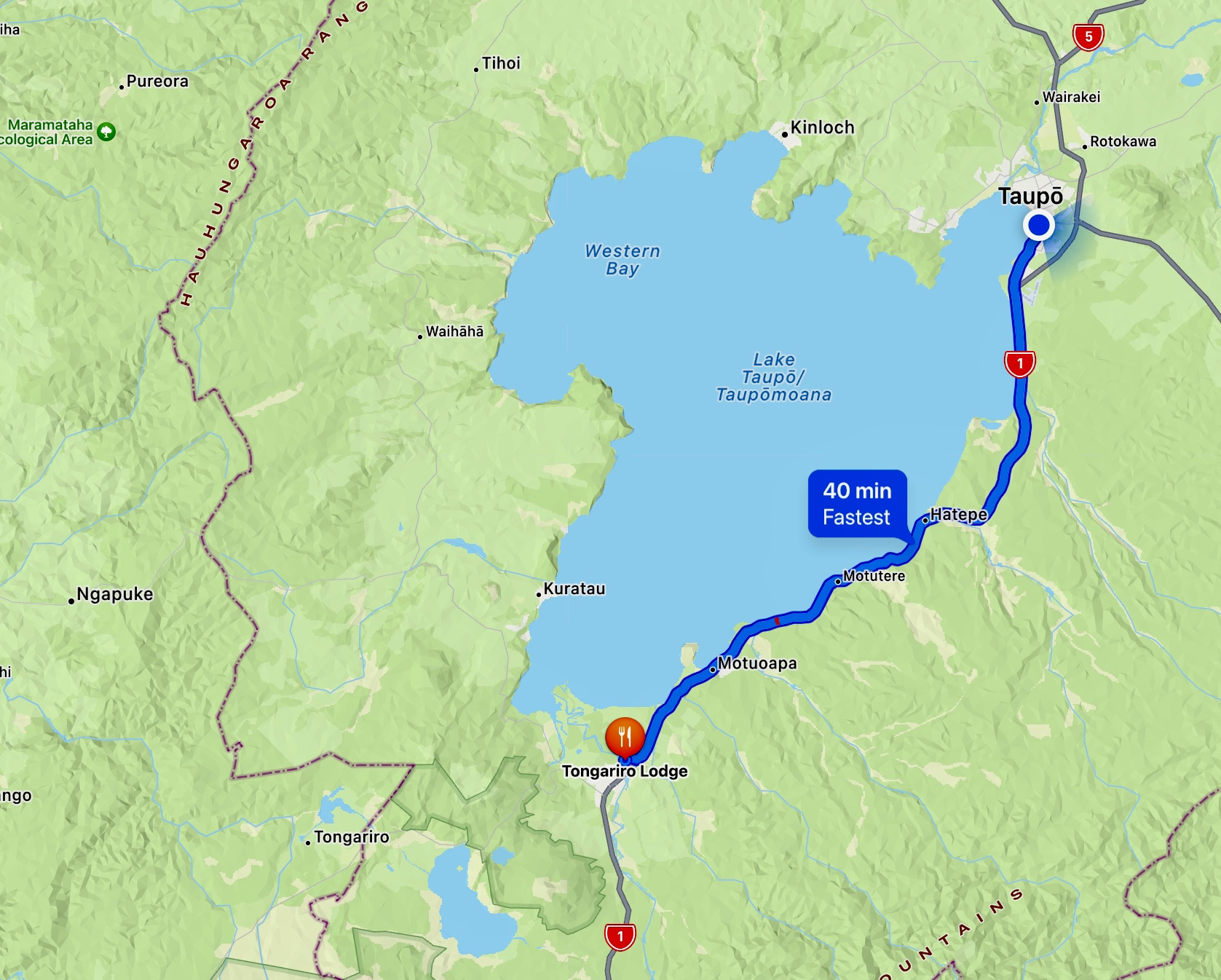
Getting There from Tongariro
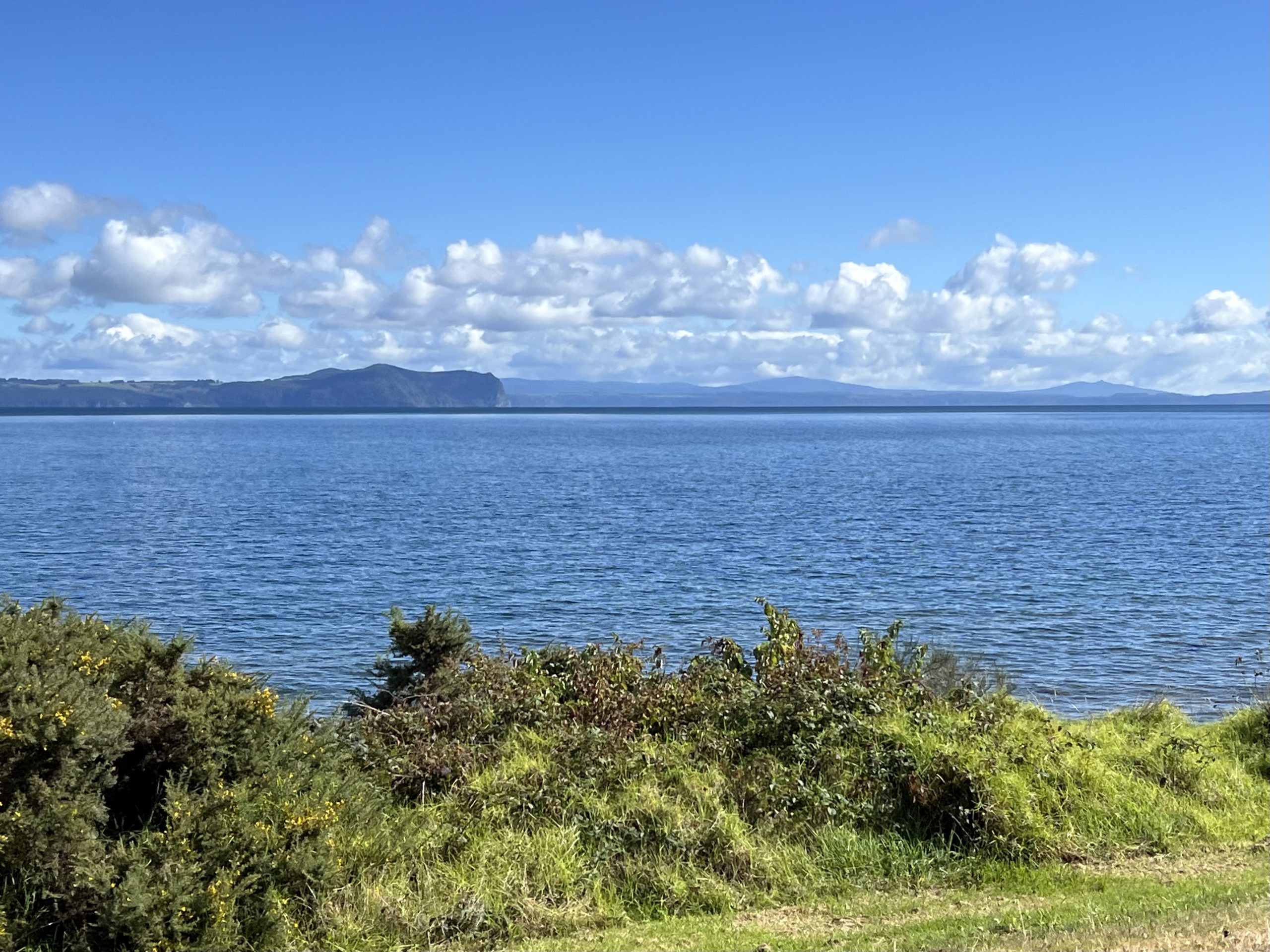
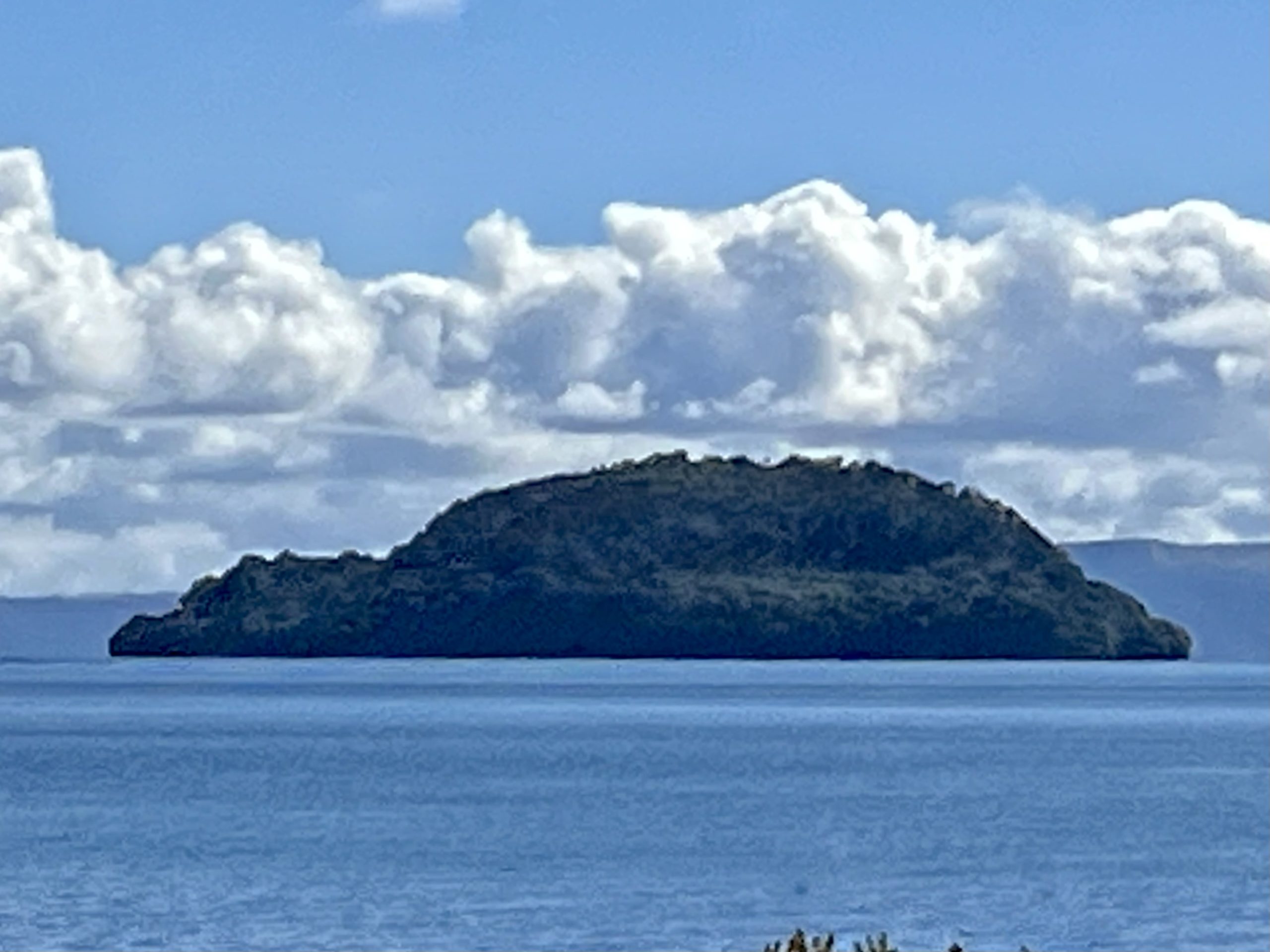
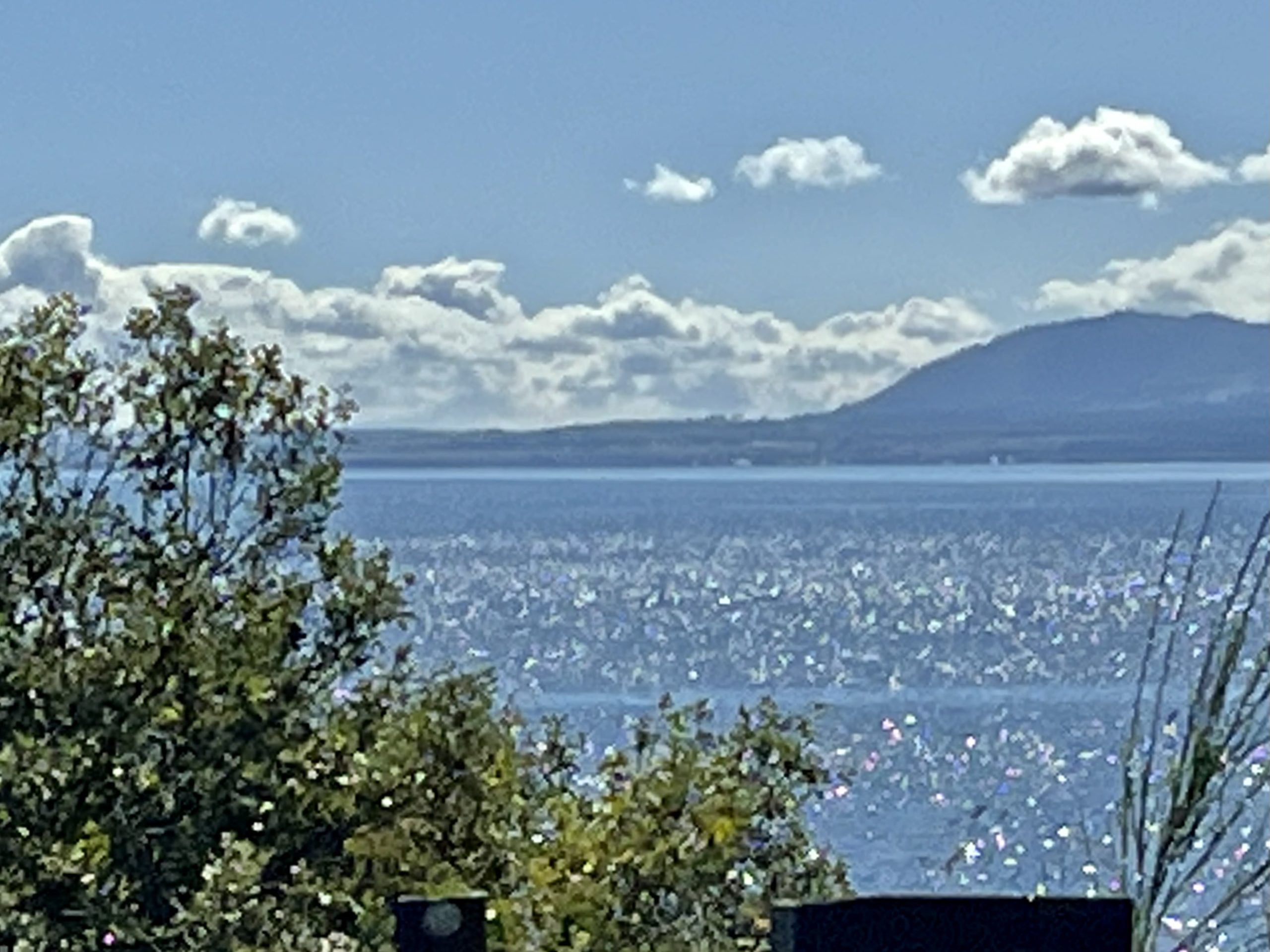
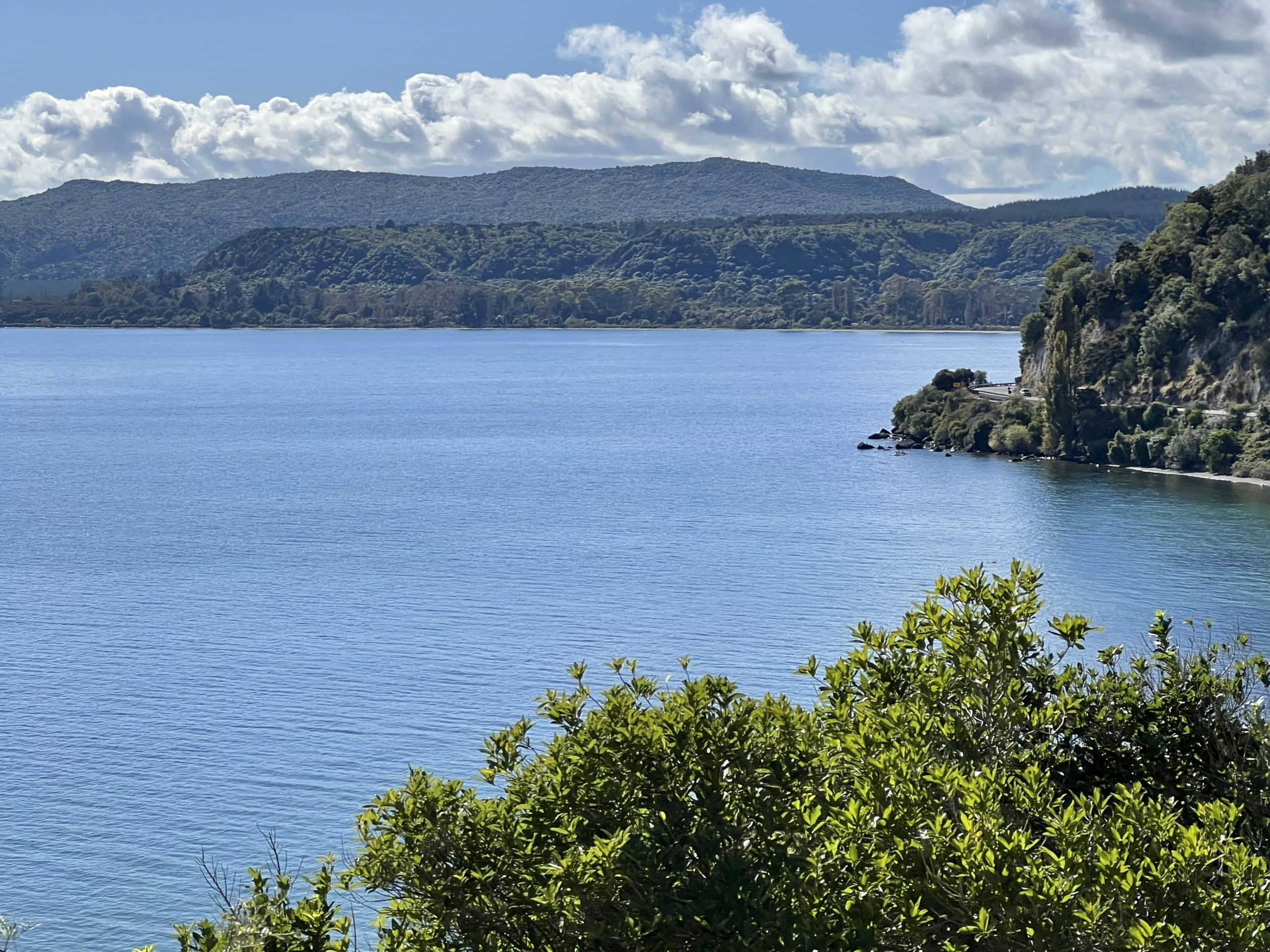
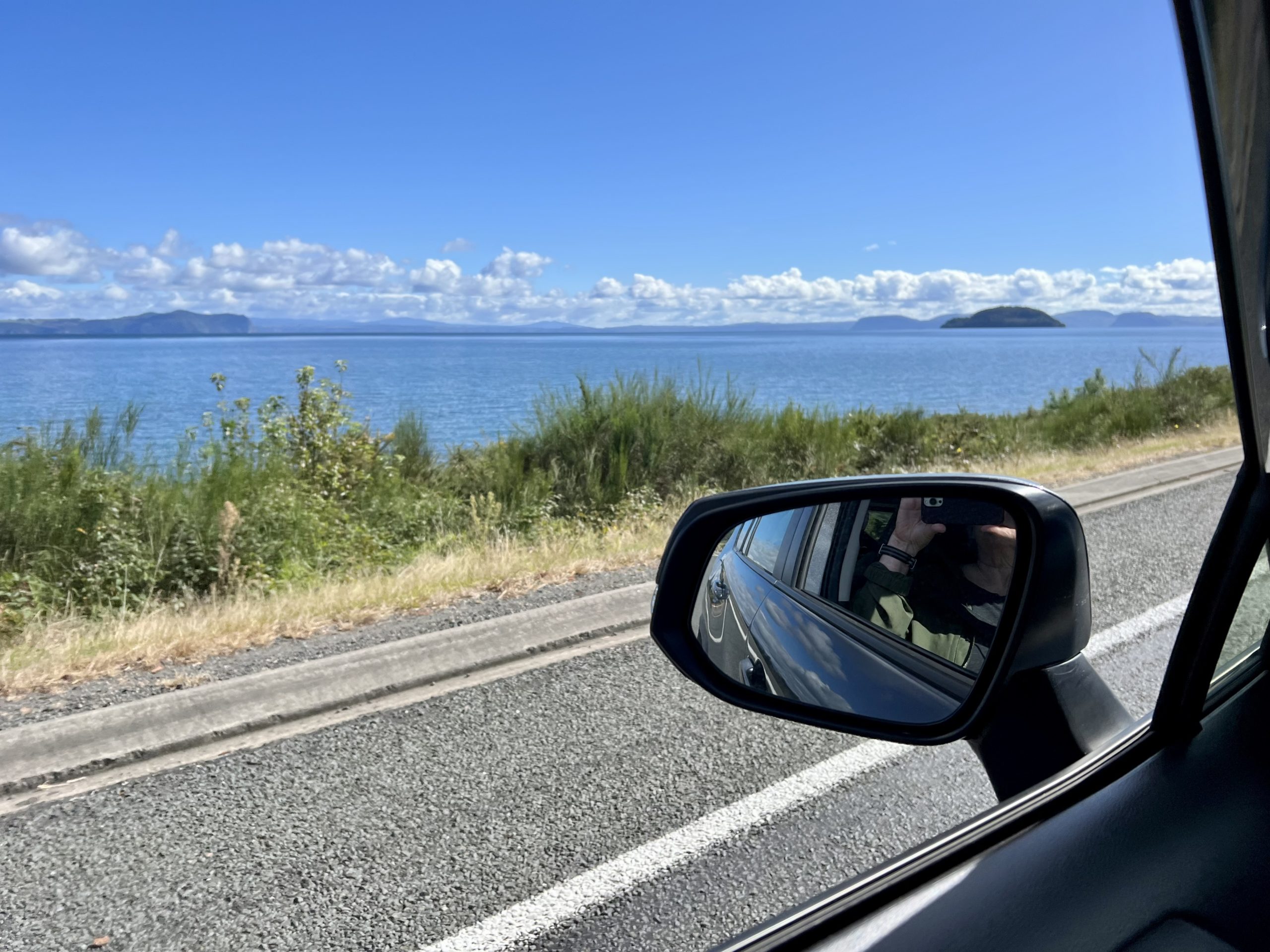
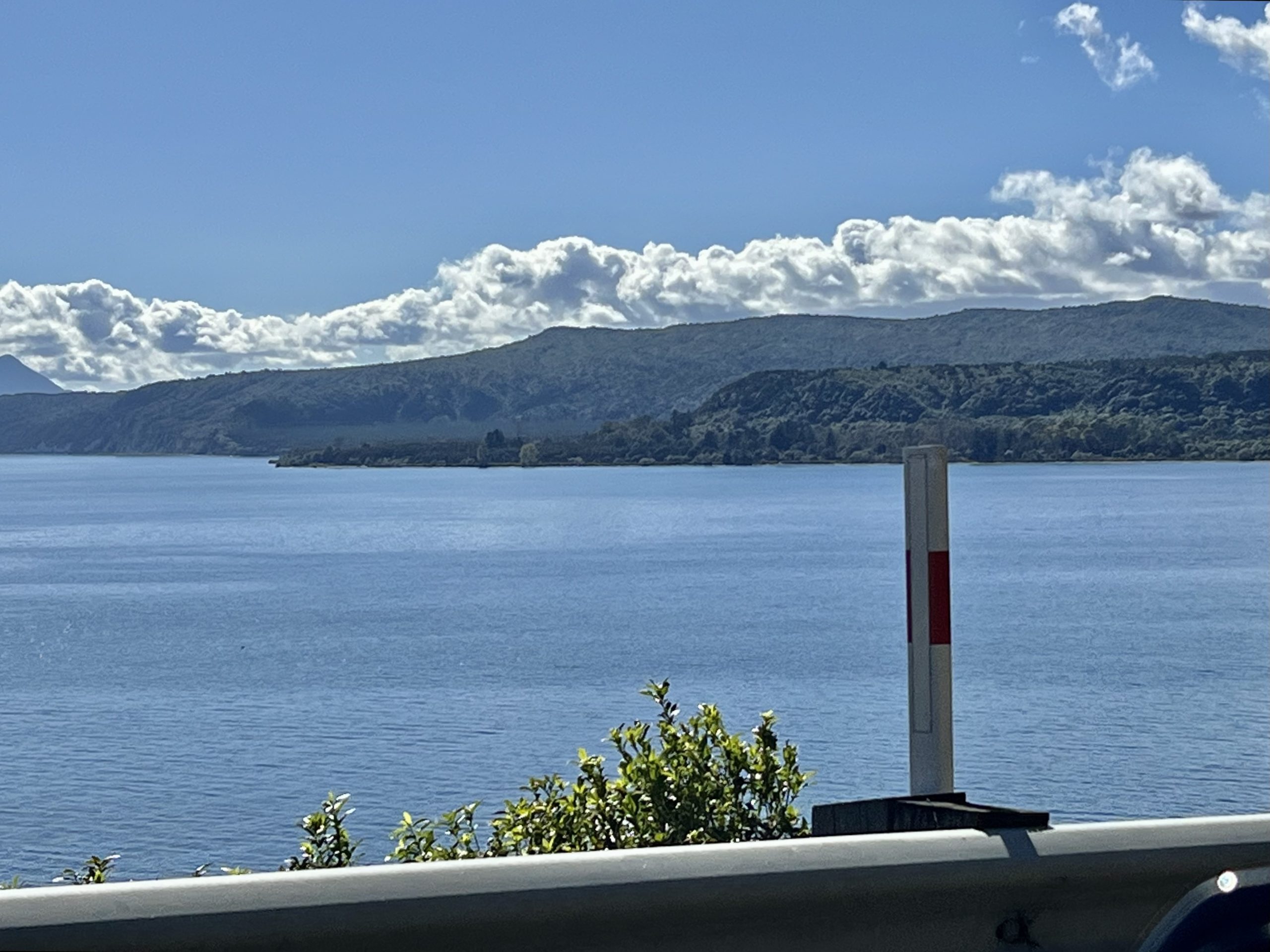
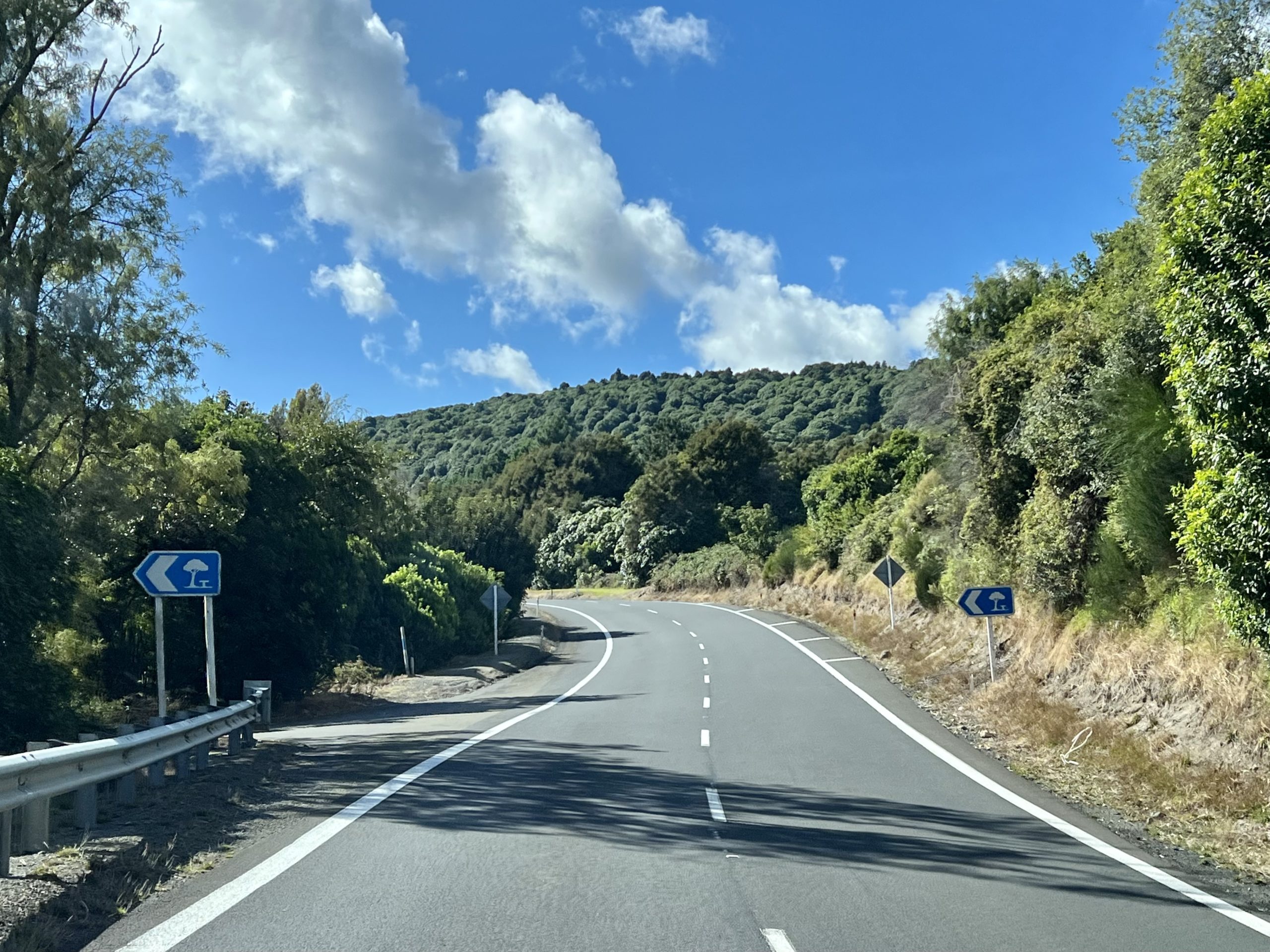
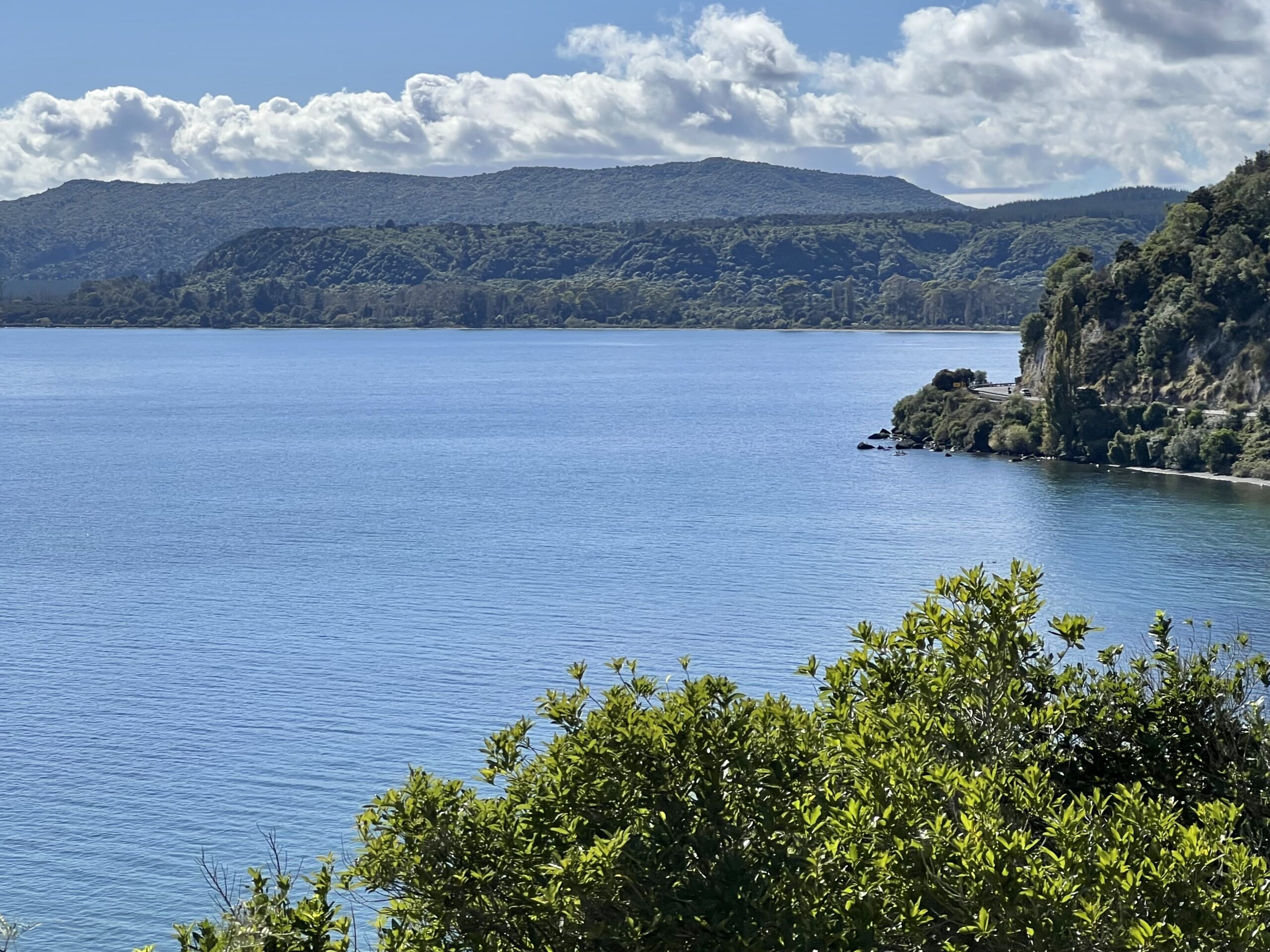
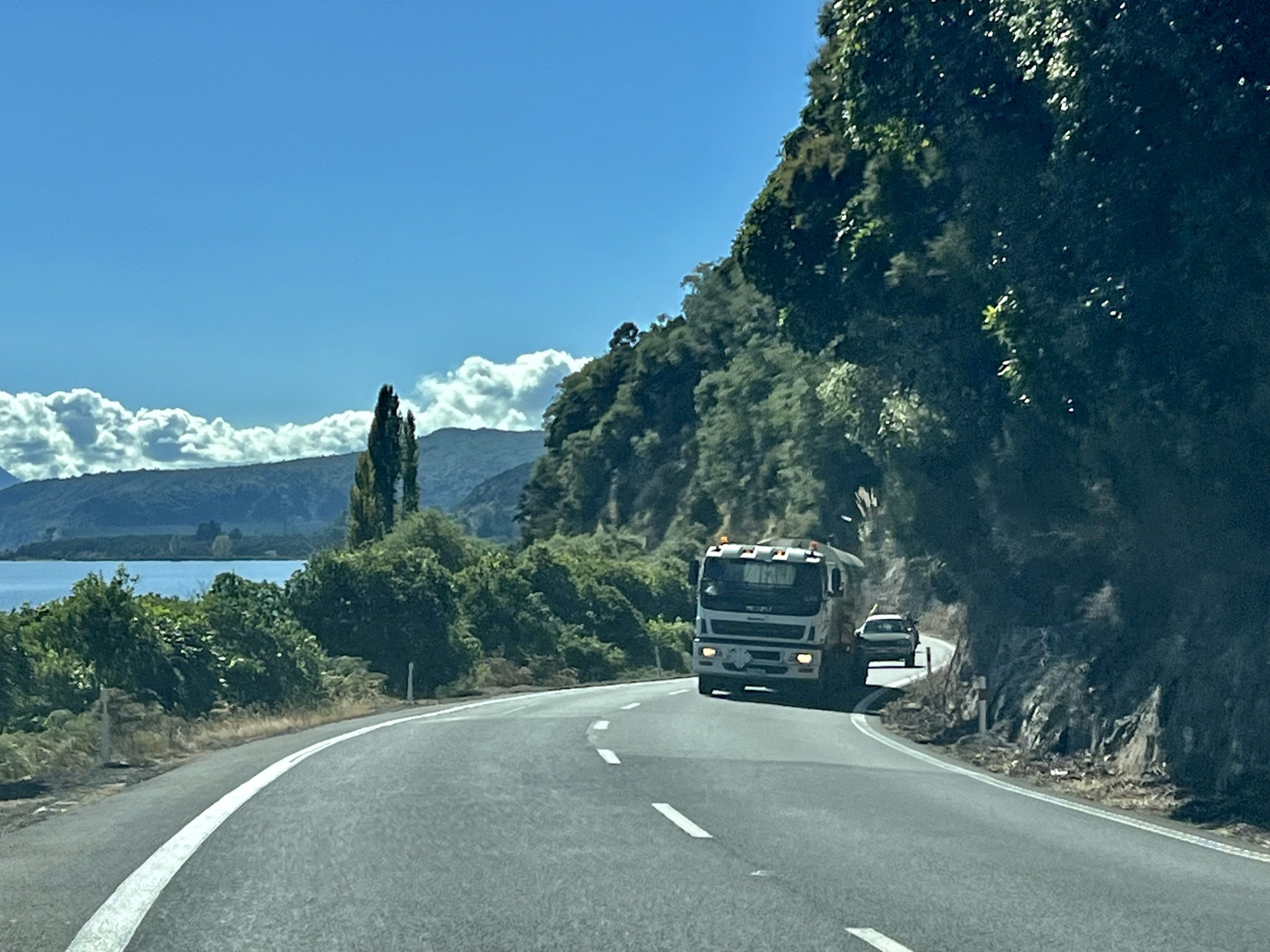
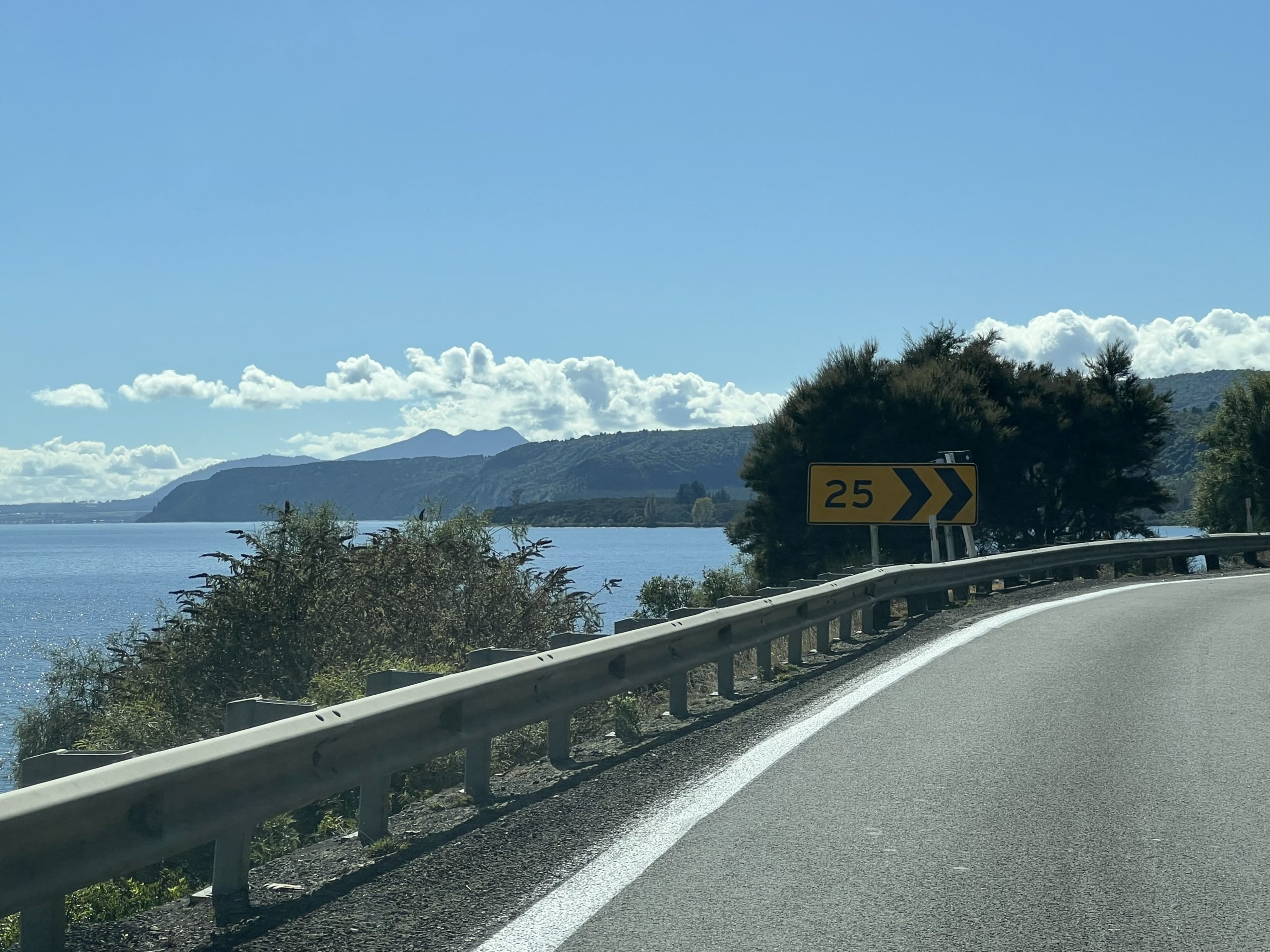

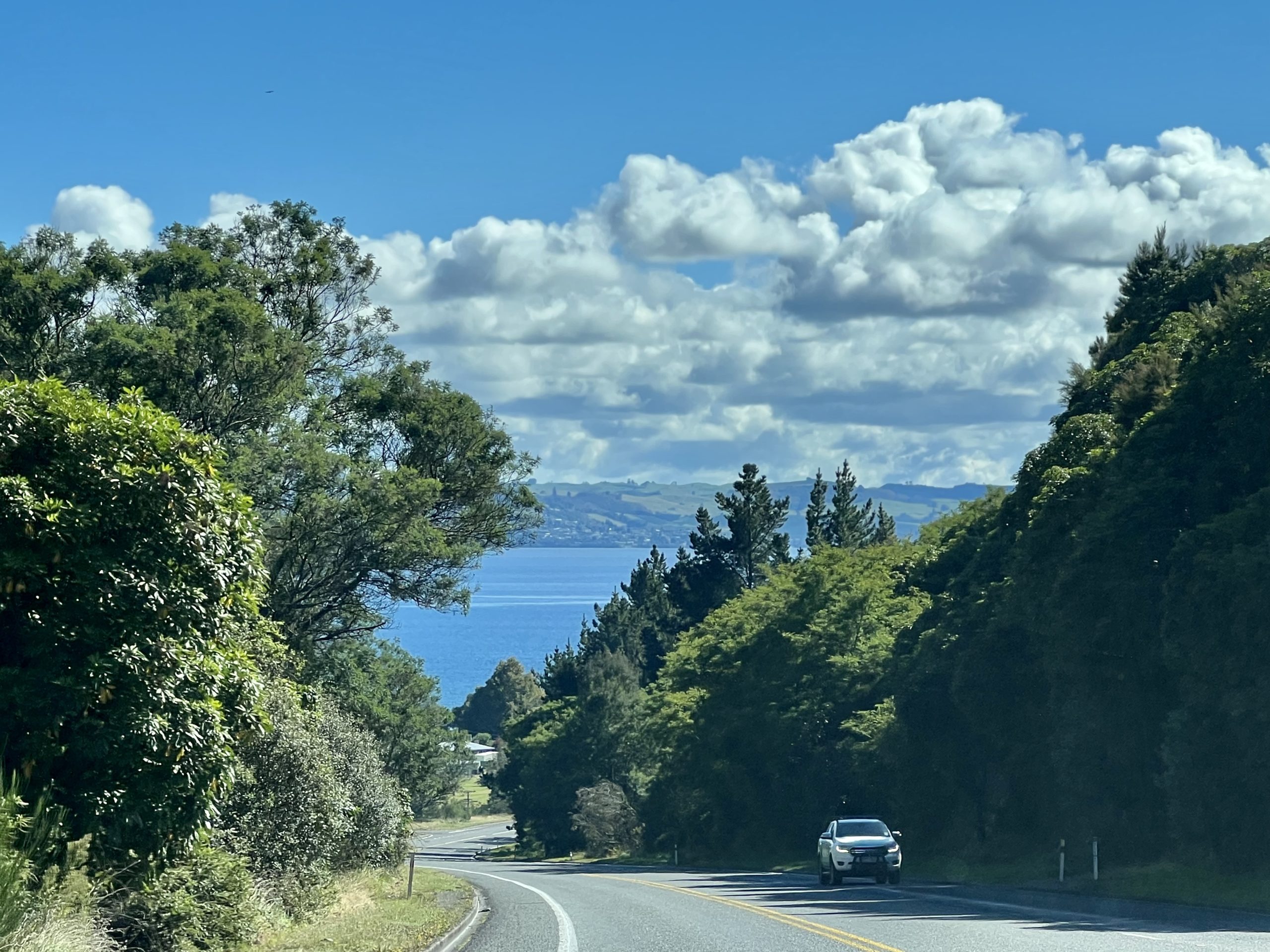
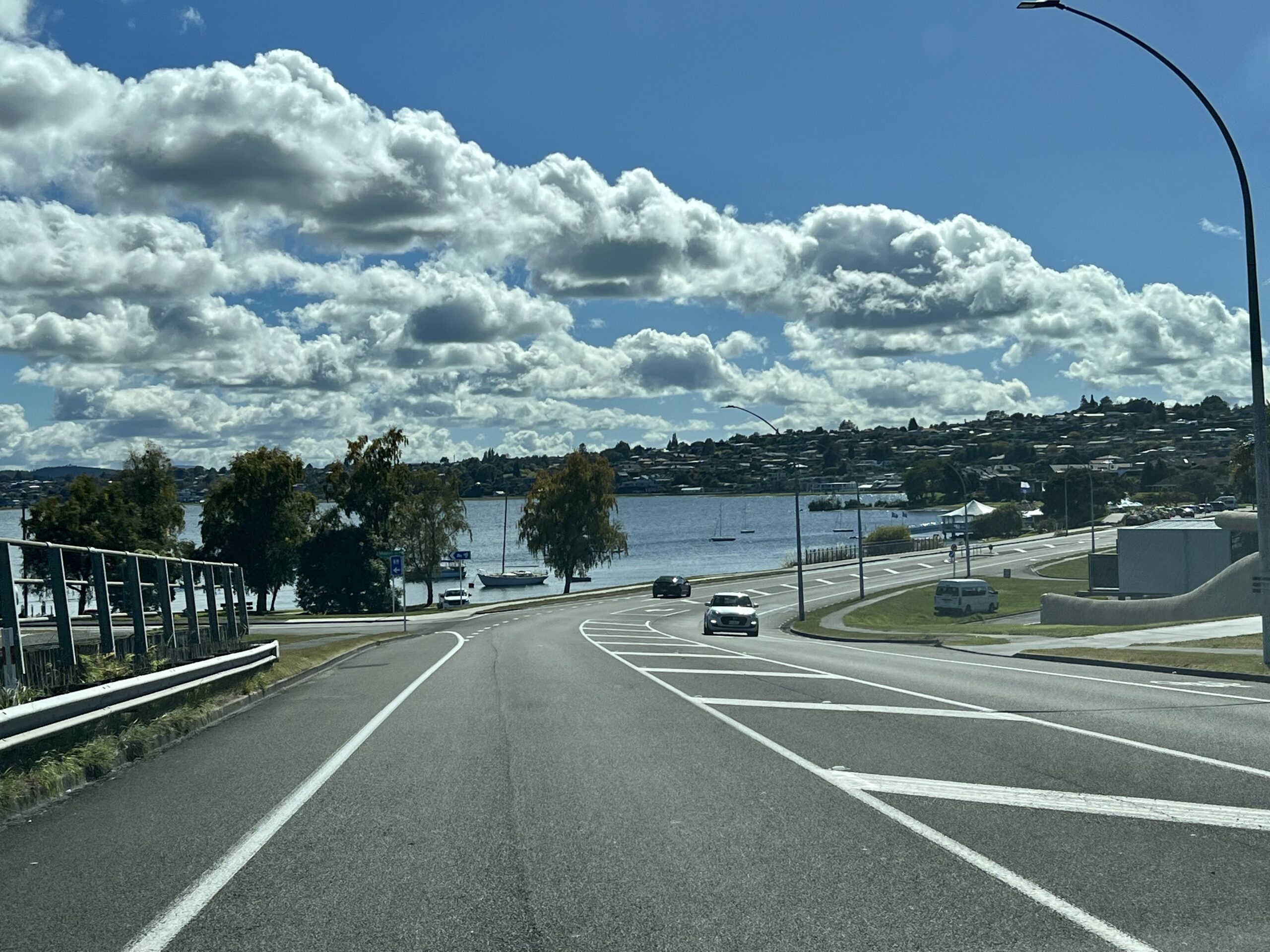
Accommodations
Three Days of the Condor? No. Eight days of the Phoenix. Our fishing guide was amazed that we were staying at the Phoenix Resort (motel) for so long. He kept joking about it, with Robert’s encouragement, while they fished. The Phoenix, about a mile and a half from the Taupo town center, is a Victorian complex around a rose garden that must have been a great place to stay in the early 1900s. As the Kiwis say, a little long in the tooth now. Most units have beds up a stairway to a loft with bathroom downstairs. We old people rejected that layout. Bonnie reminded Robert that we told our trip organizer not to spend a lot for accommodations. We may rethink that next time. The selling point of the Phoenix is that it sits on top of geothermal water, so each unit has a private pool, six feet in diameter, with a valve to fill the tub with 165 degree (F) water! We discovered that there is also a cold water tap to moderate the temperature. The motel manager is very helpful, suggesting several places to see during our eight-day stay.
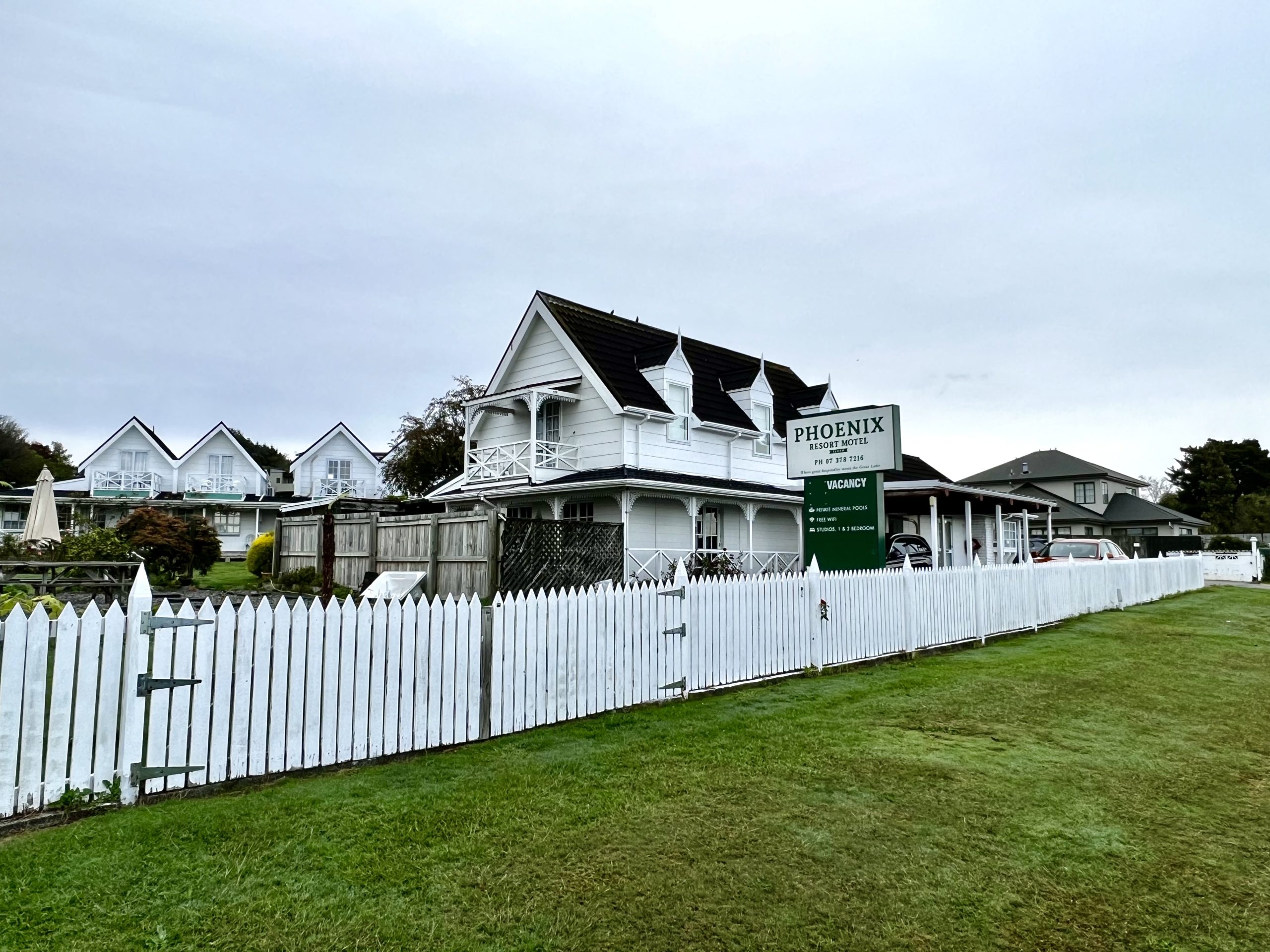
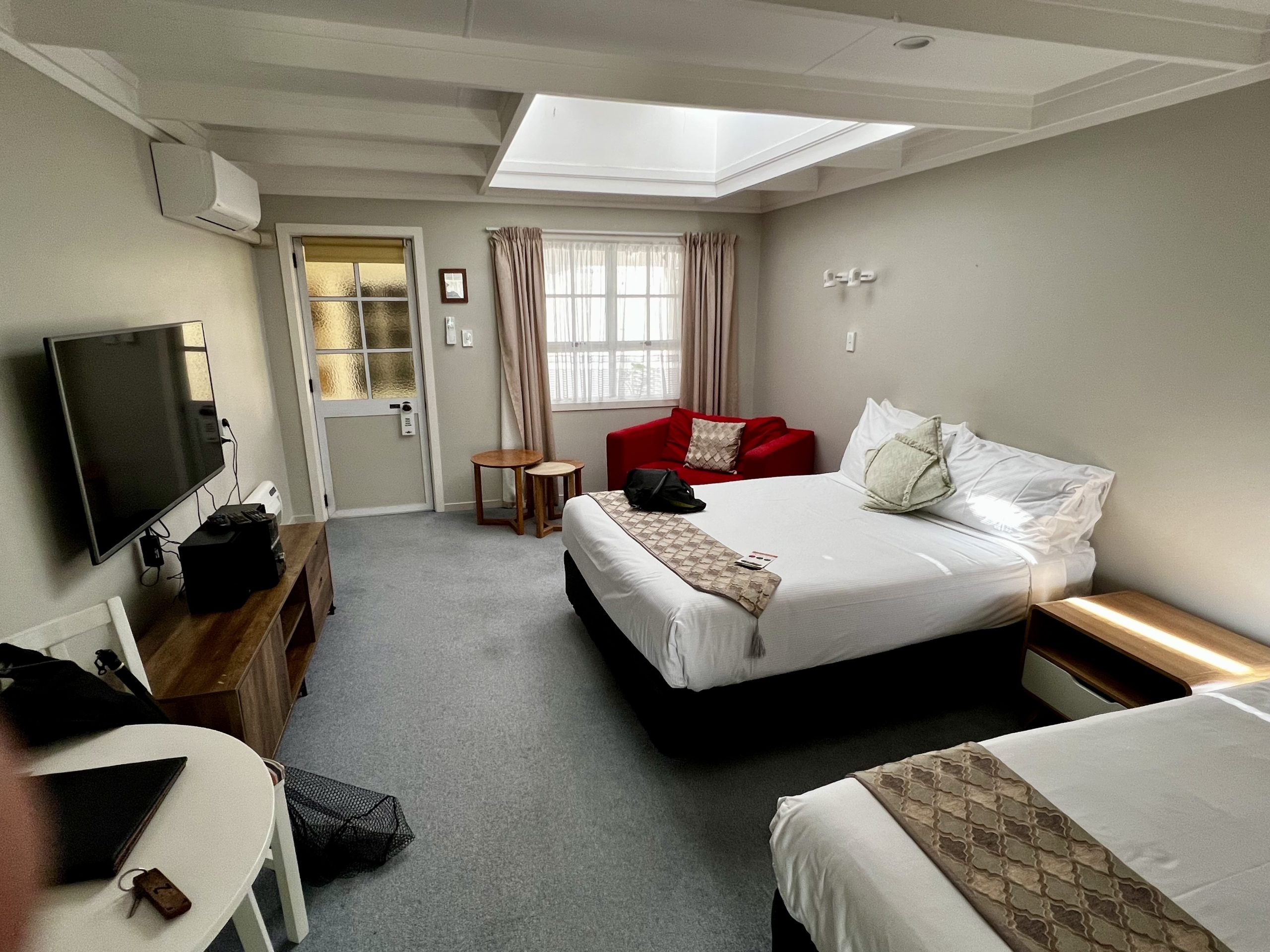
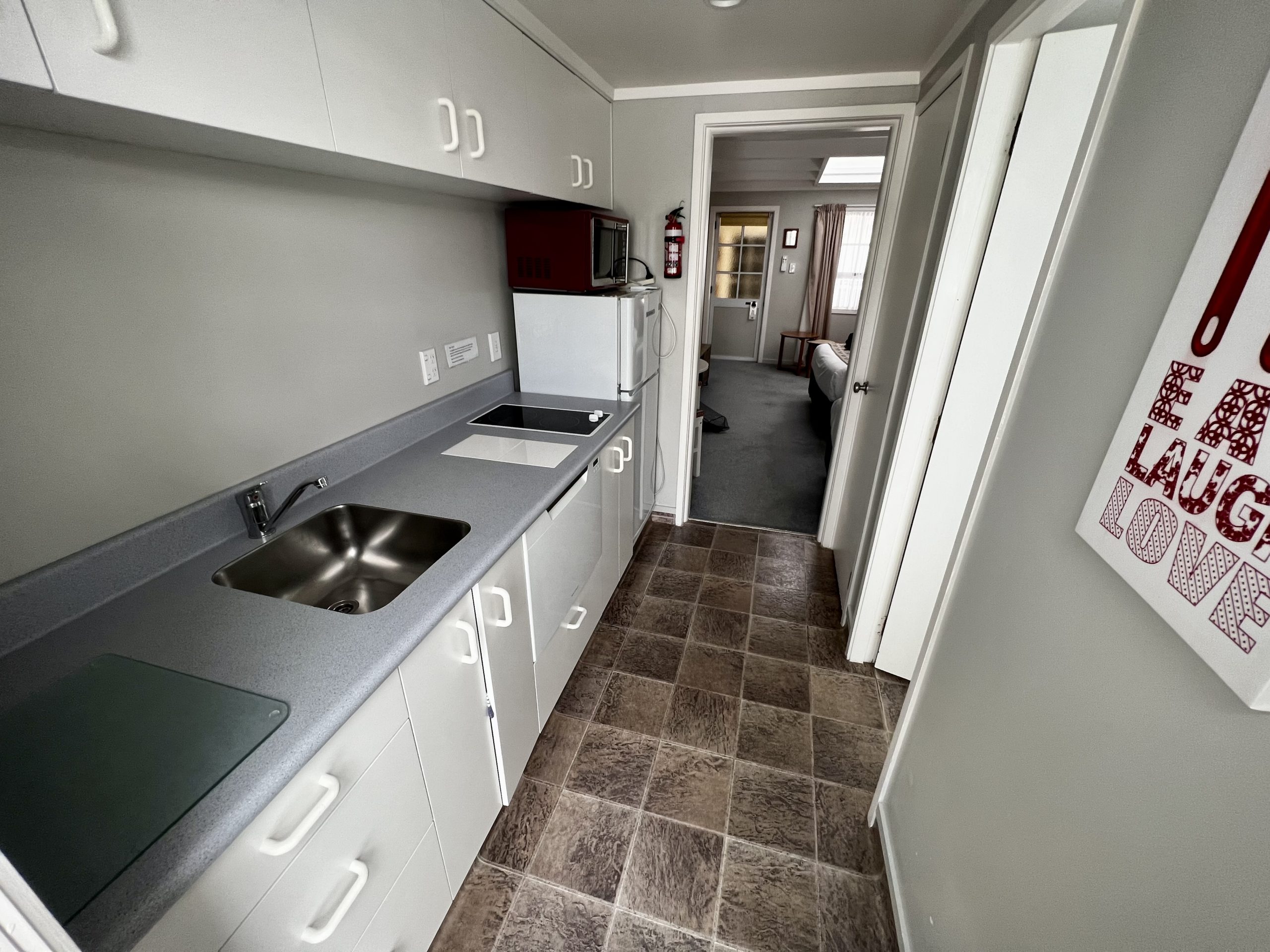
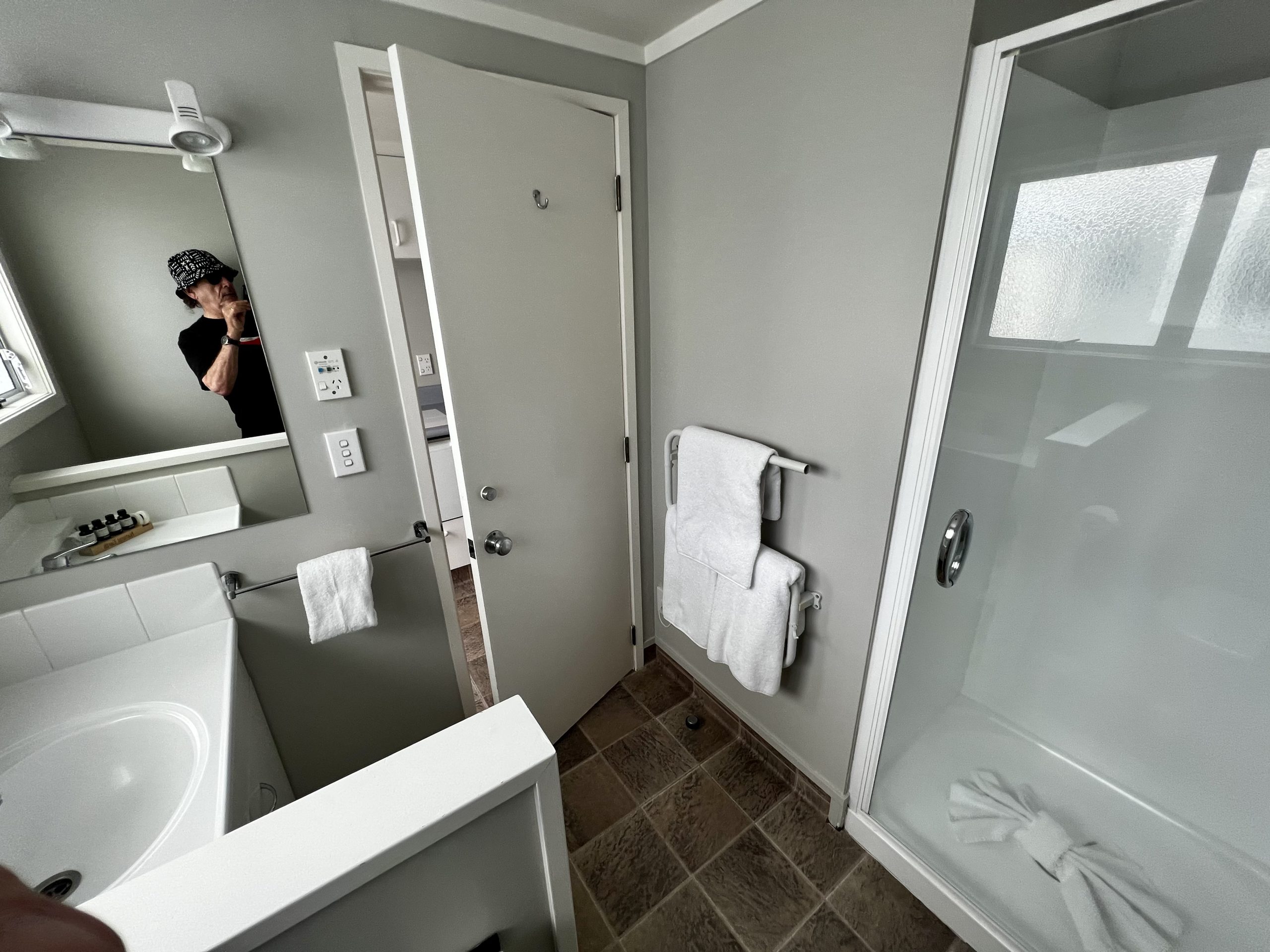
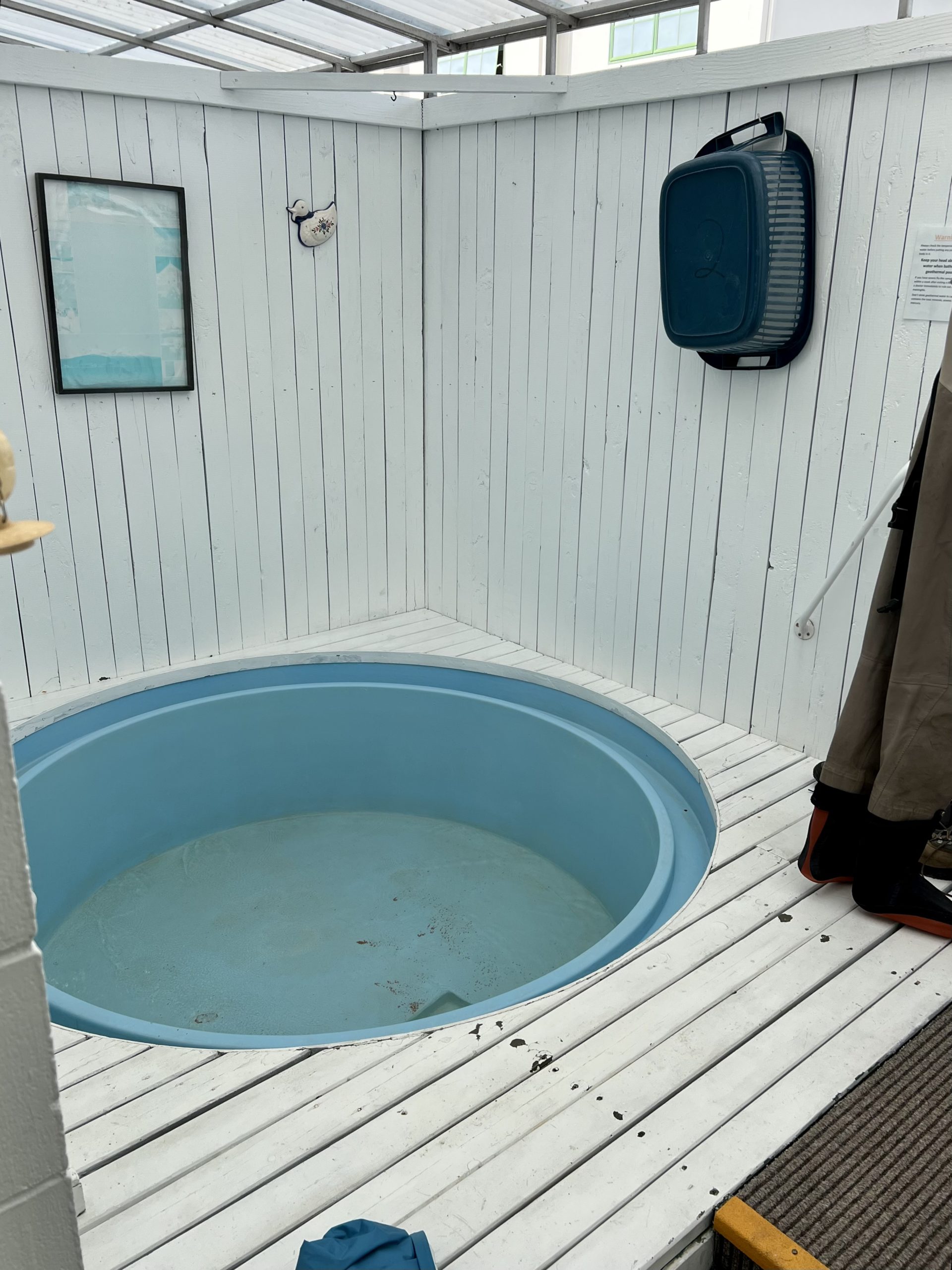
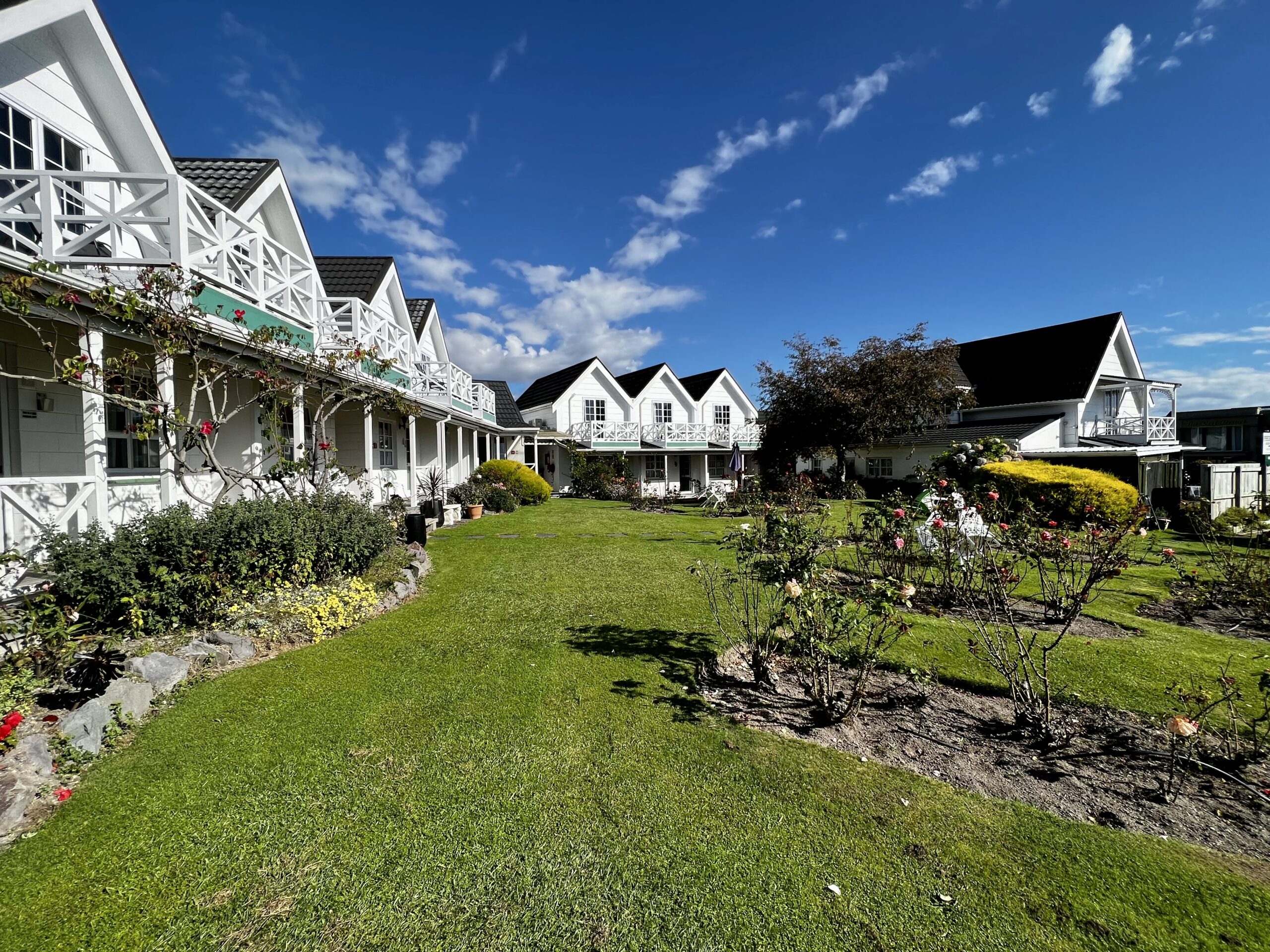
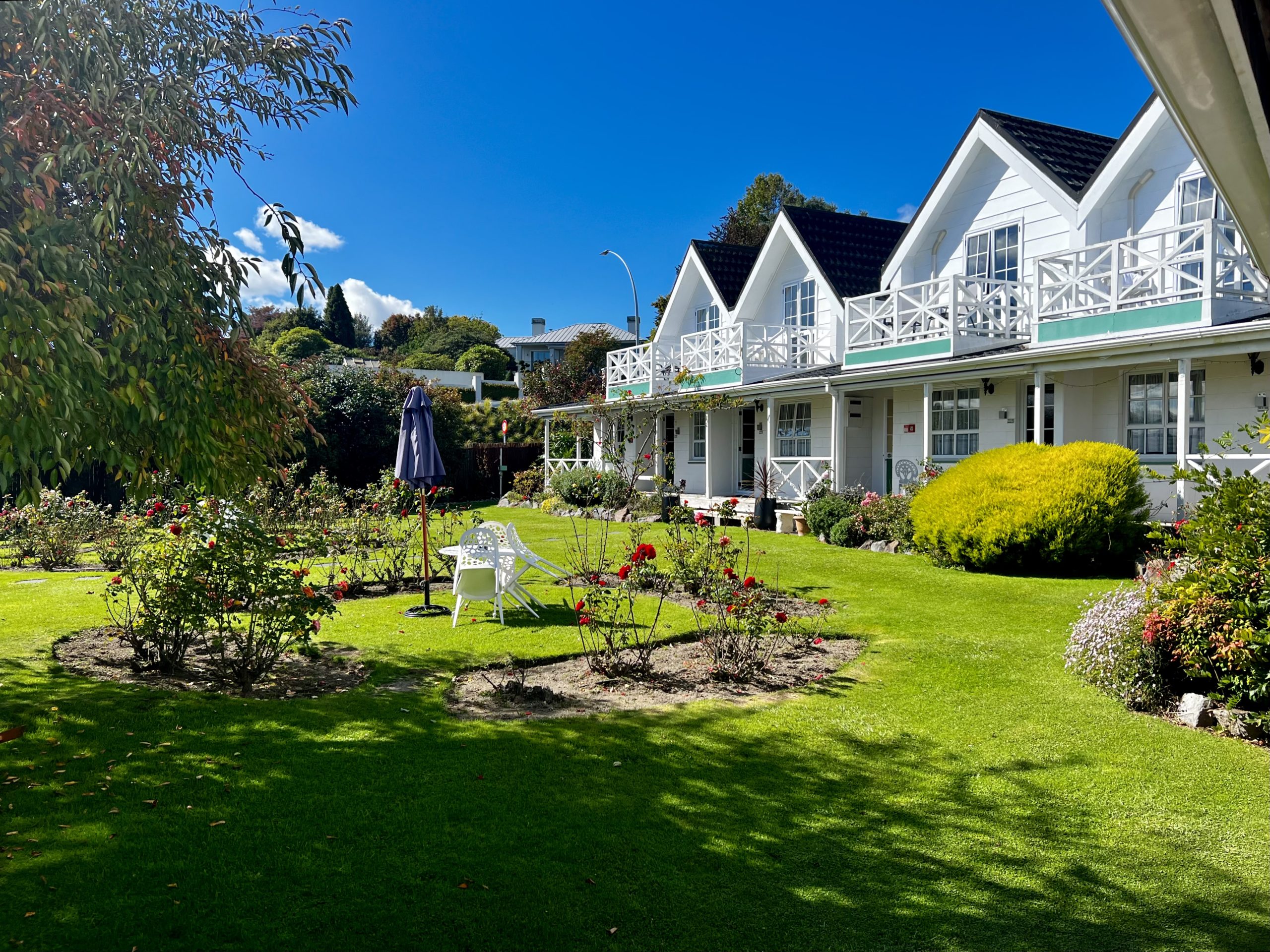
Strolling and Sightseeing around Taupo
Taupo, on the north shore of Lake Taupo, is the most popular tourist destination on the North Island. It offers all kinds of outdoor activities including skydiving and paragliding. Like other small tourists towns, it has a surprisingly large retail district. And although we are well into the fall season with less tourists around, finding restaurants for dinner is a challenge; most are fully booked a few days in advance. Most tourists use the kitchen in their van or motel unit. Bonnie made it her mission to research and reserve tables.
Even with three days of fishing, eight days in Taupo was too much for us.
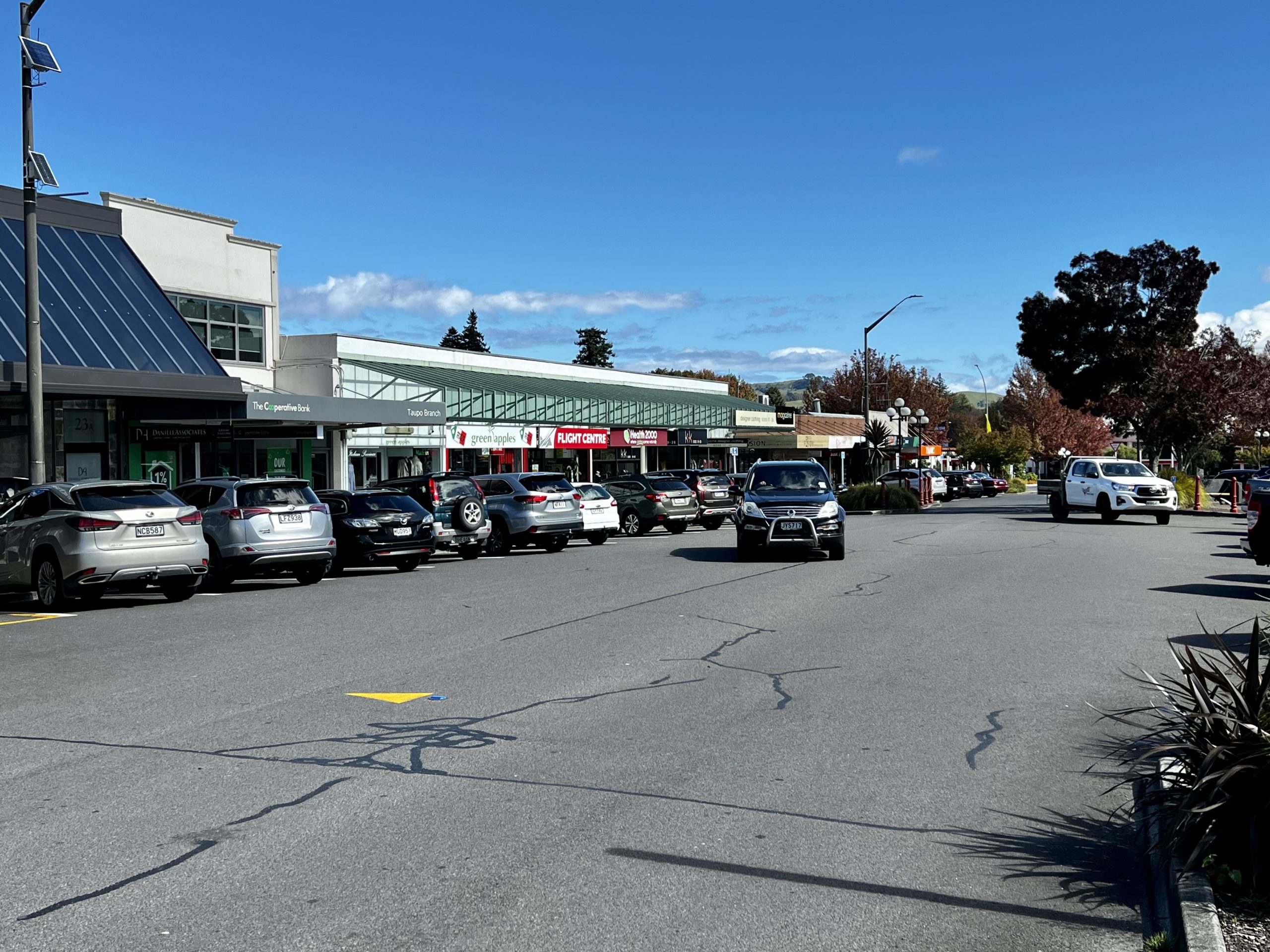
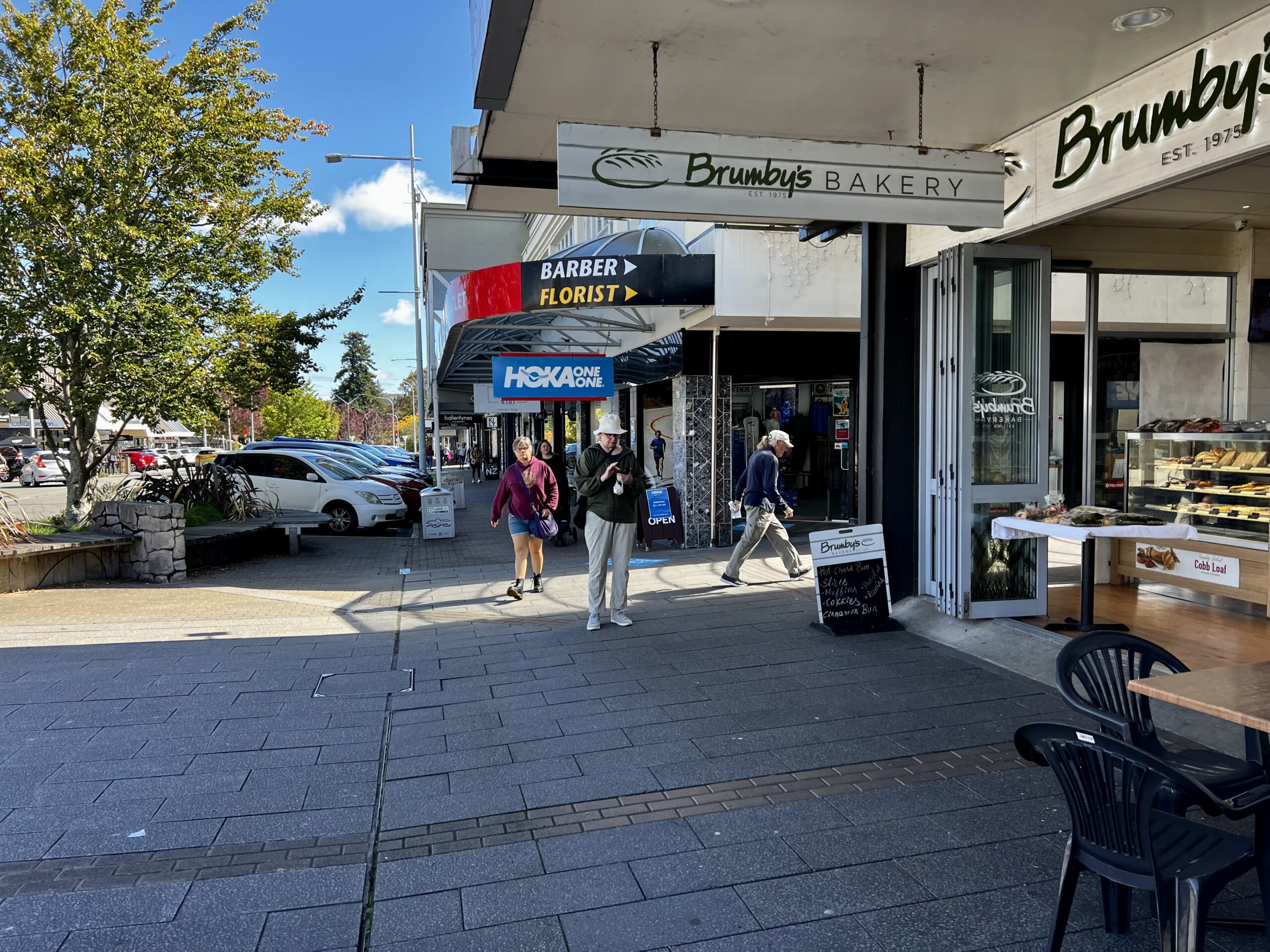
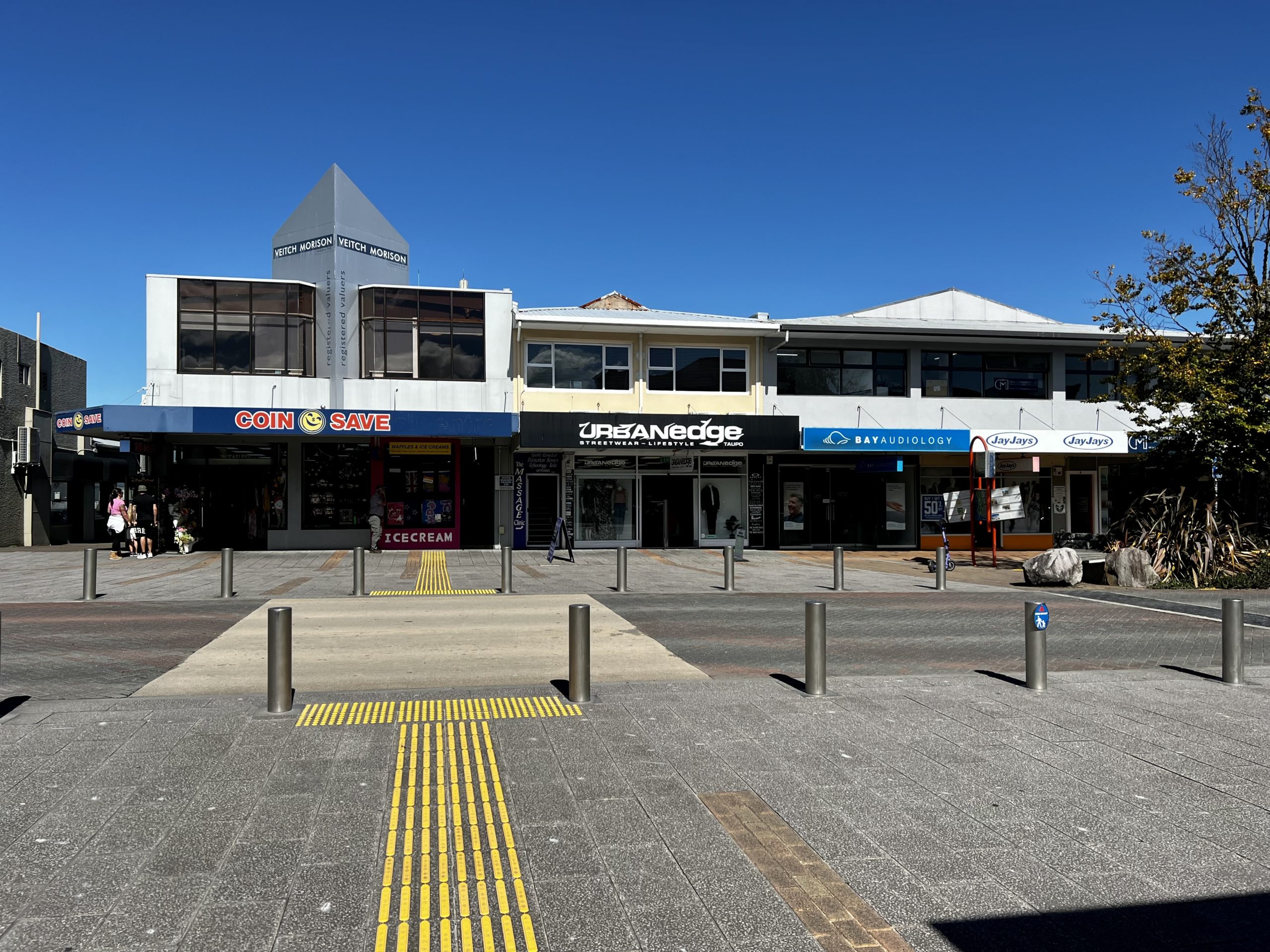
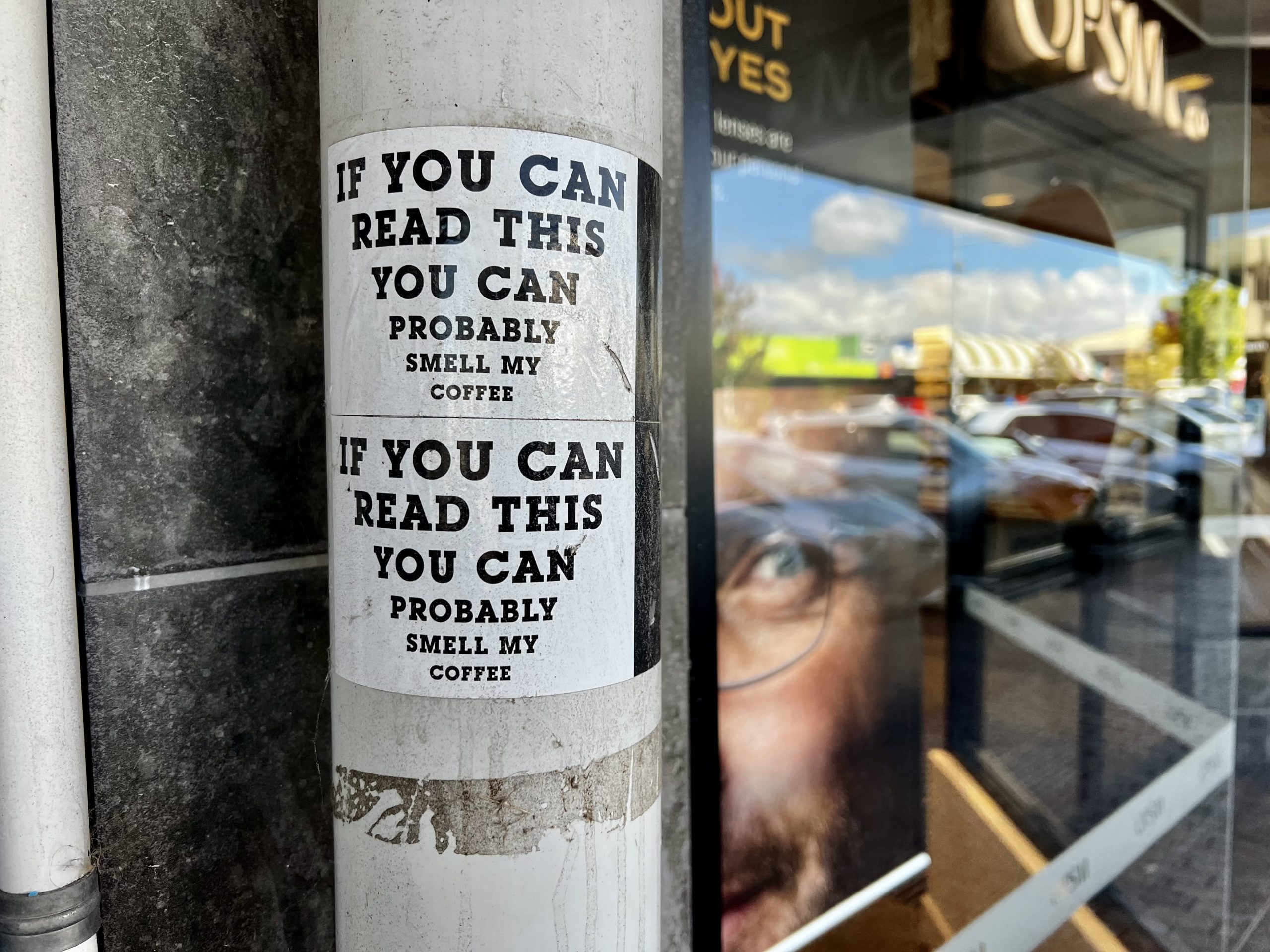
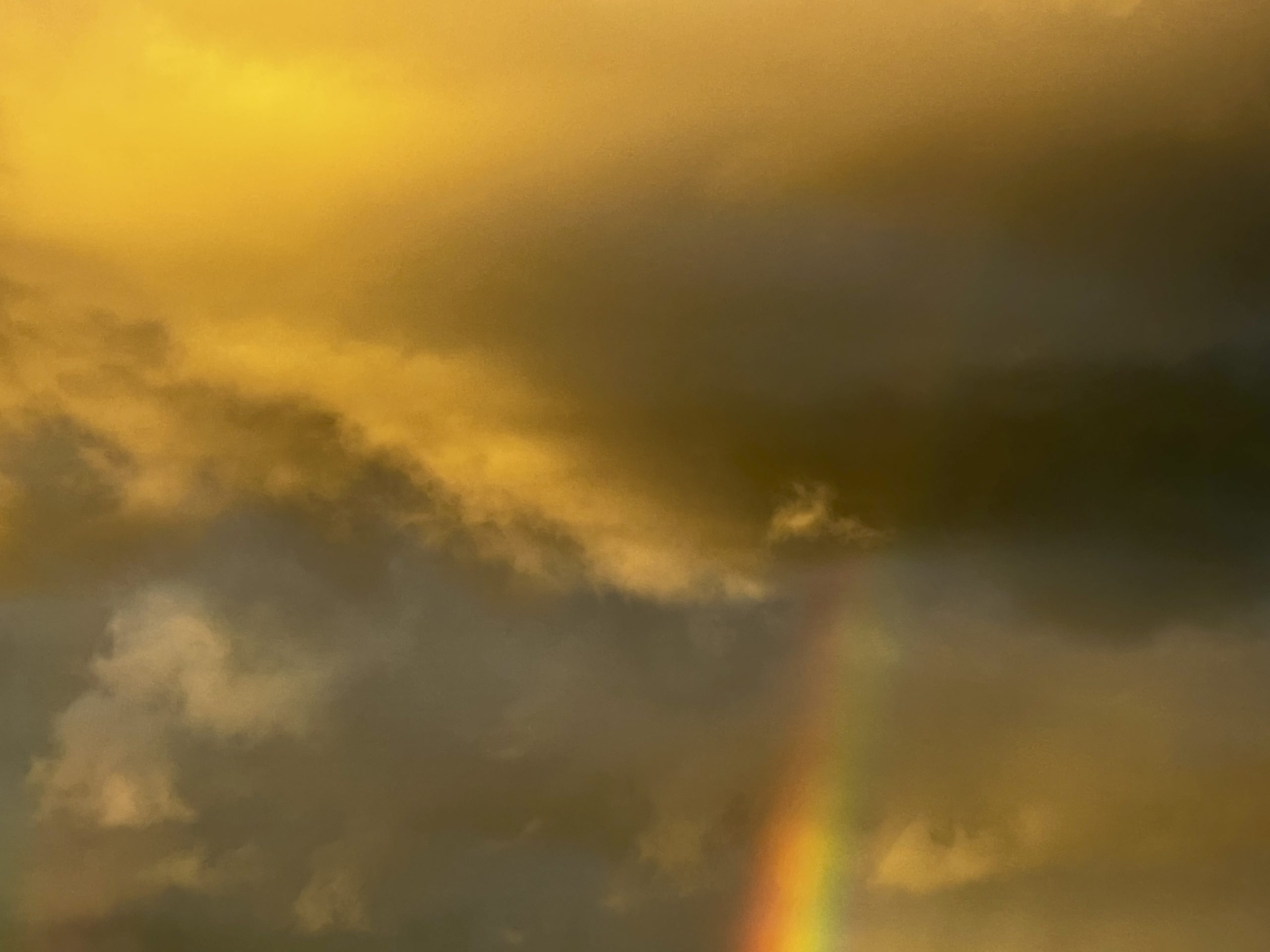
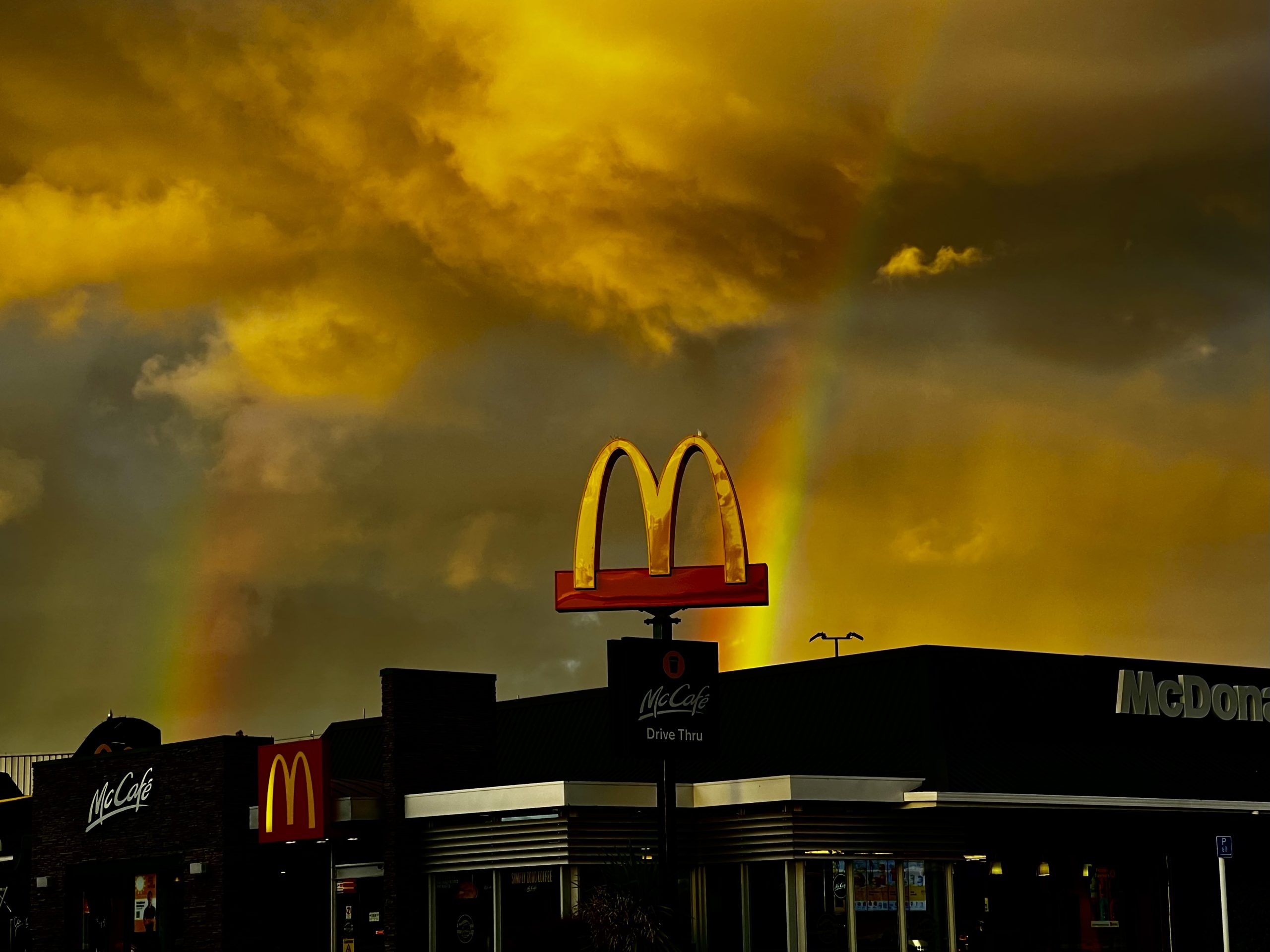
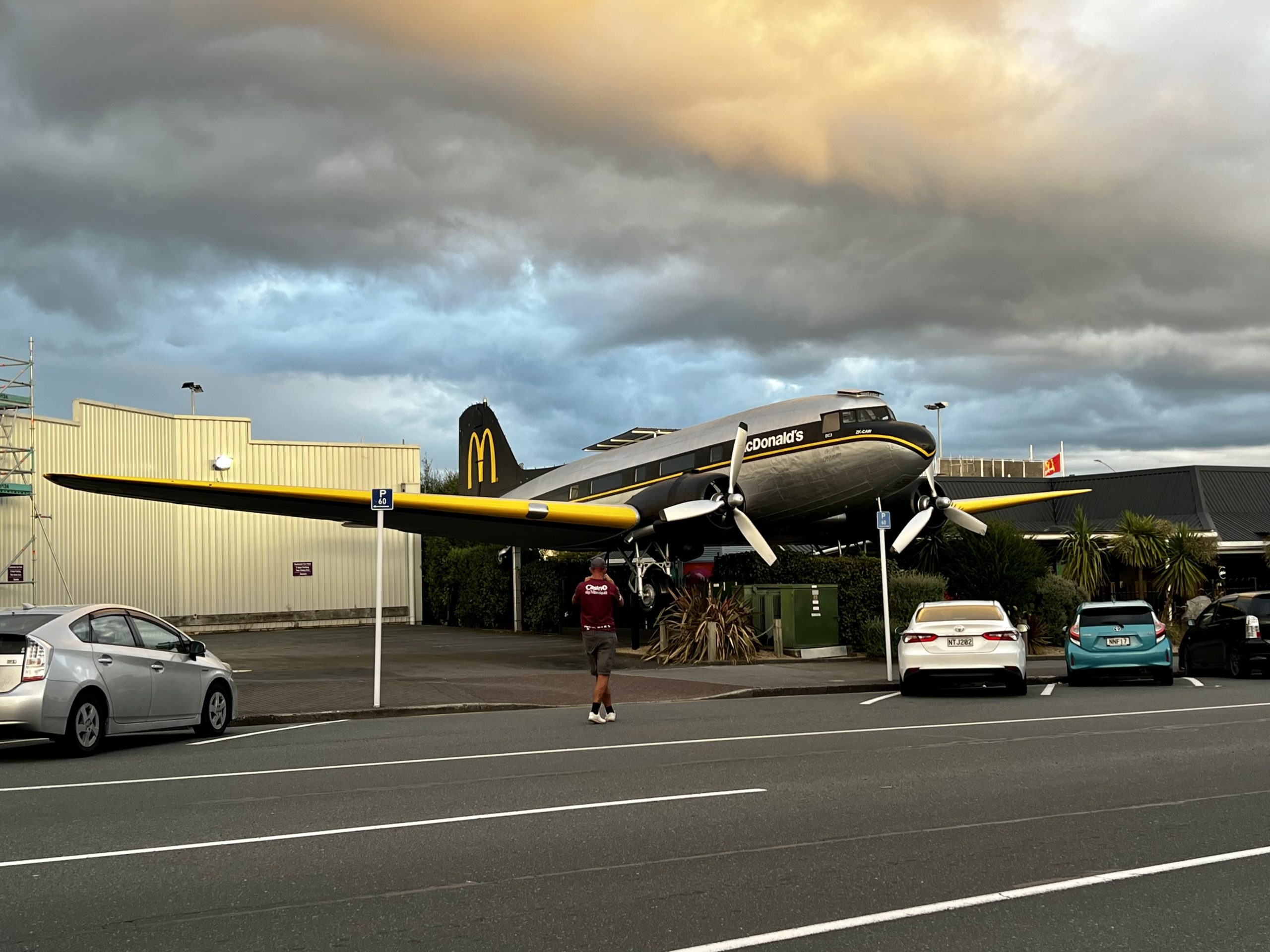
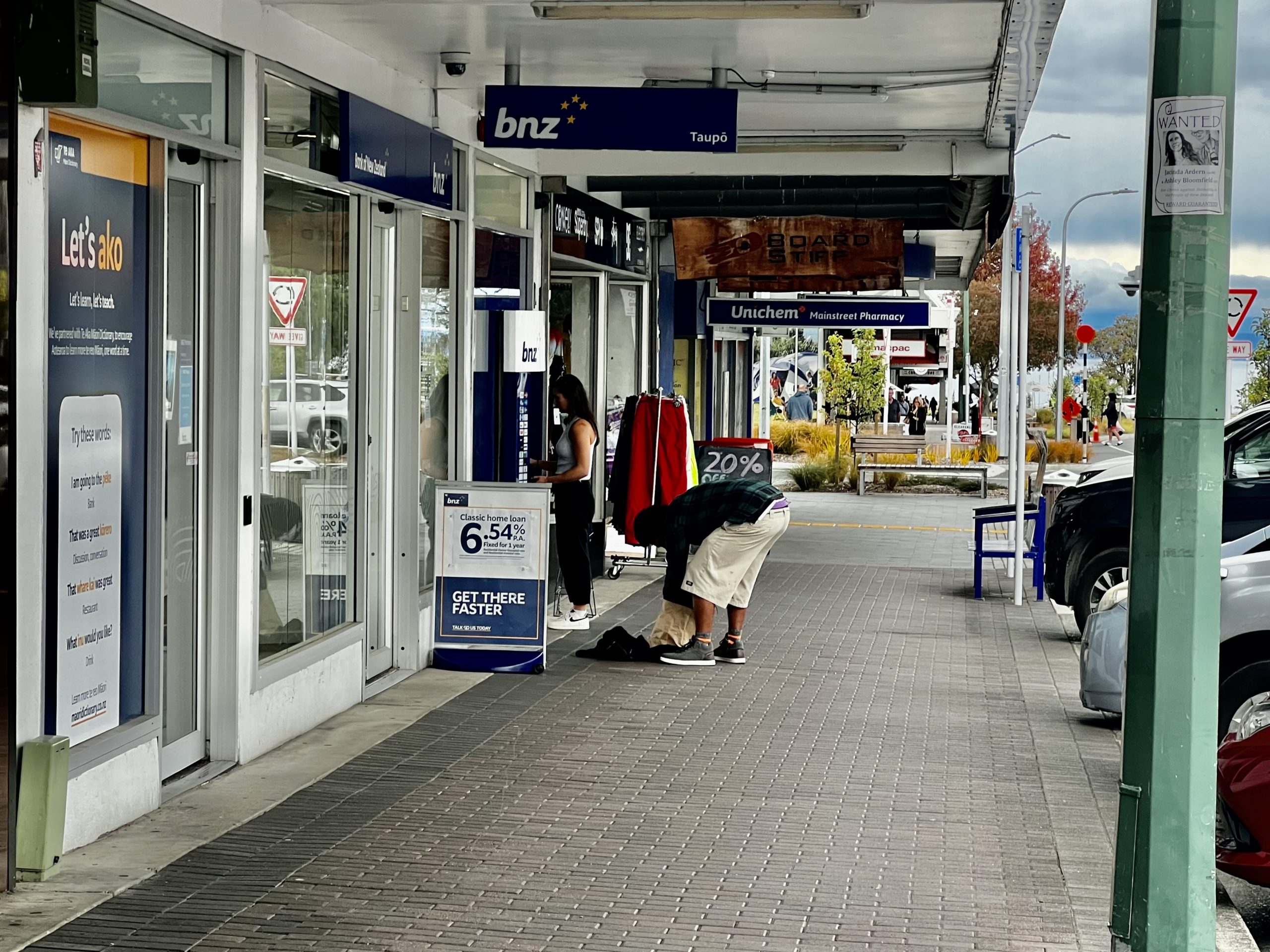
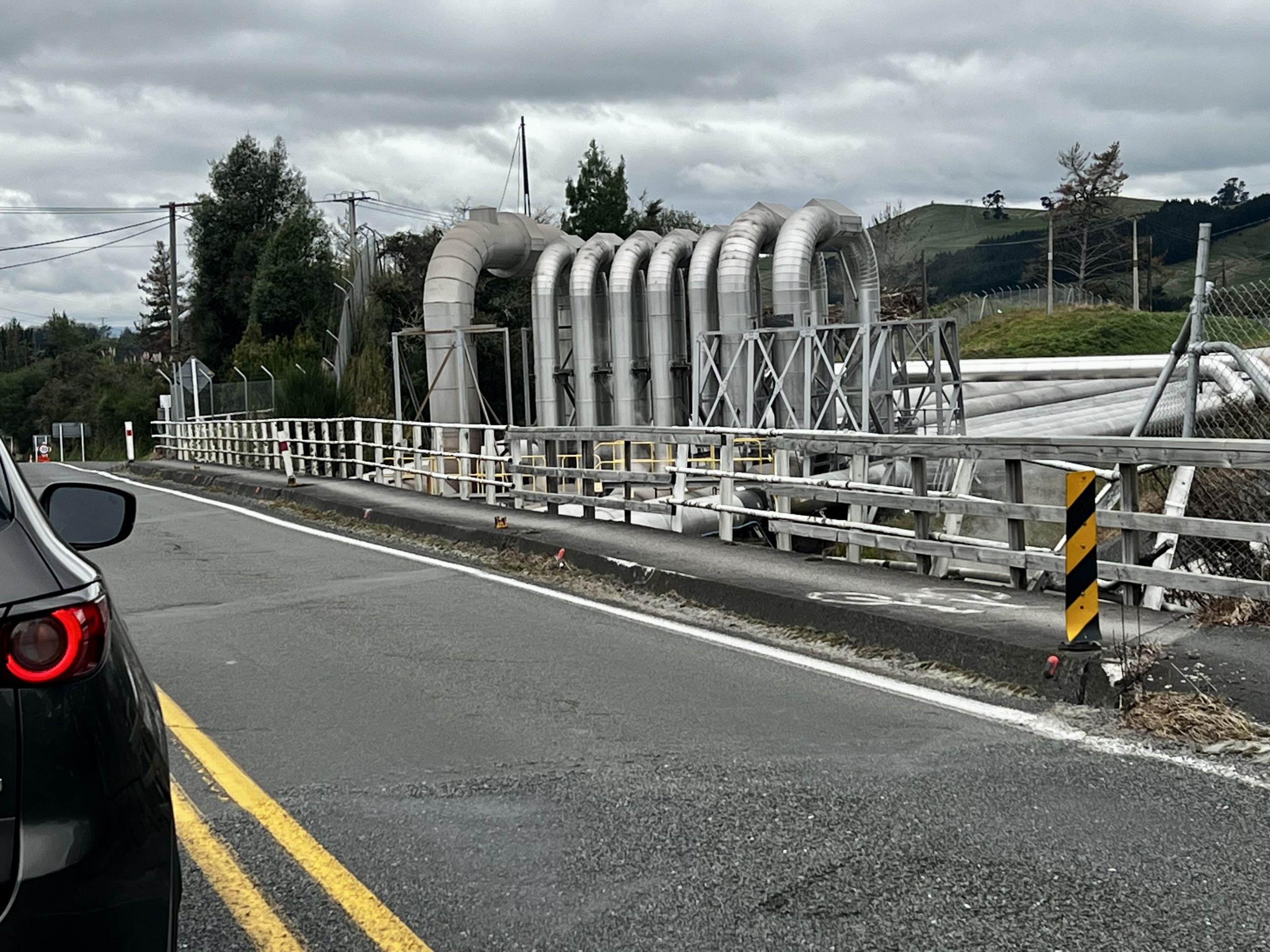
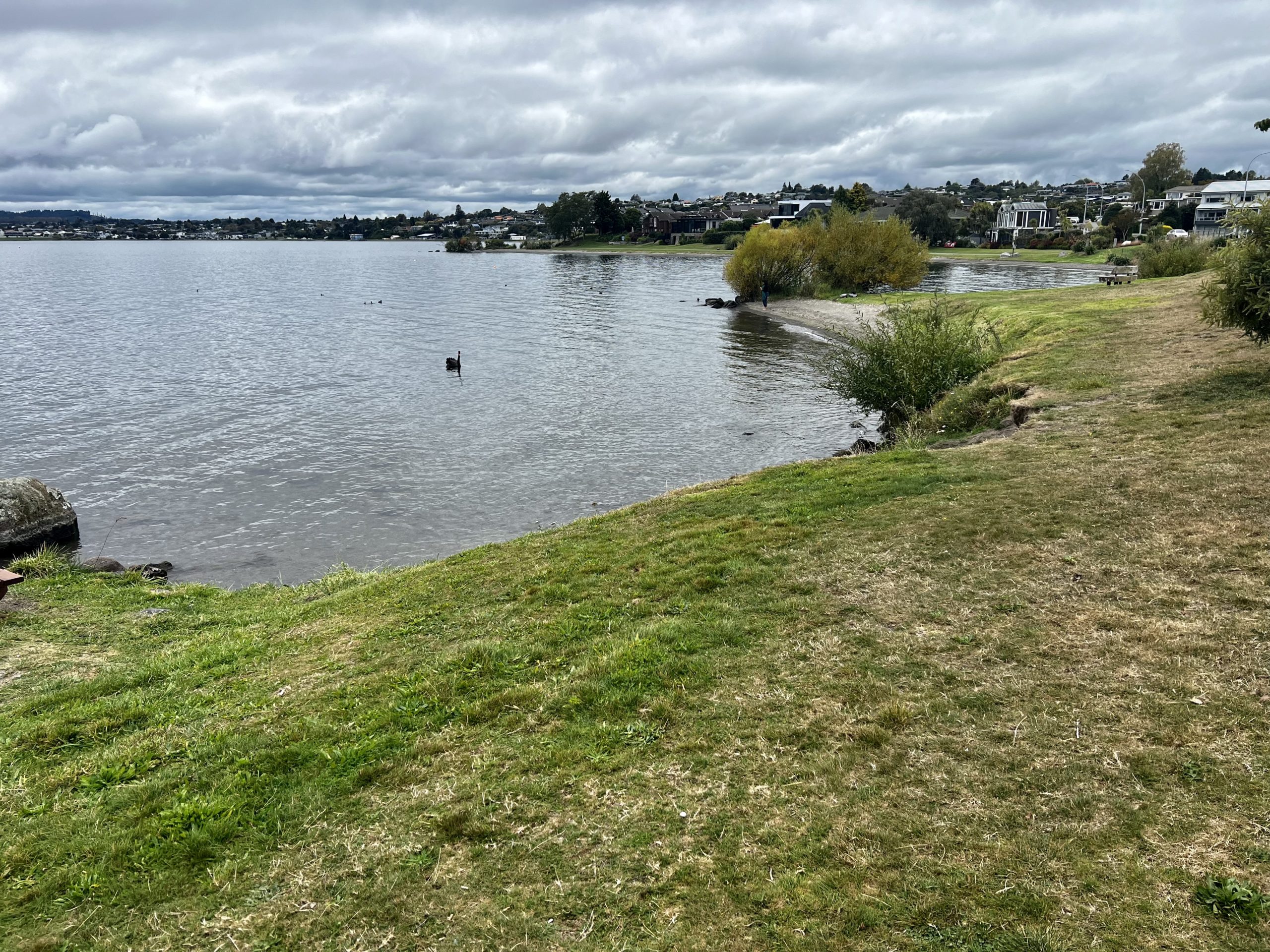
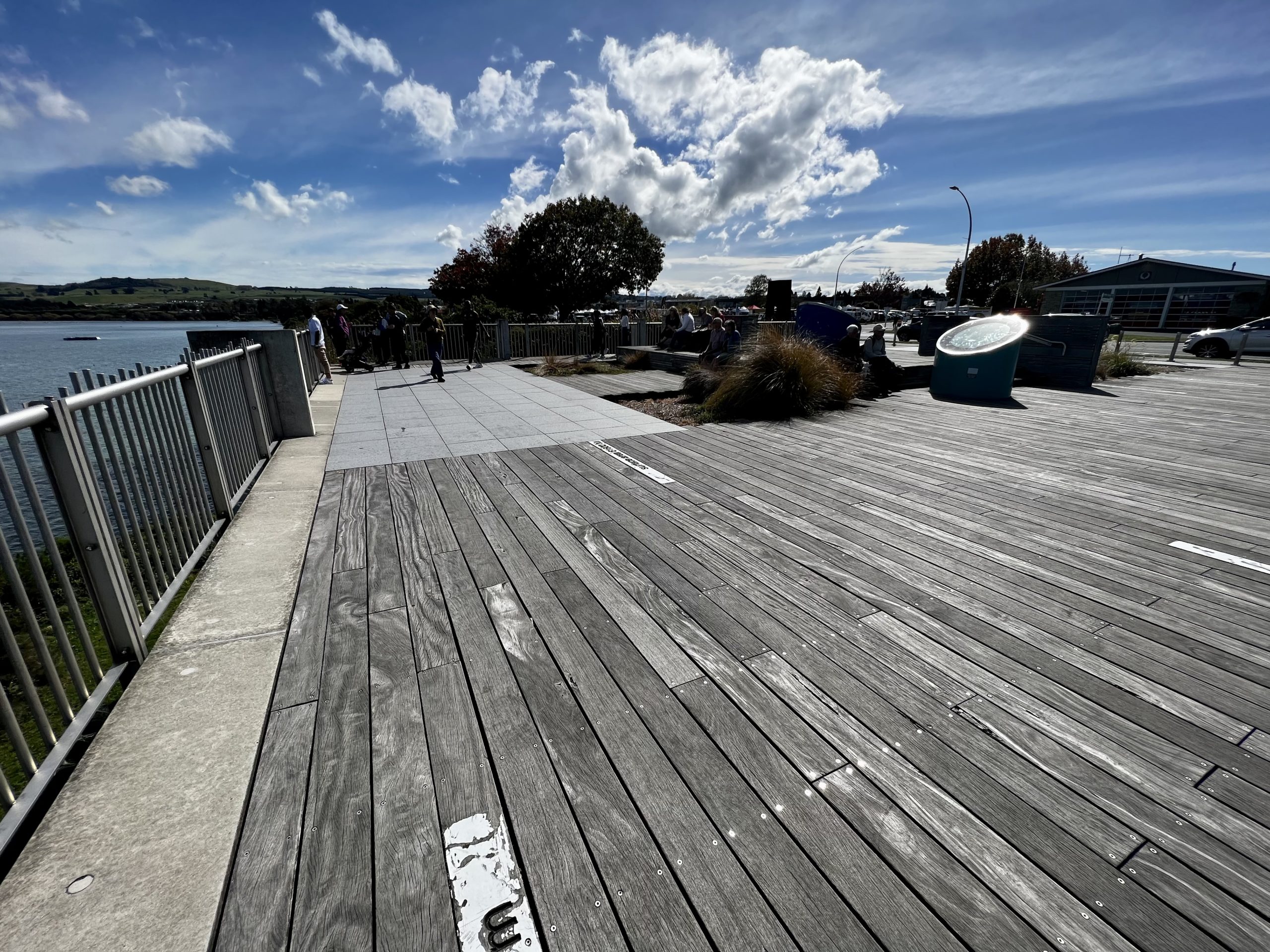
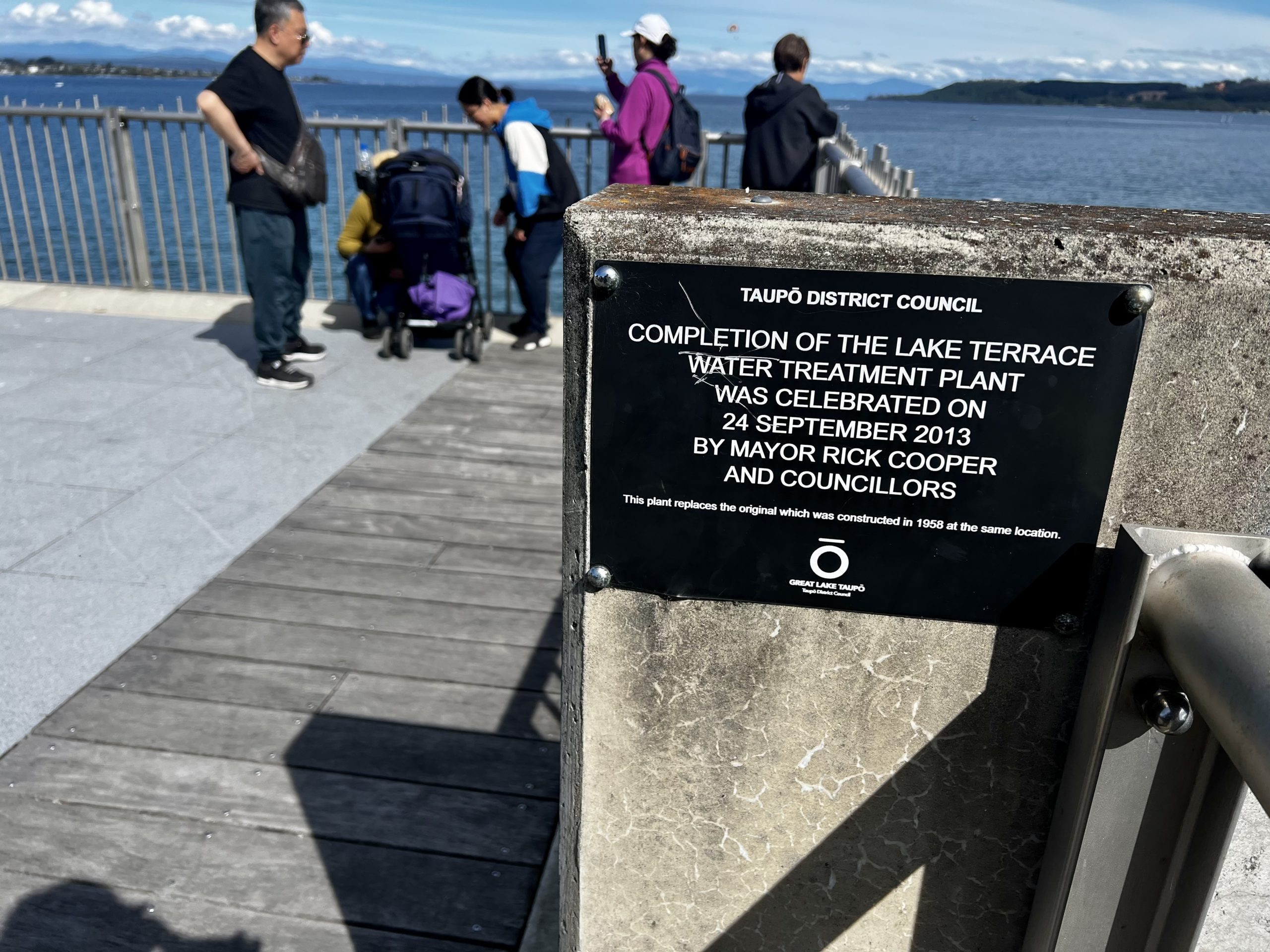
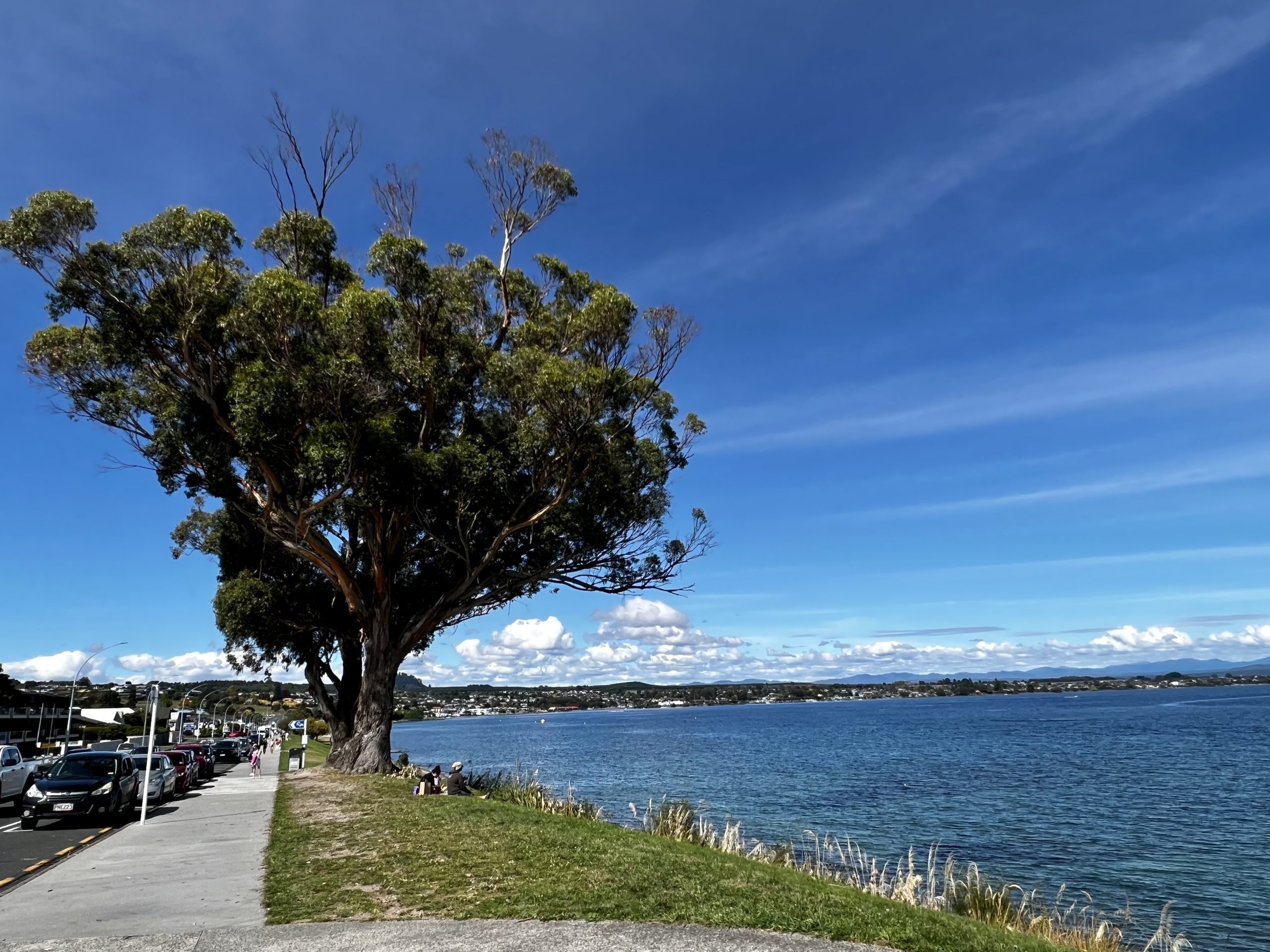
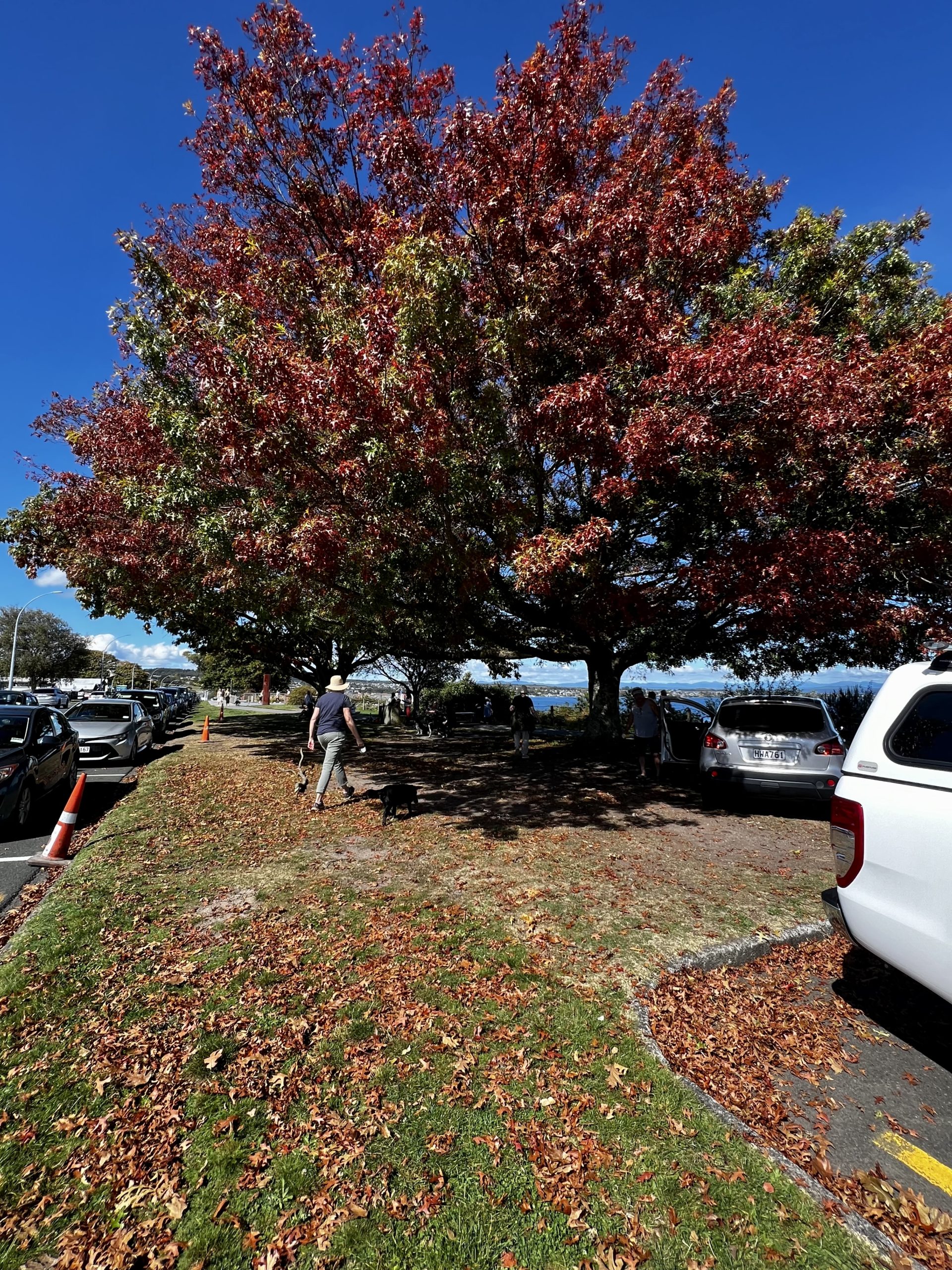
Huka Falls
Bonnie reminded Robert that they visited the falls in 2004 and that he liked it then too.


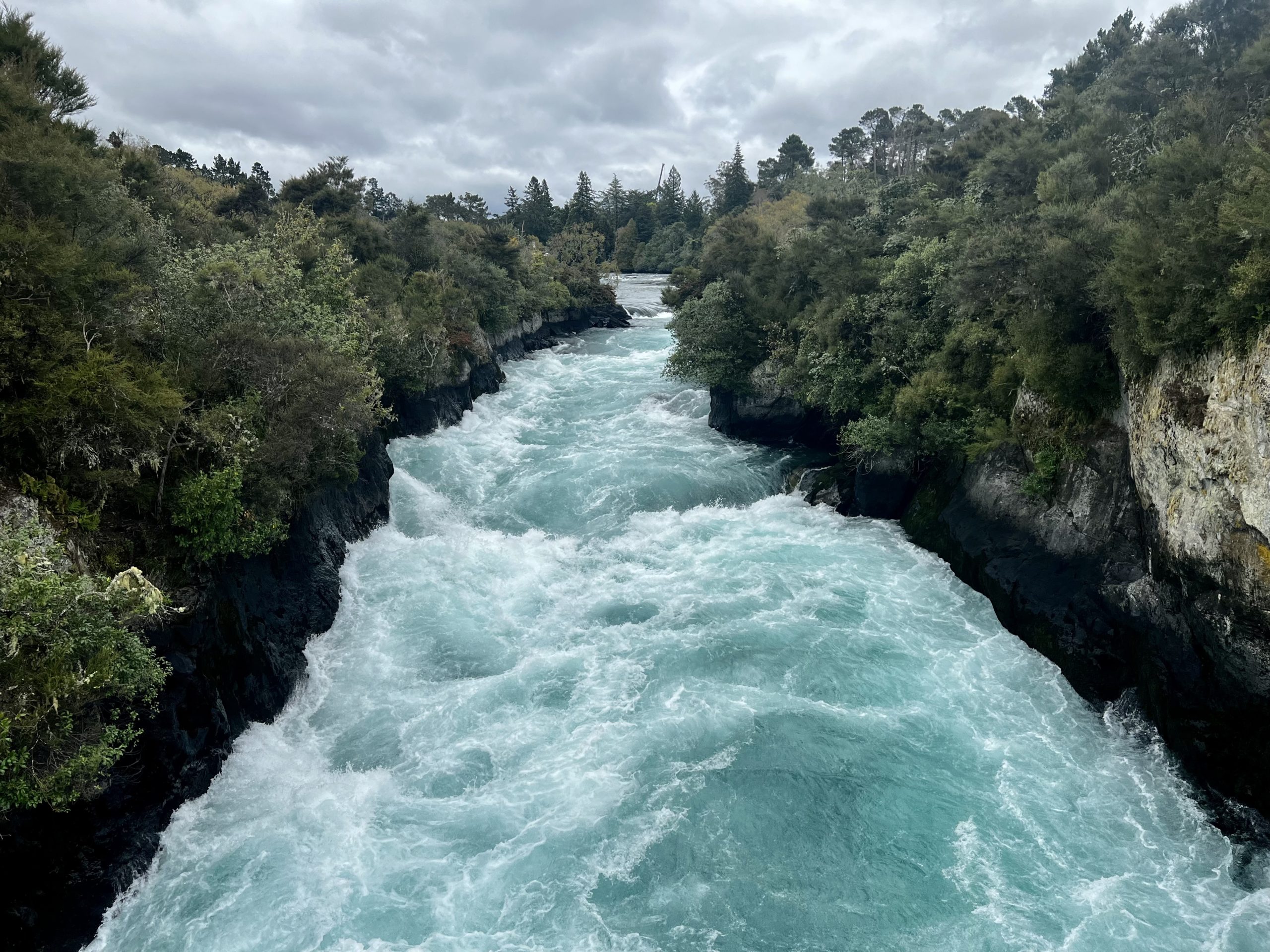
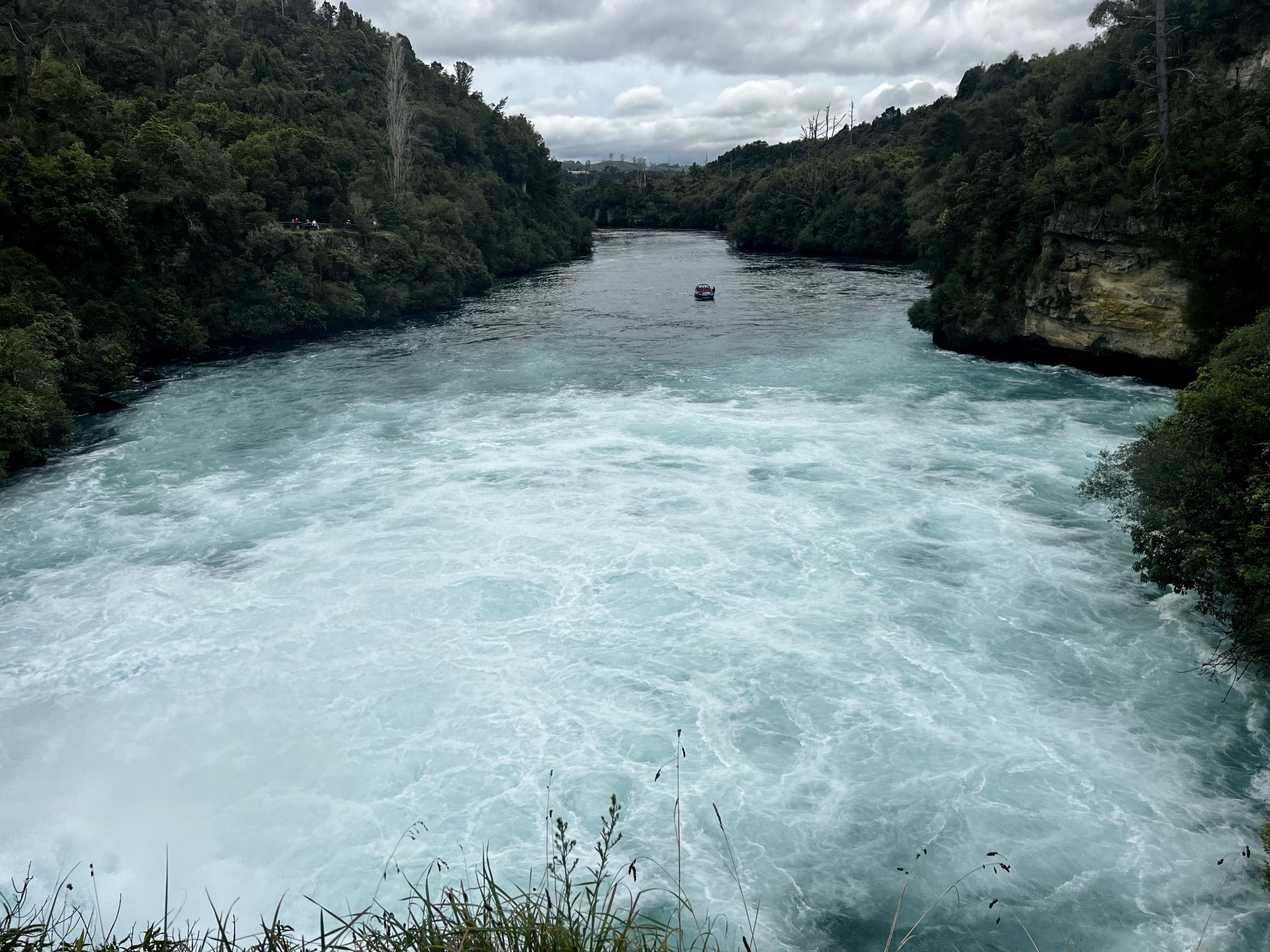
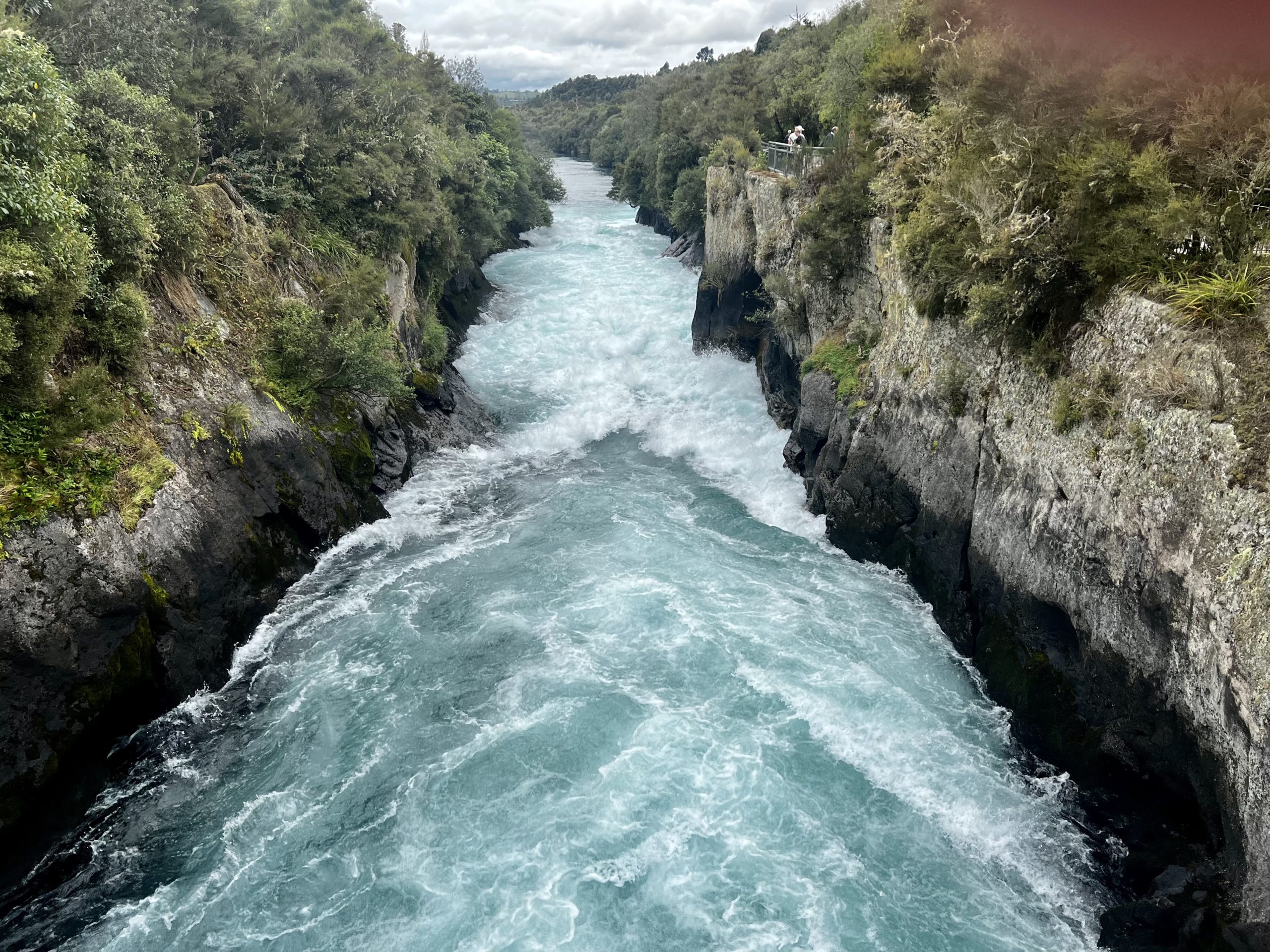
Honey!!
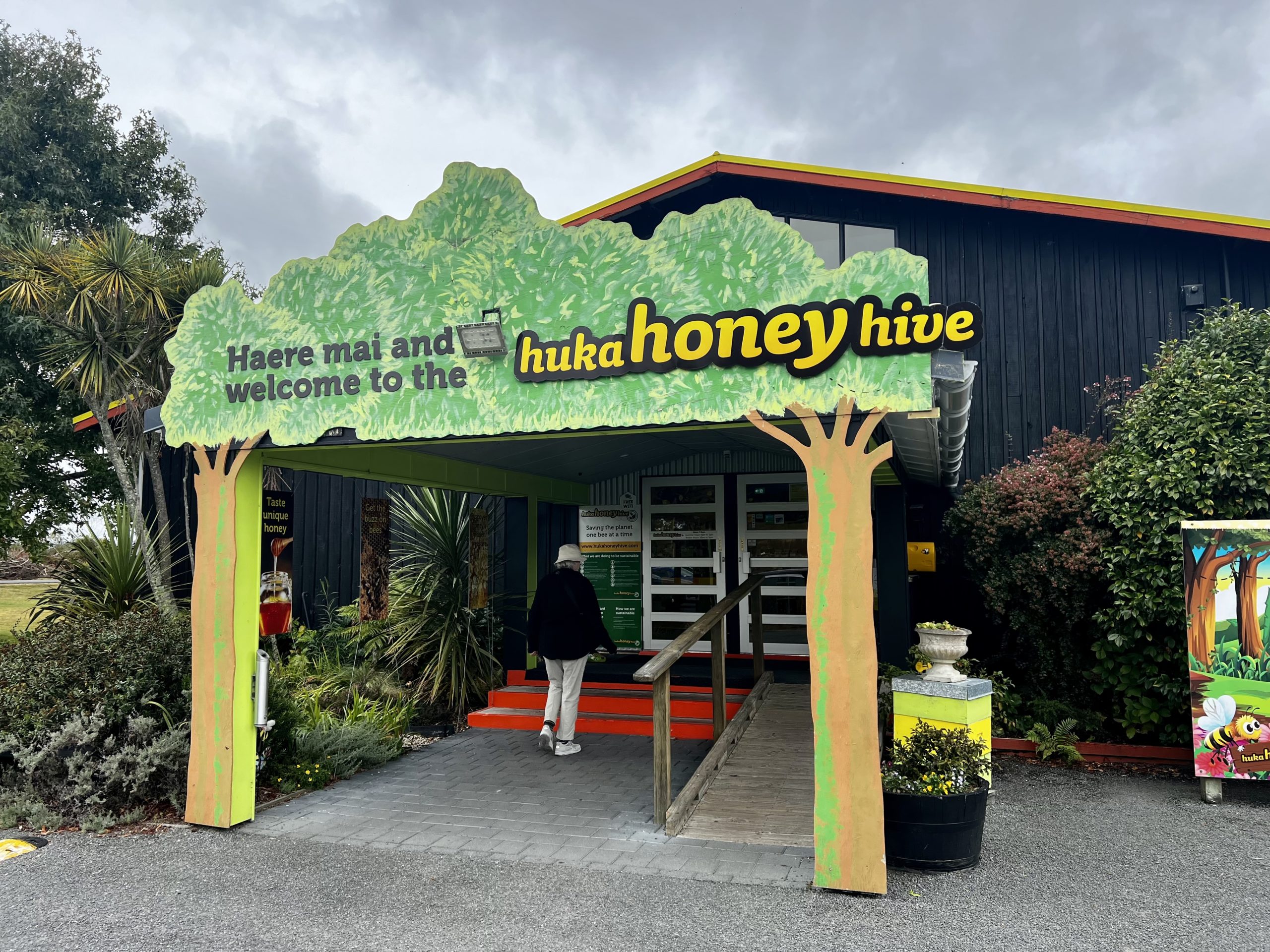
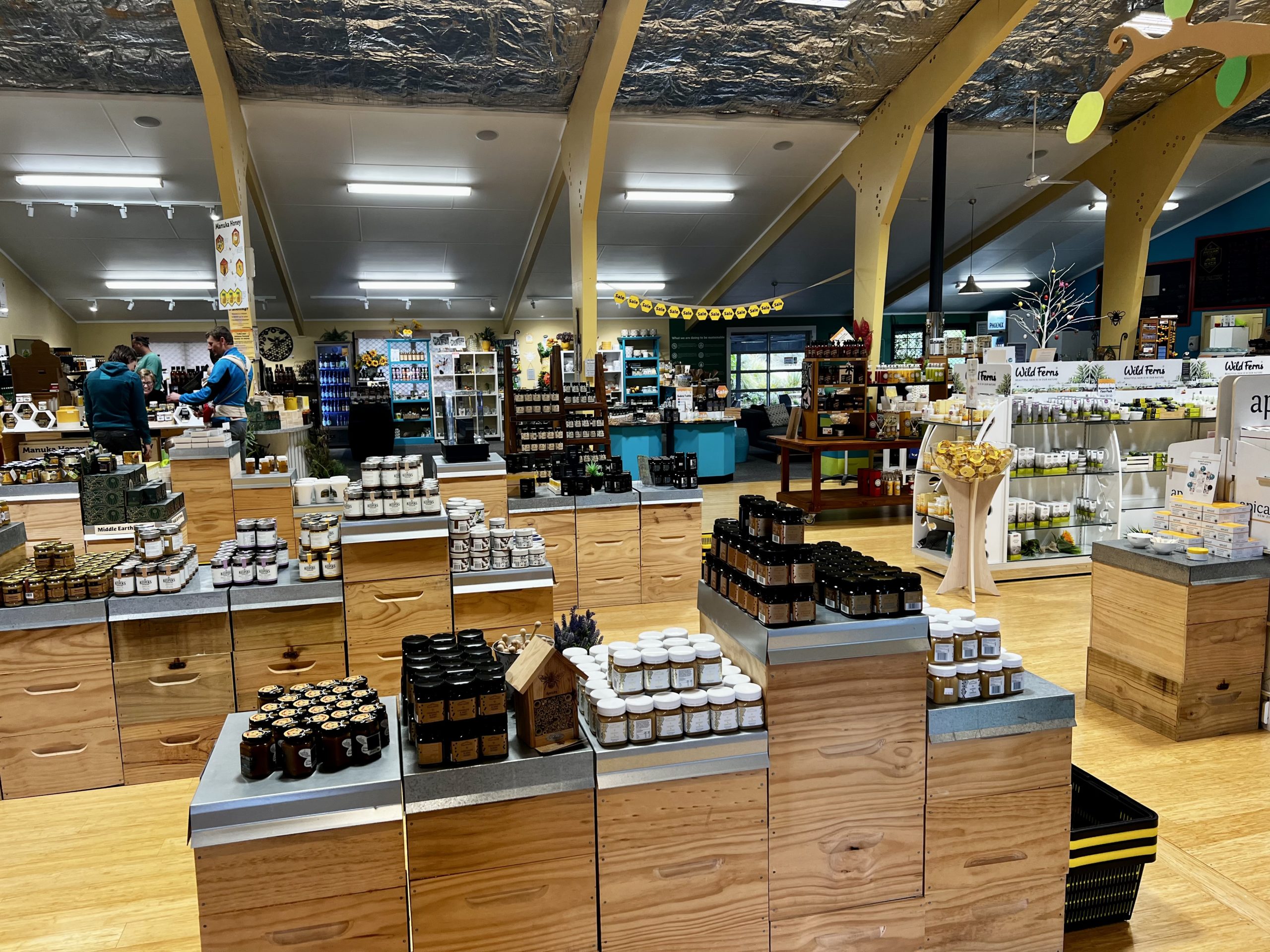
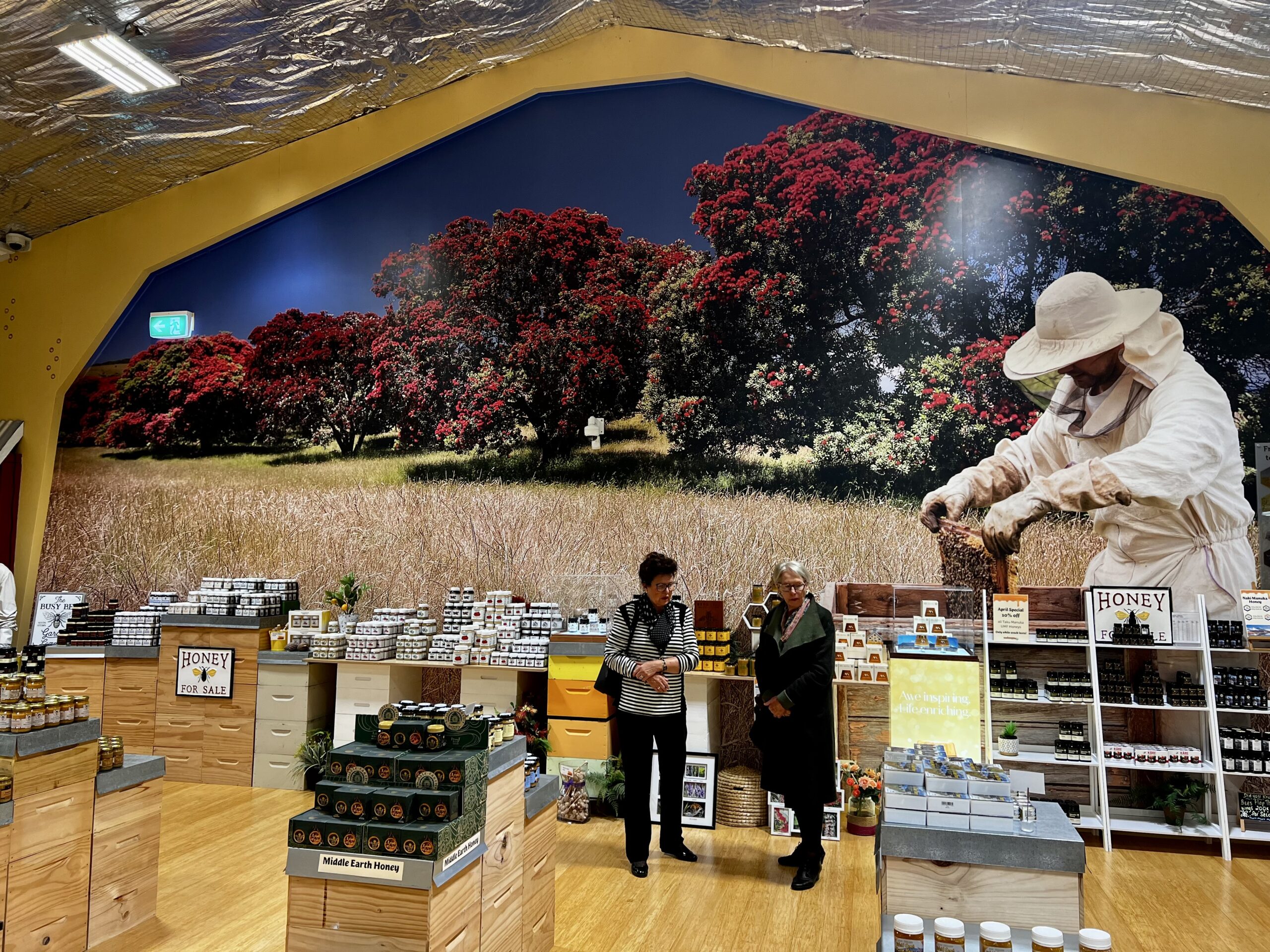
Why “Kiwi”?
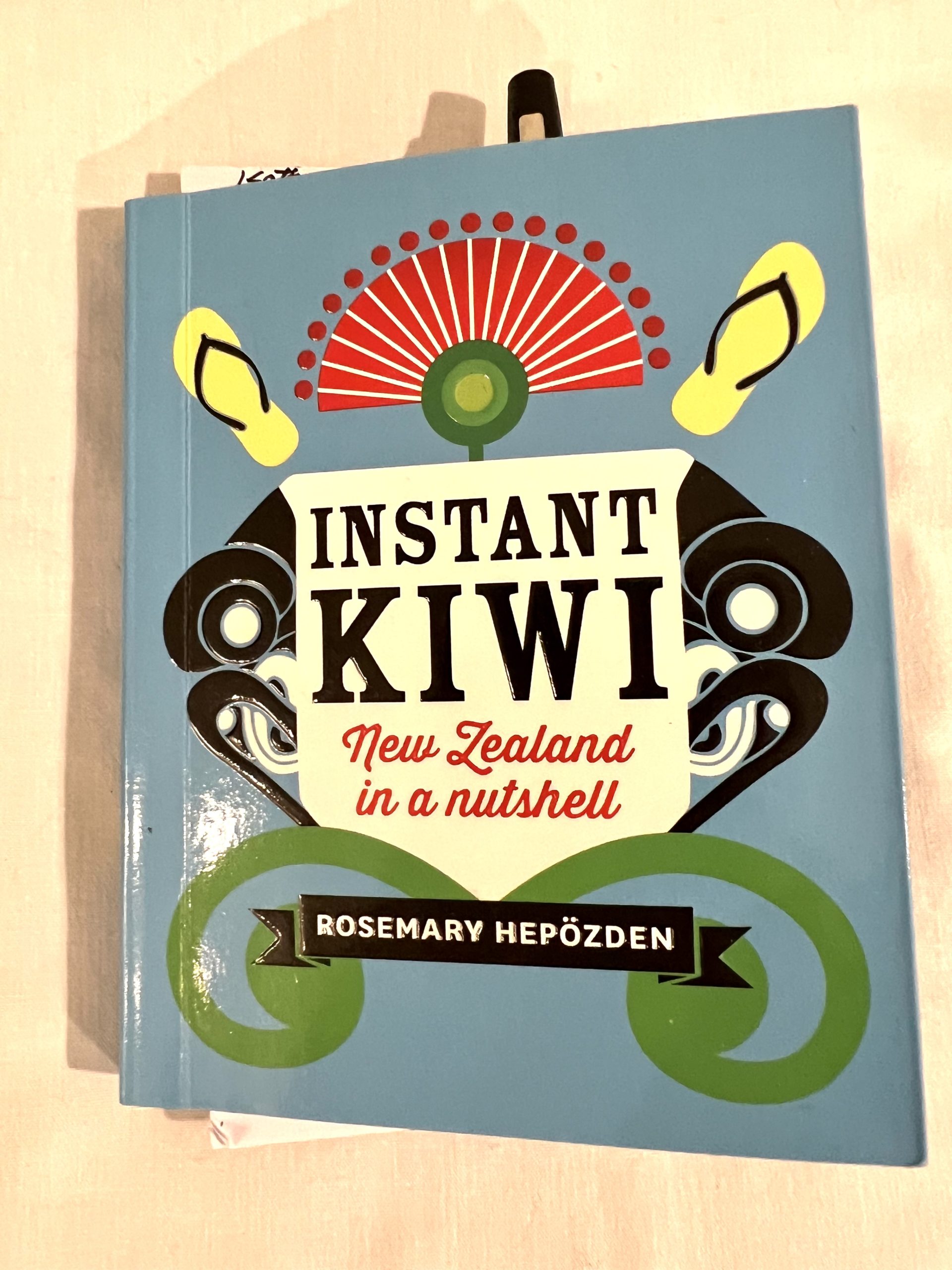
Why are New Zealanders called Kiwis? In 1906 an Australian invented a shoe polish and named it Kiwi in honor of his wife’s native country. It was used by many soldiers in WWI to shine their boots. The Allied soldiers began to call the NZ colleagues who fought beside them, Kiwis. This happened again in WWII. And soon not just soldiers, but all New Zealanders were called Kiwis.
Thanks, Mate
That’s an expression we hear often. Kind of sums up the Kiwi personality of being open and friendly. They often go beyond what is required to offer a helping hand. As an example, Robert double parked while Bonnie dashed into a store. A Kiwi across the street was vacating his parking space and offered it to Robert. While he backed out, he blocked any cars from taking it. Never had that experience before. And while Bonnie was in the store with a long line of customers at the register, she casually asked about the weekend market. The clerk stopped, got on google, and spent some time checking on the market schedule. Wow.
Robert is also fond of Kiwis because they get his jokes. Yes, they get his jokes, often laughing and joking right back! We even got reduced prices on some trinkets because the clerk was so entertained by Robert.
Pedestrian Crossings
We noticed here, as elsewhere in NZ, pedestrian crossings are often a low priority. The automobile rules. Public transportation is limited because of the small population. Drivers are not alerted to crossings by signs or painted stripes, and sometimes only by a subtle change in the texture of the pavement or slight elevation of the pavement. And the way crossings are marked for drivers varies even within the few blocks of downtown Taupo, so the drivers have nothing consistent to alert them. Drivers don’t look for or very often pause for pedestrians. As a walker you must make eye contact. Oddly, the crossings are well marked on the sidewalk for pedestrians.
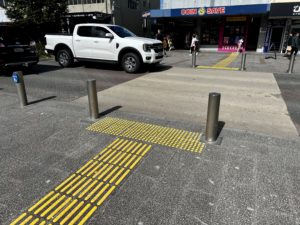
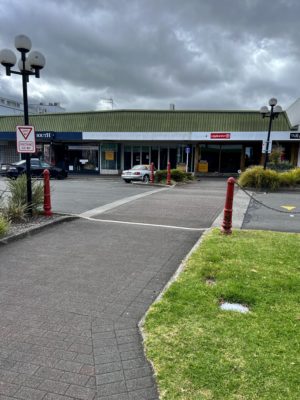
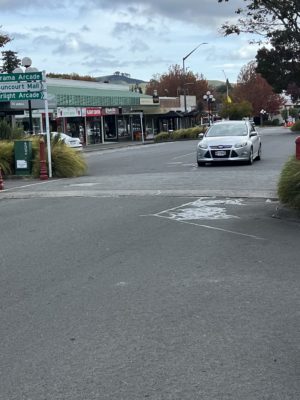
A Drive around Lake Taupō
We decided to drive around the lake, headed in a direction that kept the lake on Bonnie’s side of the car—the left. We were curious about what was on the far side. The flattened peaks of numerous volcanos dot the mountains that embrace the lake. Lake Taupō is a crater lake located in the caldera of the Taupō Volcano, a super volcano. The lake is the largest in New Zealand (616 sq km—238 sq mi) and 100 meters (360 feet) deep. The rivers Robert fished drain into the lake. The water level is controlled so it does not fluctuate more than 1.4 meters (4.6 feet). The single outlet, the Waikato River, has eight hydroelectric dams constructed in the early 1940s that regulate the water flow. We can see geothermal venting in the hills surrounding the lake. The volcano is considered active.
Most of the developed areas lie on the lake’s eastern shore, probably because the land there is relatively flat. This eastern area abounds in recreation opportunities that include hiking, biking, bungee jumping, swimming, paragliding, jet skiing, sailing, waterskiing, boating, fishing, and, of course, eating and drinking at numerous restaurants and places to sip a beer or two.
Our drive around the lake was less spectacular than we anticipated because hills and vegetation block views of the water. The road does not cling to the water’s edge. We did stop in one tiny town that had a nice beach. But, although the landscape is utilitarian, it is still has that grand Kiwi character. Some is in bush. Some grazed by cattle and sheep. Some forested. And Bonnie was delighted to see a few large wool barns where they shear and sort sheep wool. Bonnie can describe how the shearers work, the need for assistants, and the presence of a highly trained wool grader.
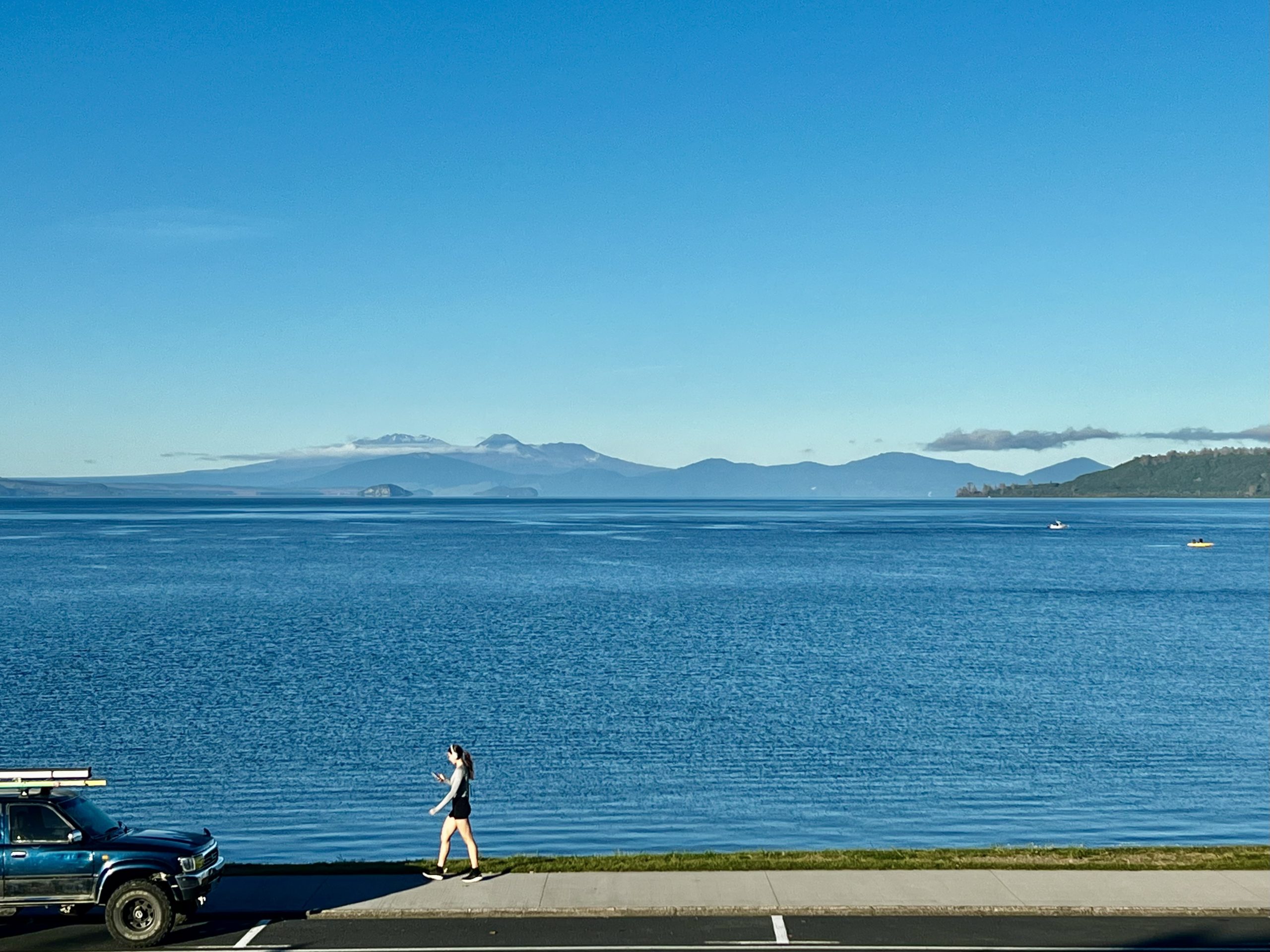
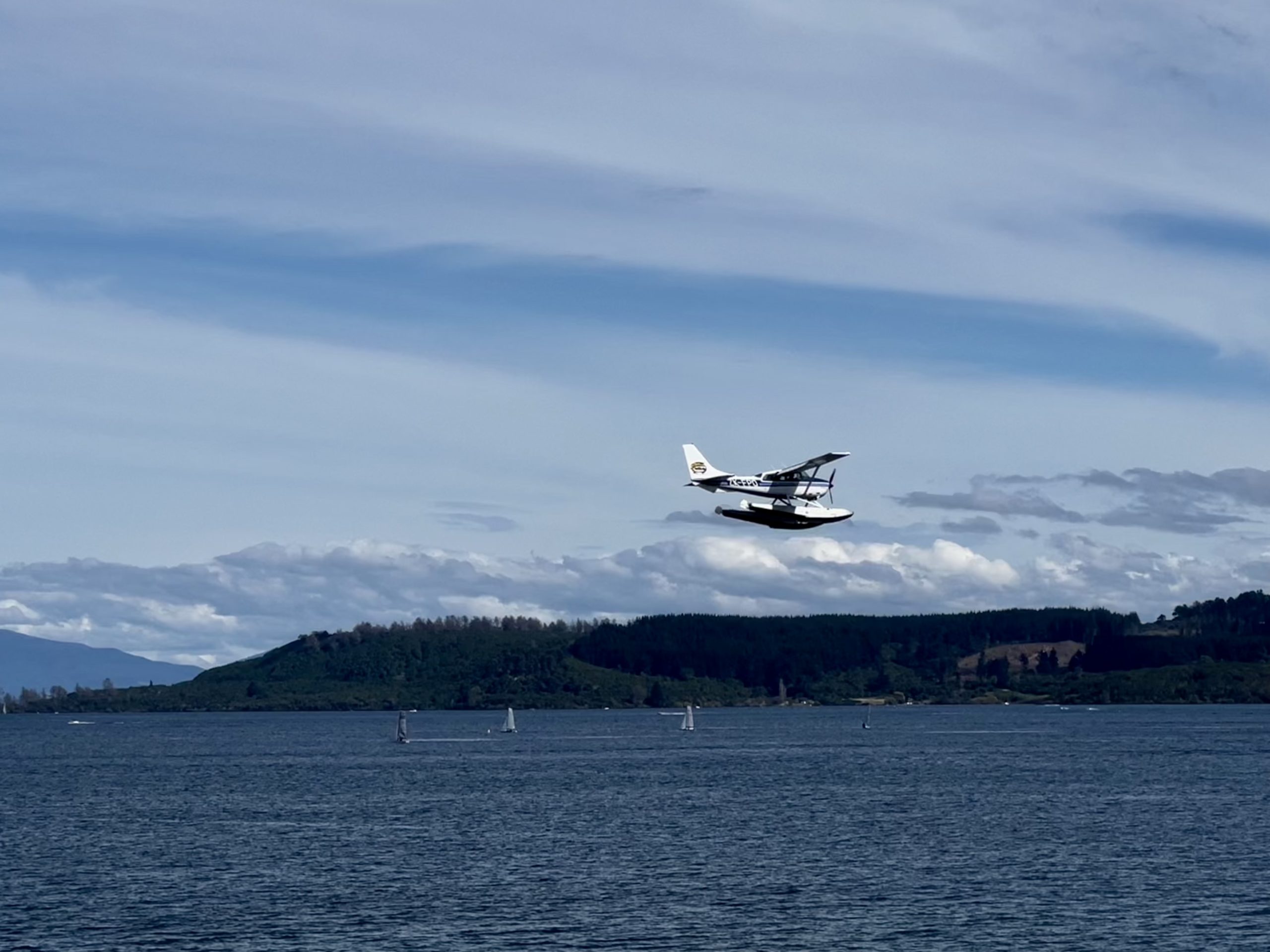
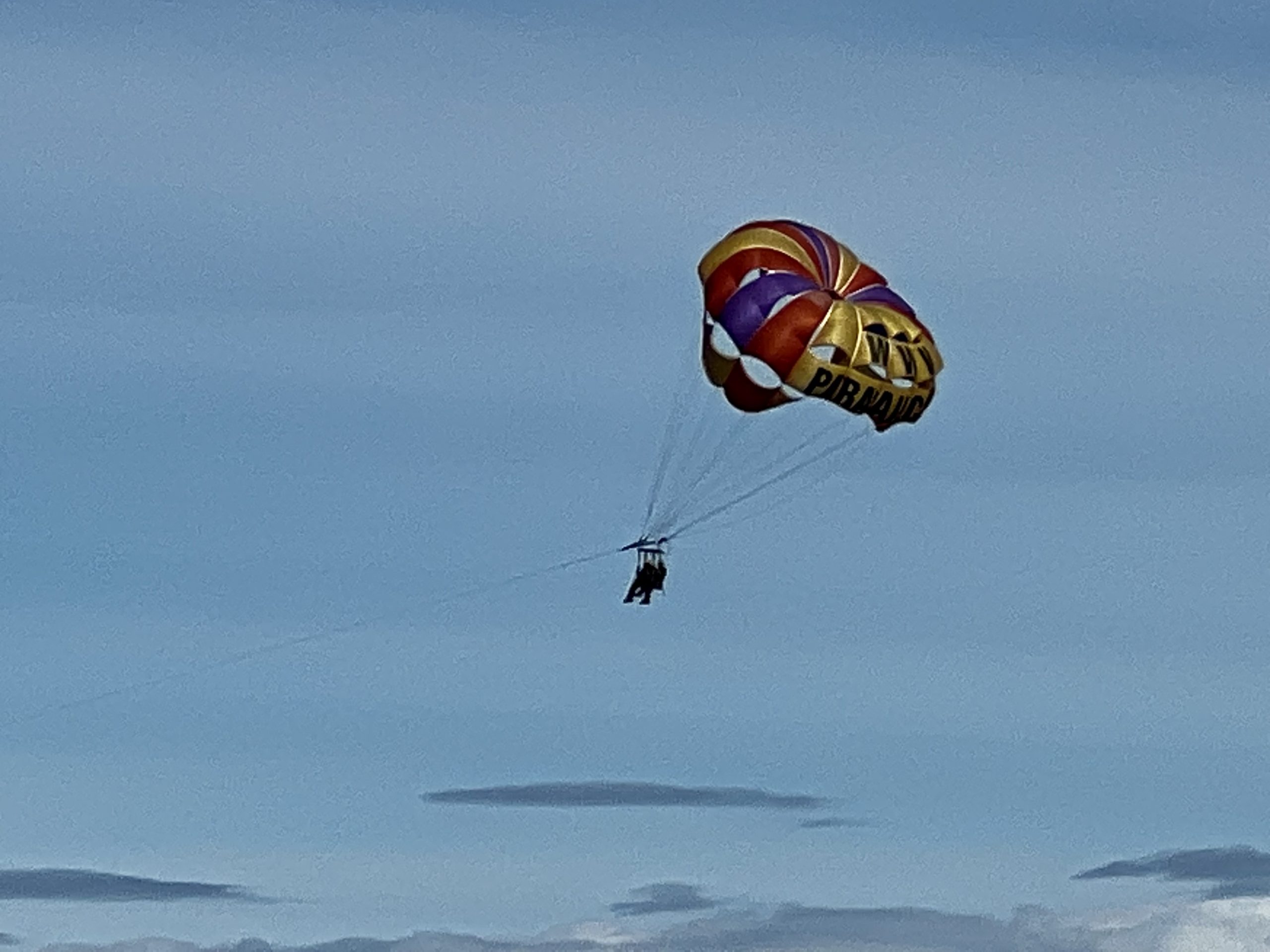
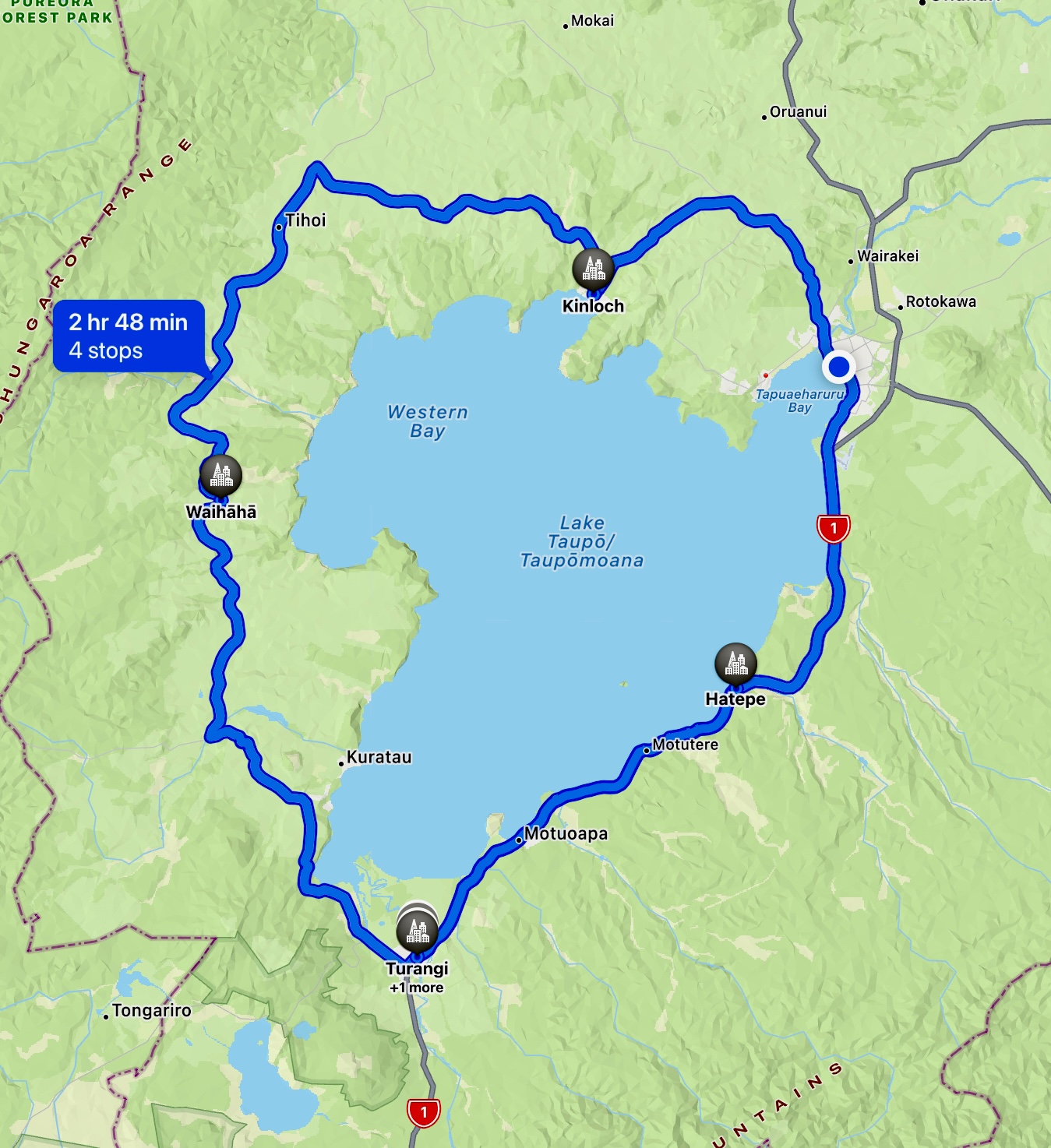
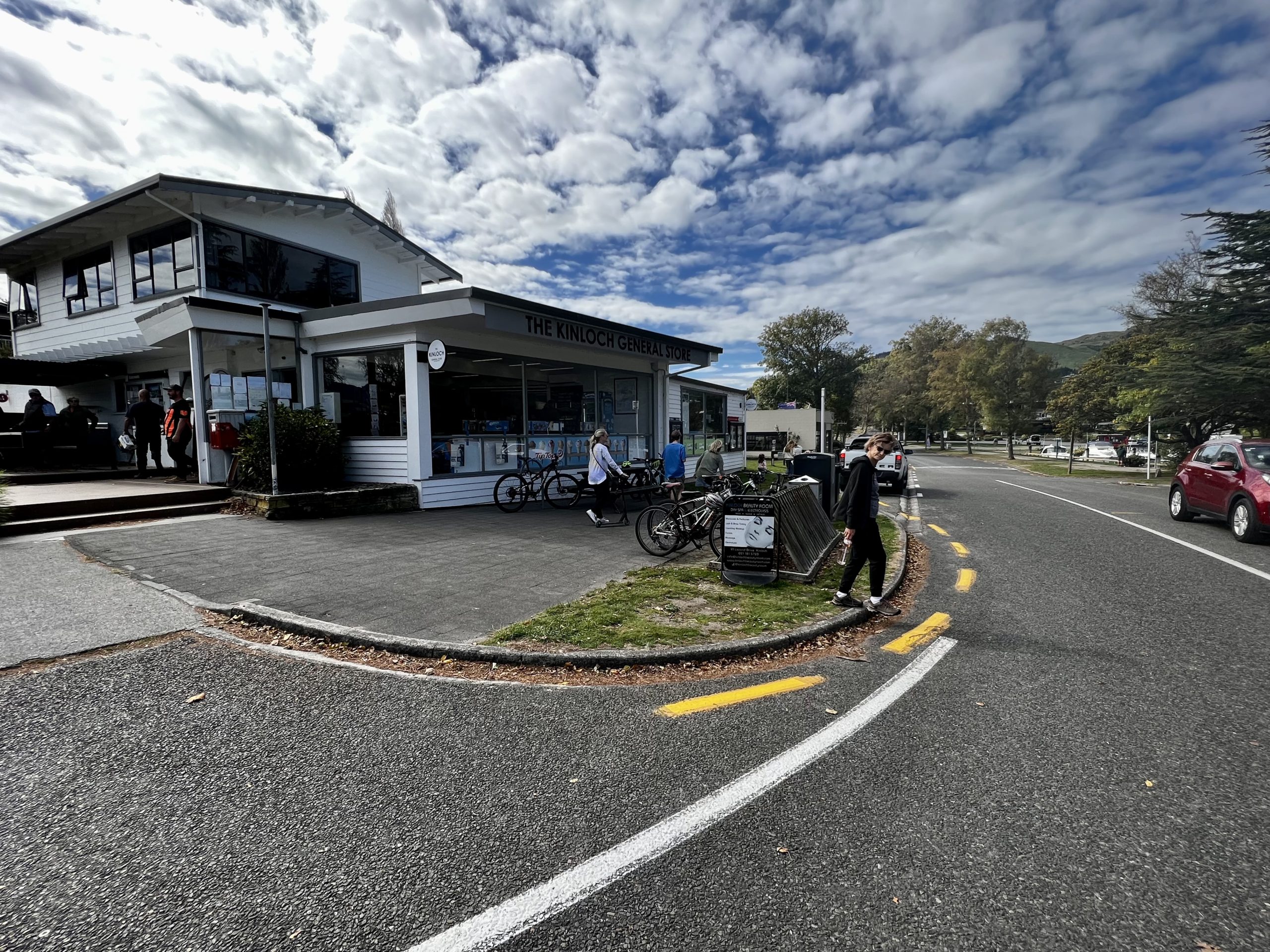
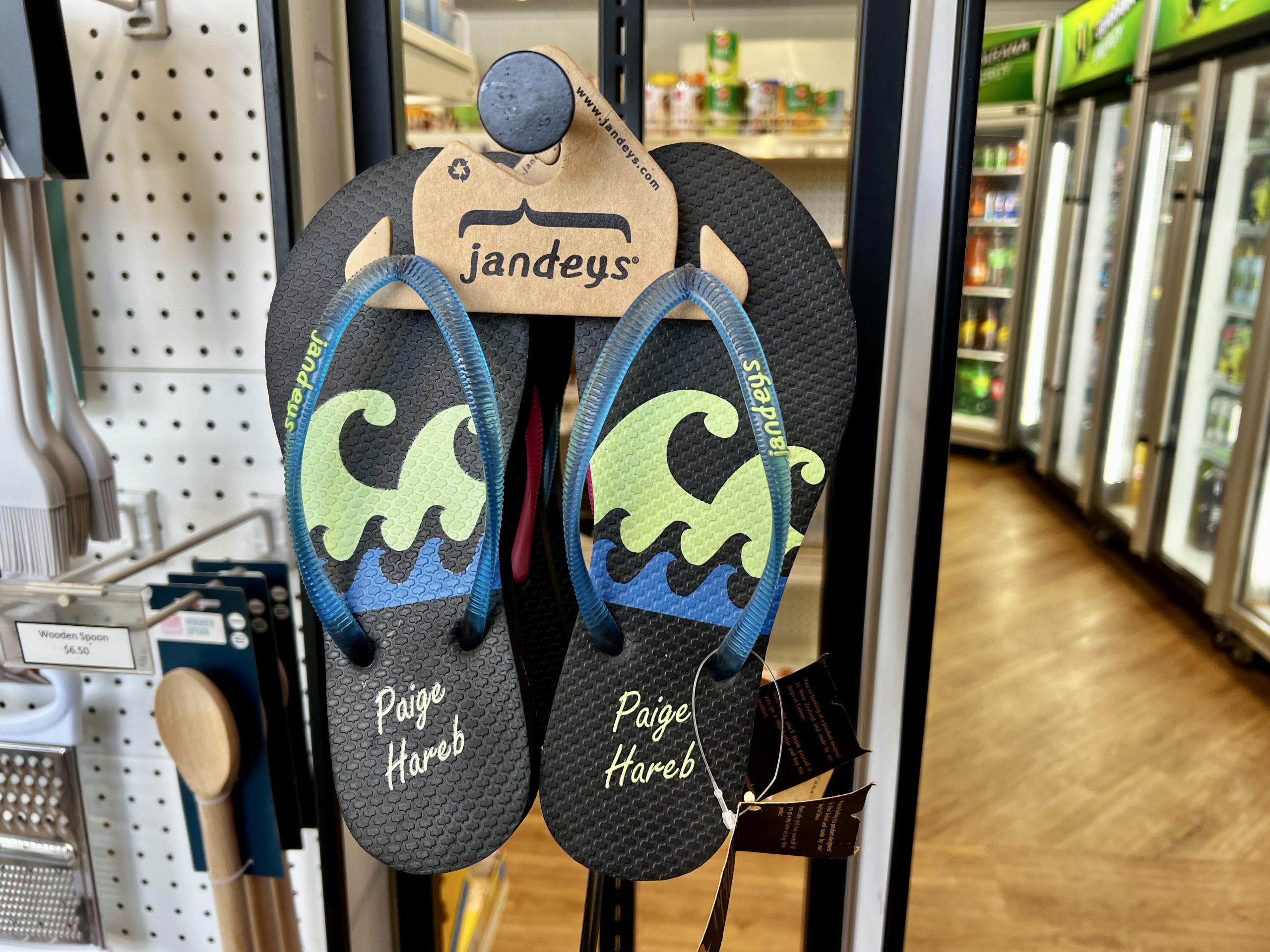
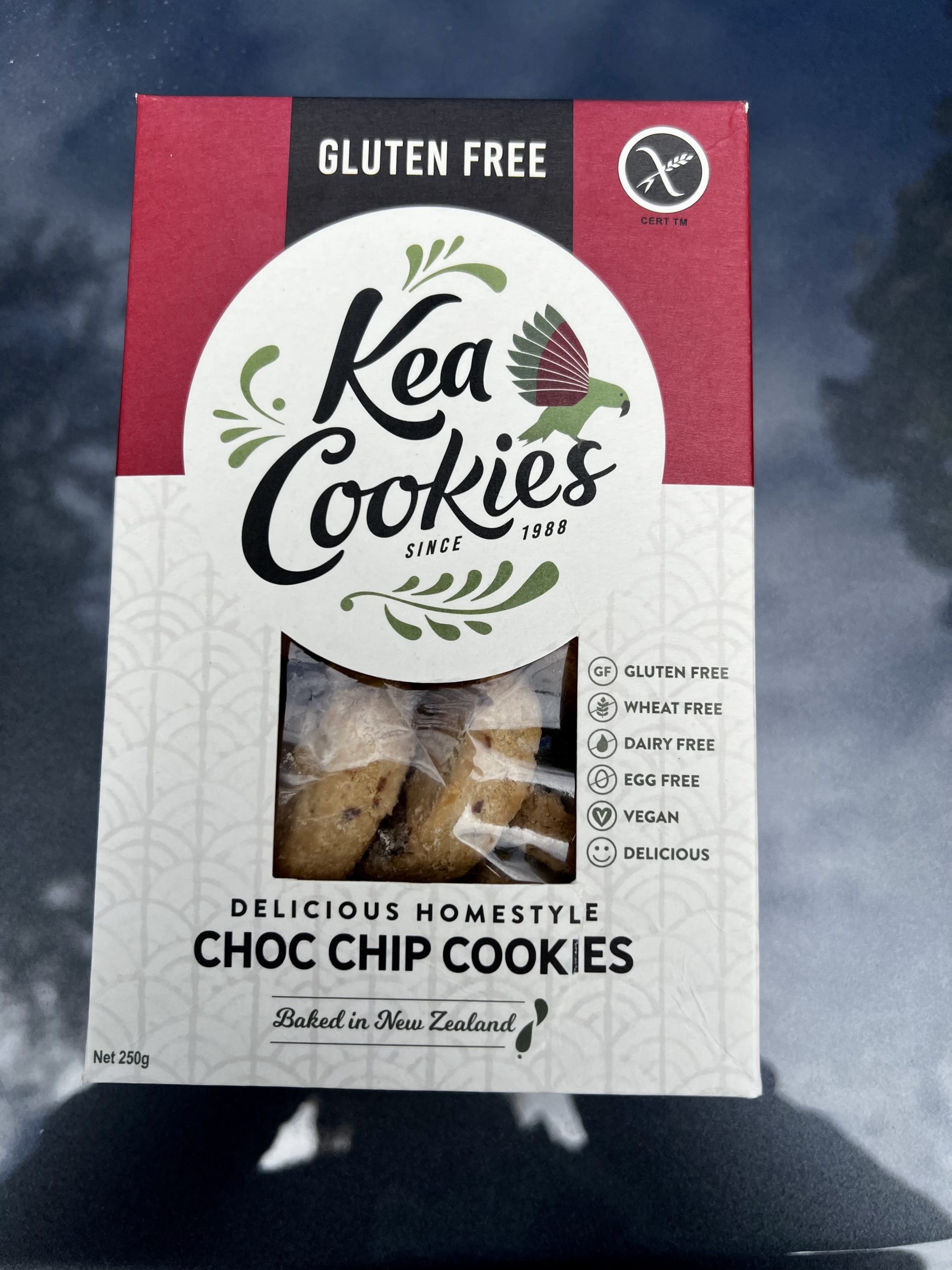
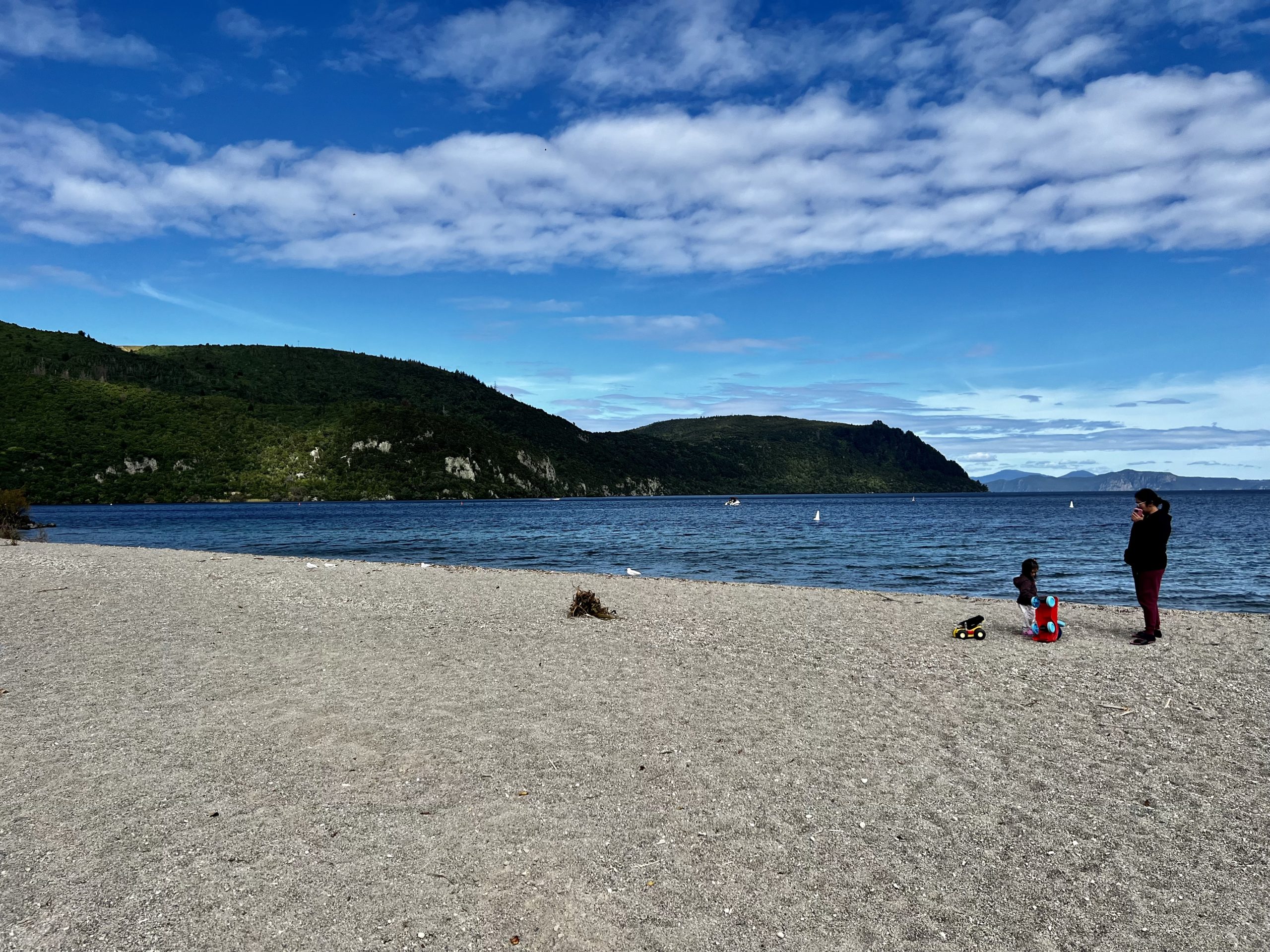
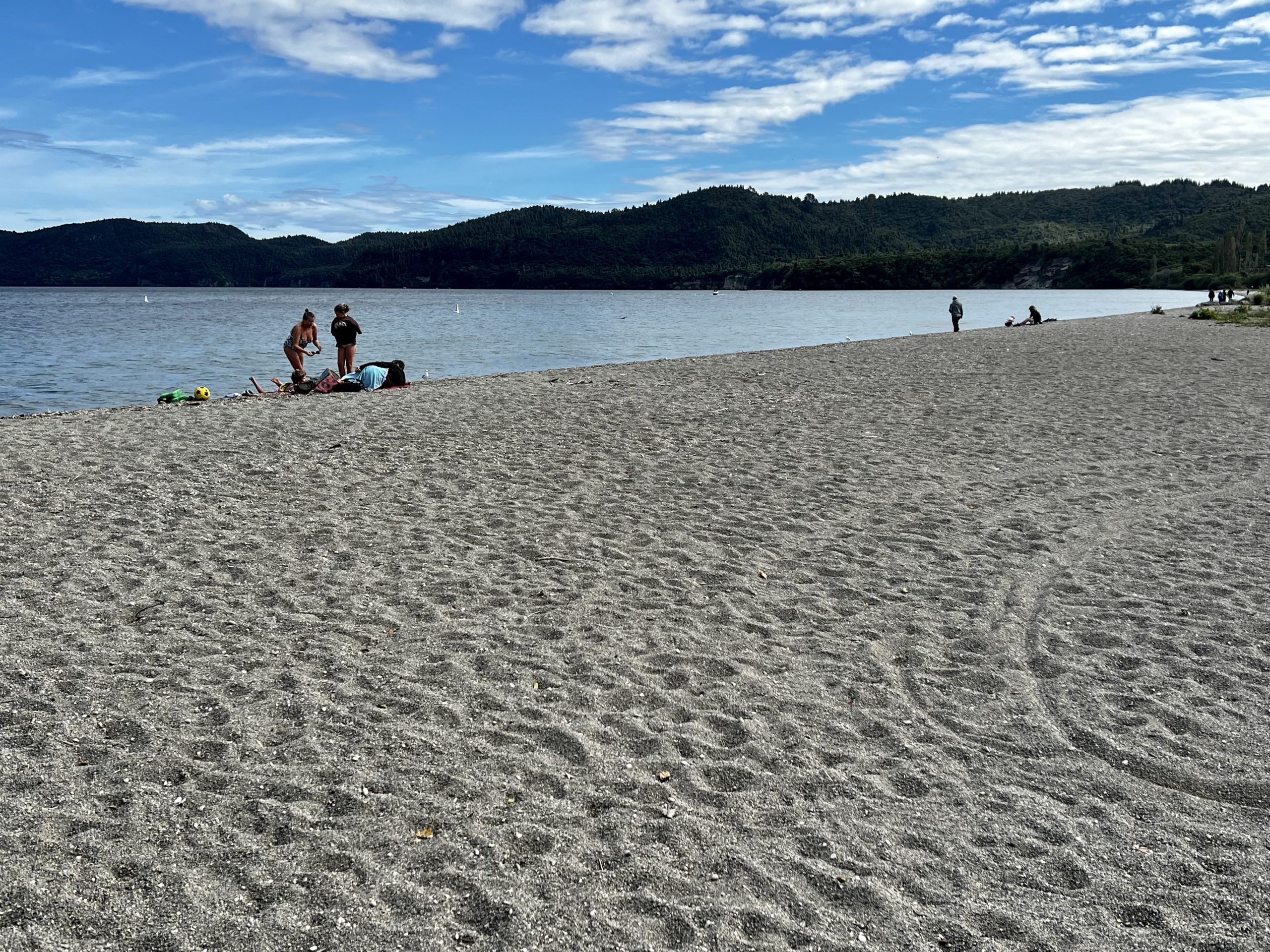
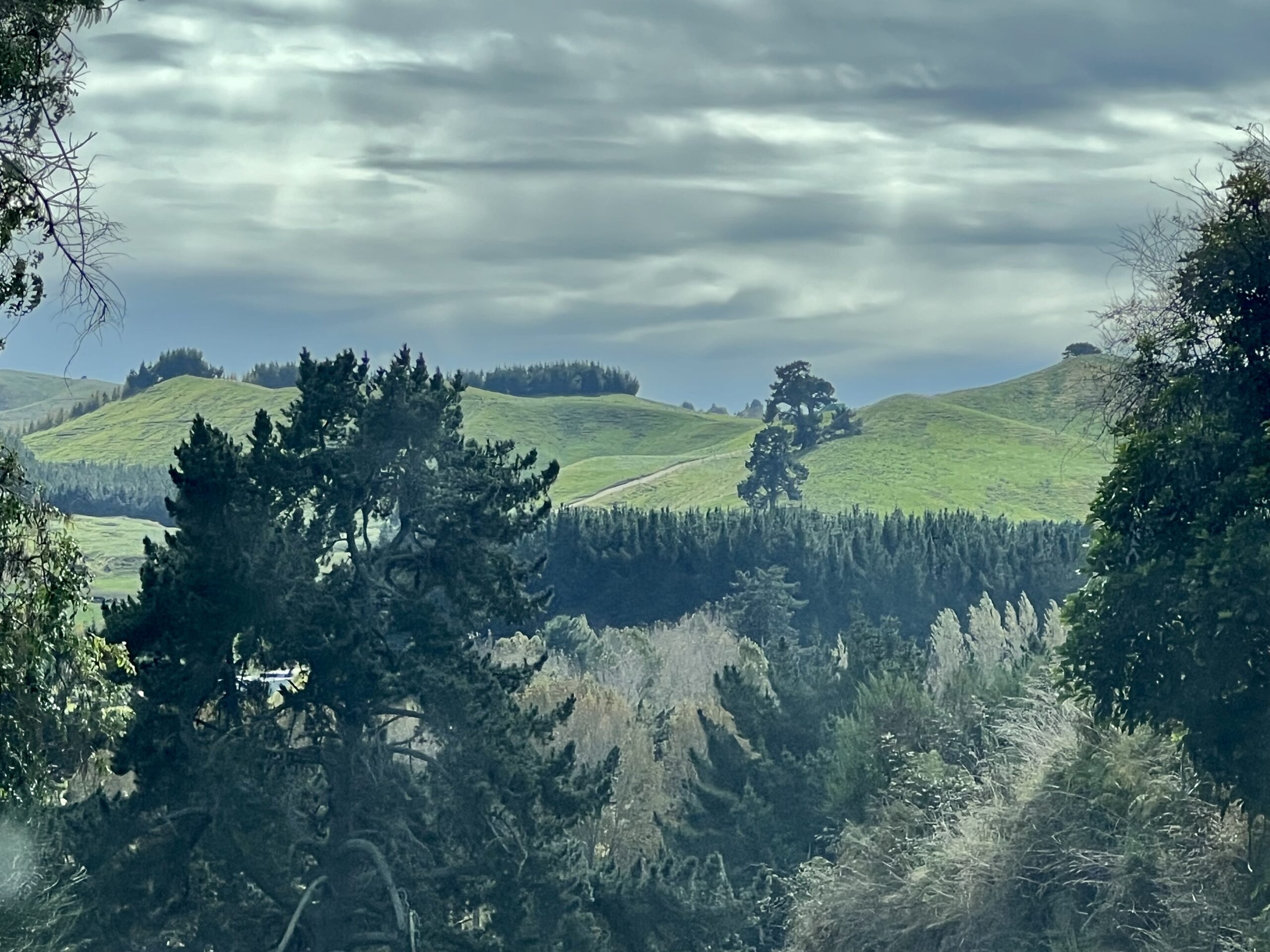
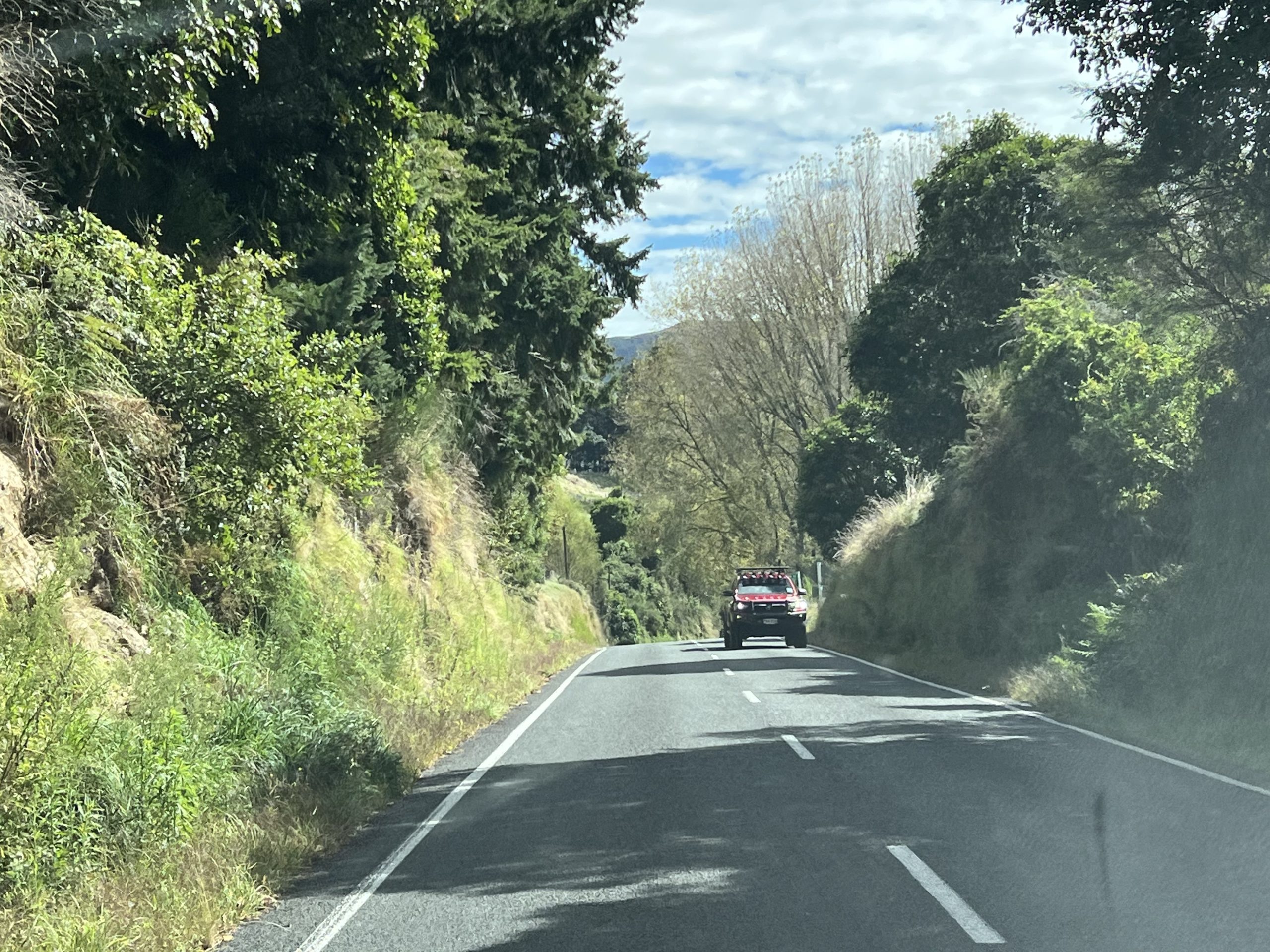
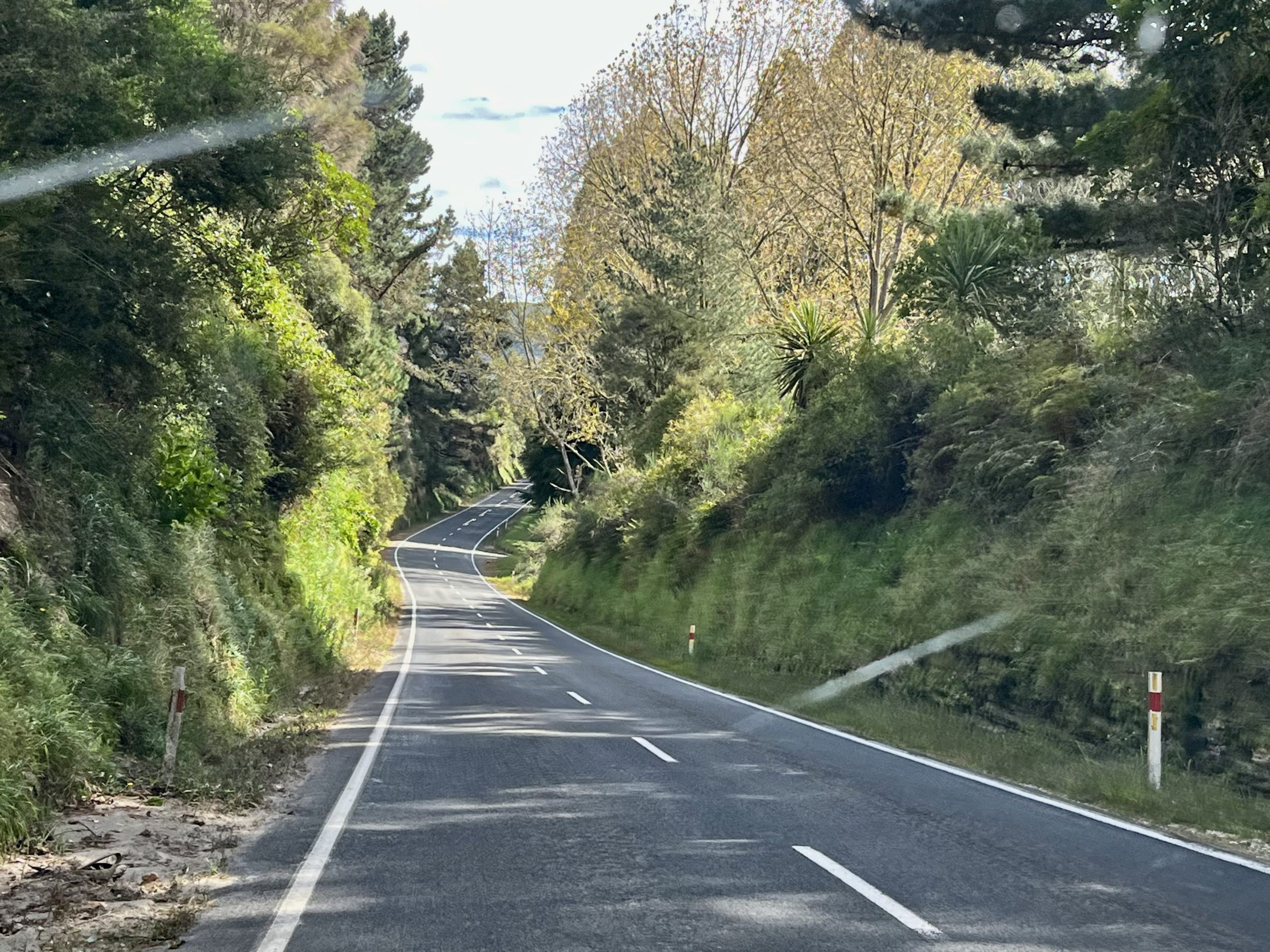
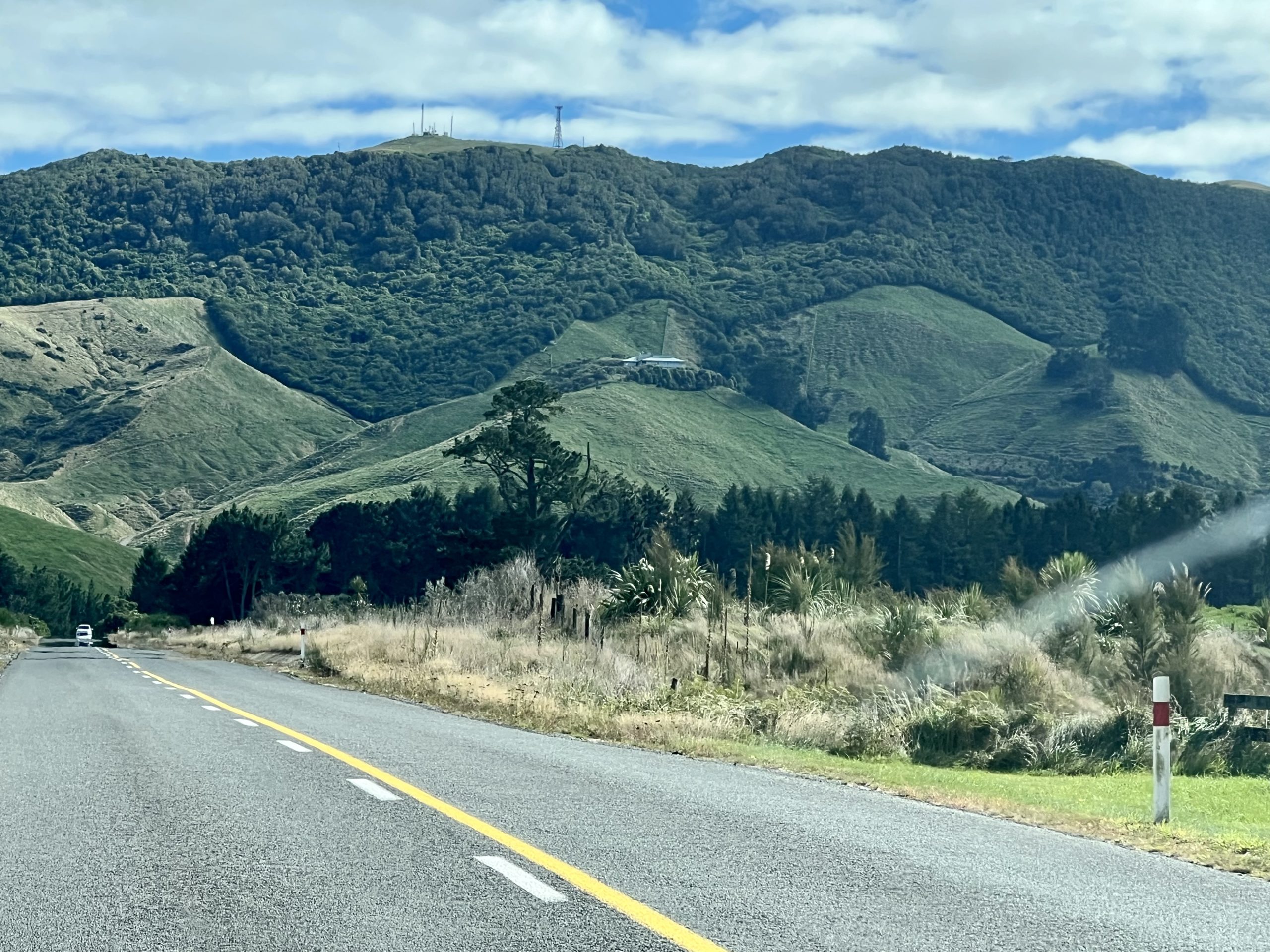
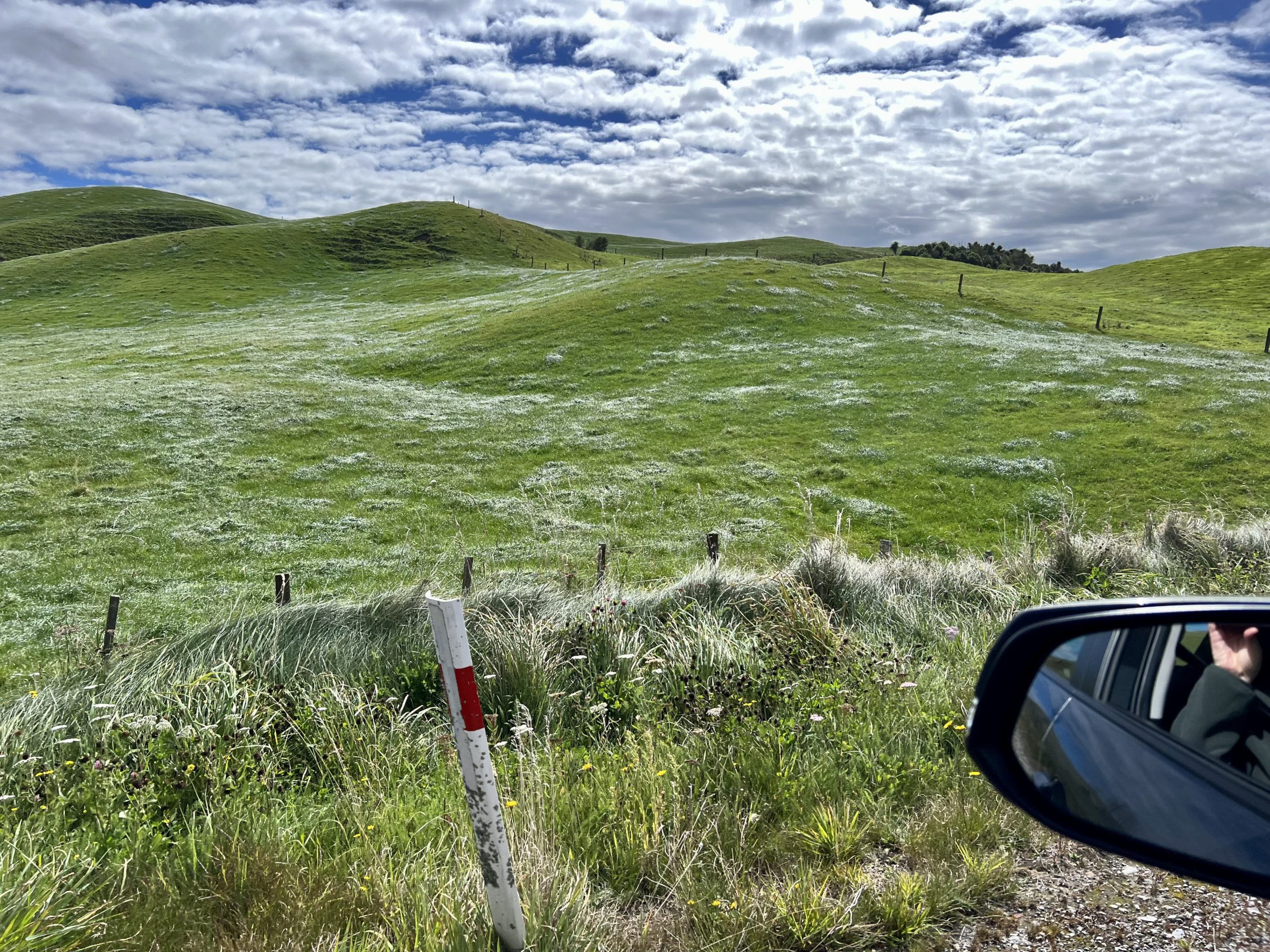
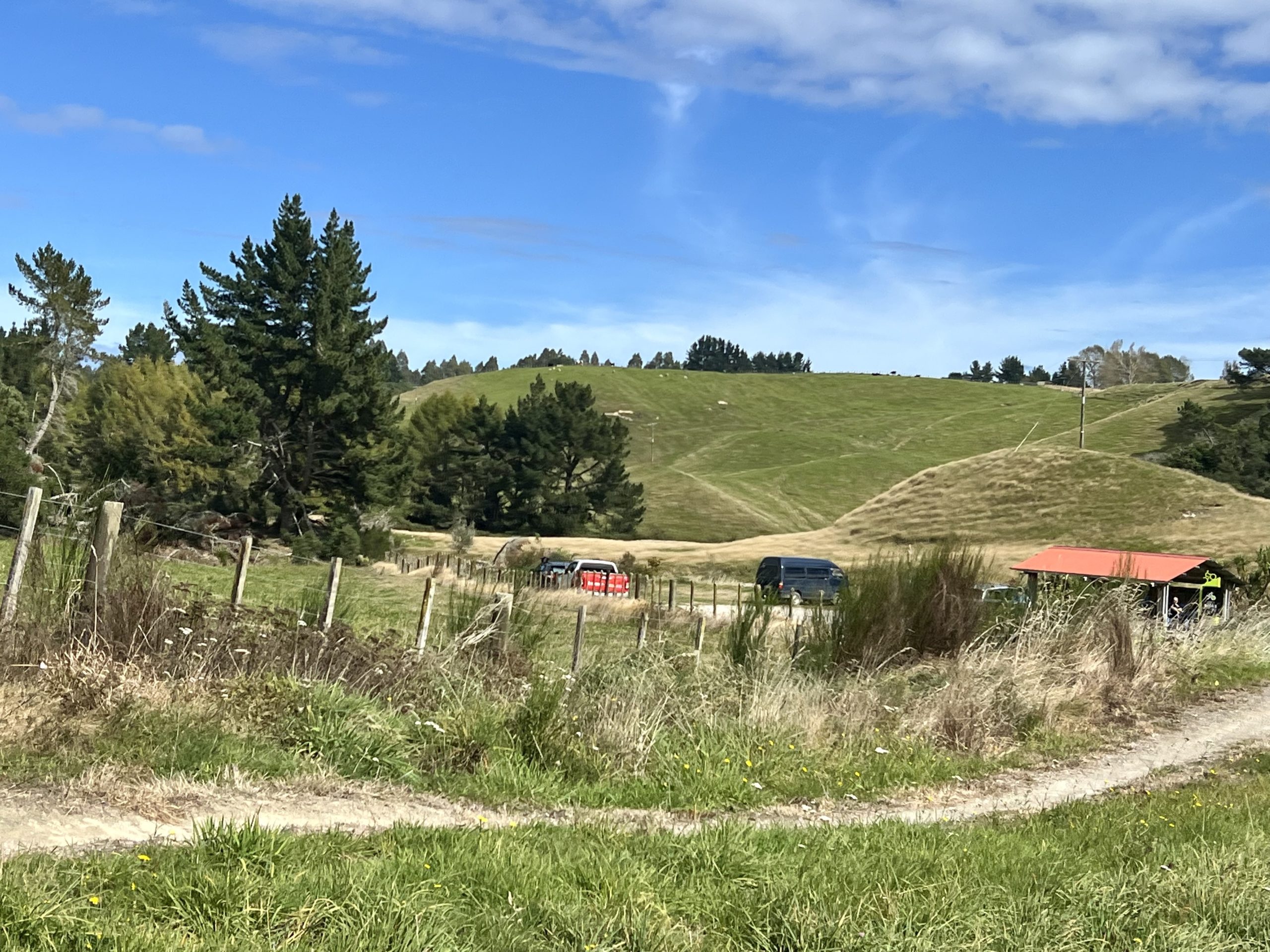
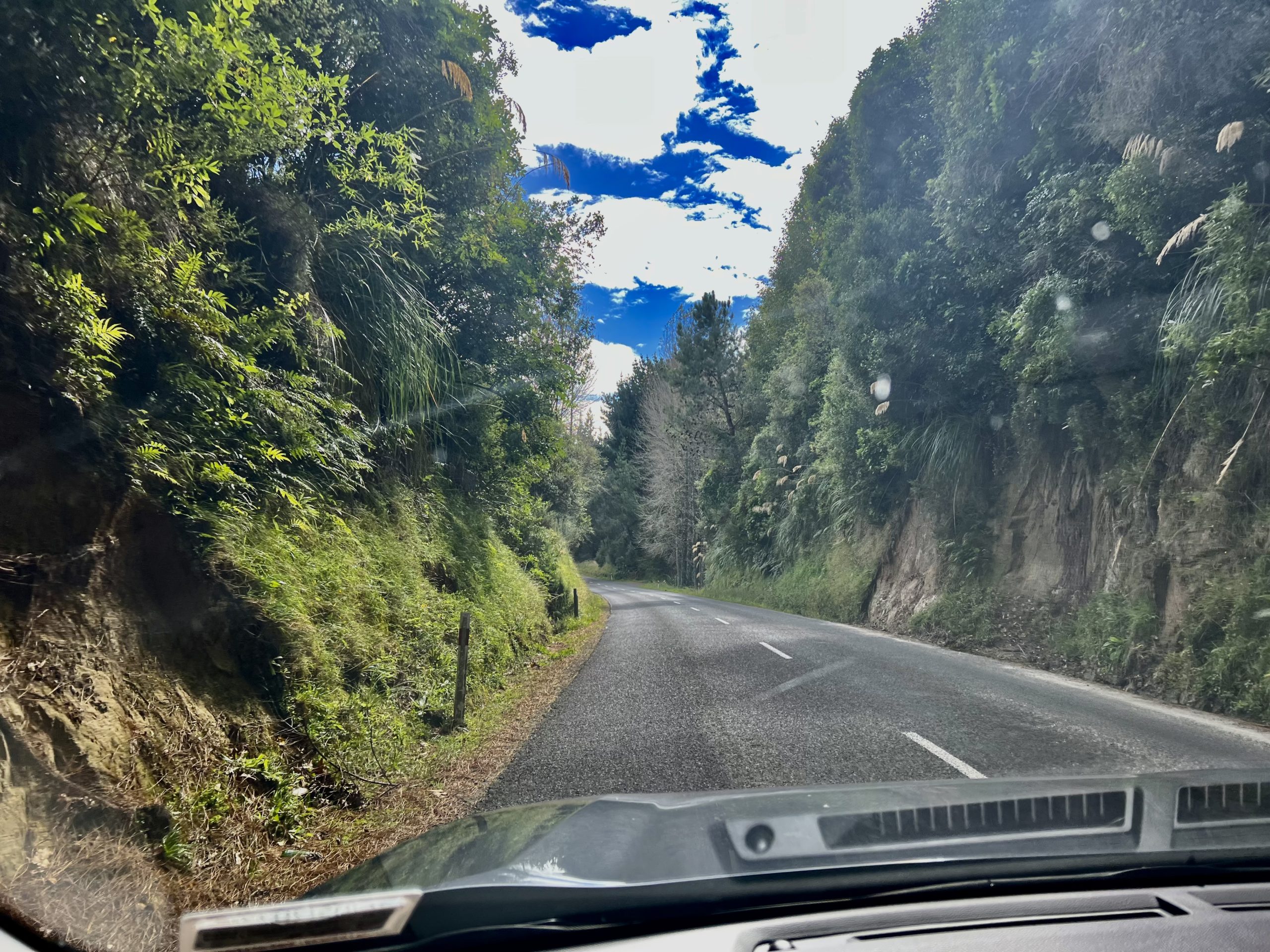
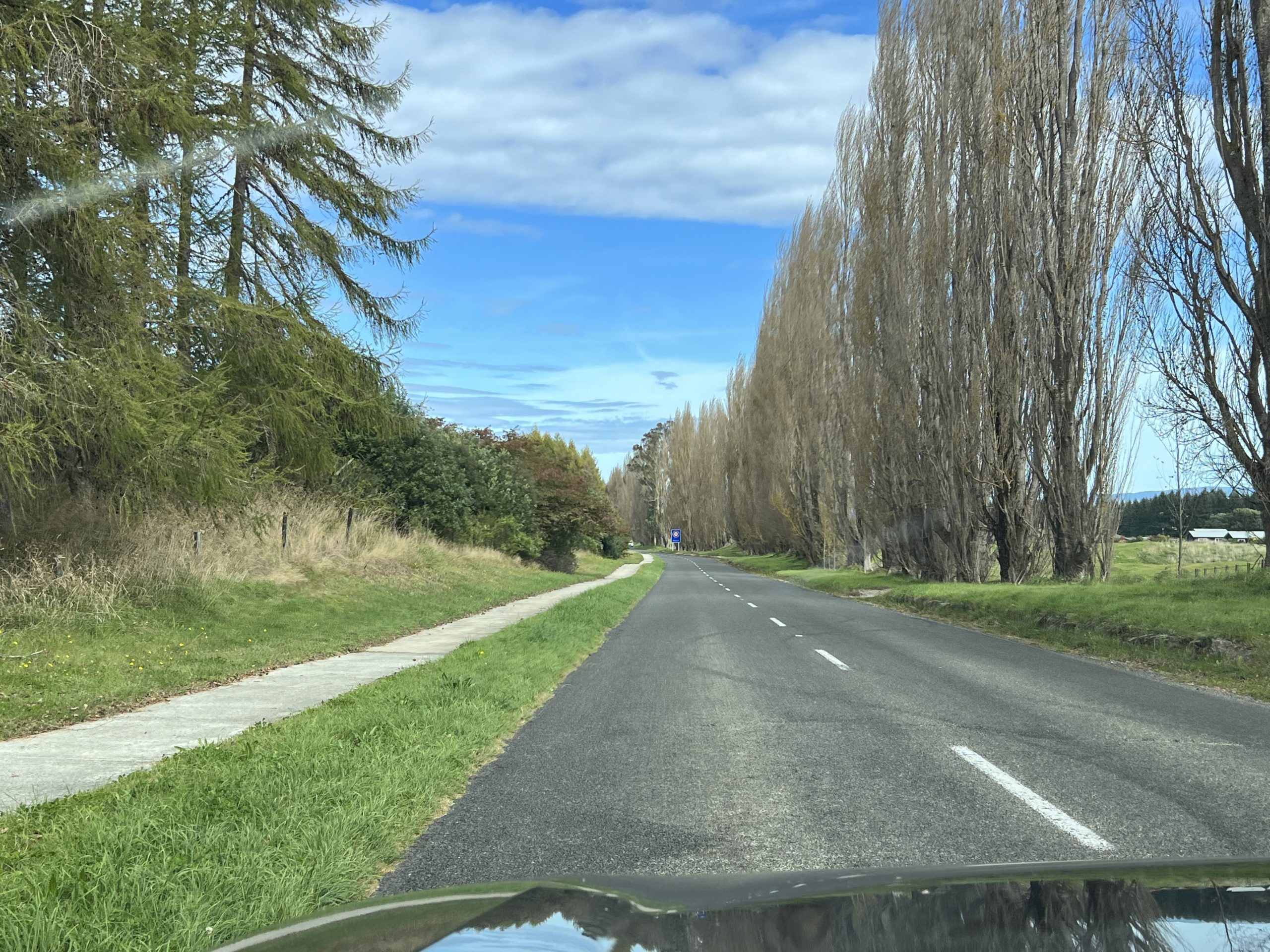
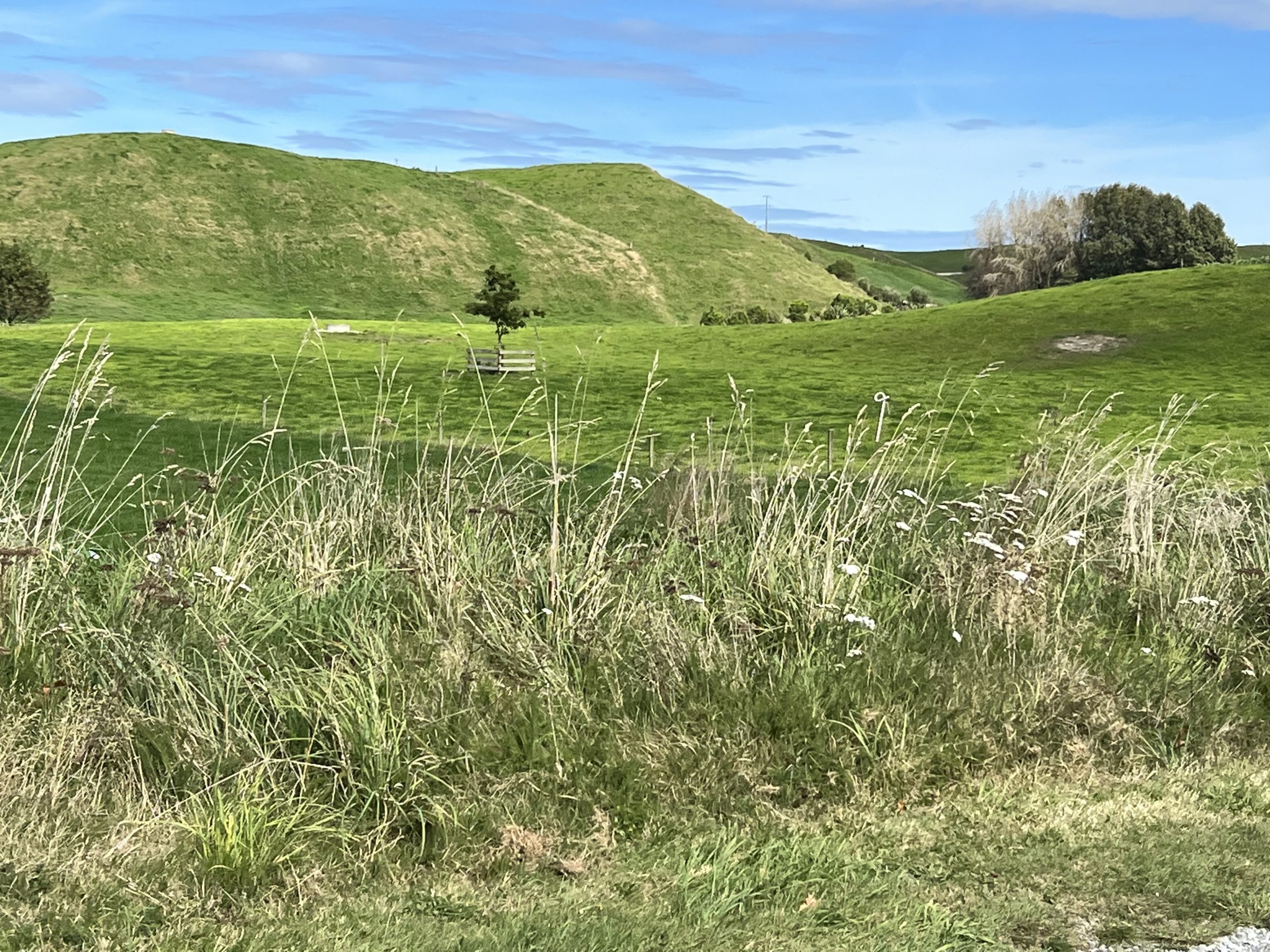
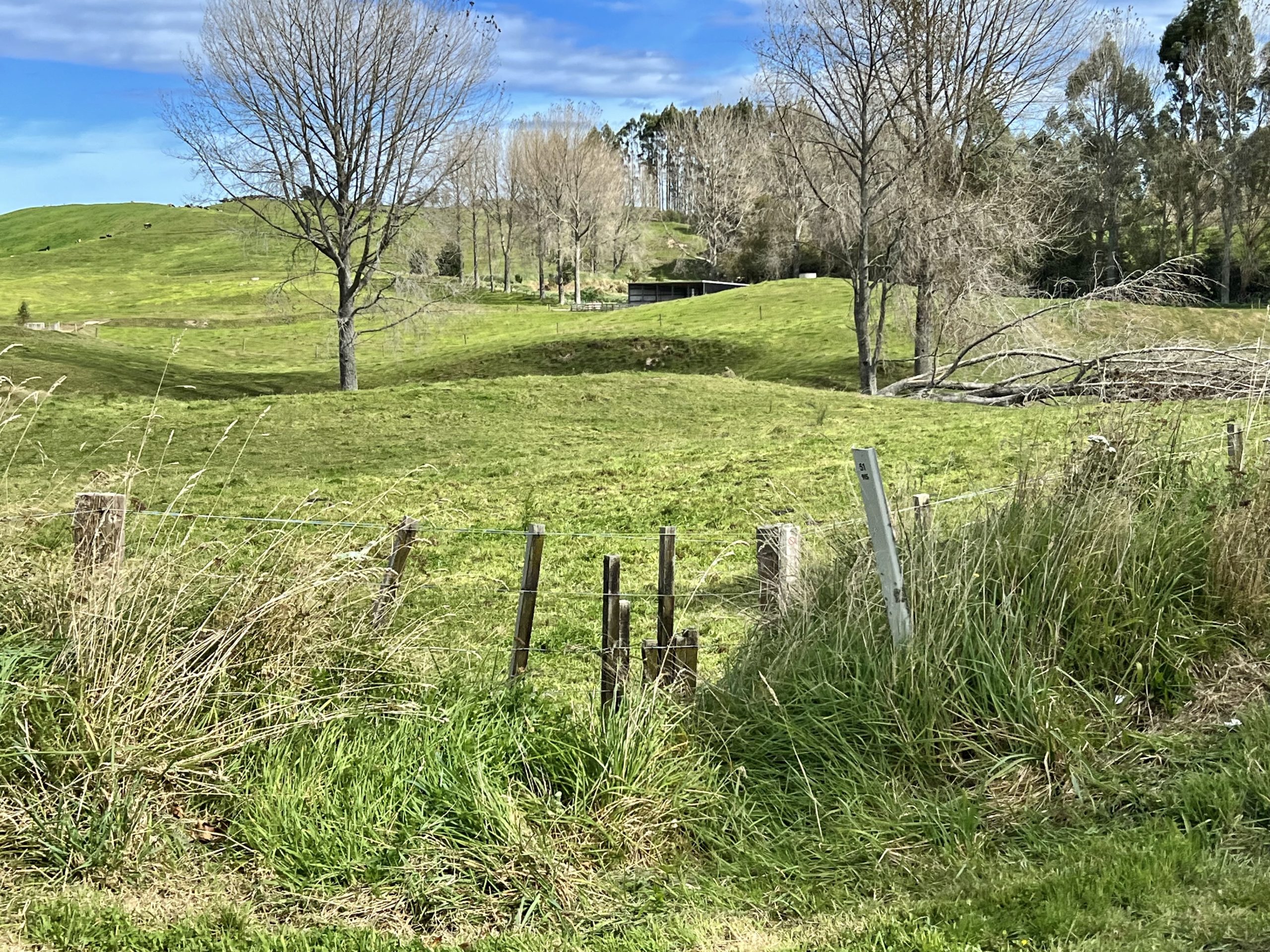
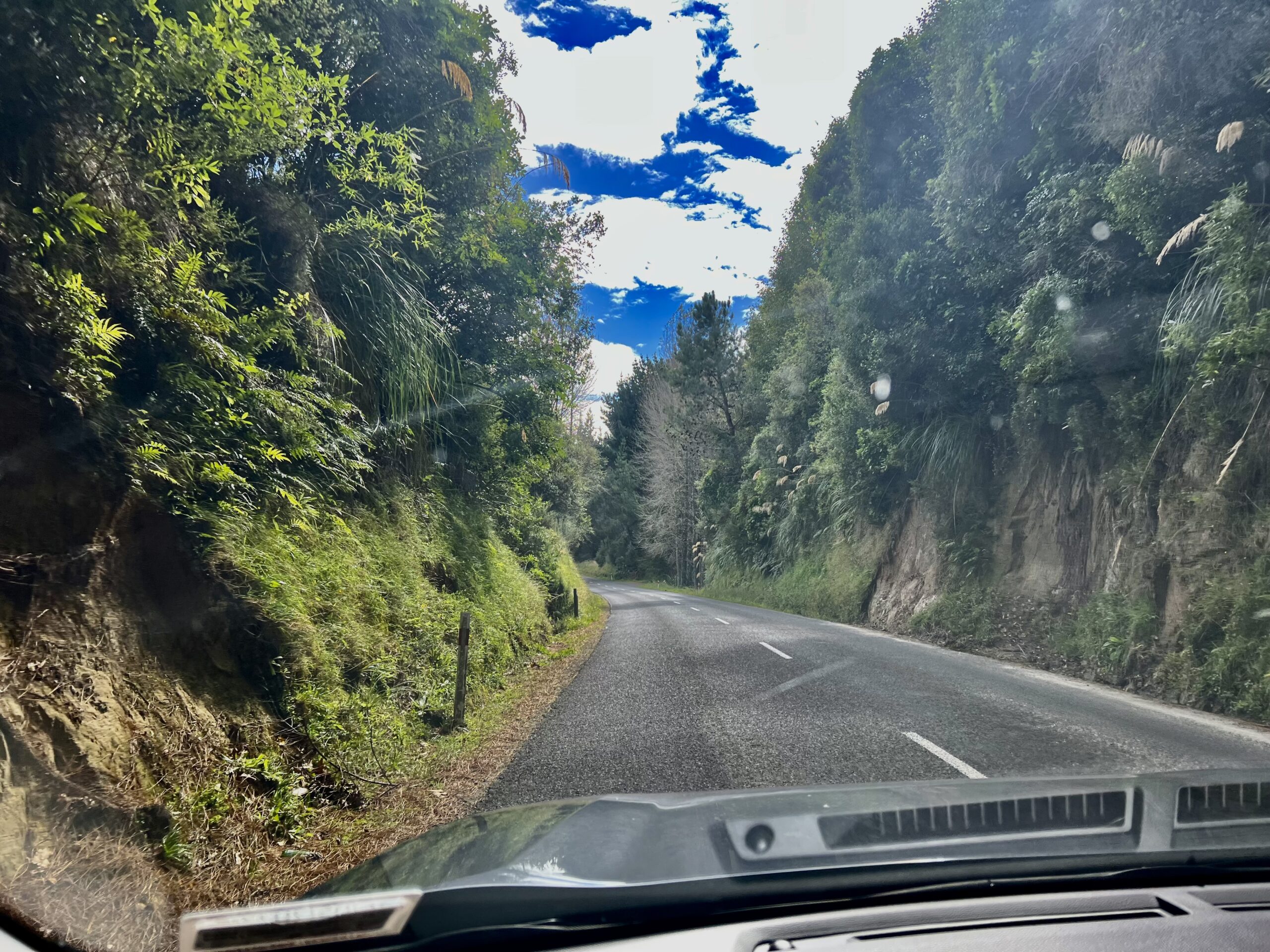
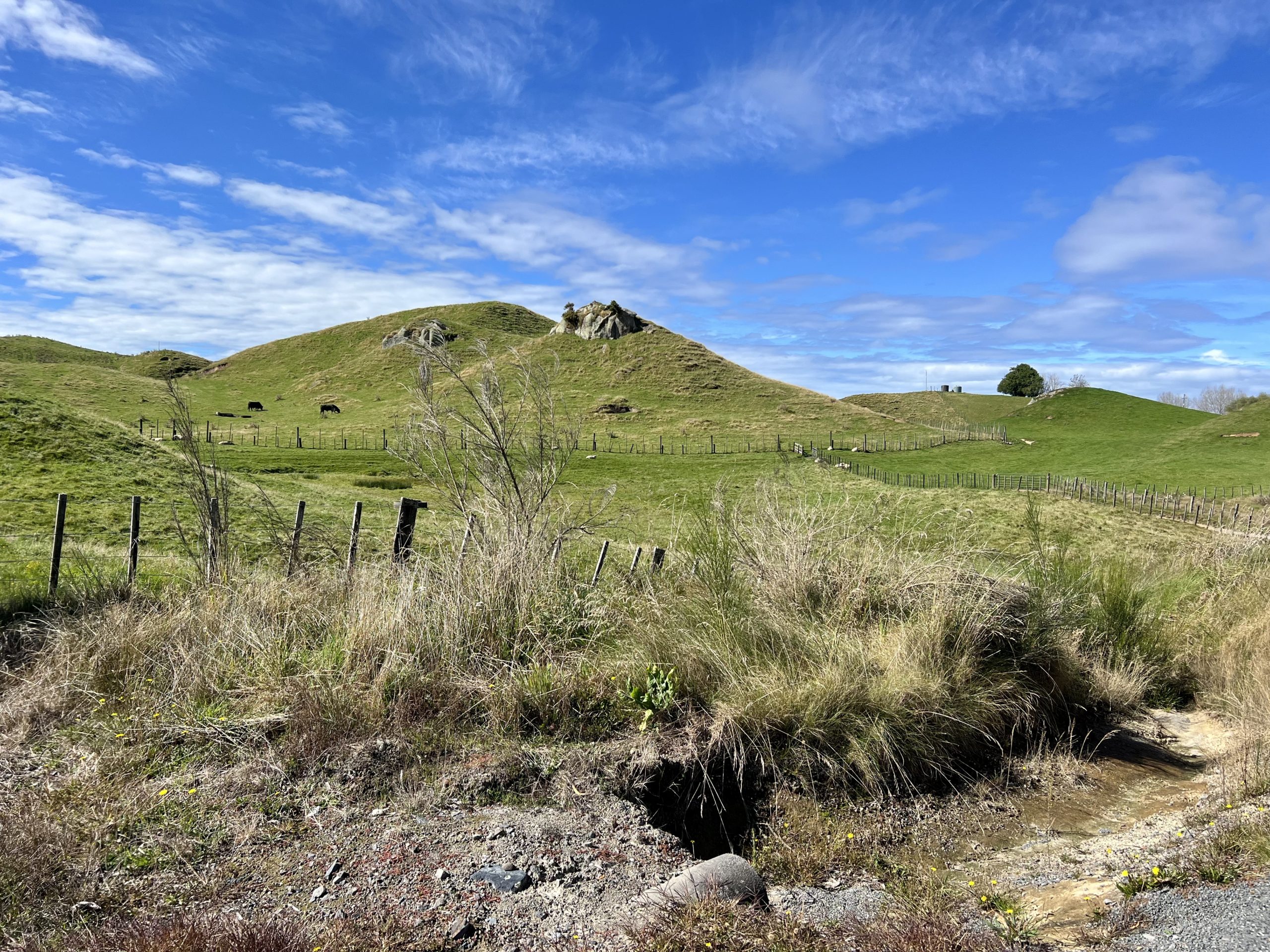
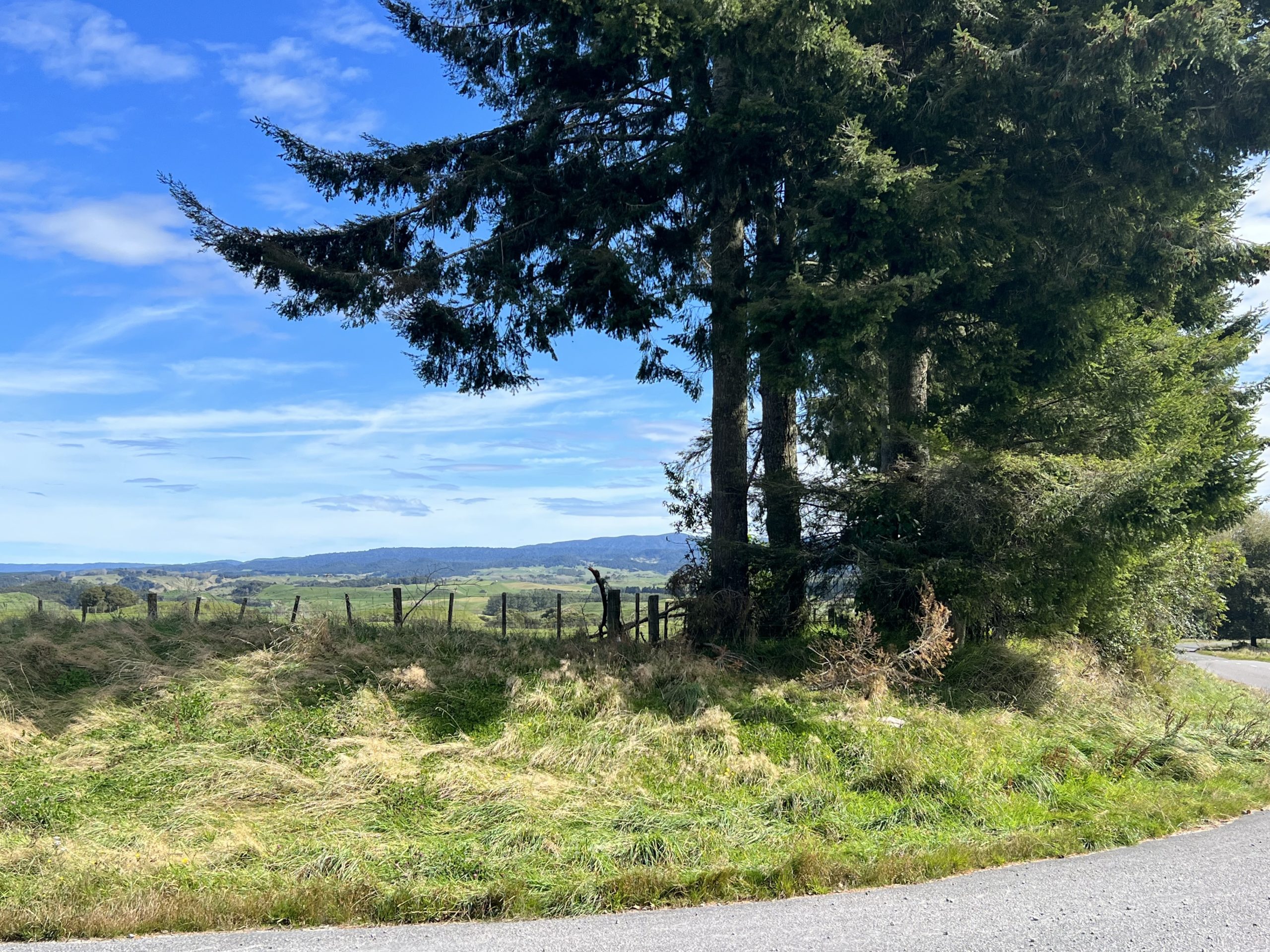
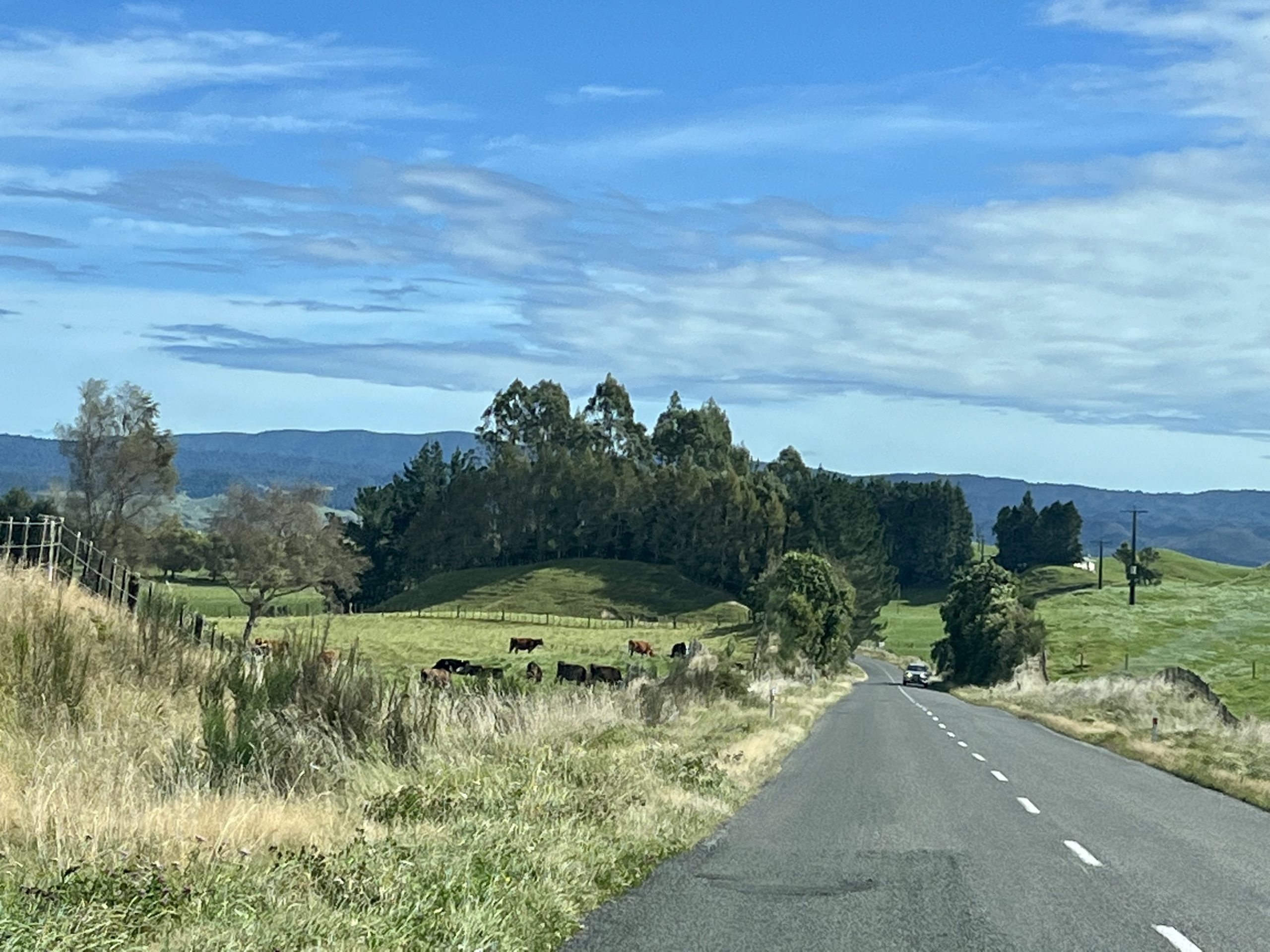
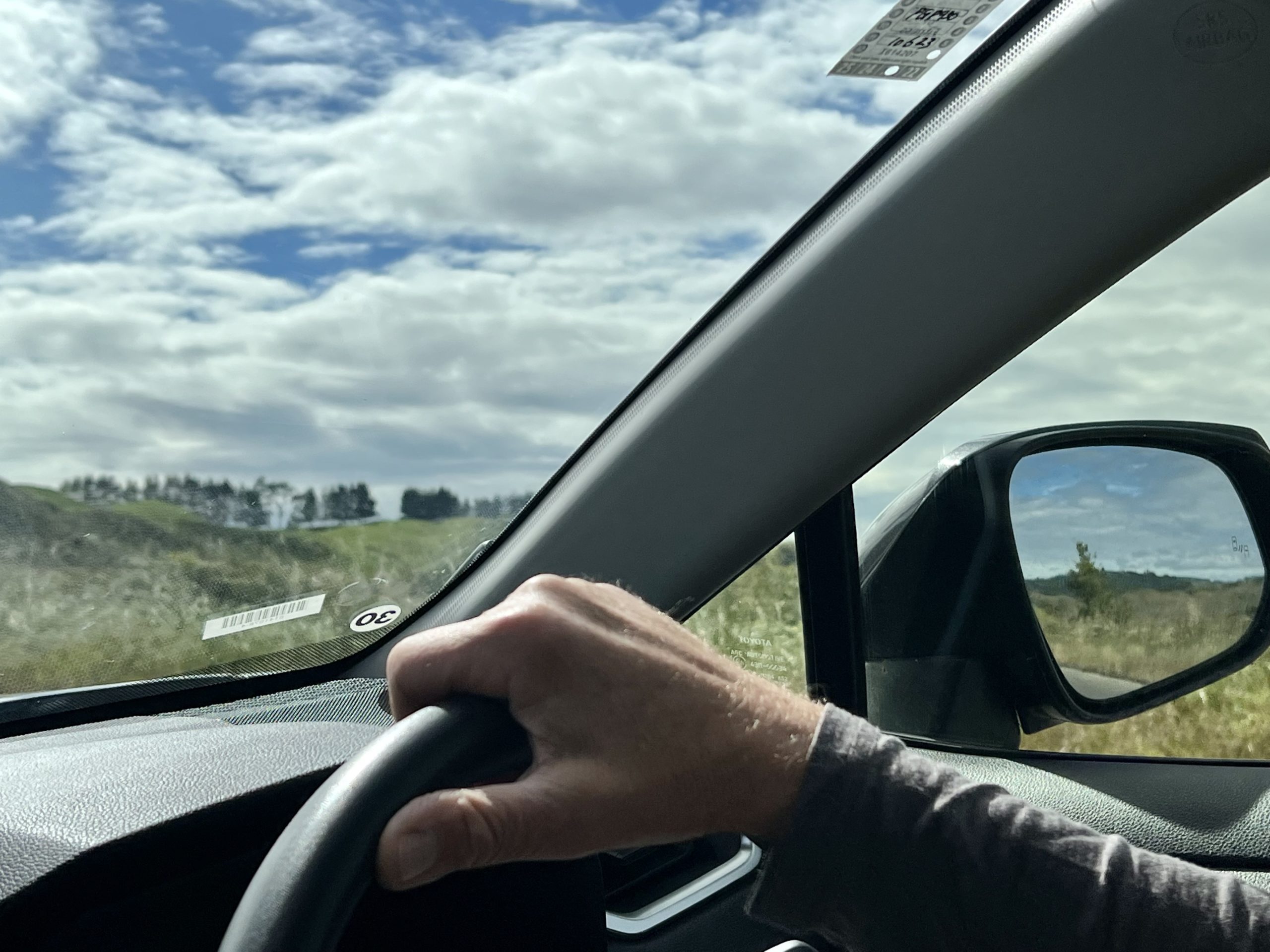
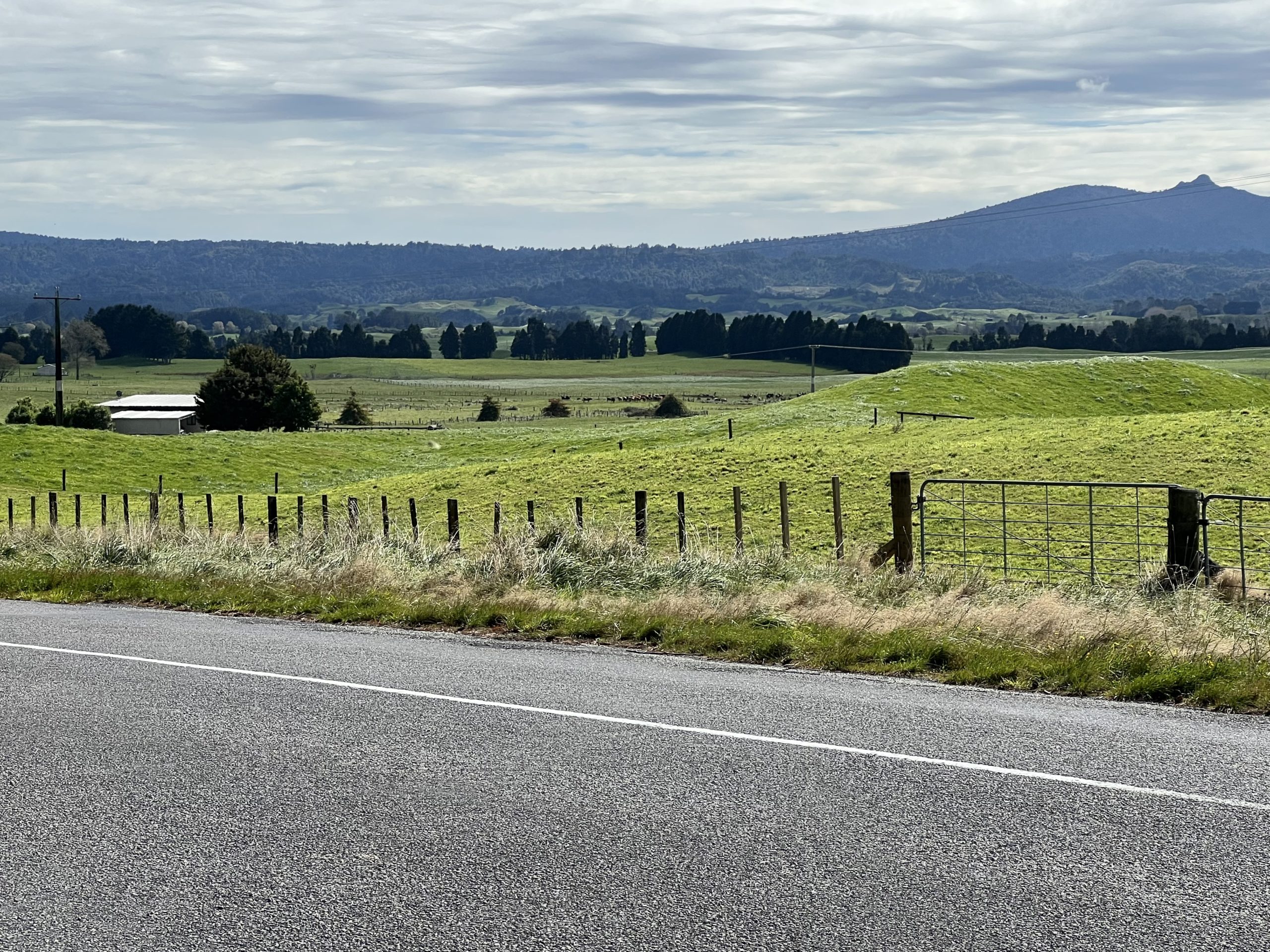
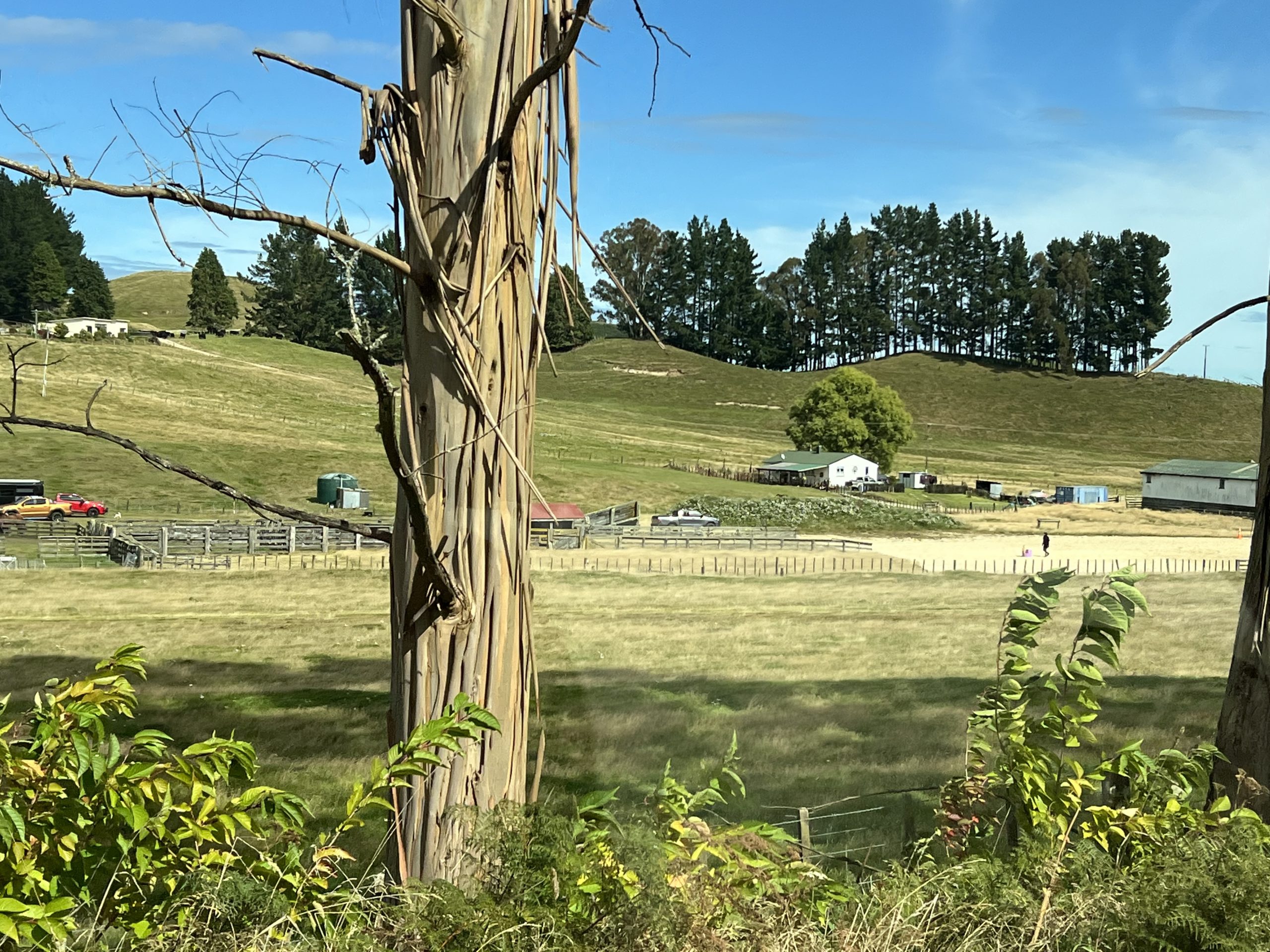
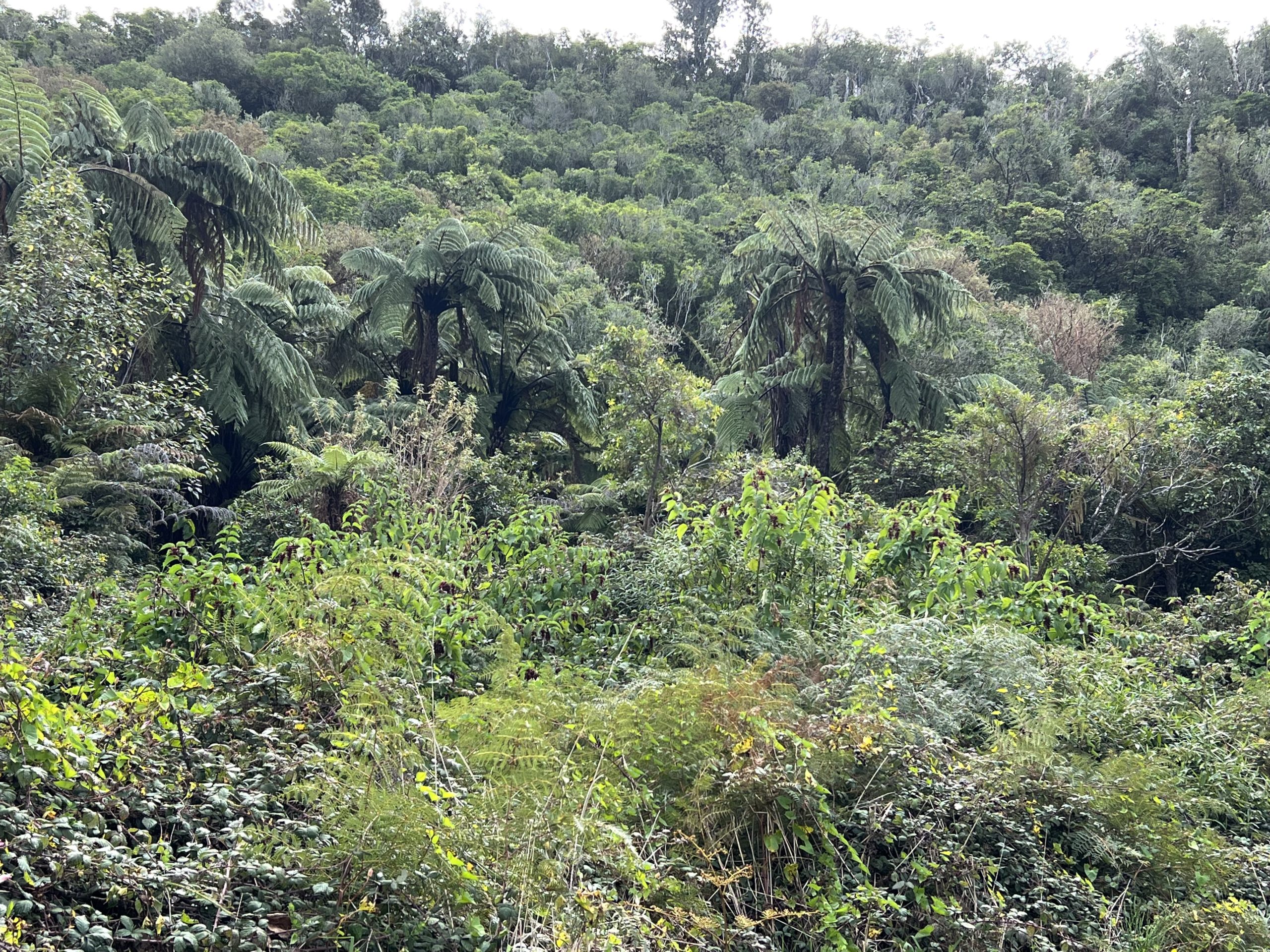
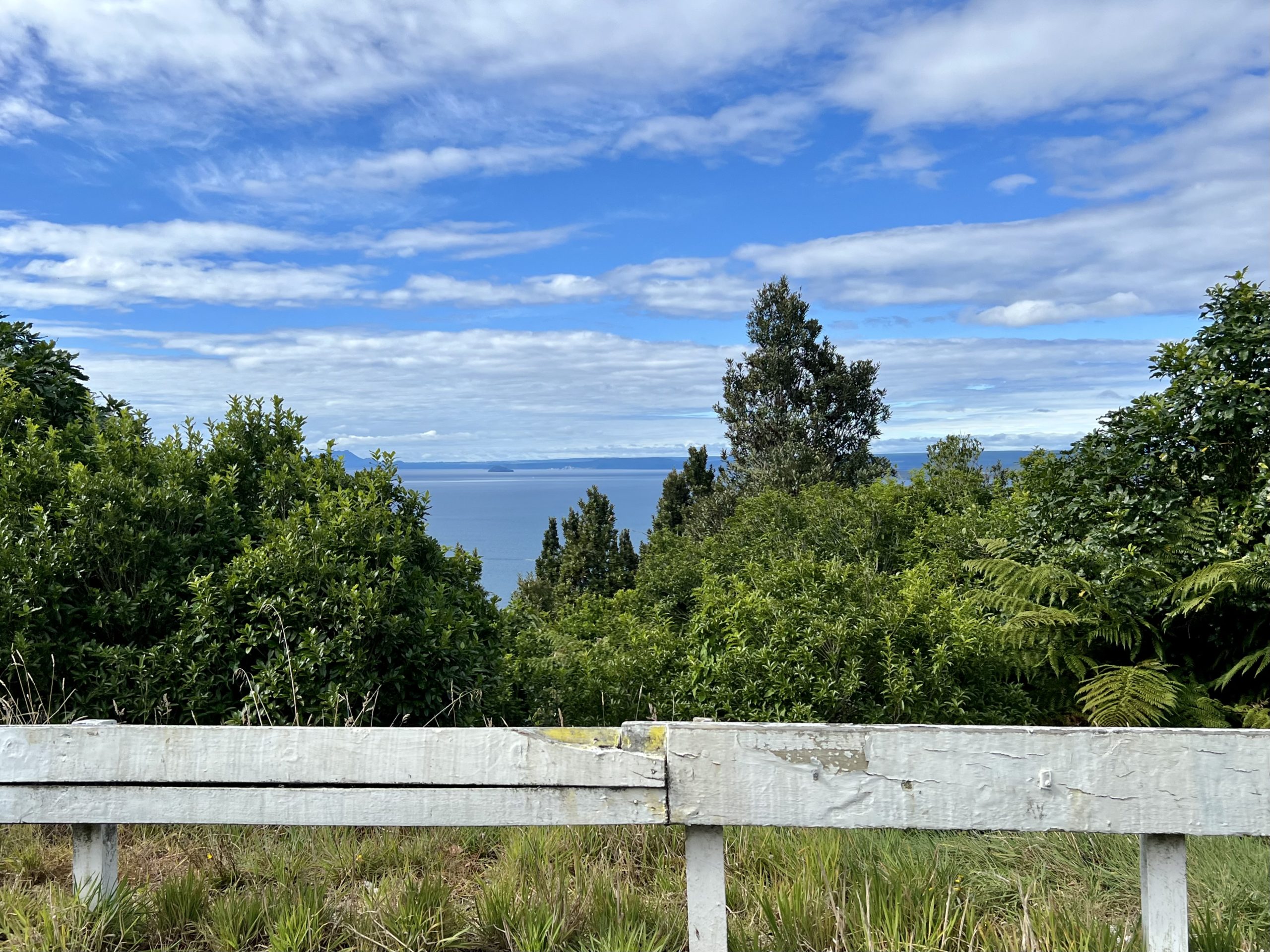
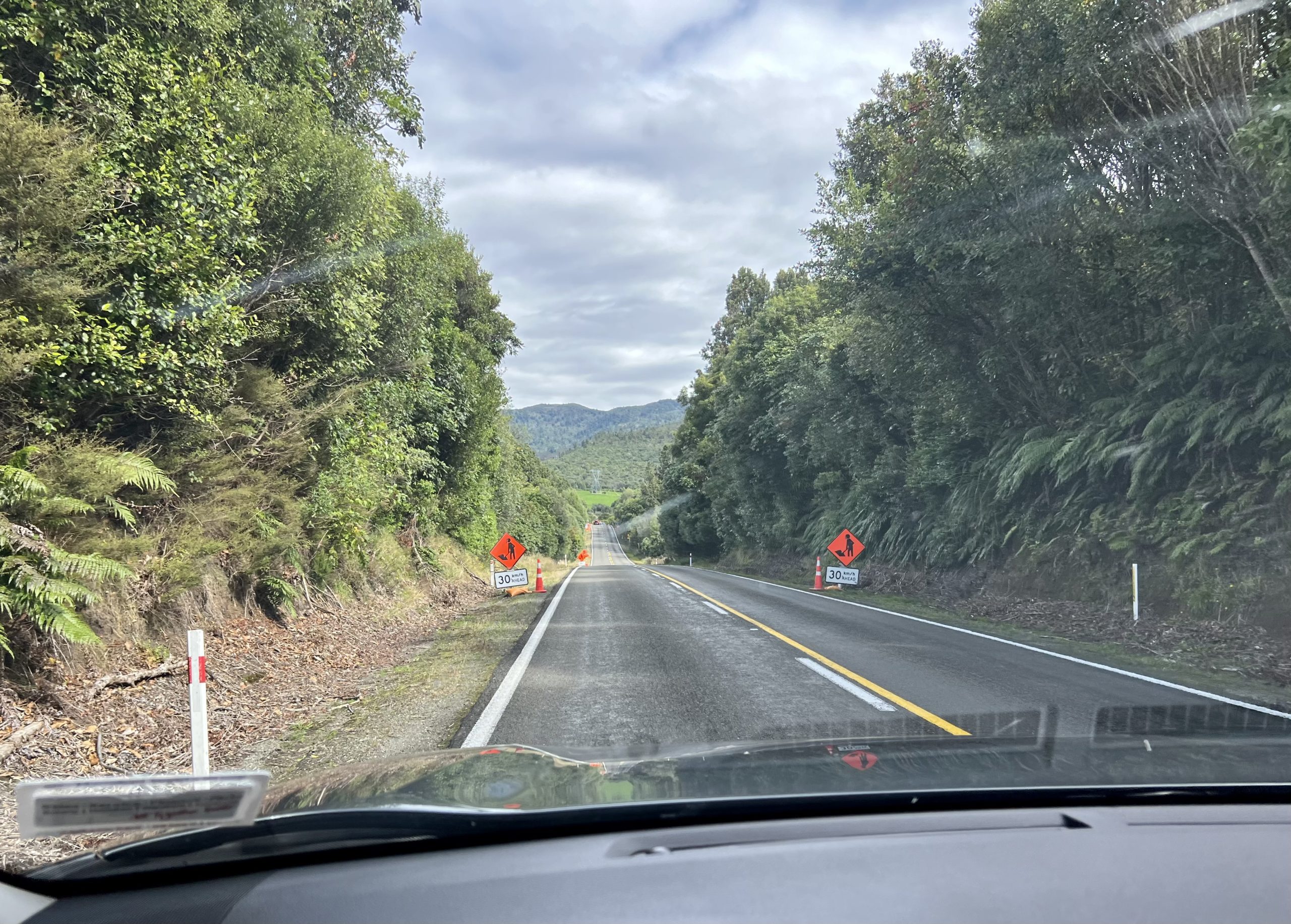
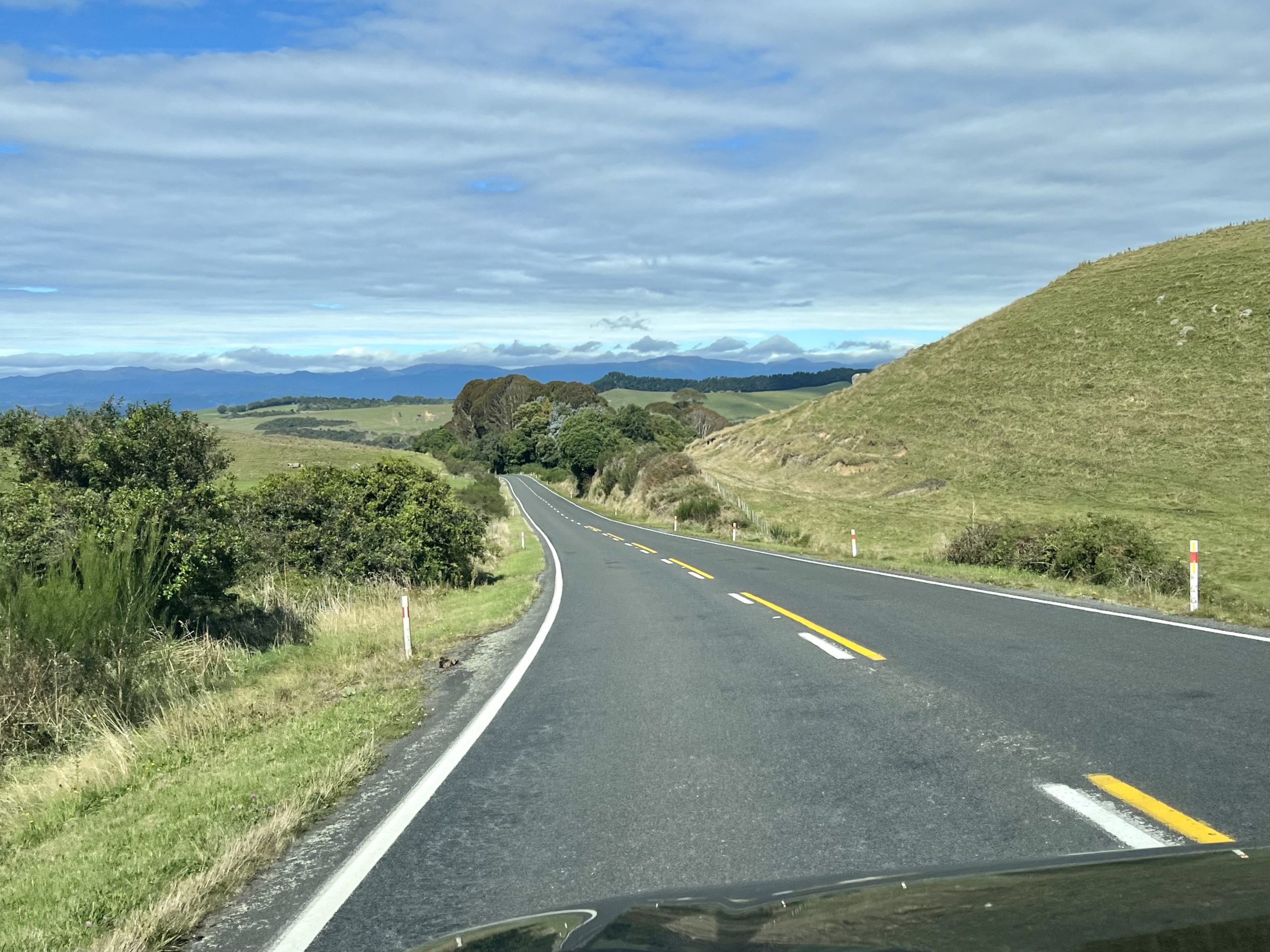
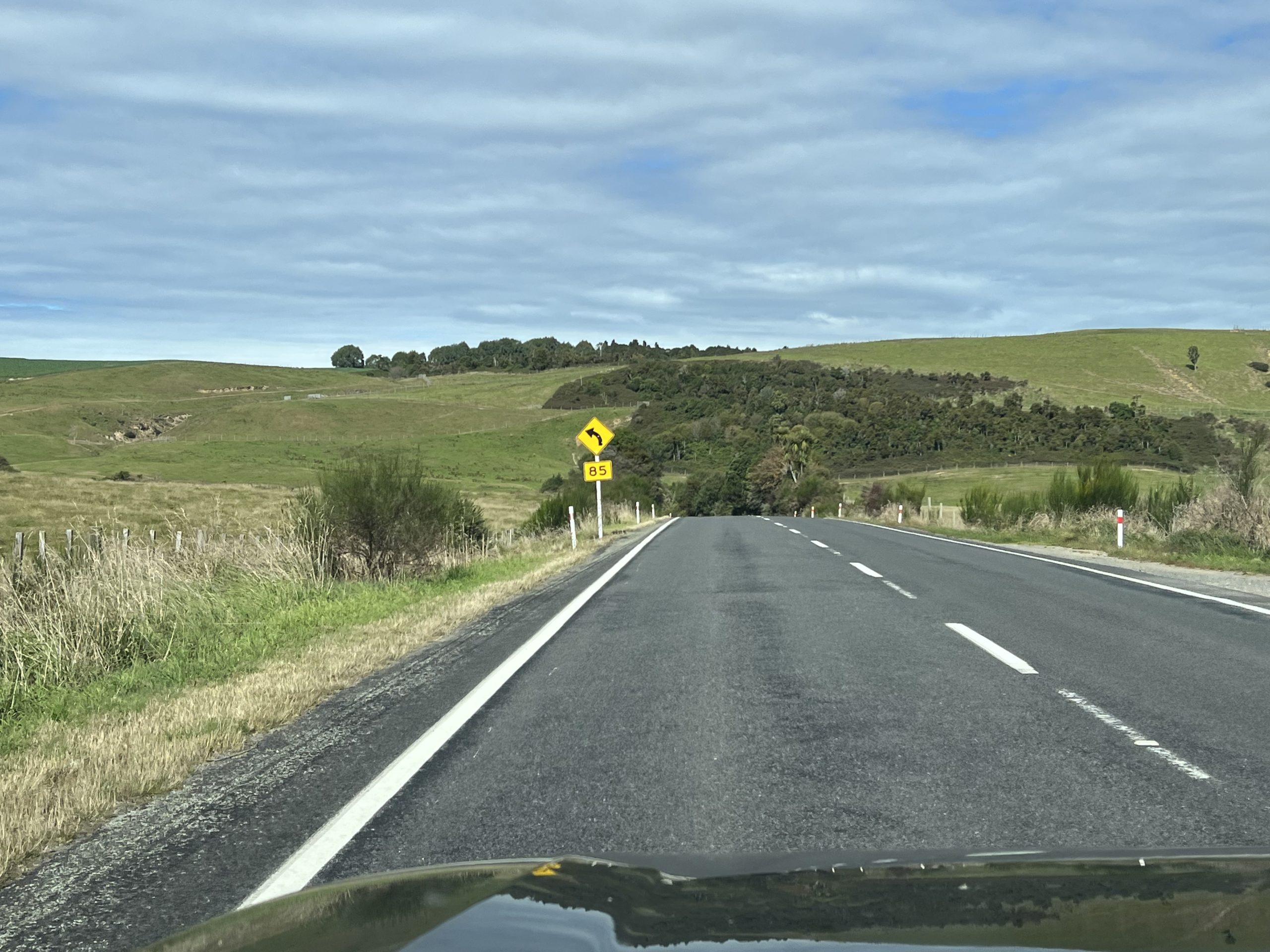
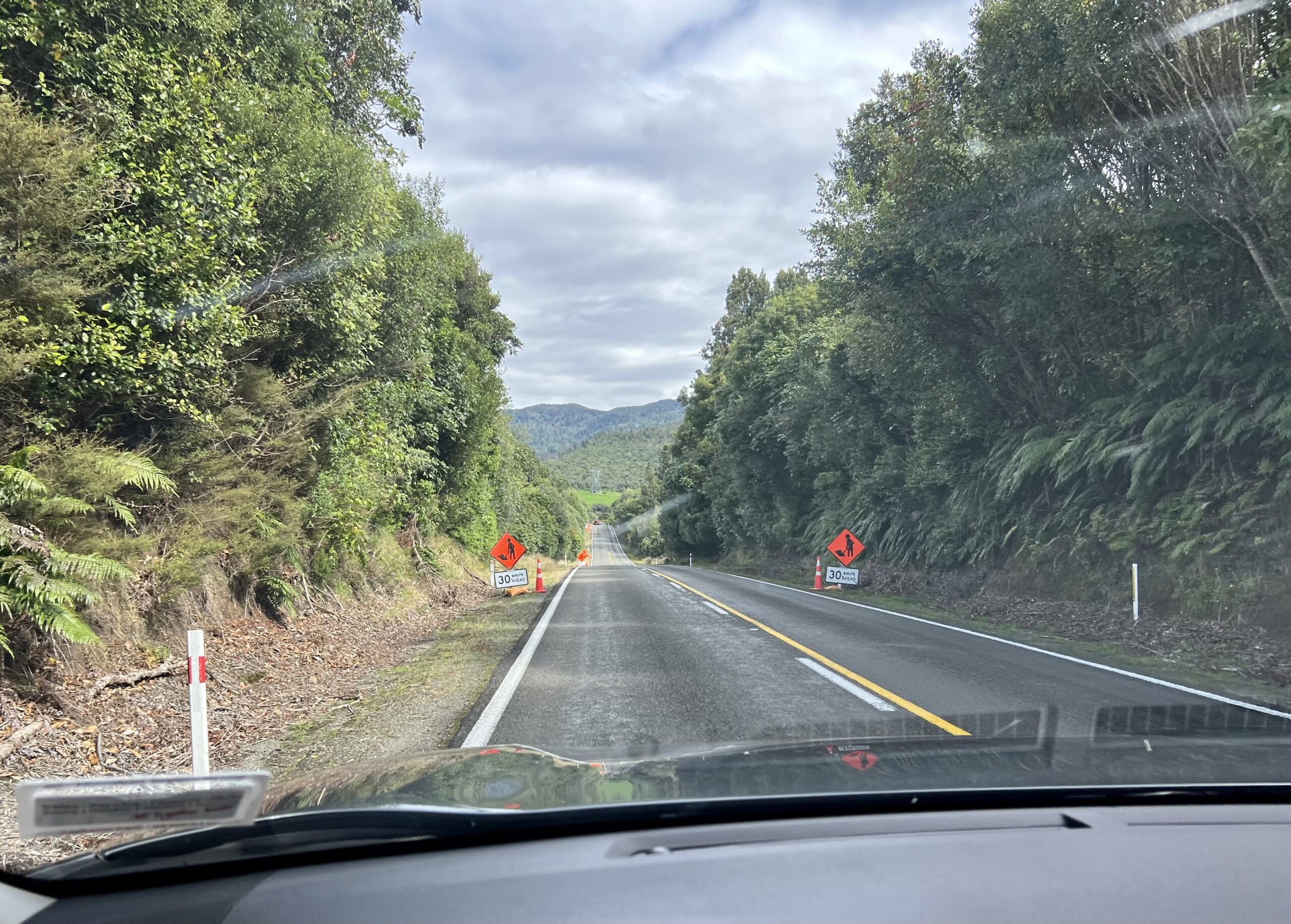
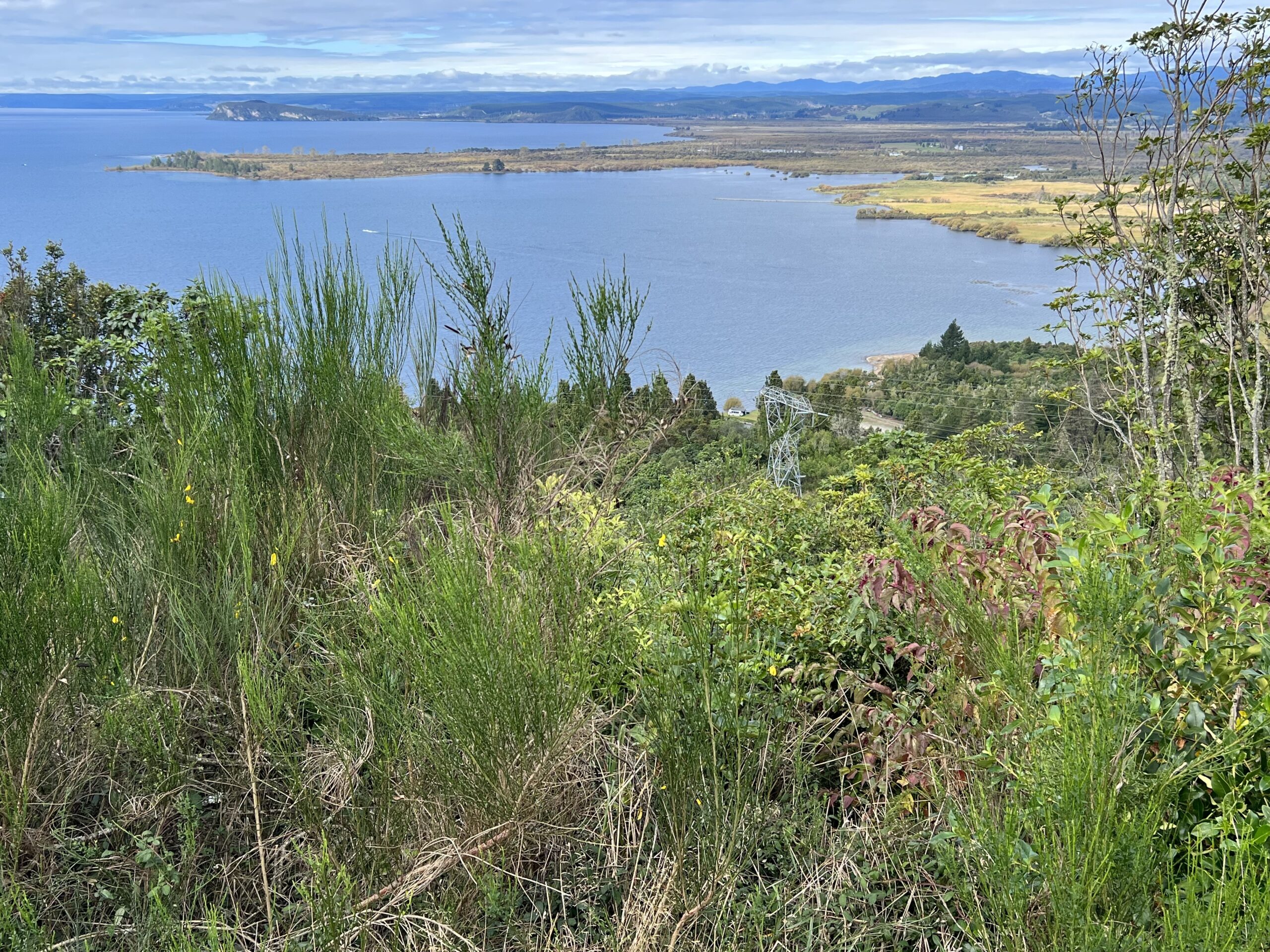
09 April 2023
Sunday Market
Definitely home crafts. Very nice. Very Kiwi.
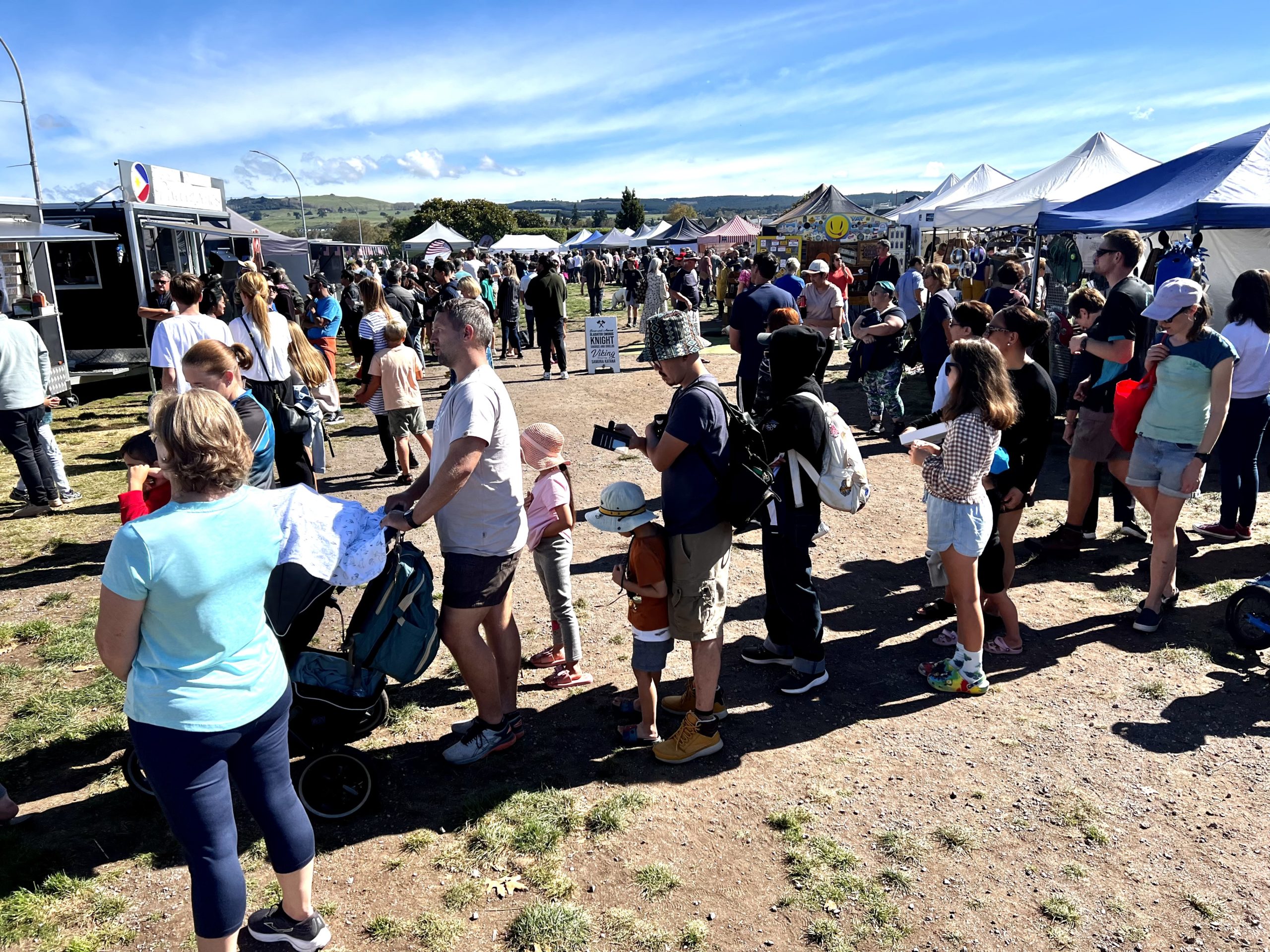
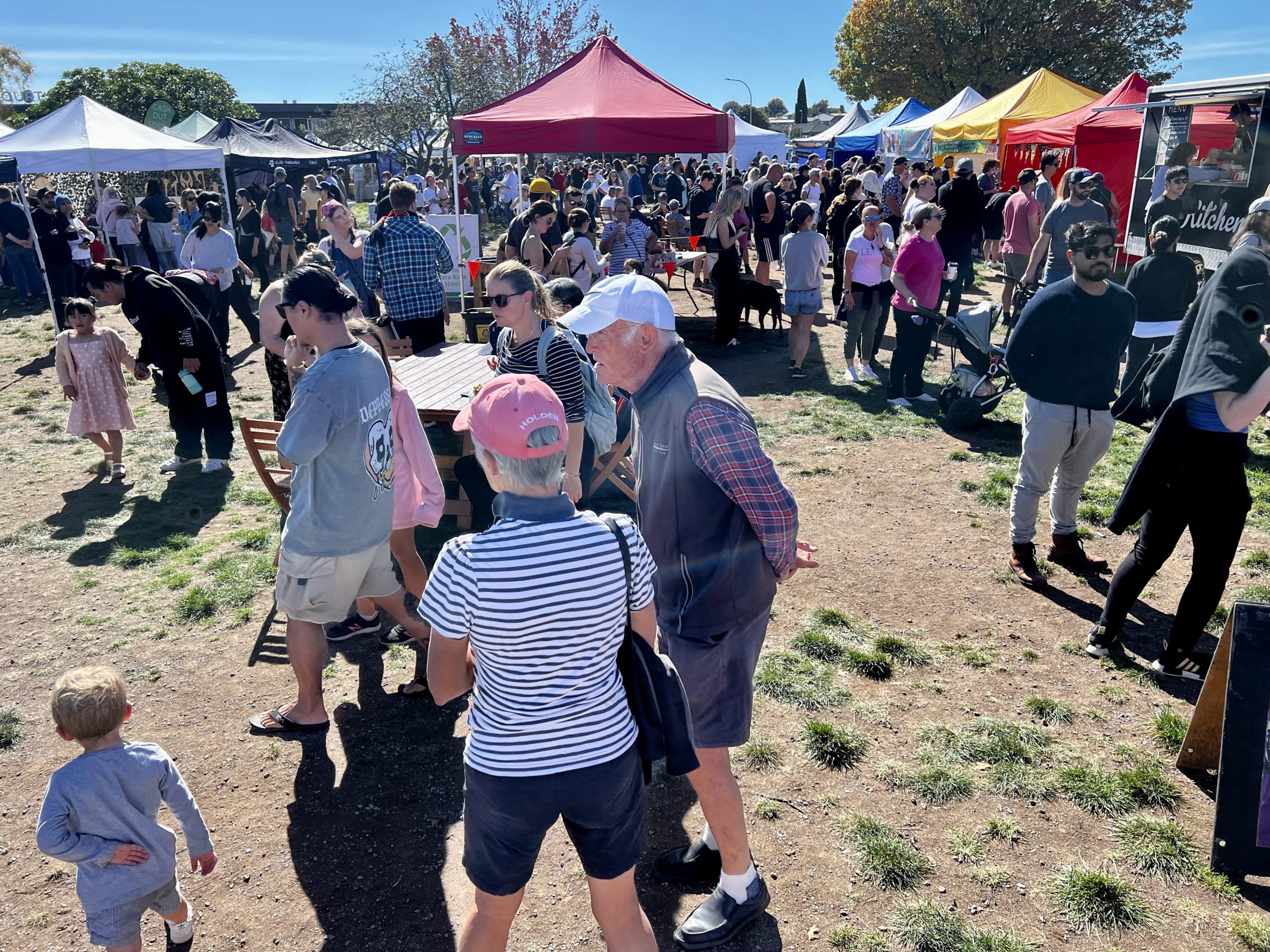
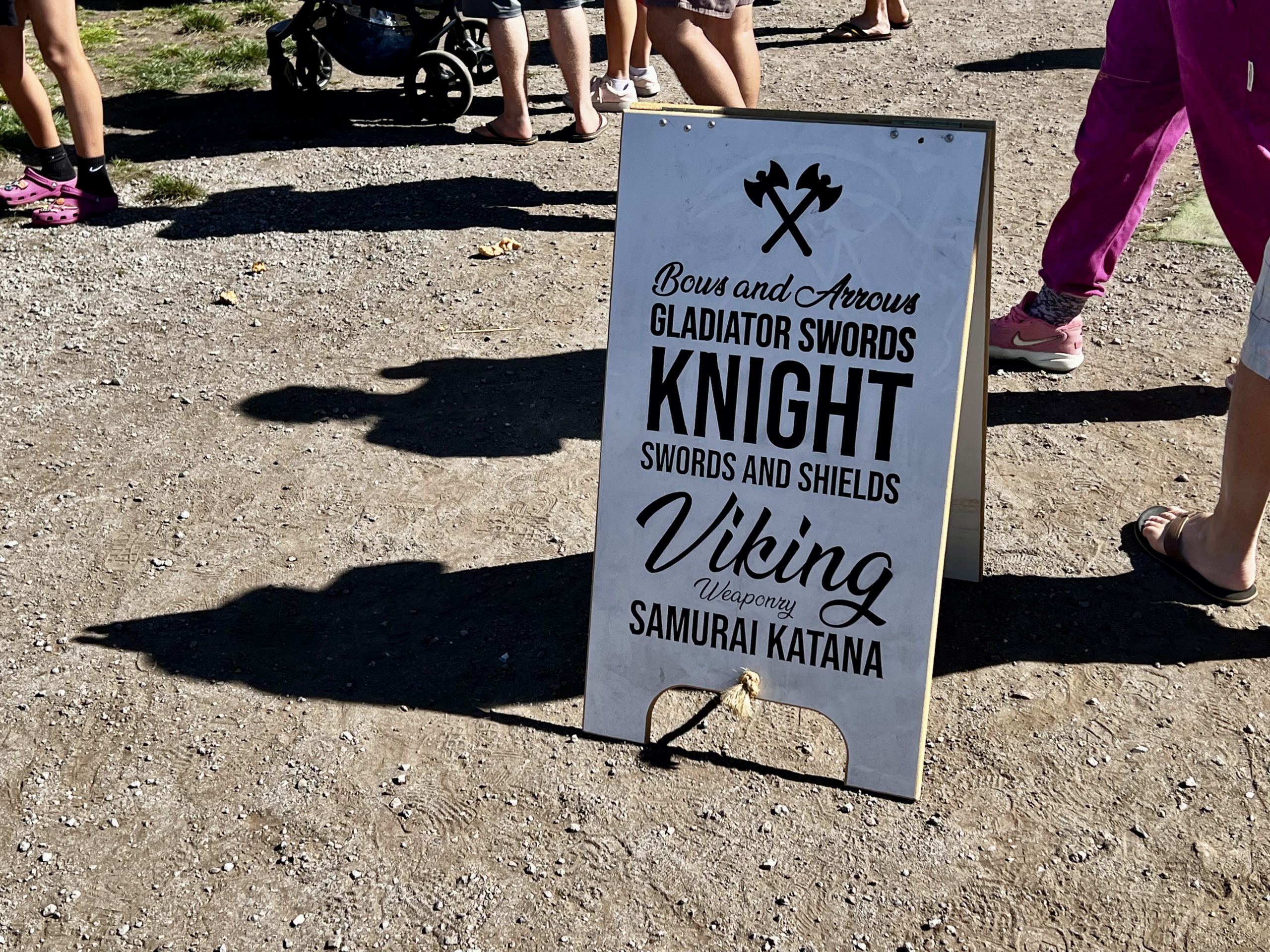
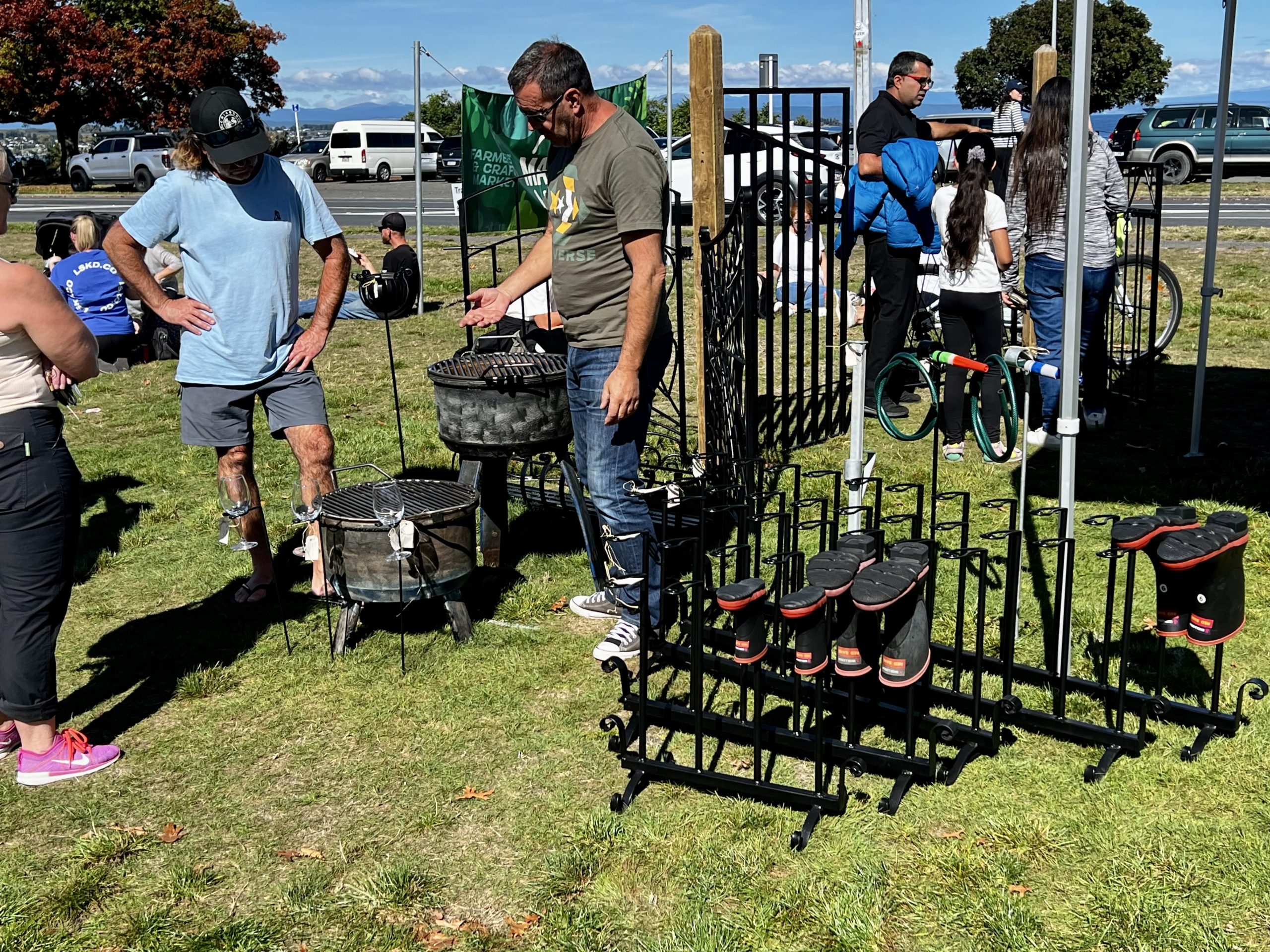
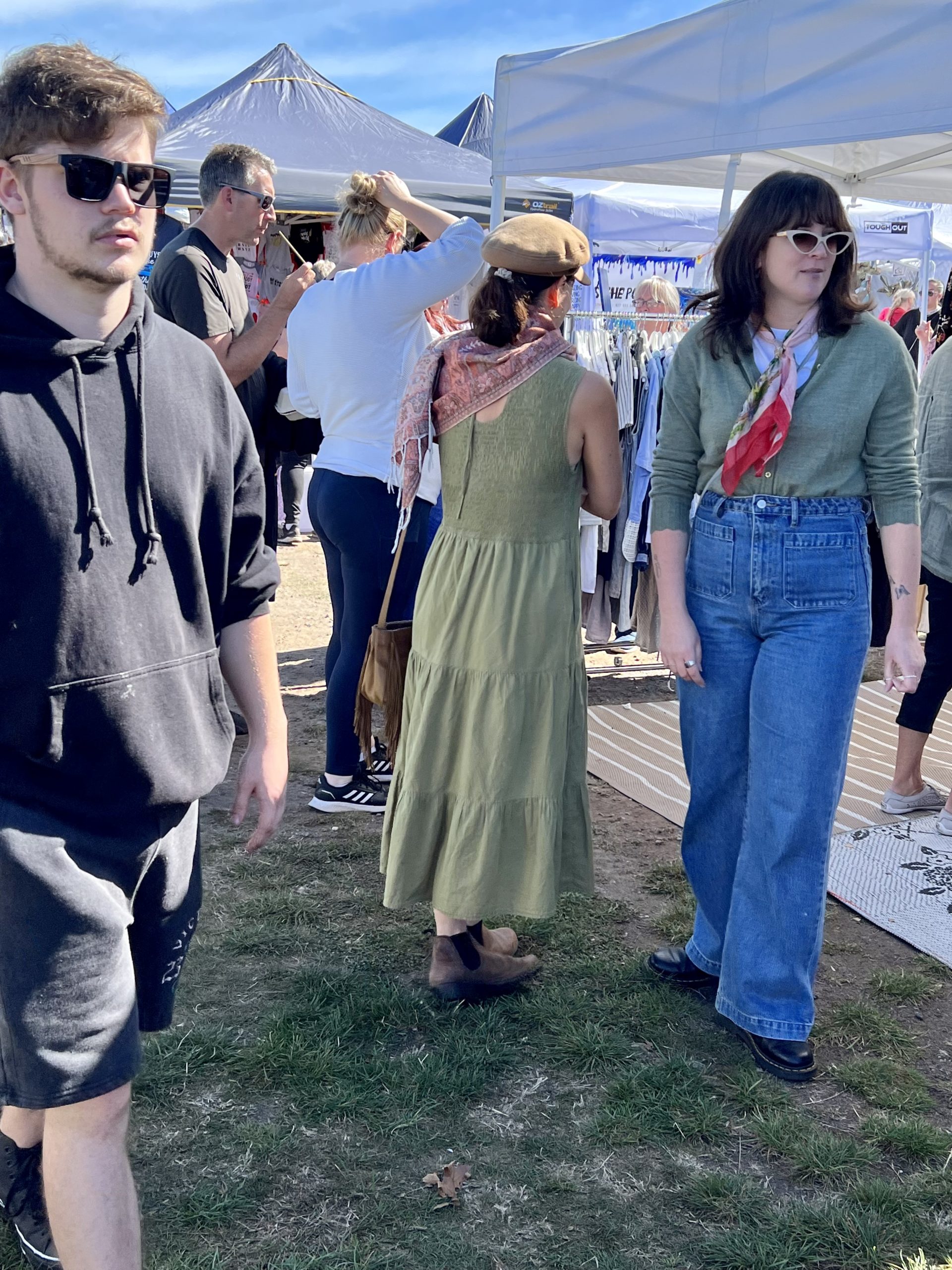
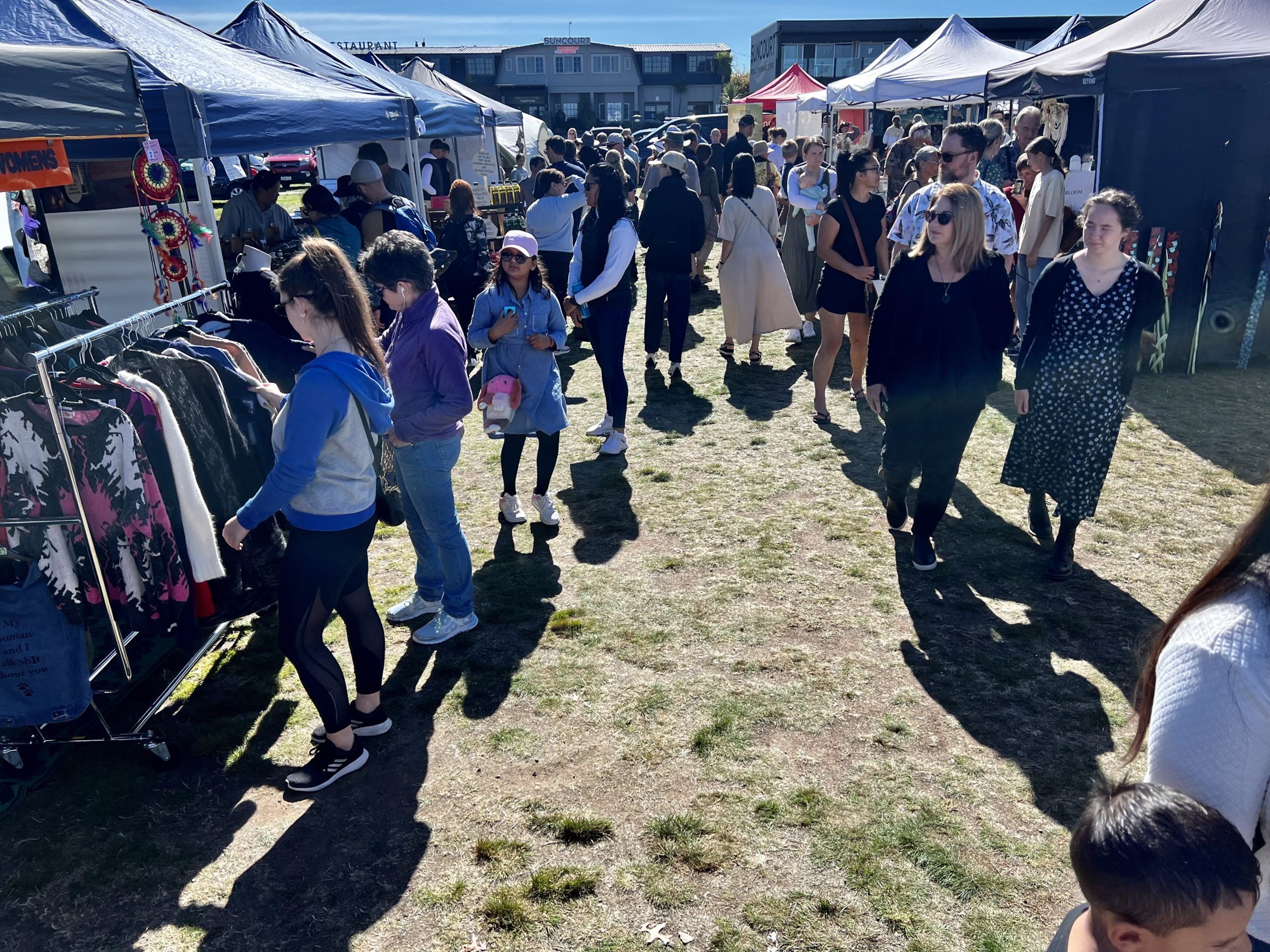
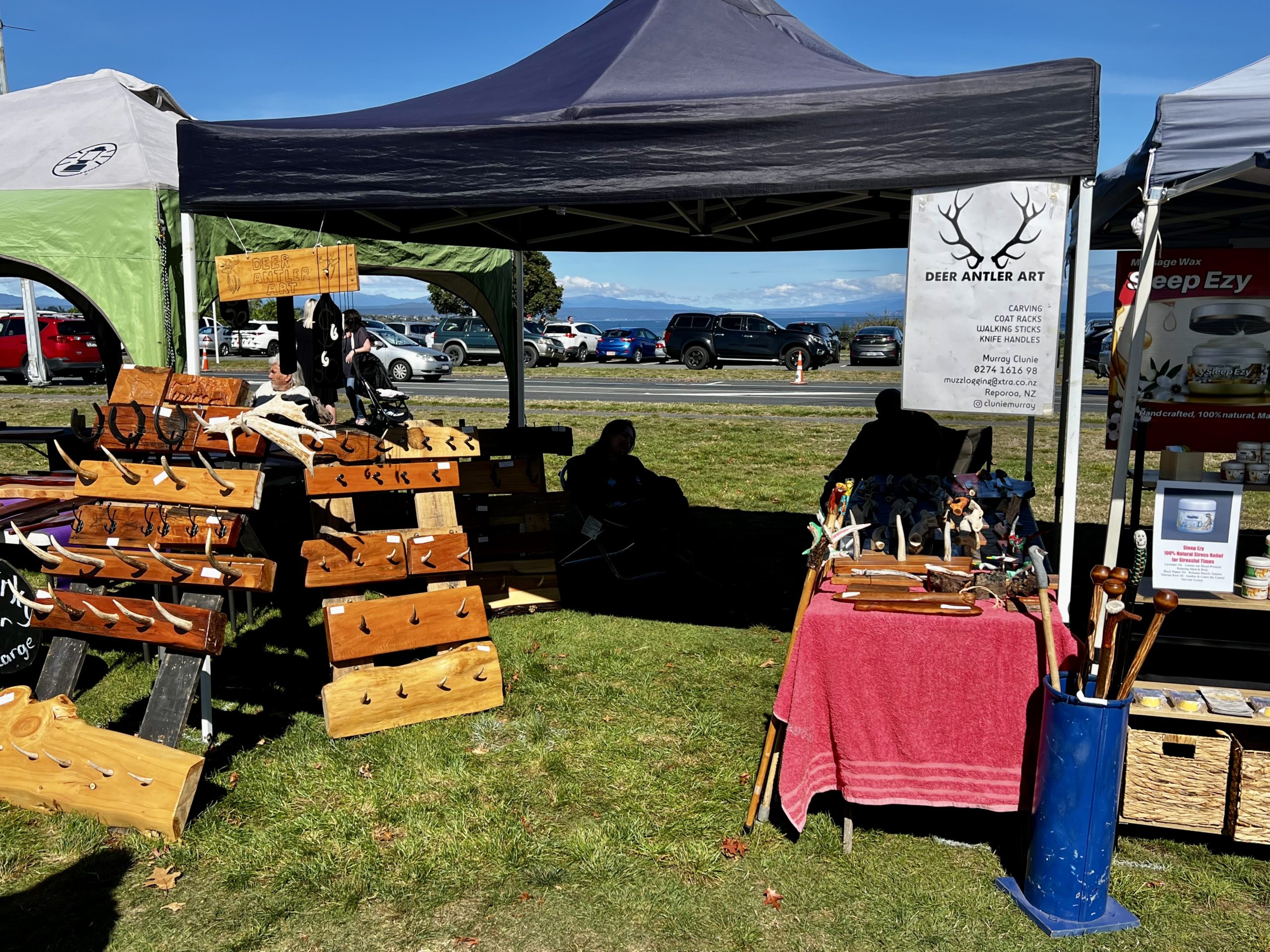
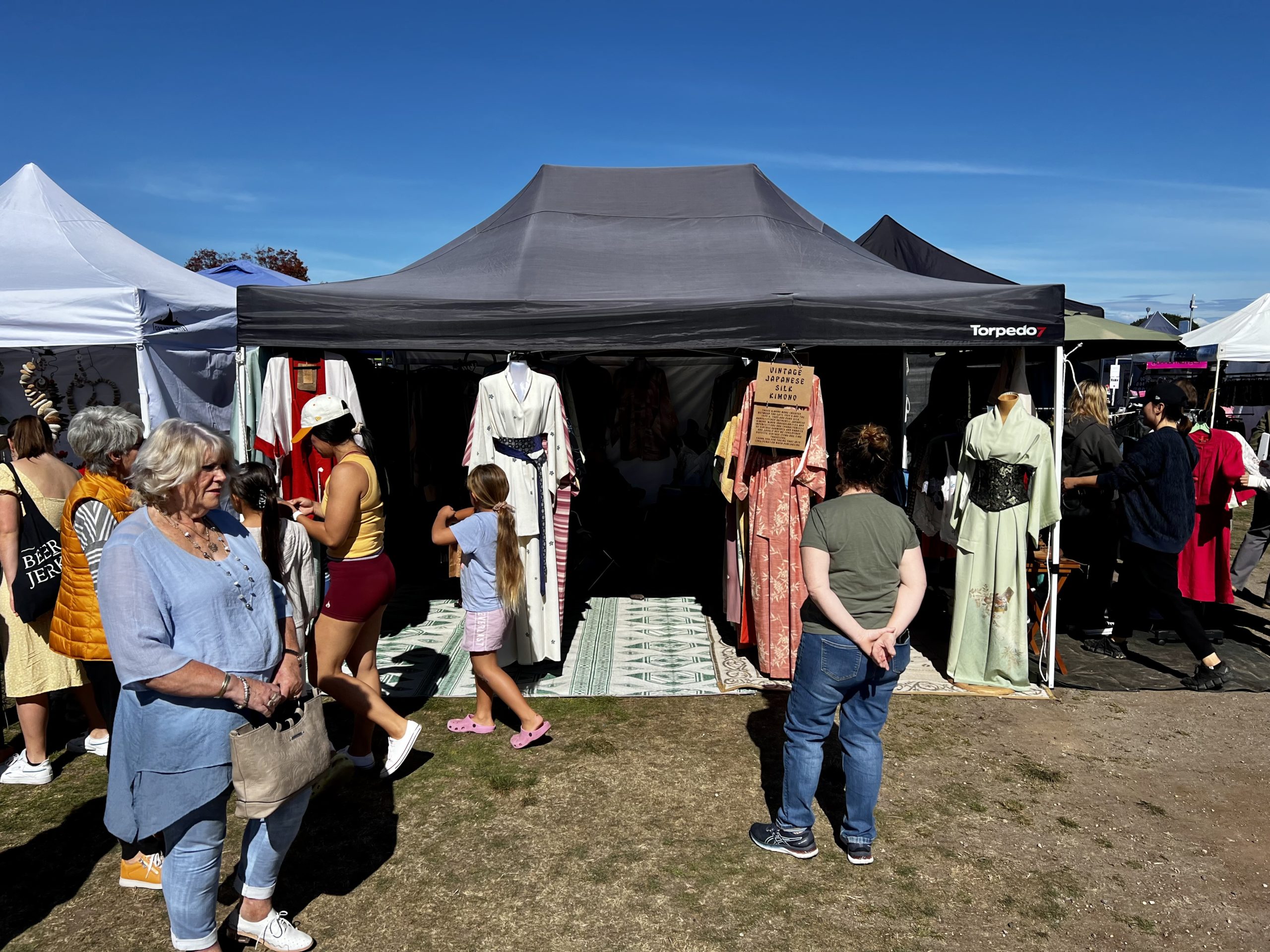
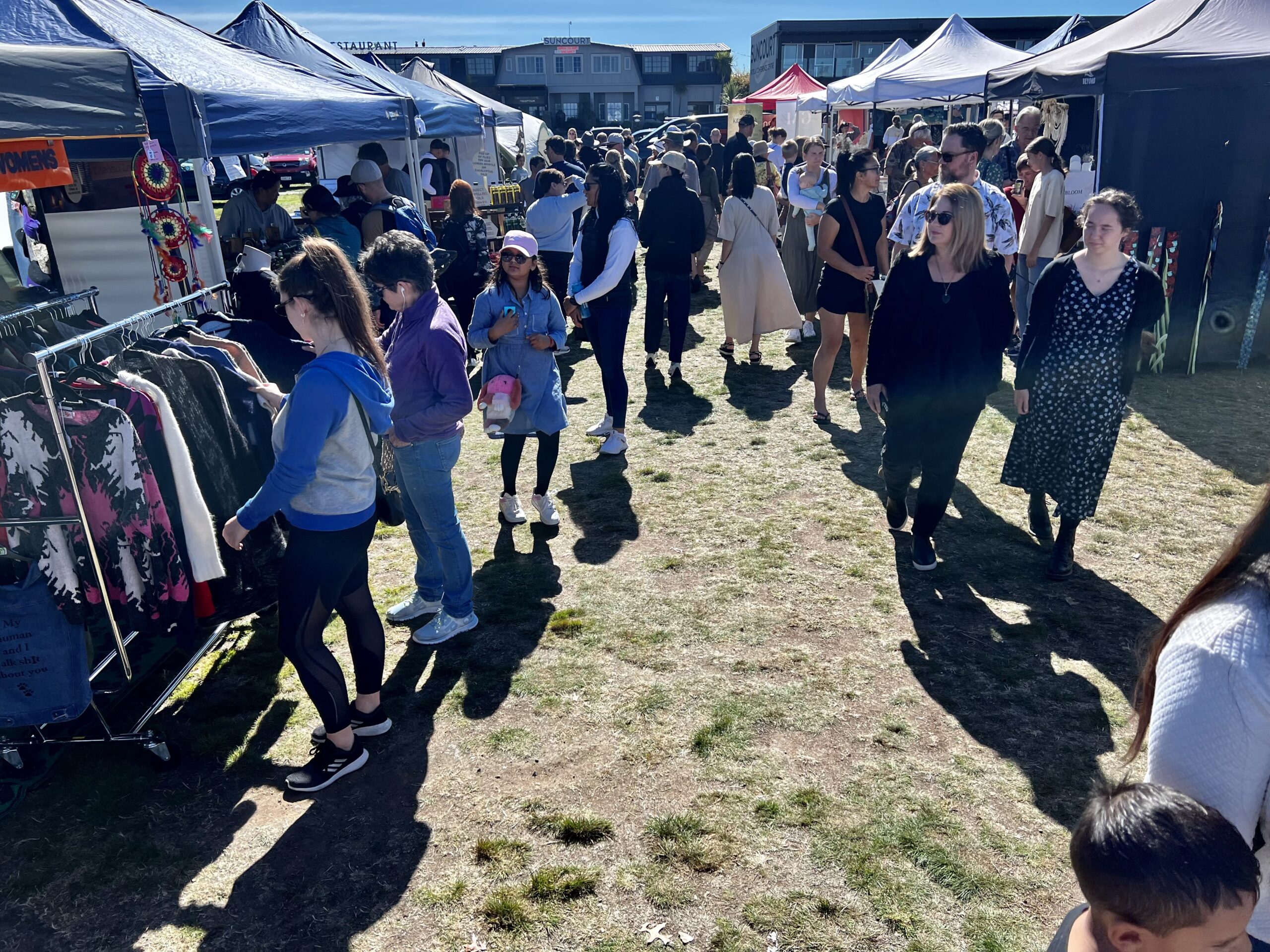
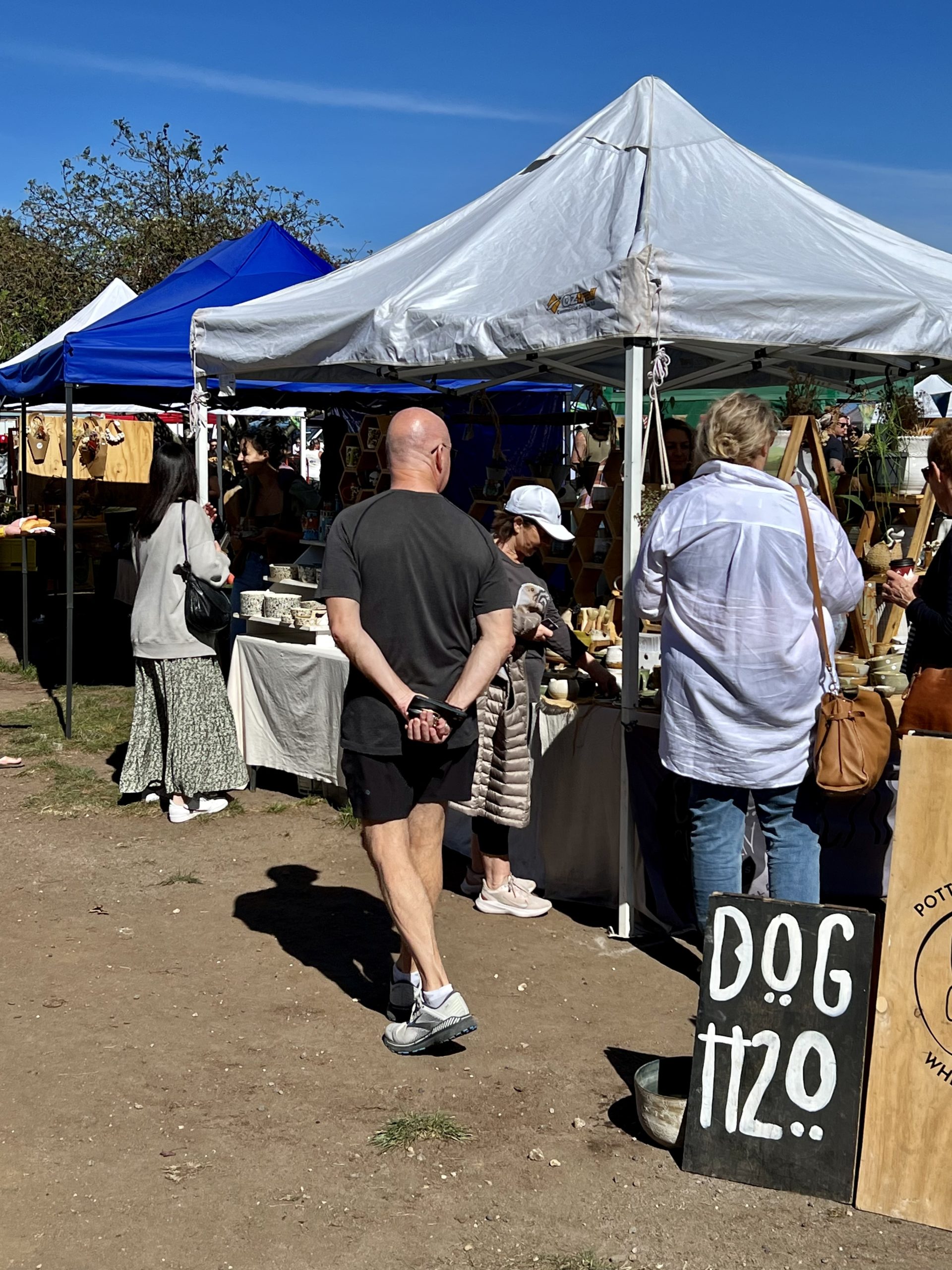
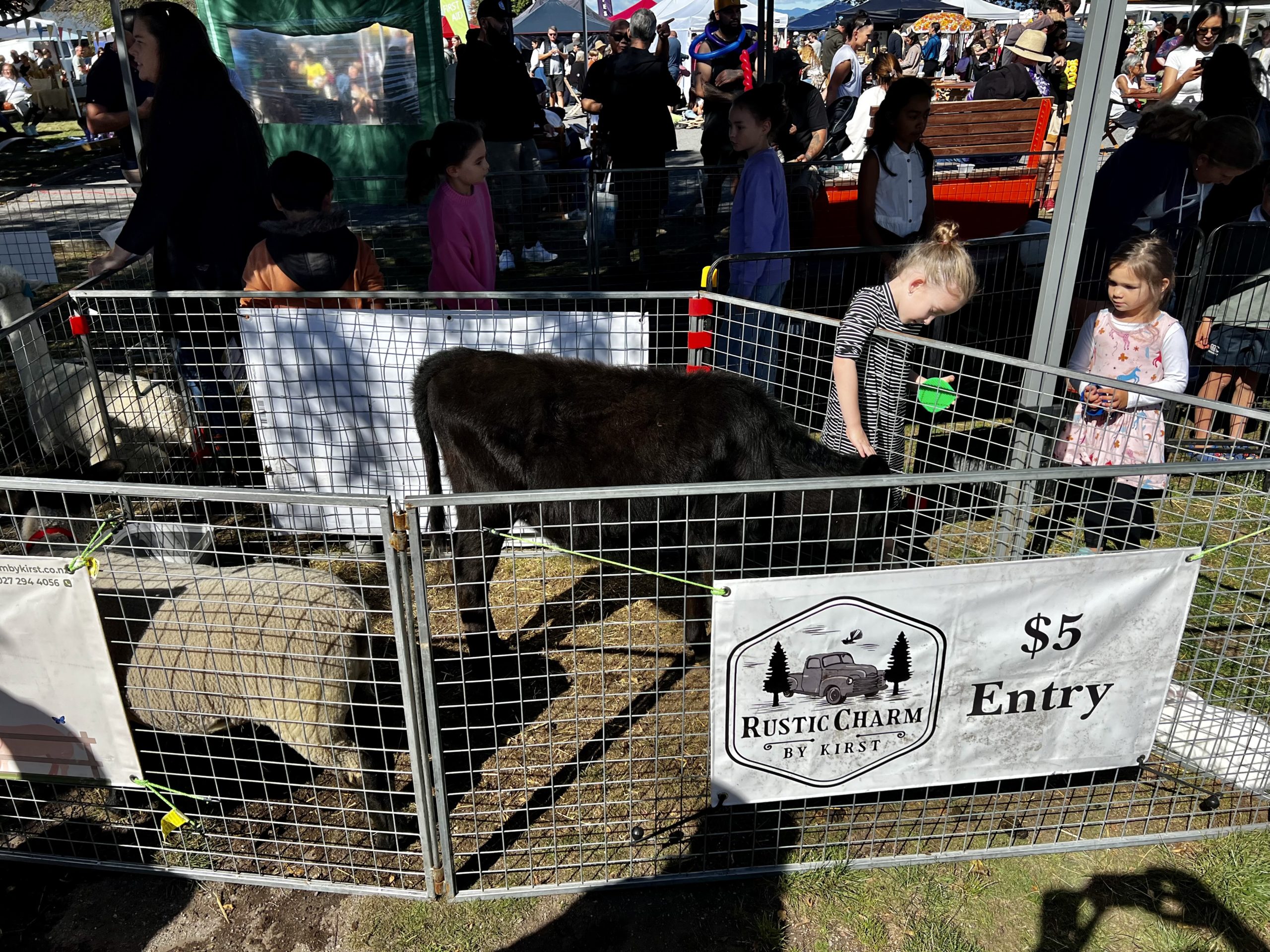
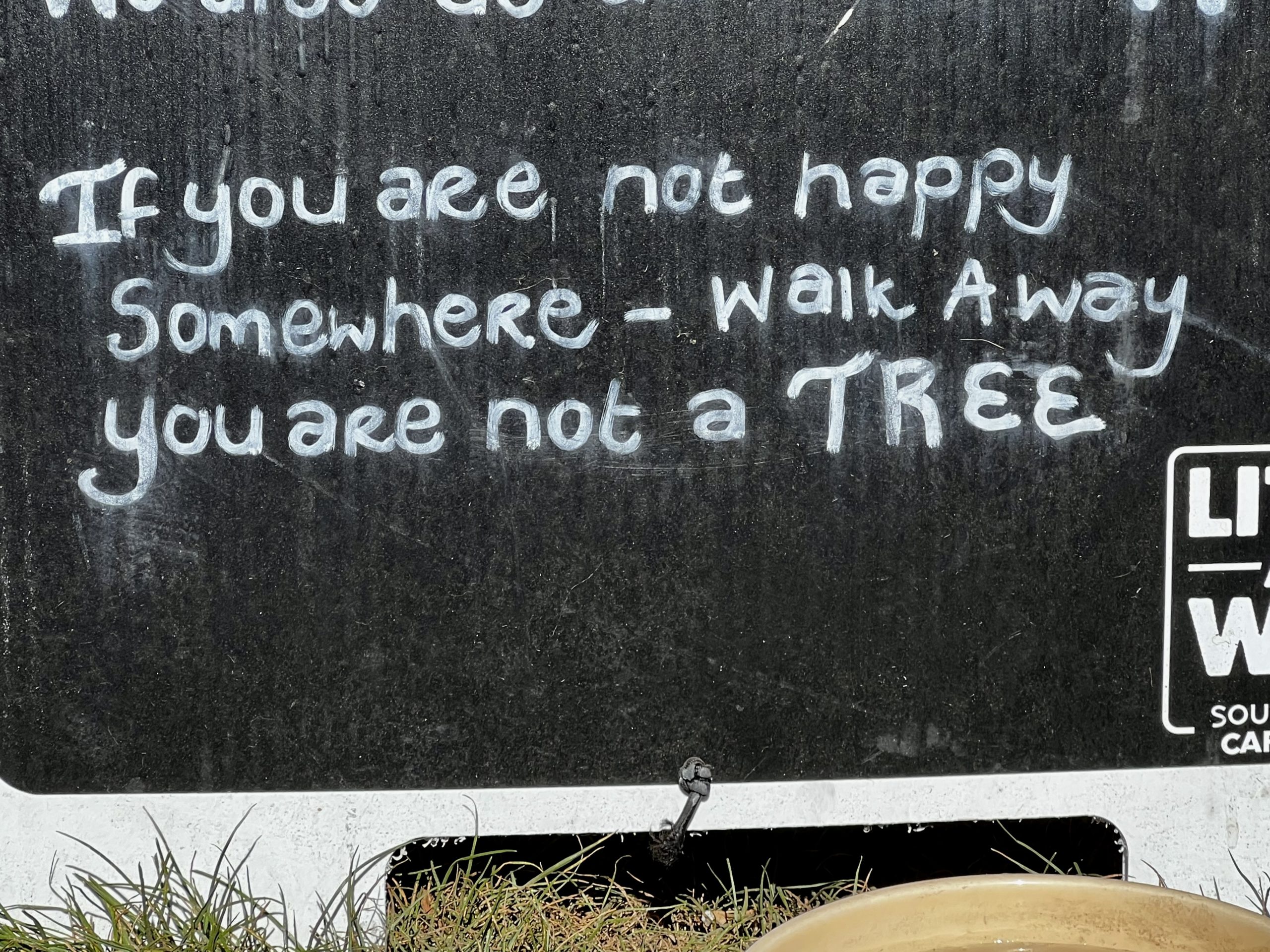
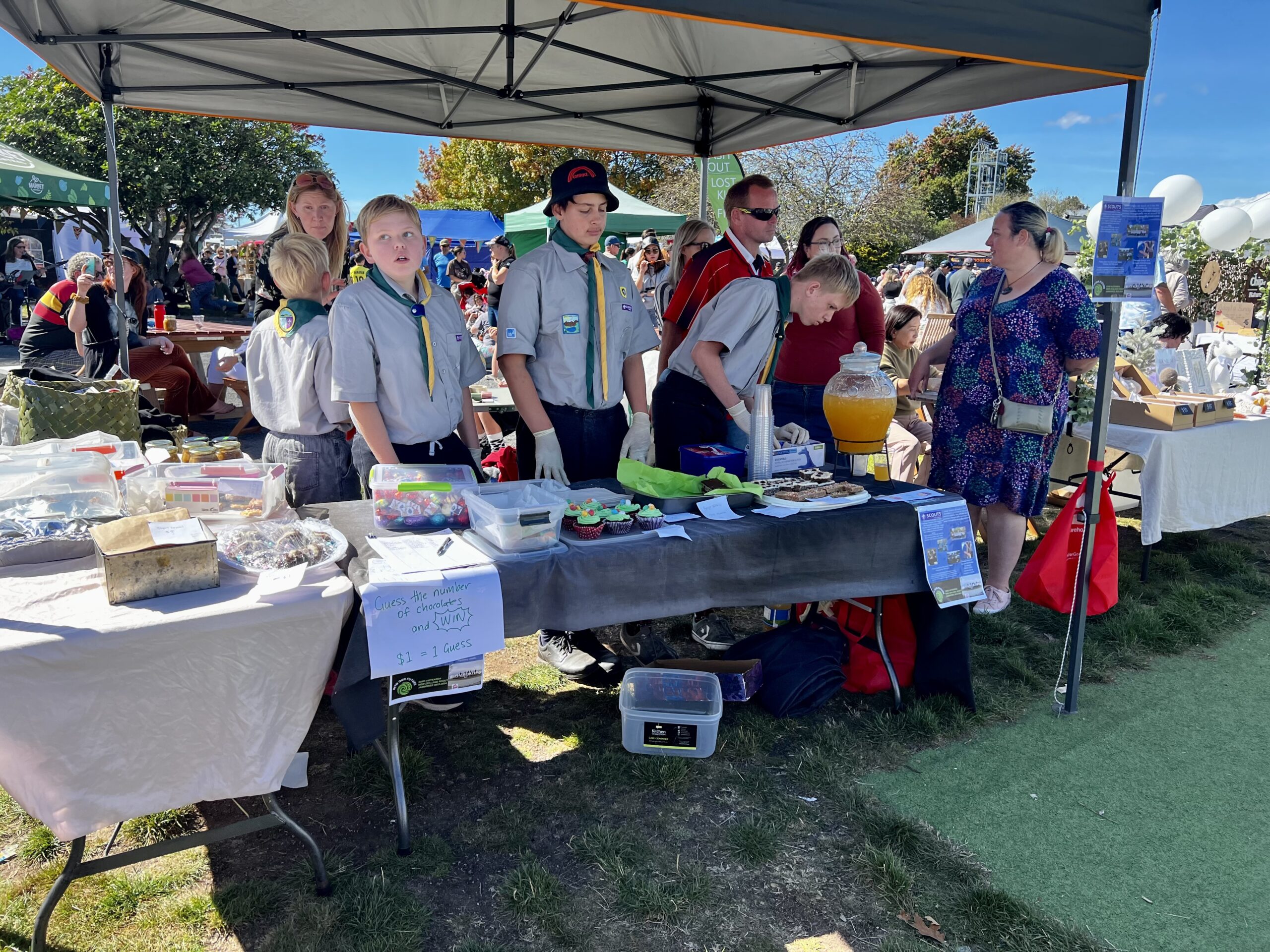
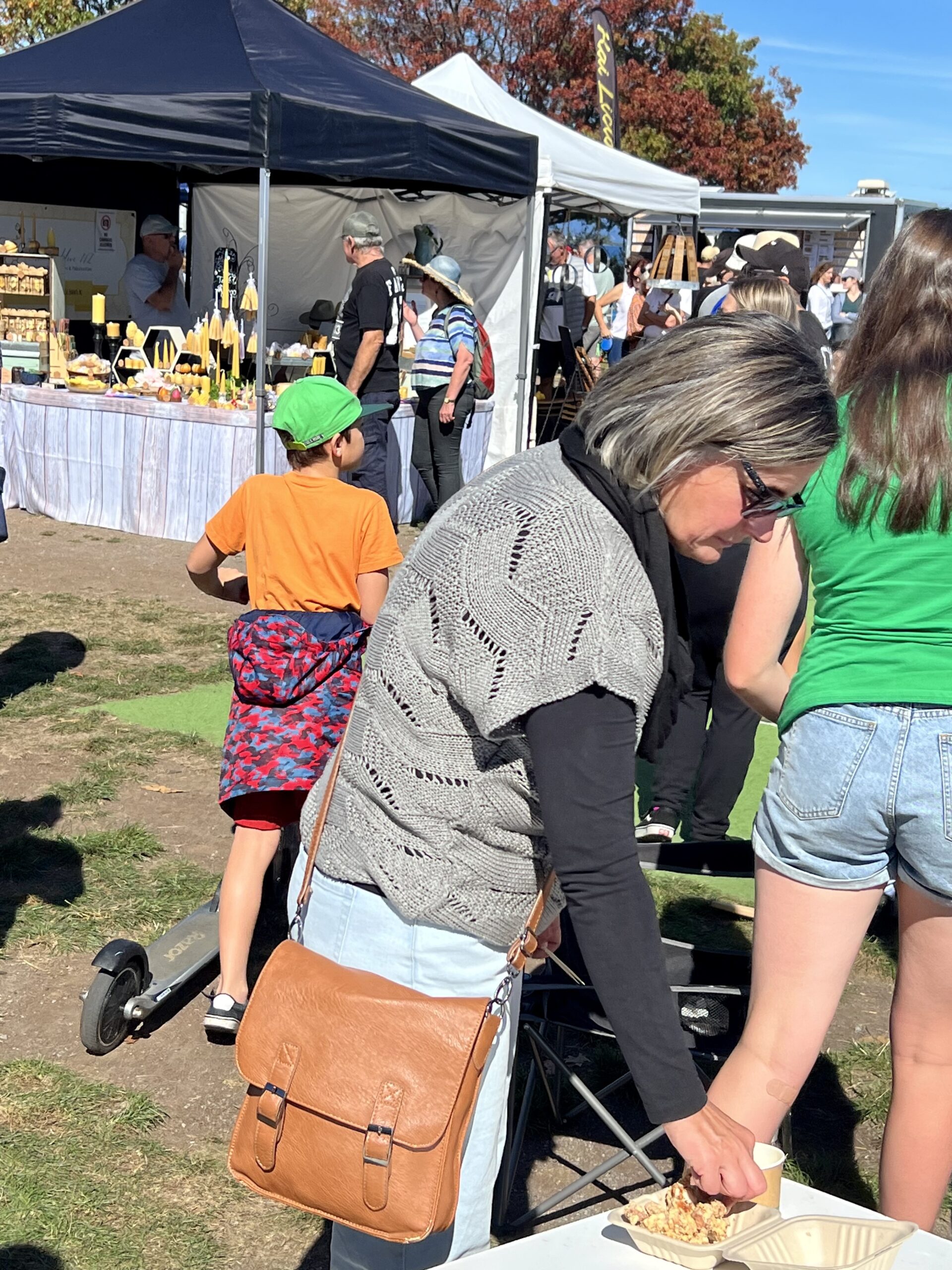
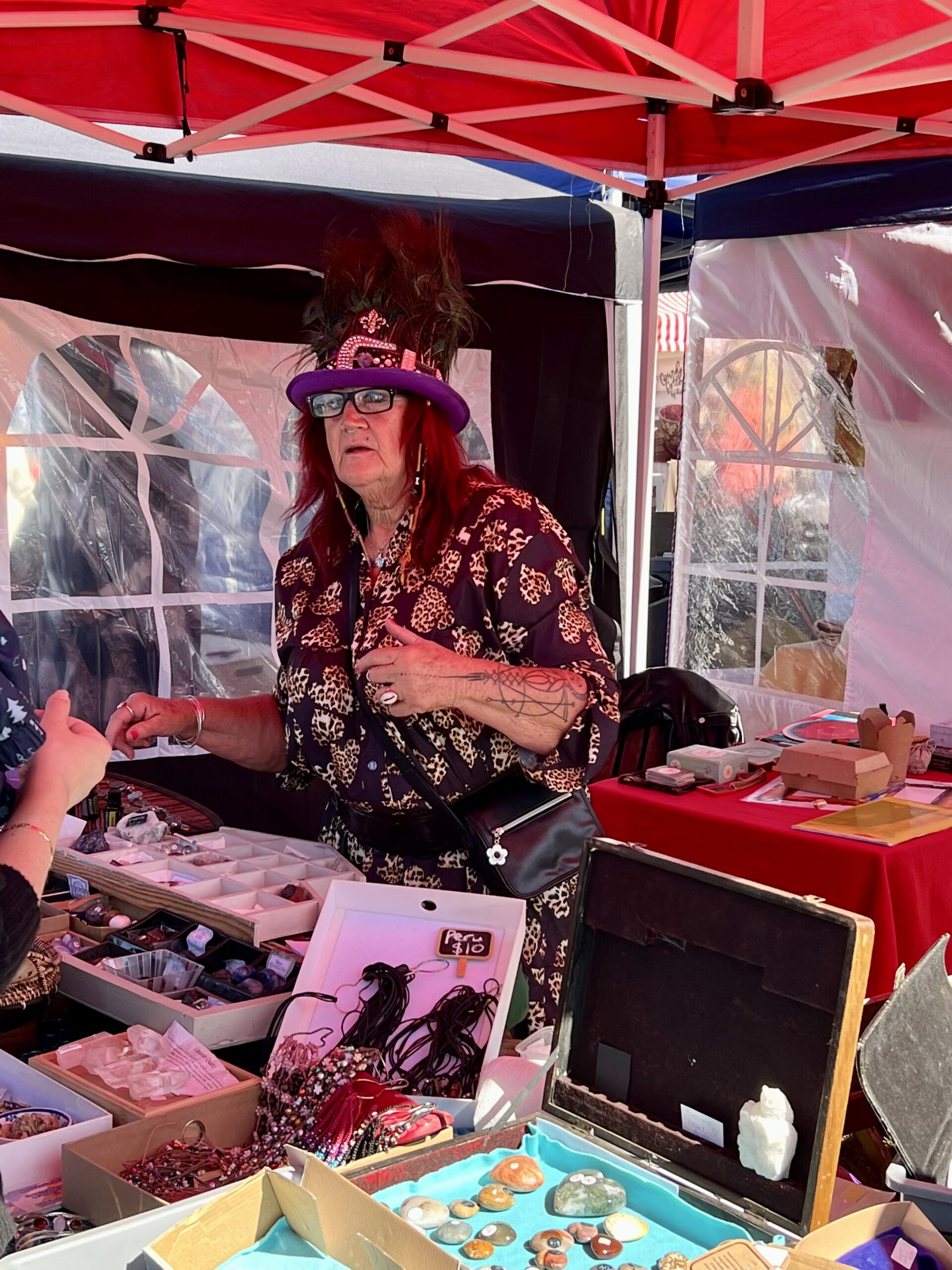
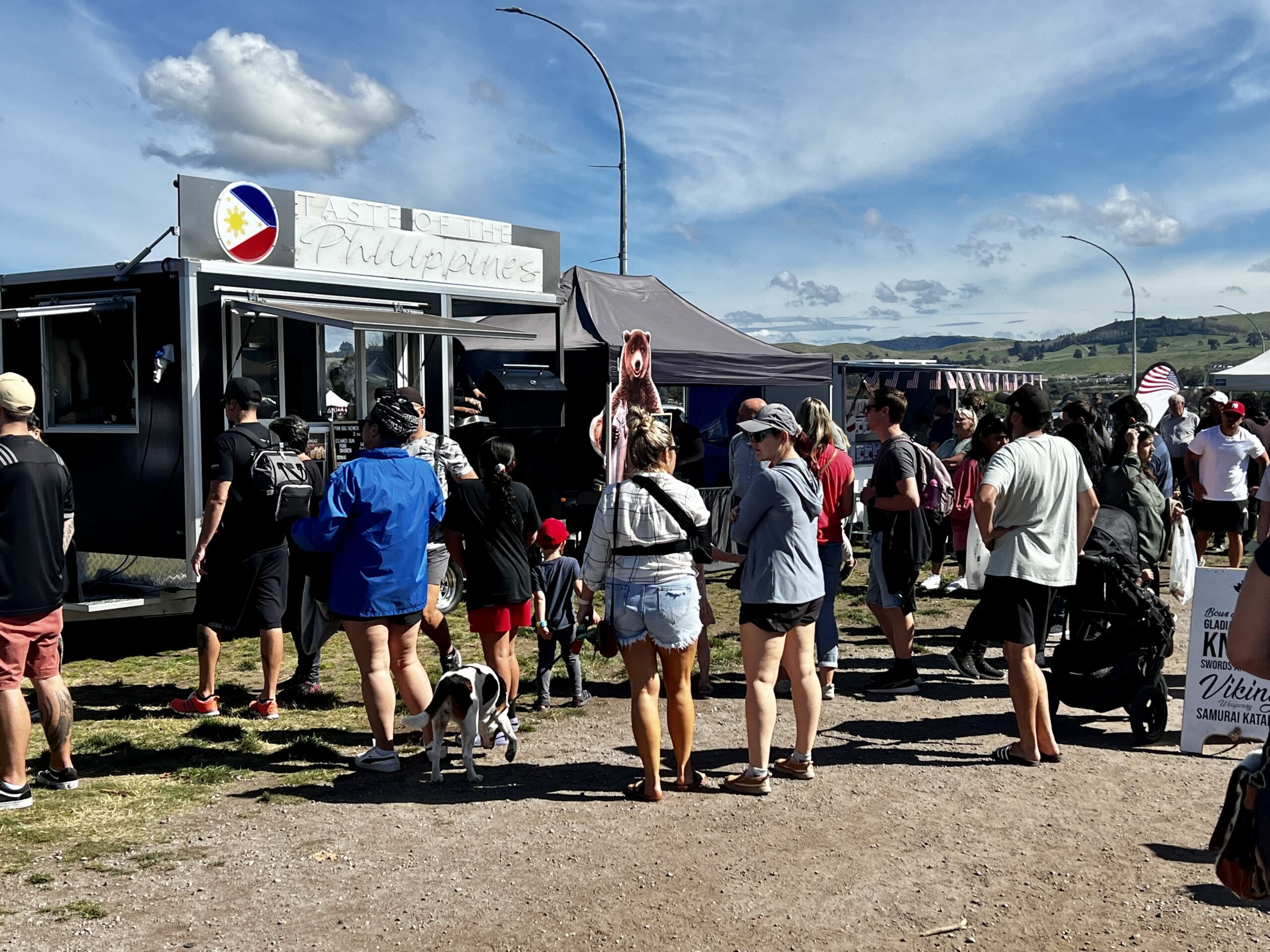
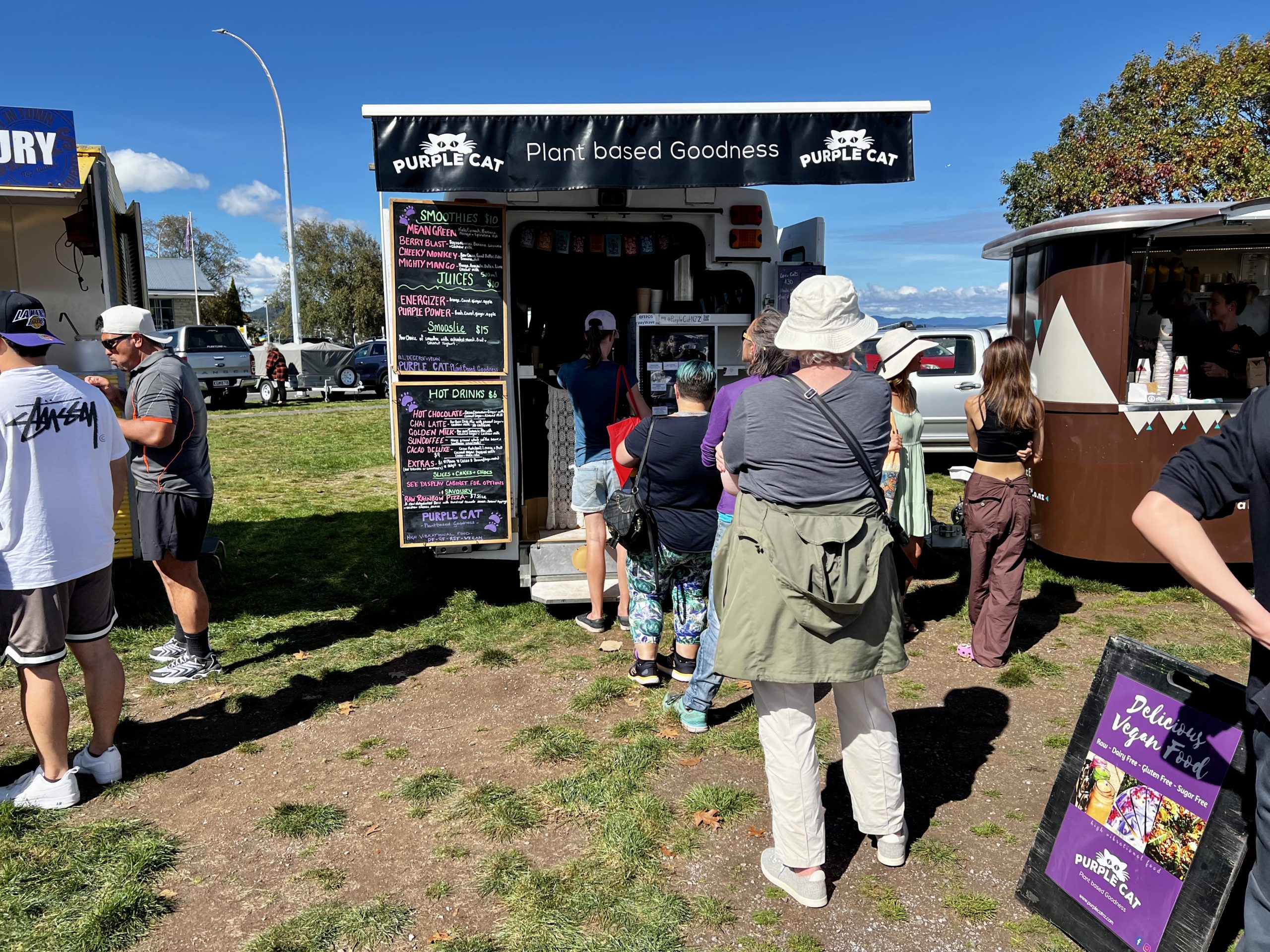
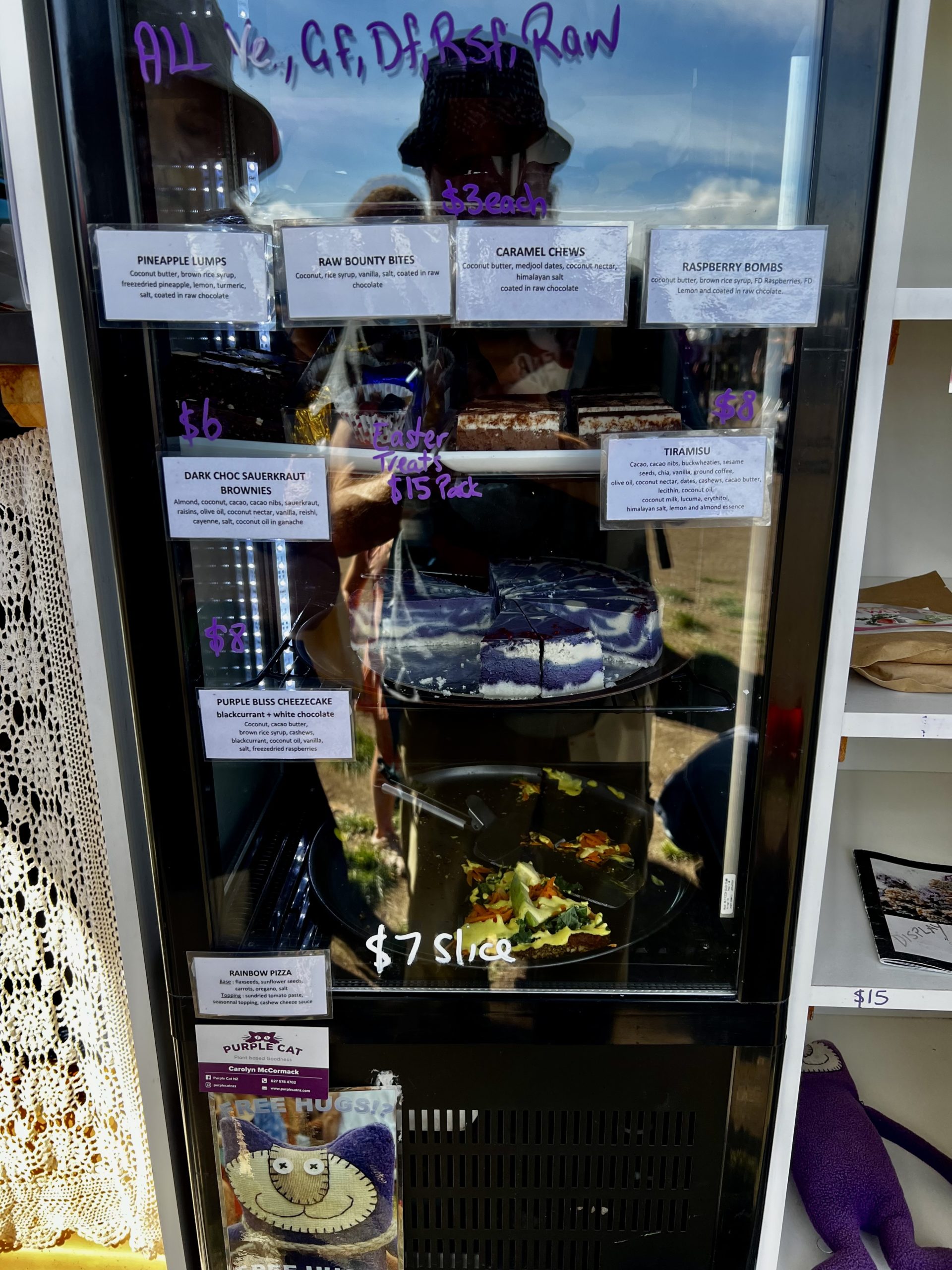
On the Way and Back
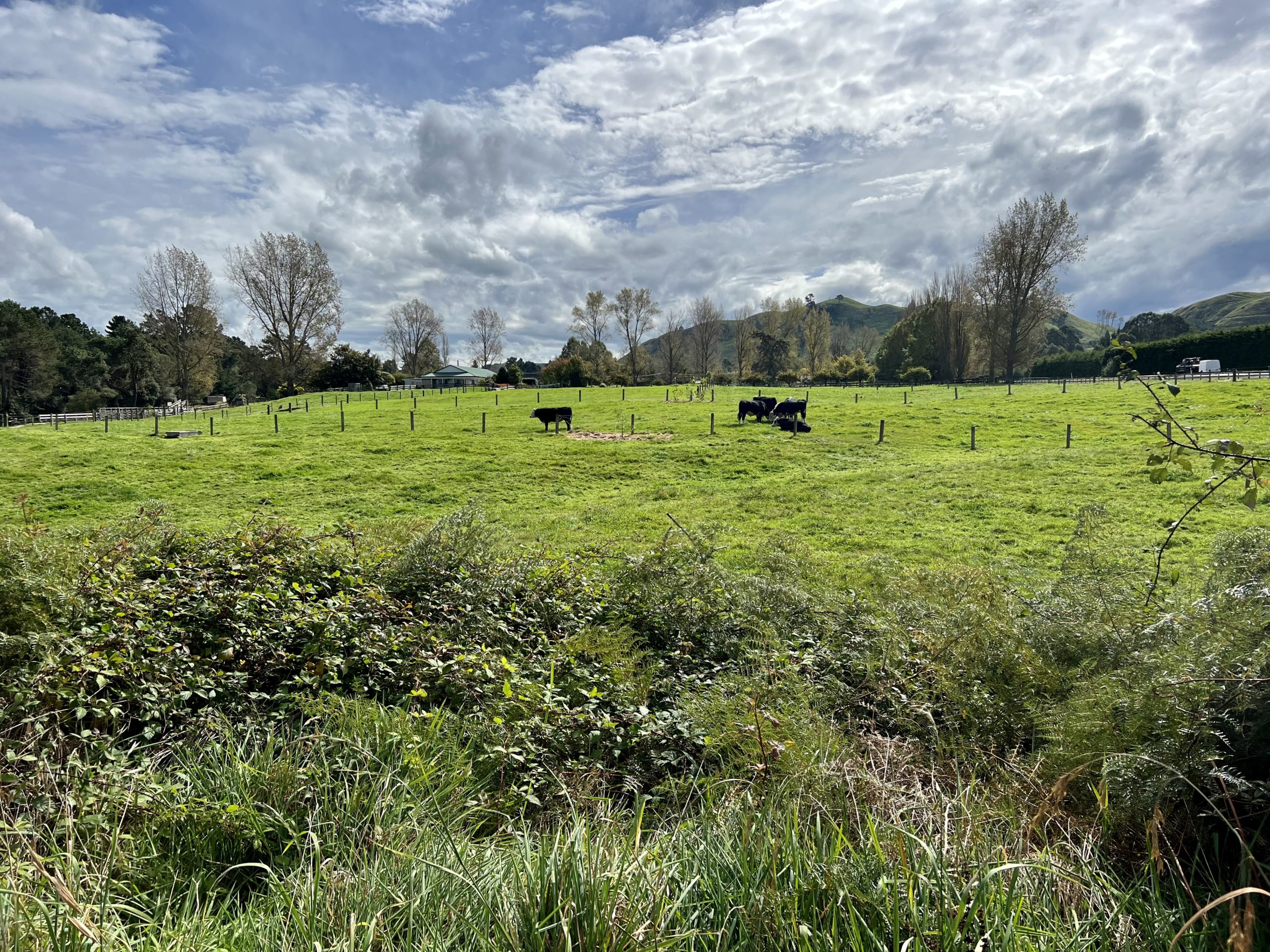
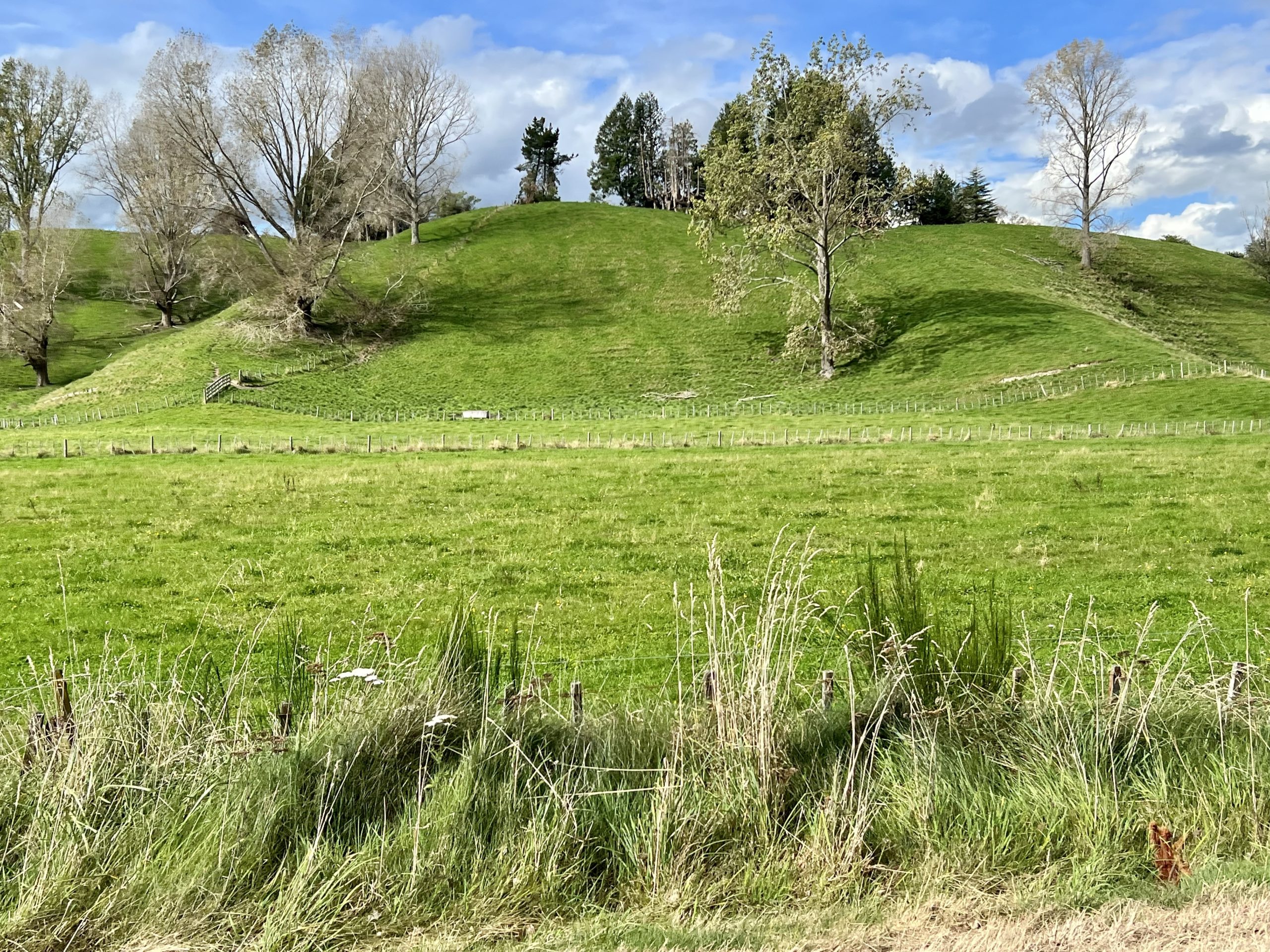
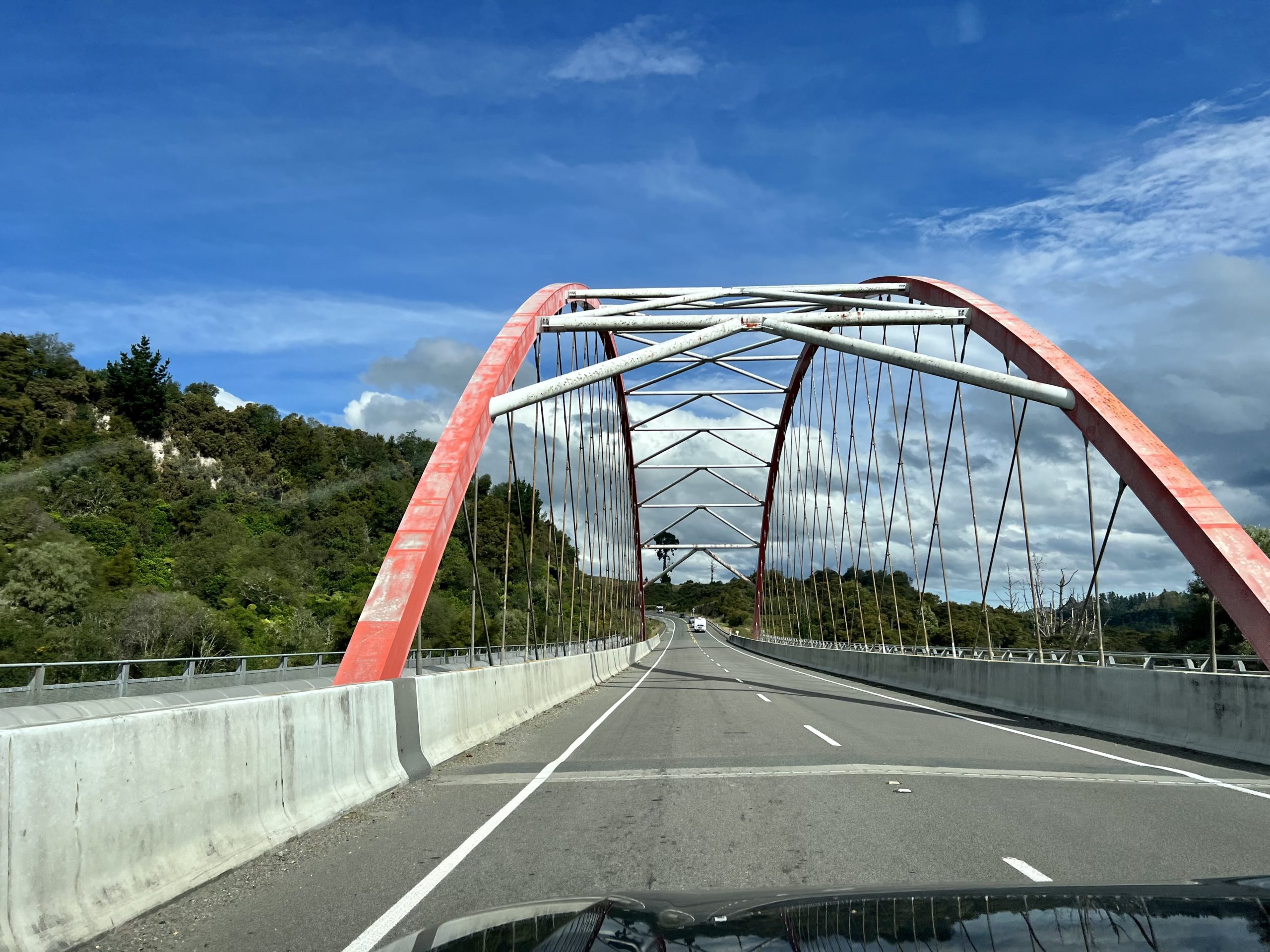
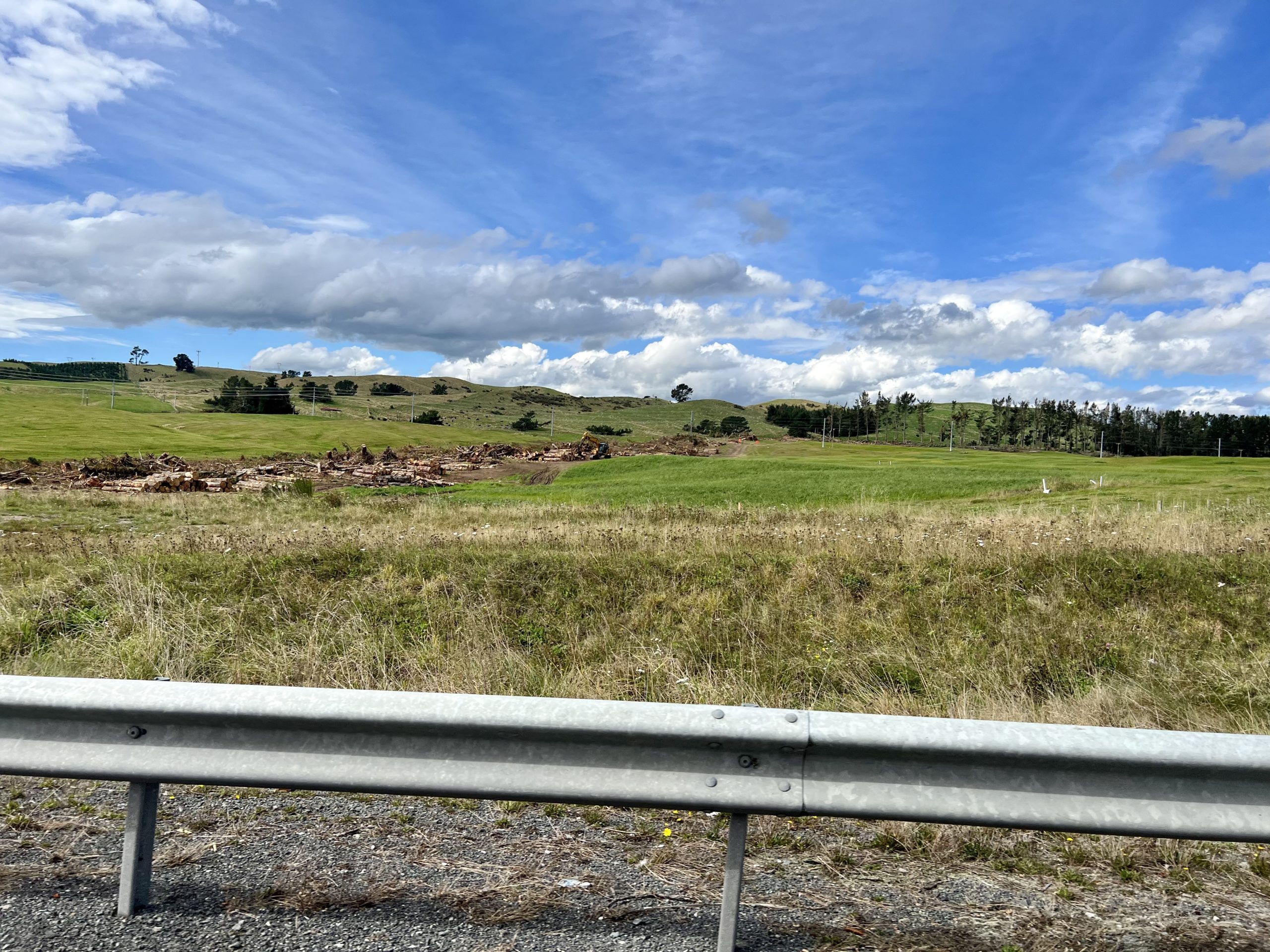
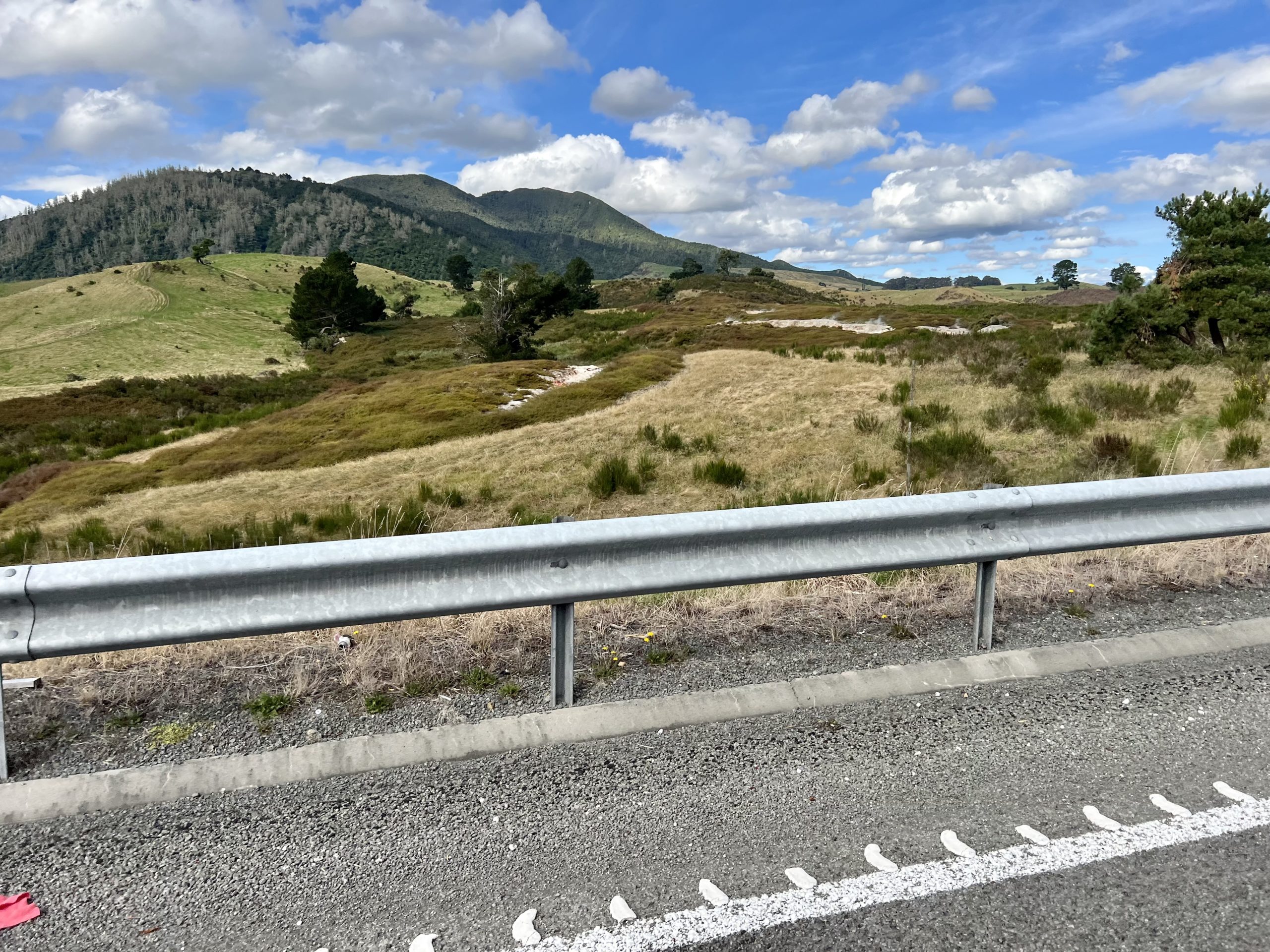
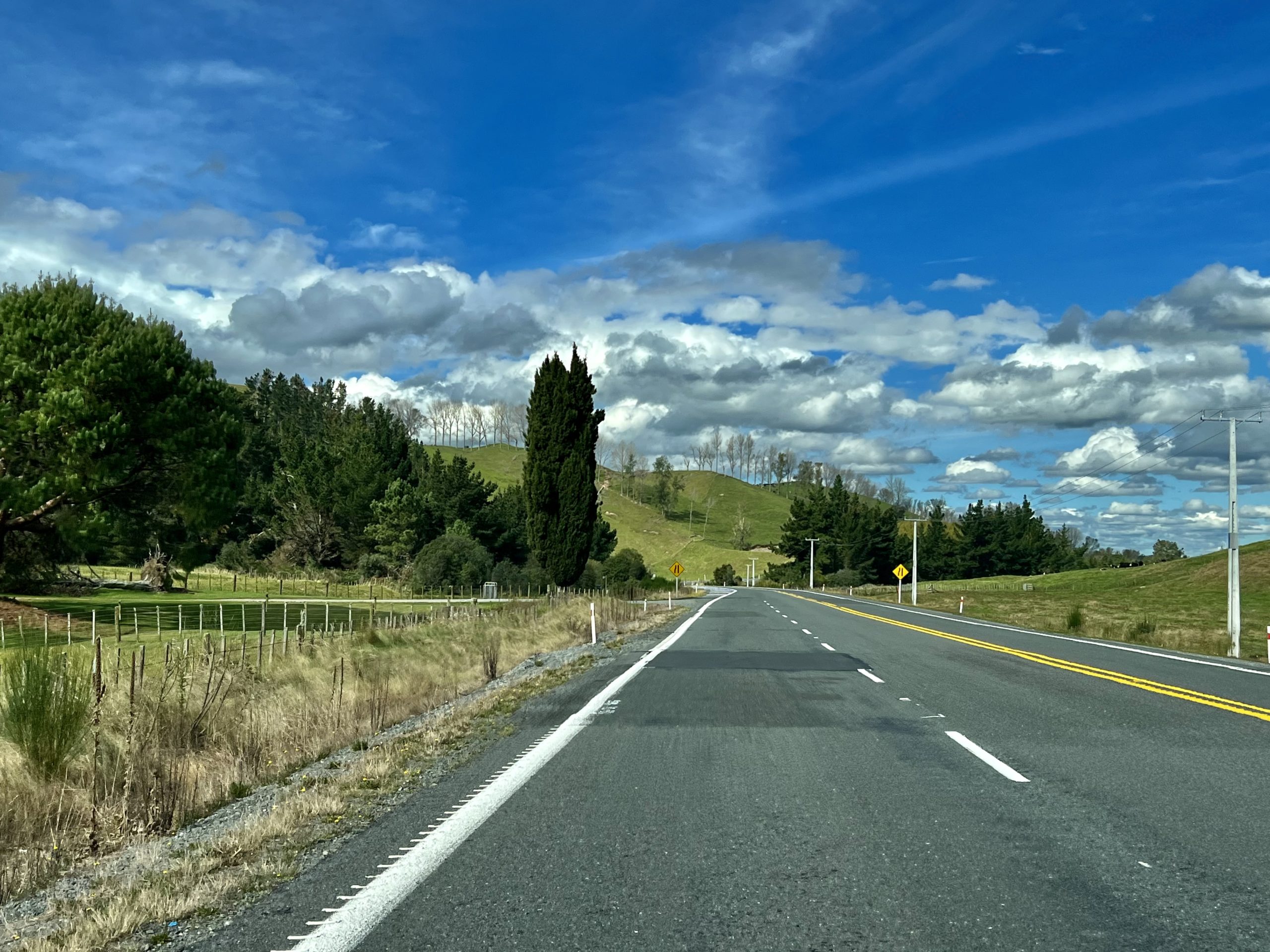
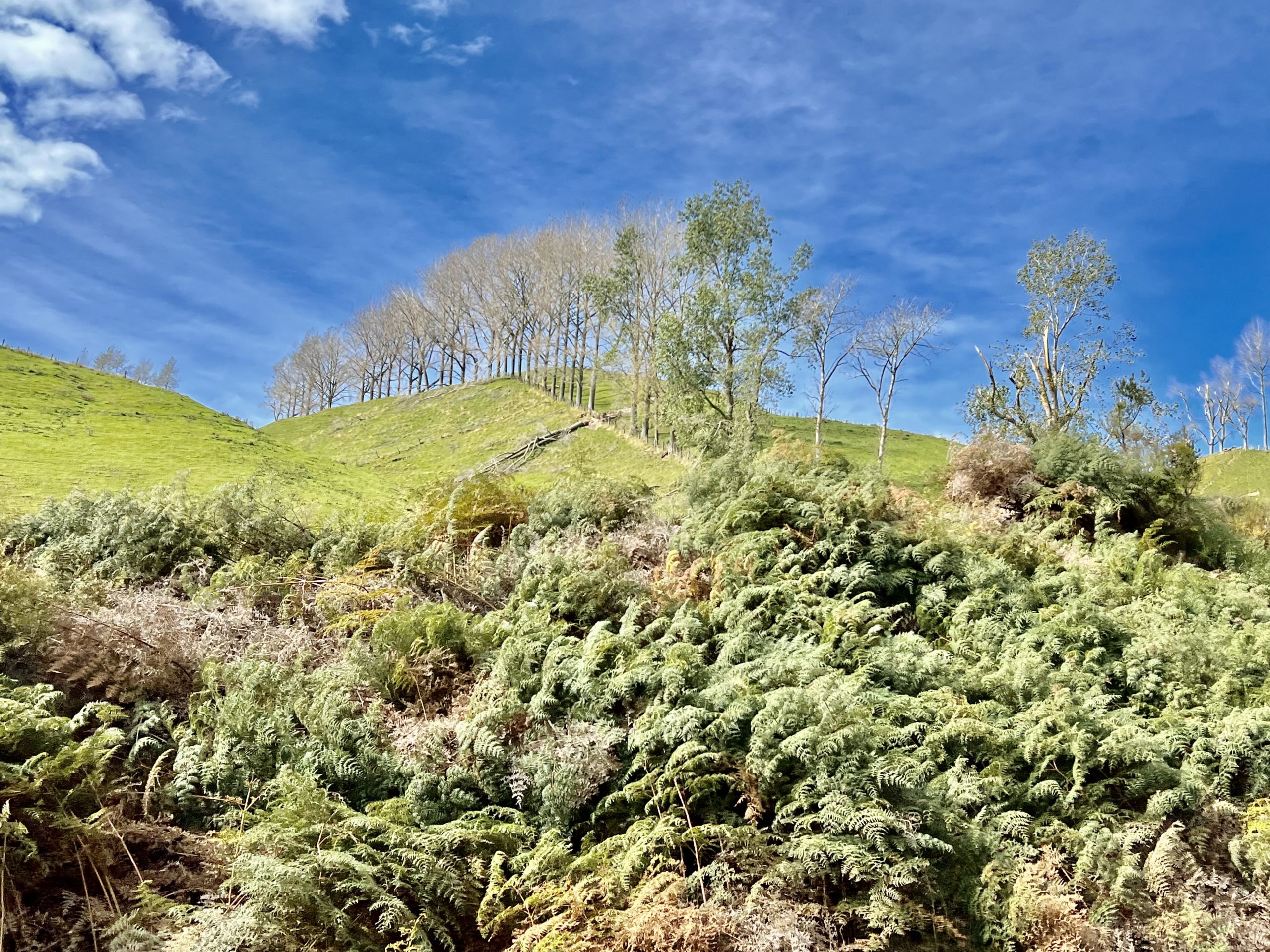
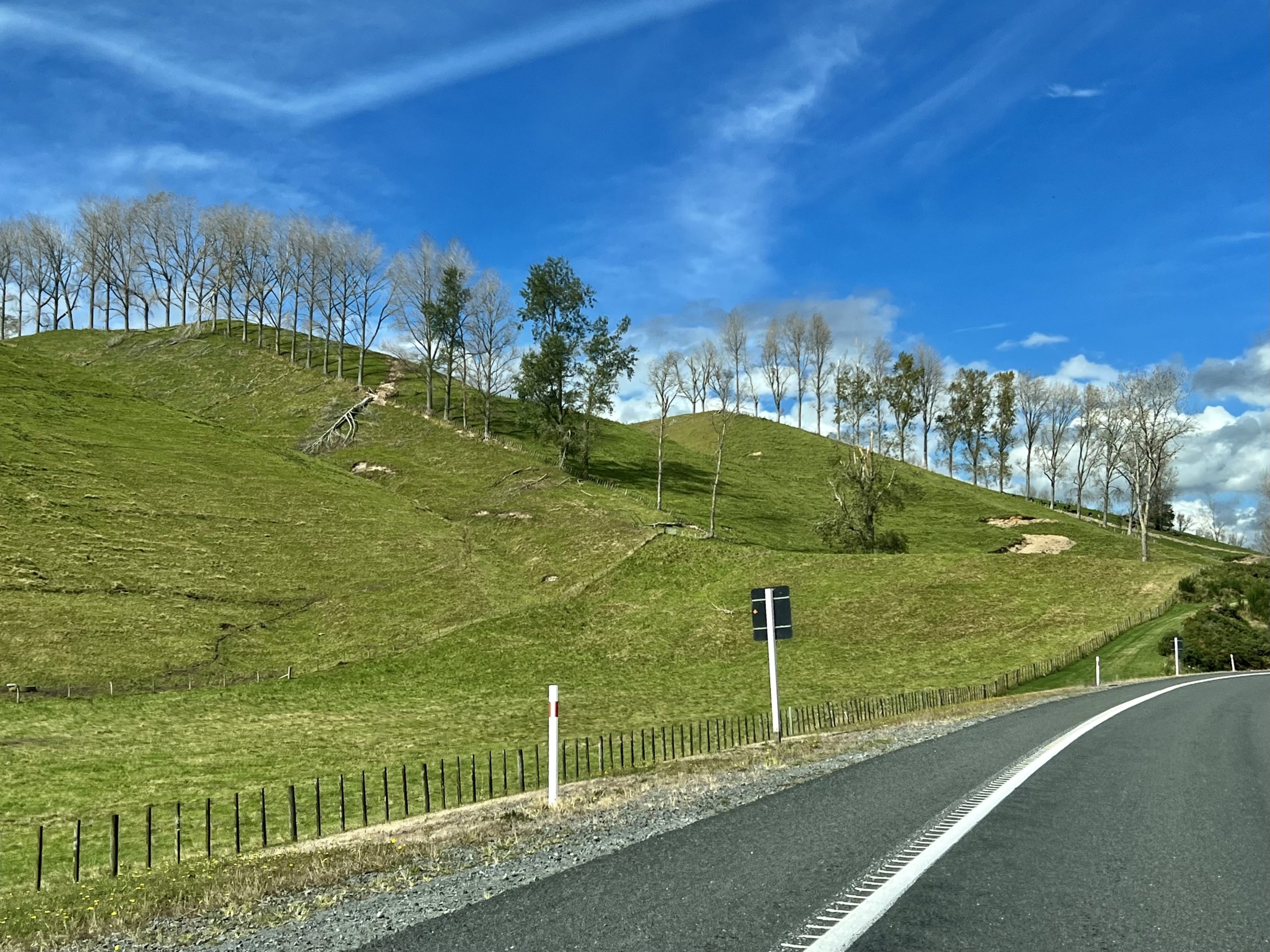
Lilliput Farm
The motel manager suggested several times that we visit Lilliput Farm. He has a young daughter who loves it. We drove to the “farm” with large grassy pens for the animals. Yes, there were a lot of kids, their parents, and a few adults without kids (us). You do things on vacation that you wouldn’t do at home. When we arrived, the owner was just finishing her slightly military lecture about how to feed the animals for the families ready to head in. It was Easter Sunday, so they had hidden Easter eggs around the property to be exchanged for a chocolate egg at the entry. One per person although she said one kid returned with twenty-one eggs. Robert told her that if we were not out in three hours, she should come find us. With our bucket of food pellets in hand, we spent an hour feeding Shetland ponies, donkeys, red tail deer, sheep, llamas, ducks, ostriches, peacocks, chickens, and pigs. One pig was very aggressive; he bounded in, check blocked a sheep, and went for the pellets in Robert’s hand. All fingers retained in the intrusion.
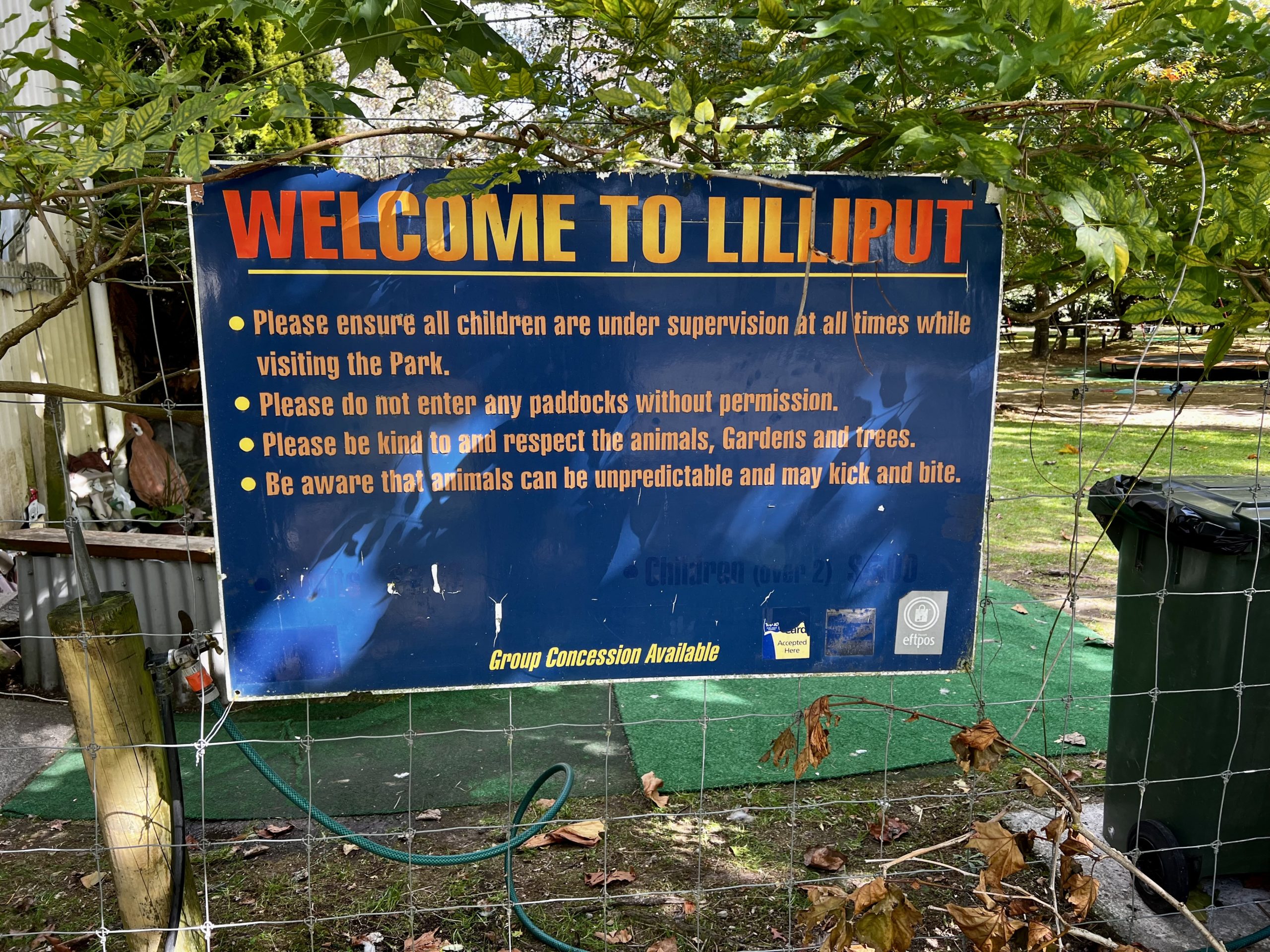
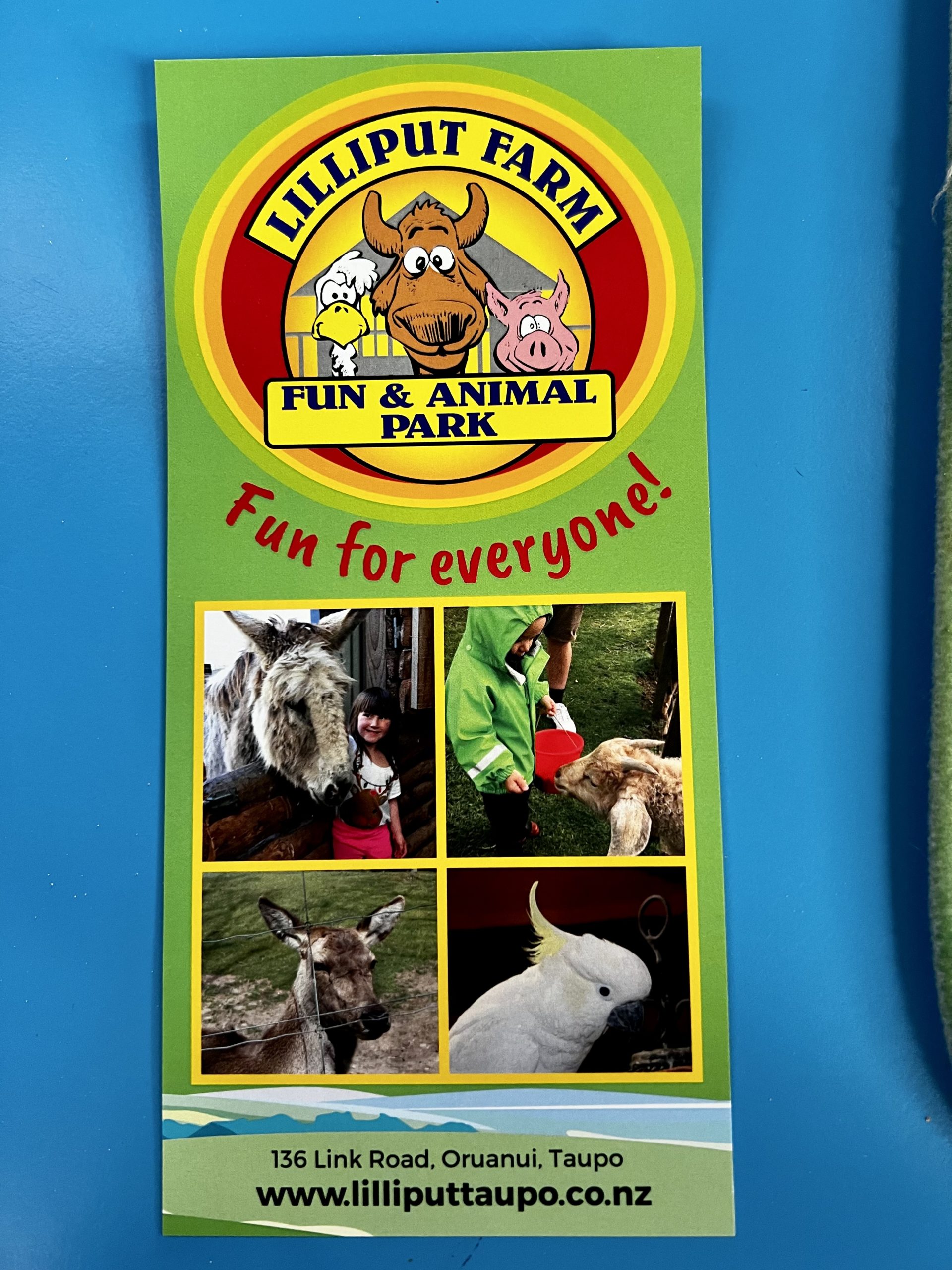
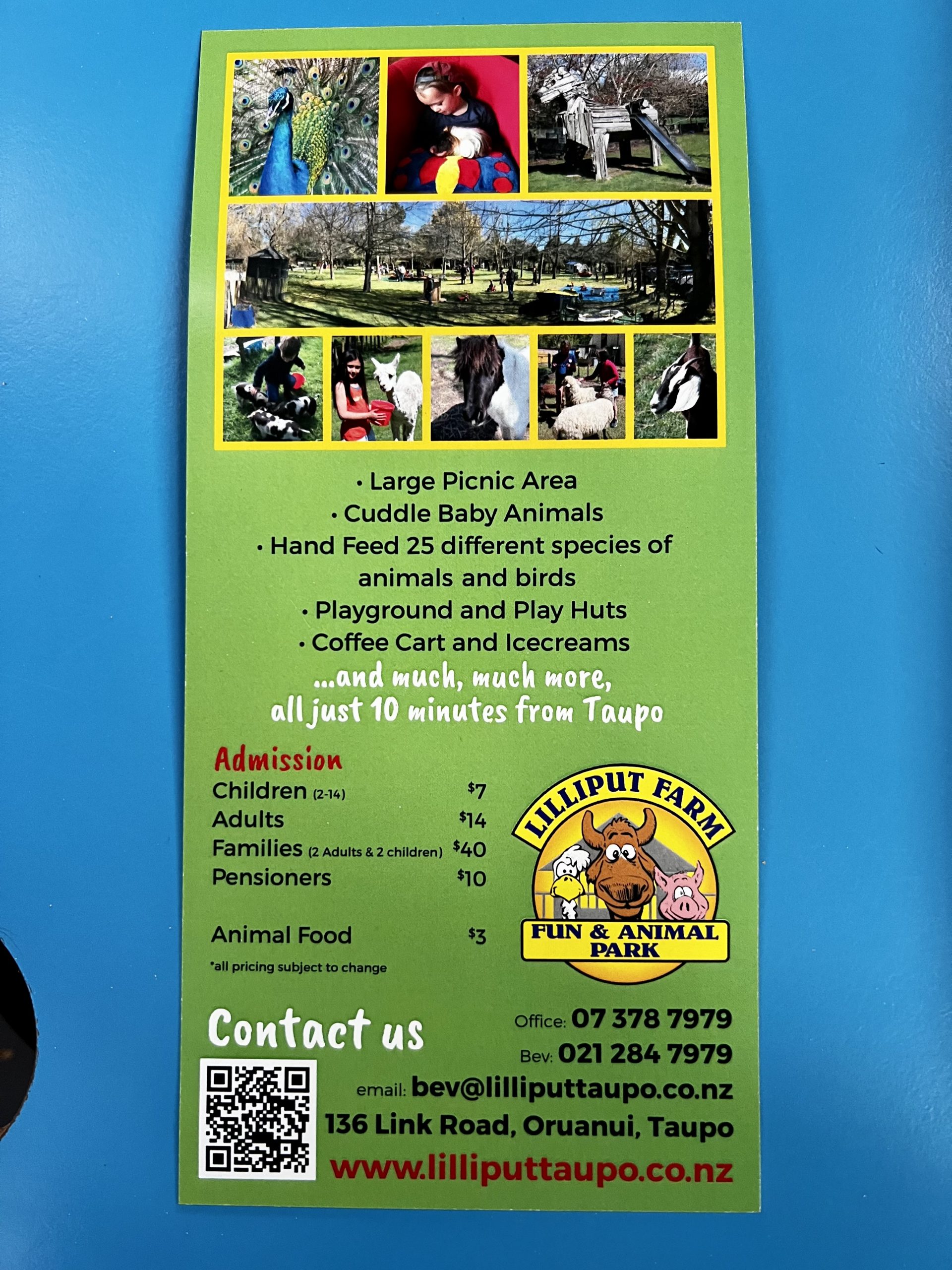
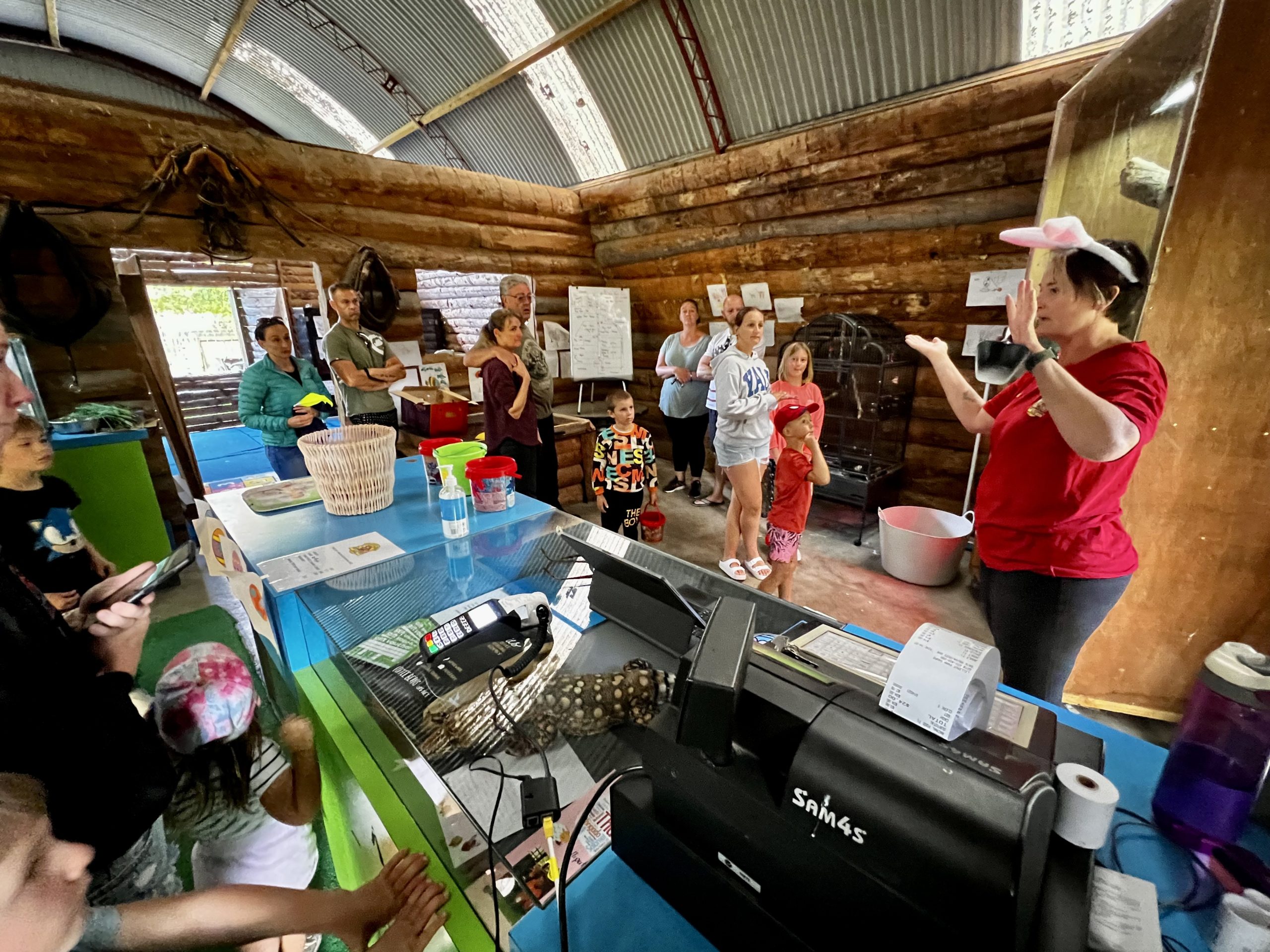
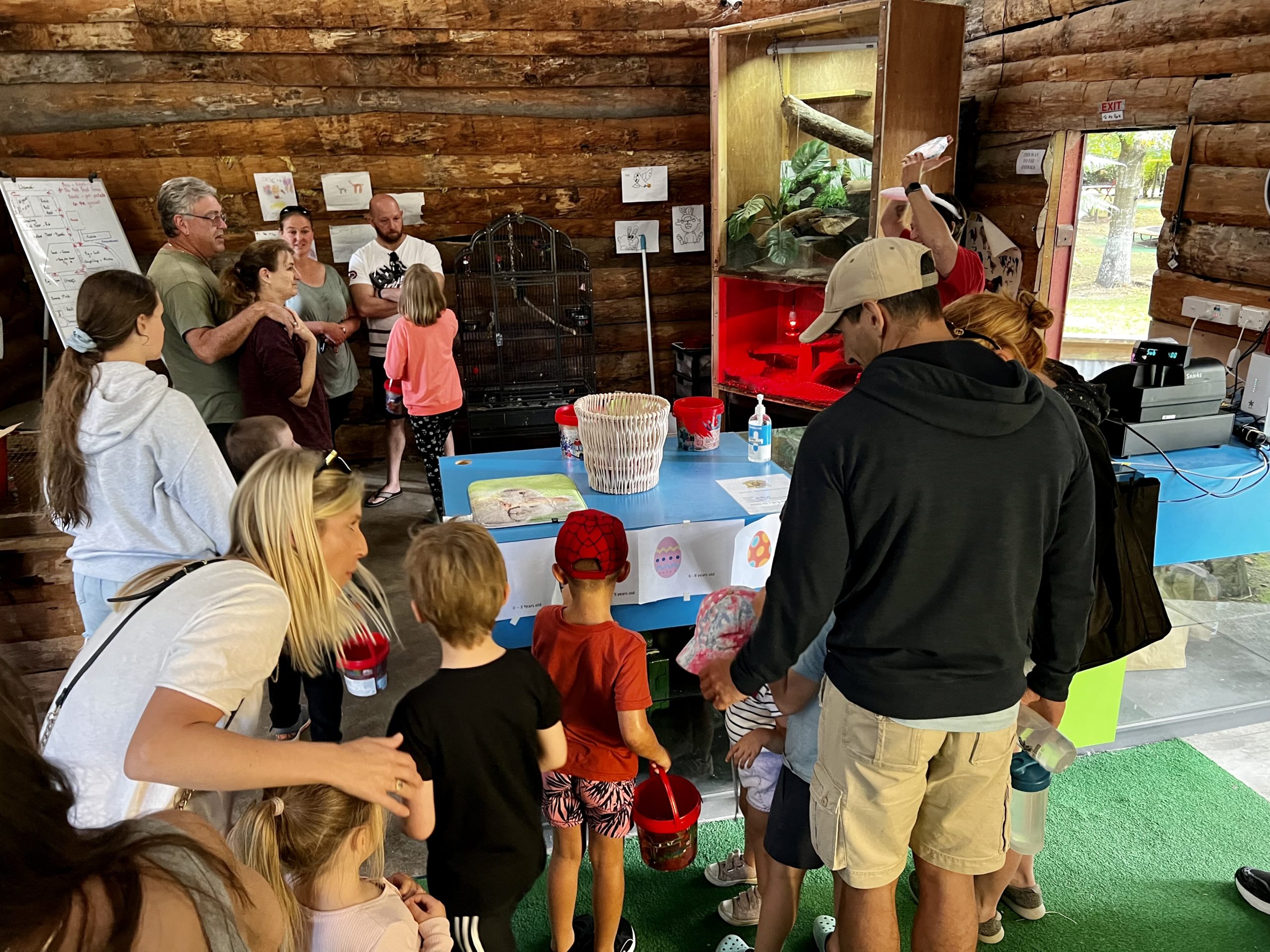
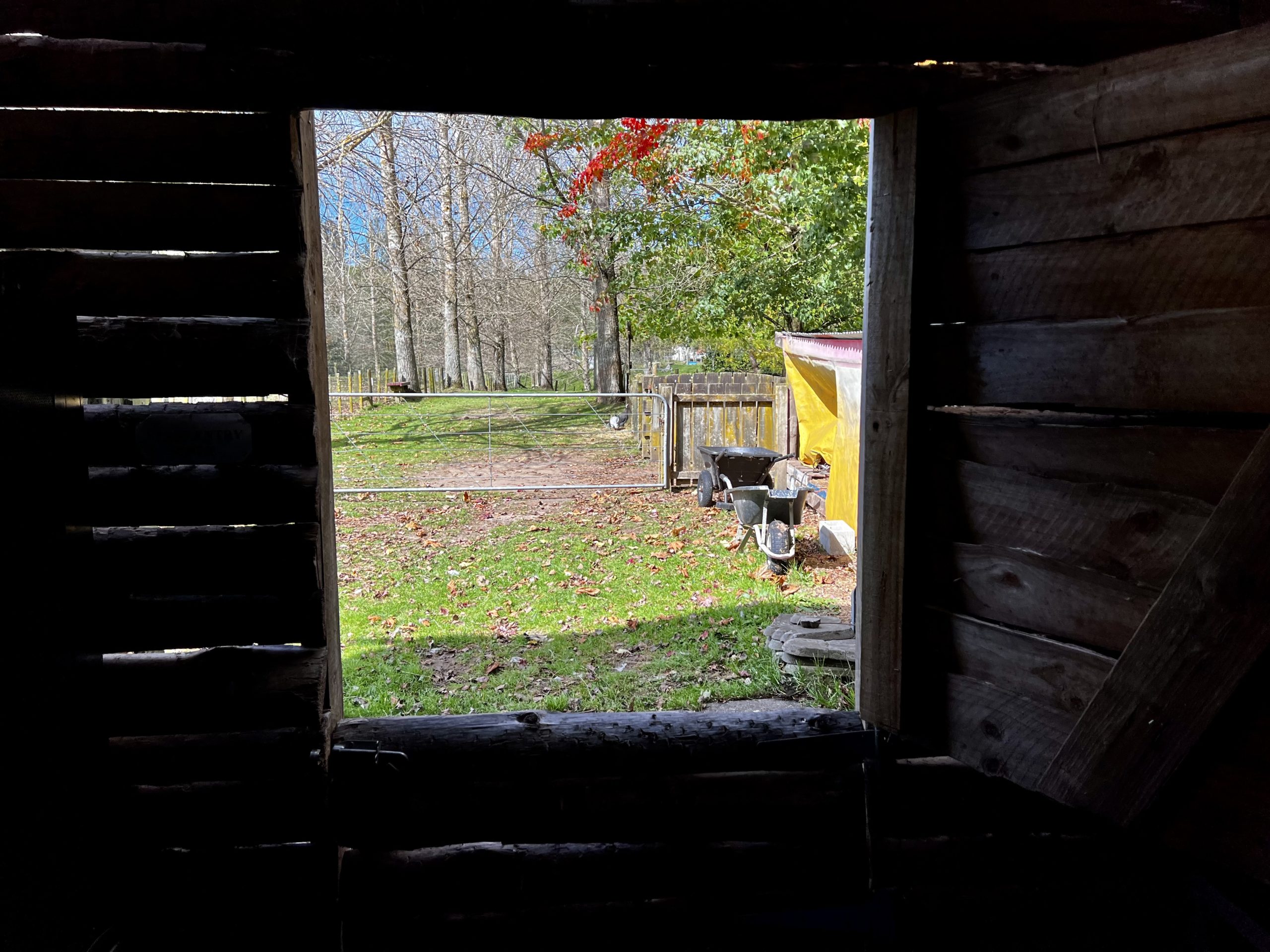
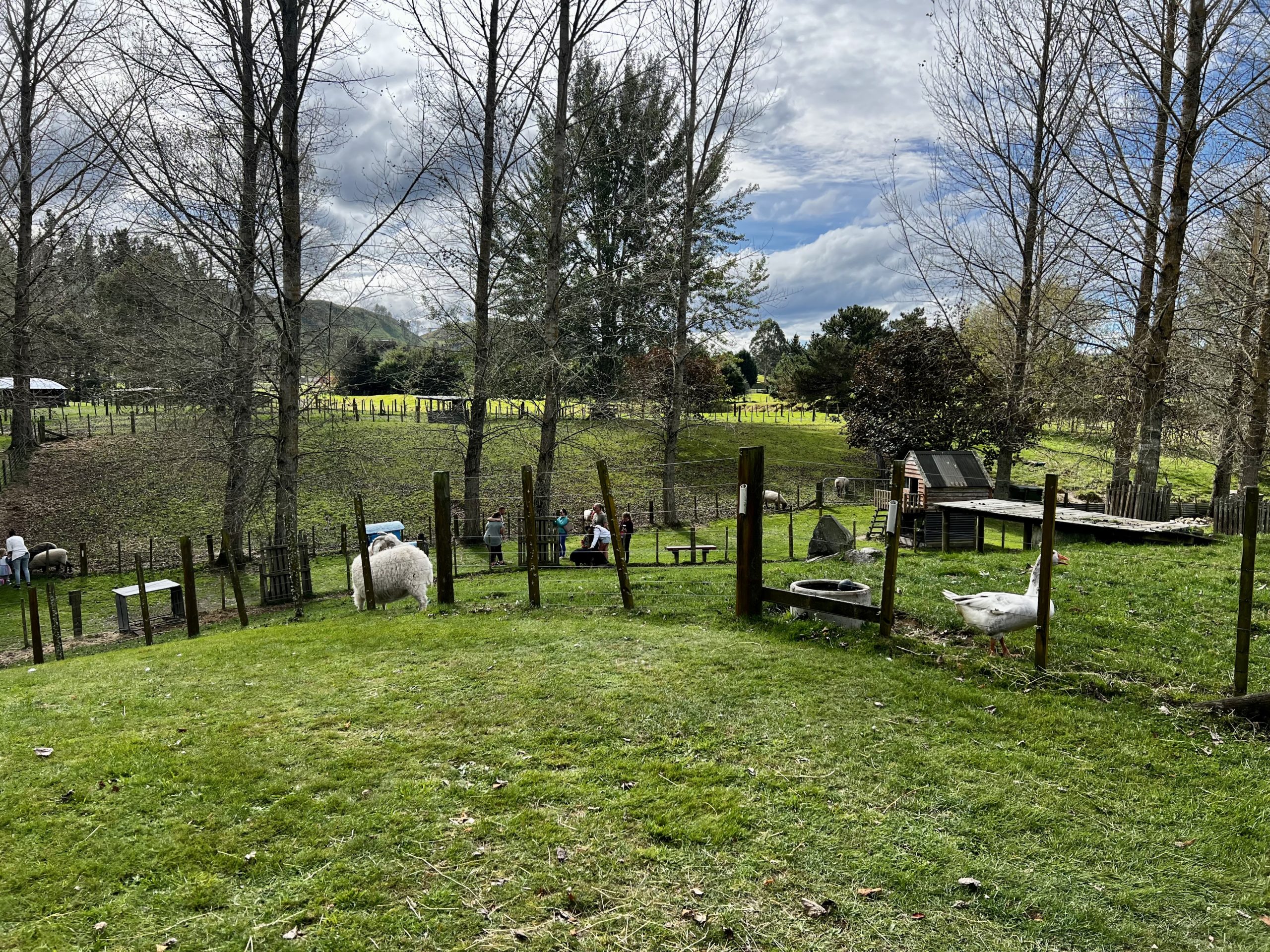
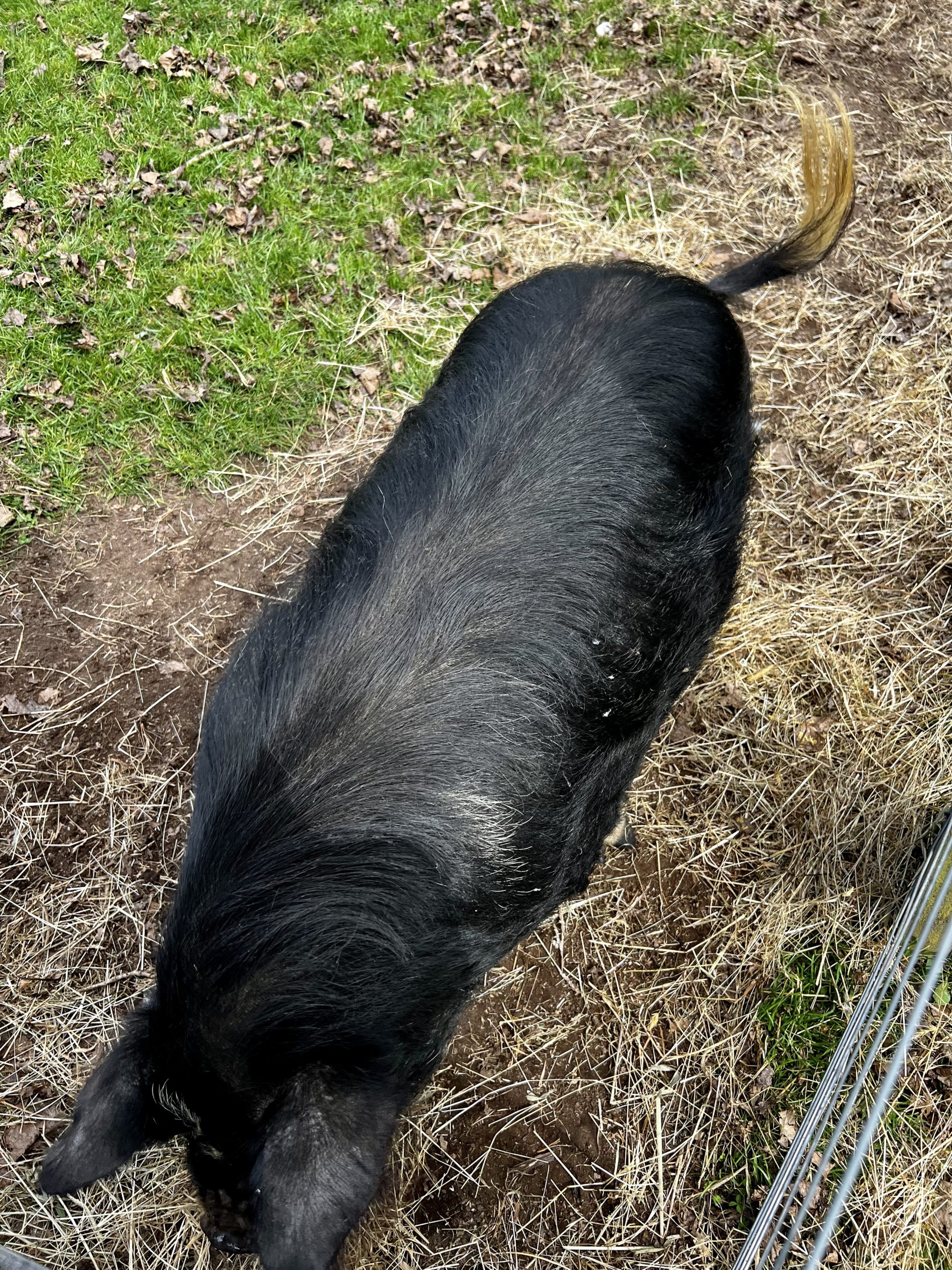
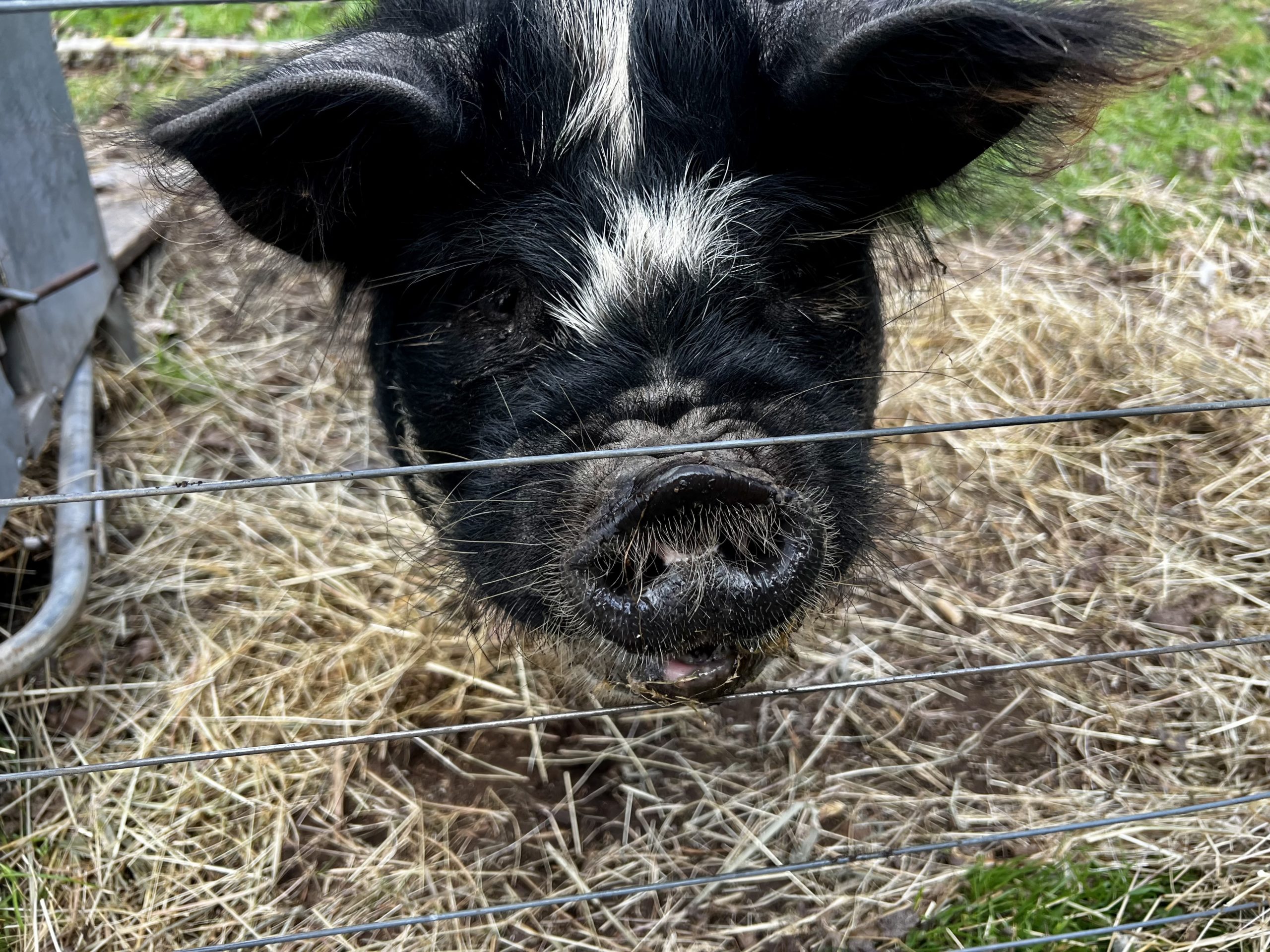
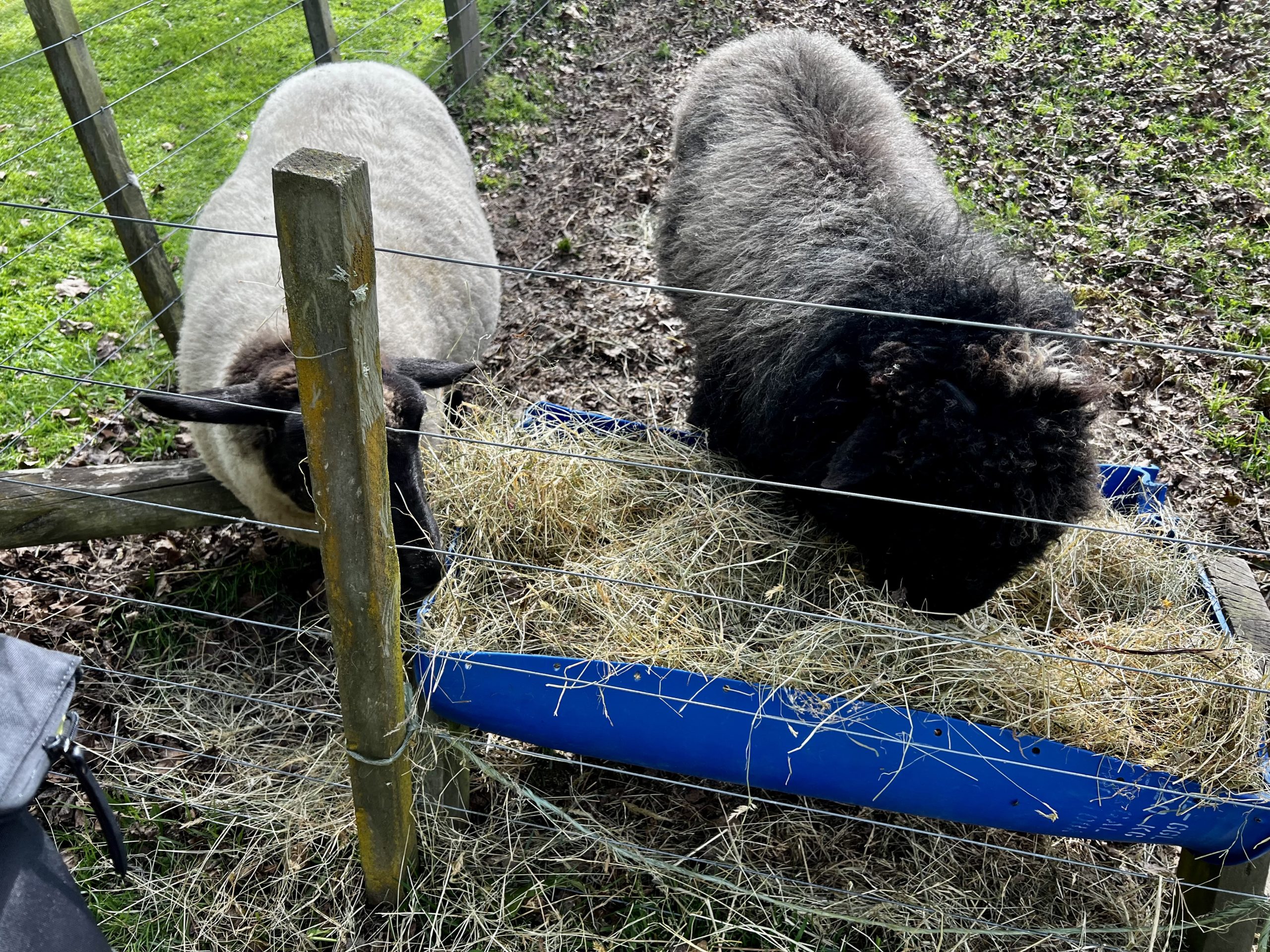
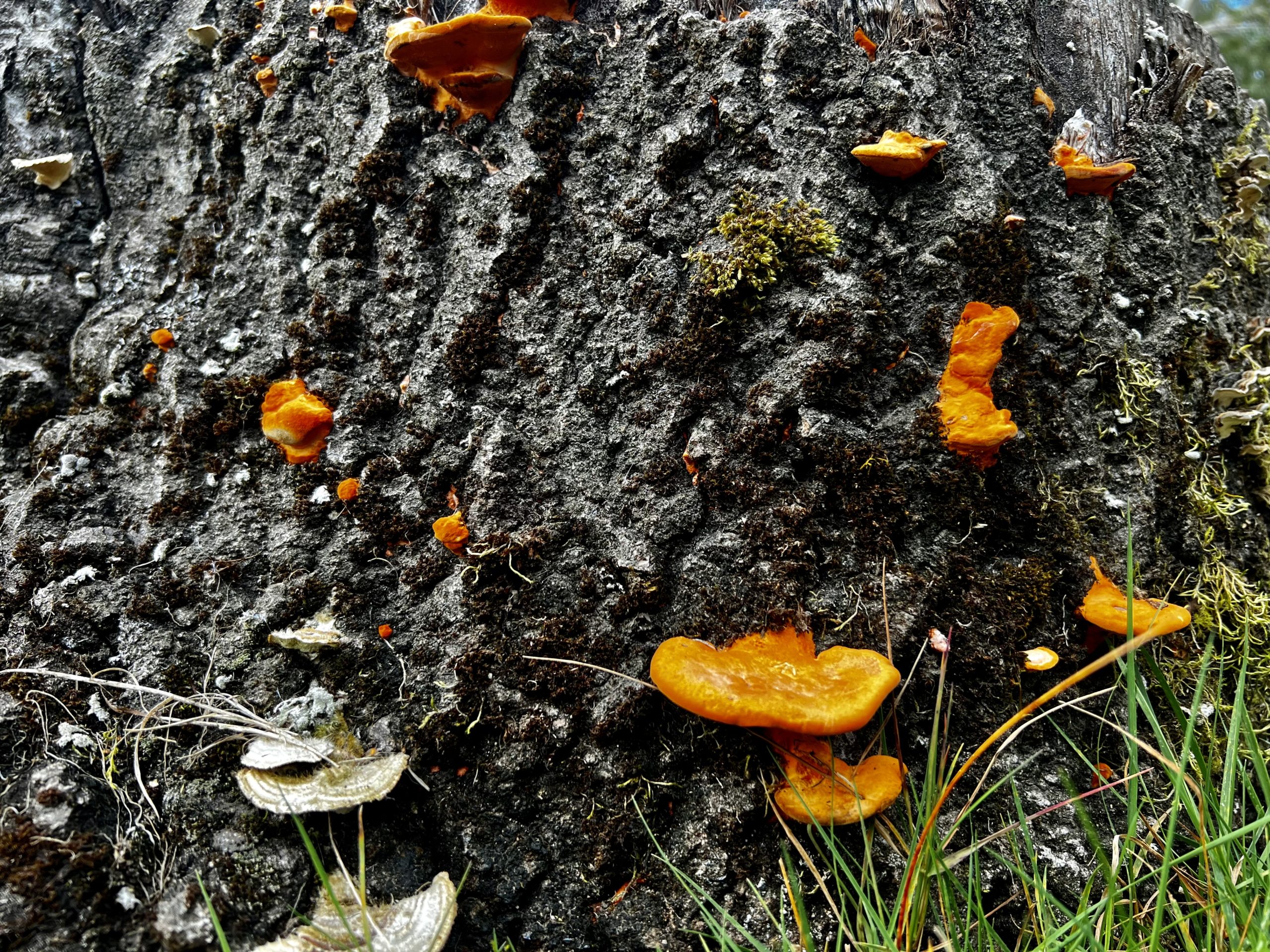
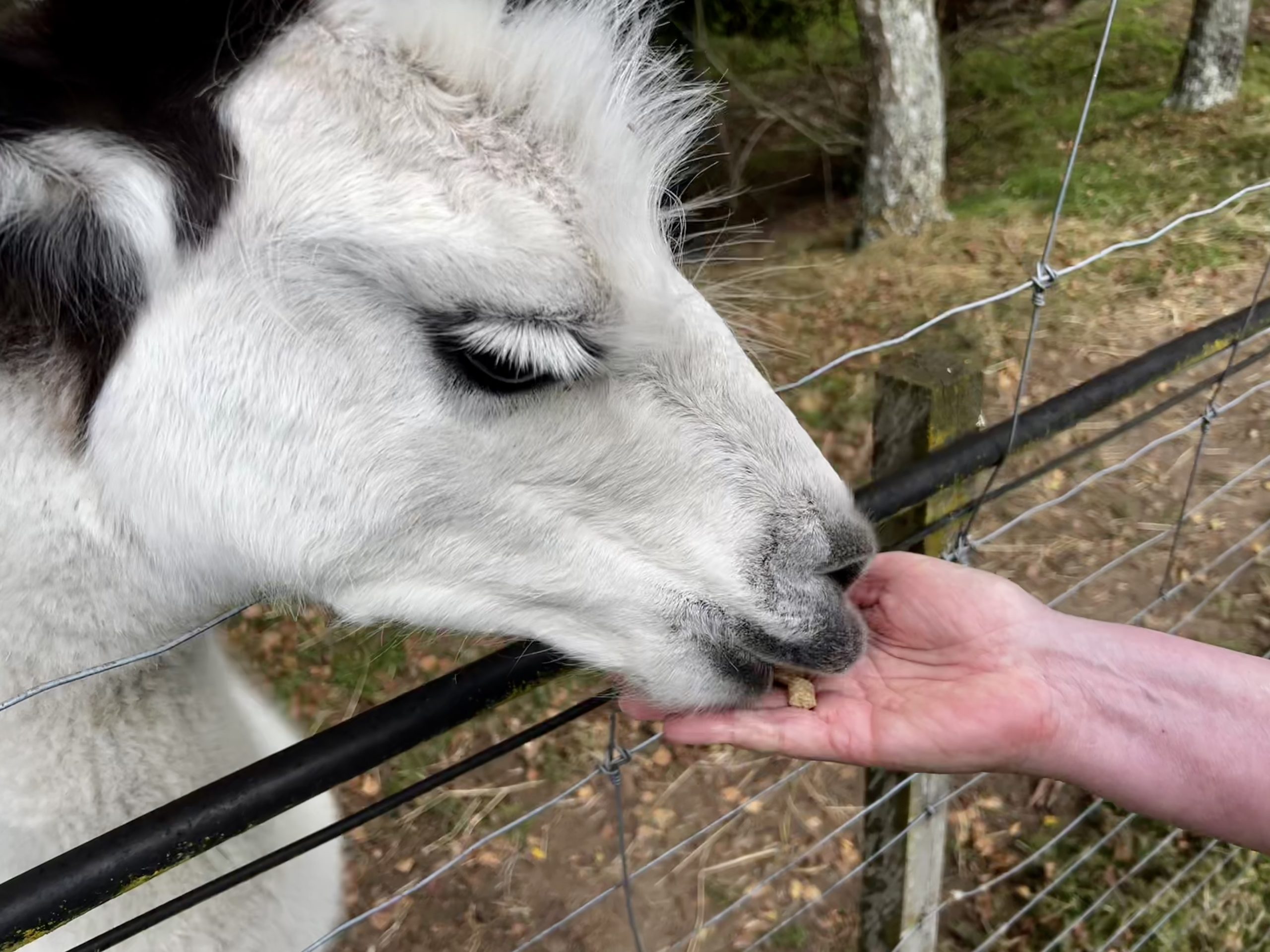
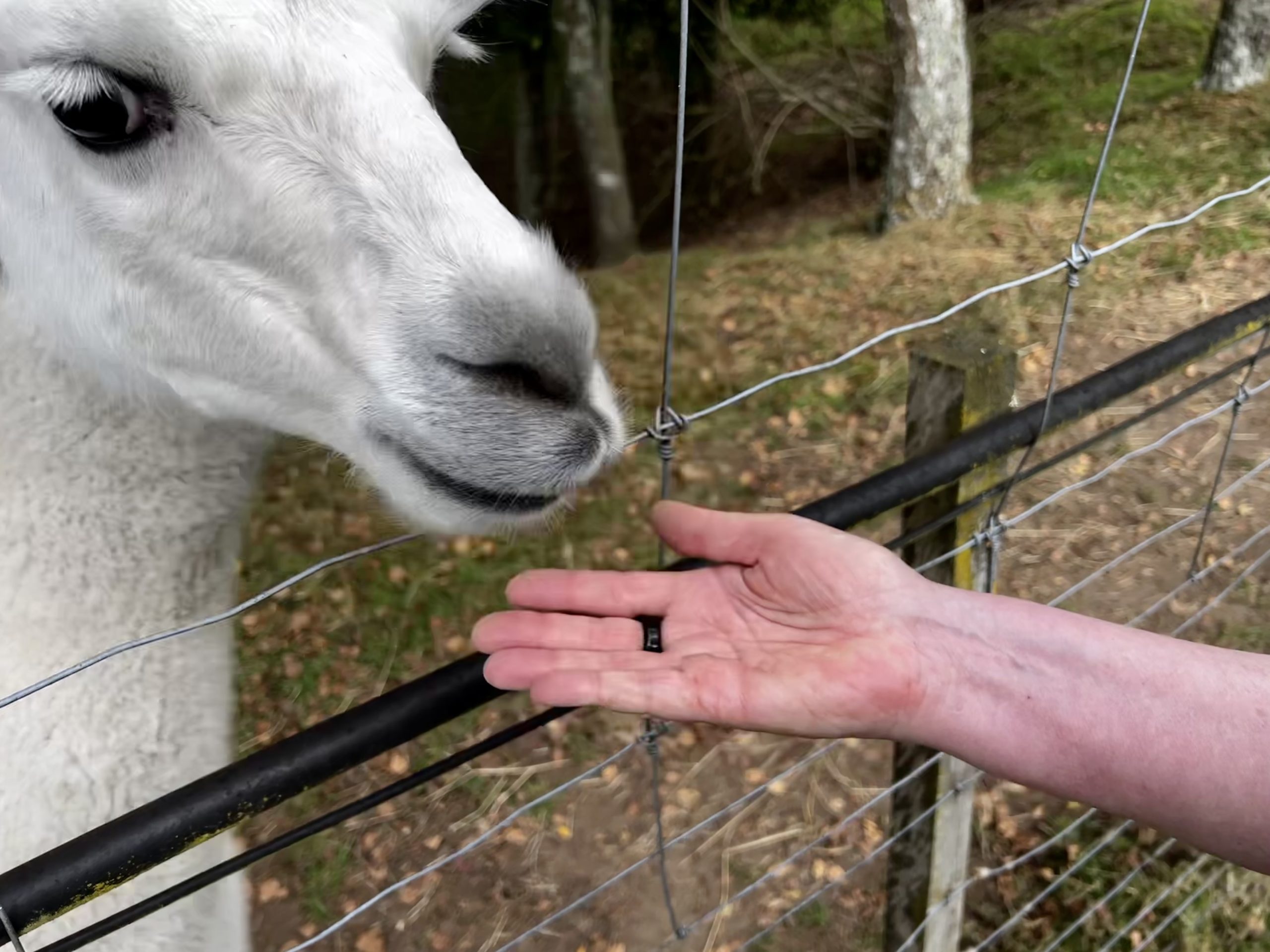
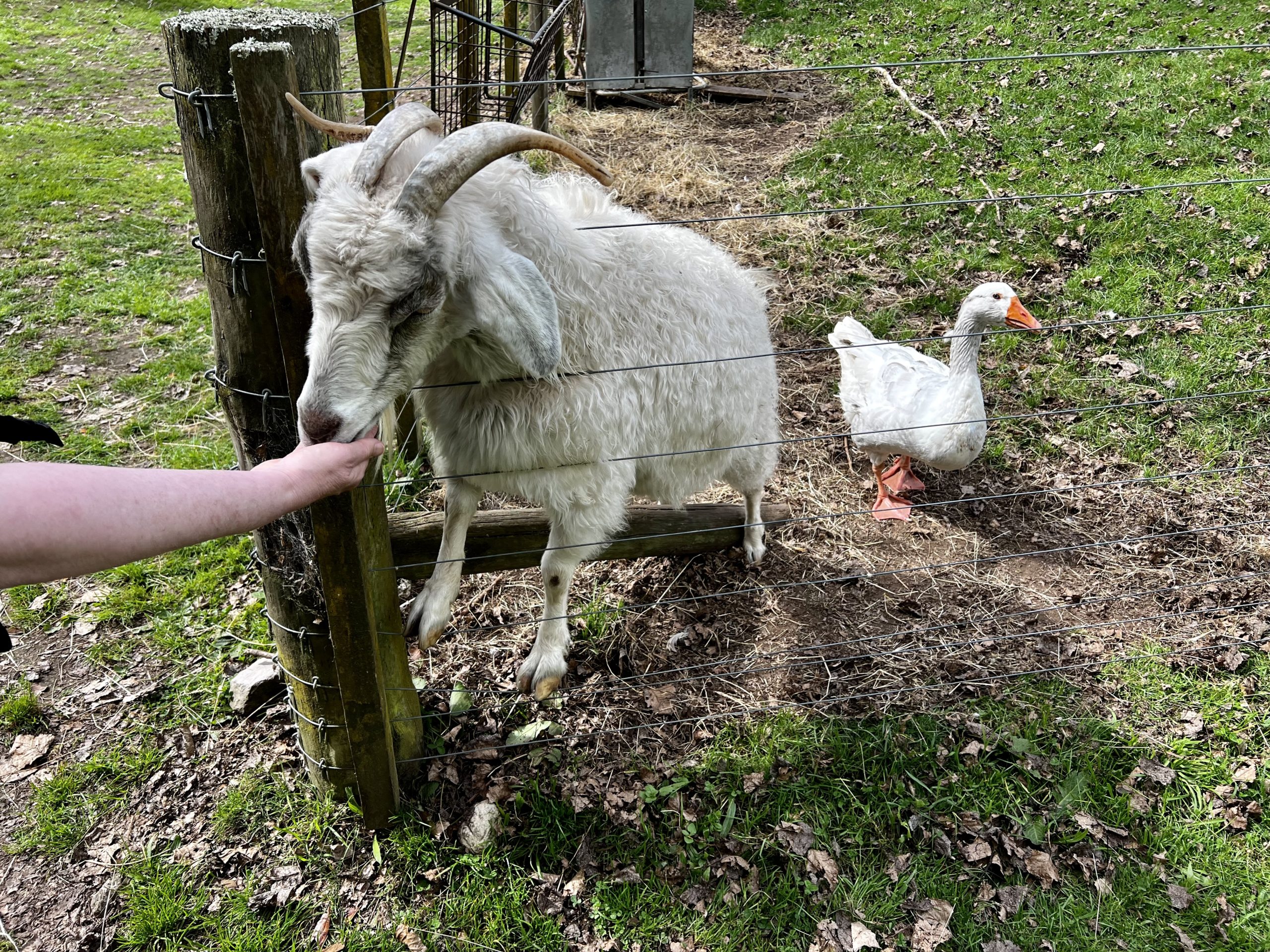
Botanical Gardens
The Botanical Gardens are run by volunteers. There is a one-way drive through the grounds with stops at several spots that provide access to themed walks such as the Floral Walk and the Camelias. Each walk is carved out of the bush with the themed planting taking up the first ten feet or so on each side. The focal point is a Memorial Grove that is has large trees, well spaced, in a lawn setting with picnic tables. No buildings, no shops, no bell chimes for sale. Very nicely done.
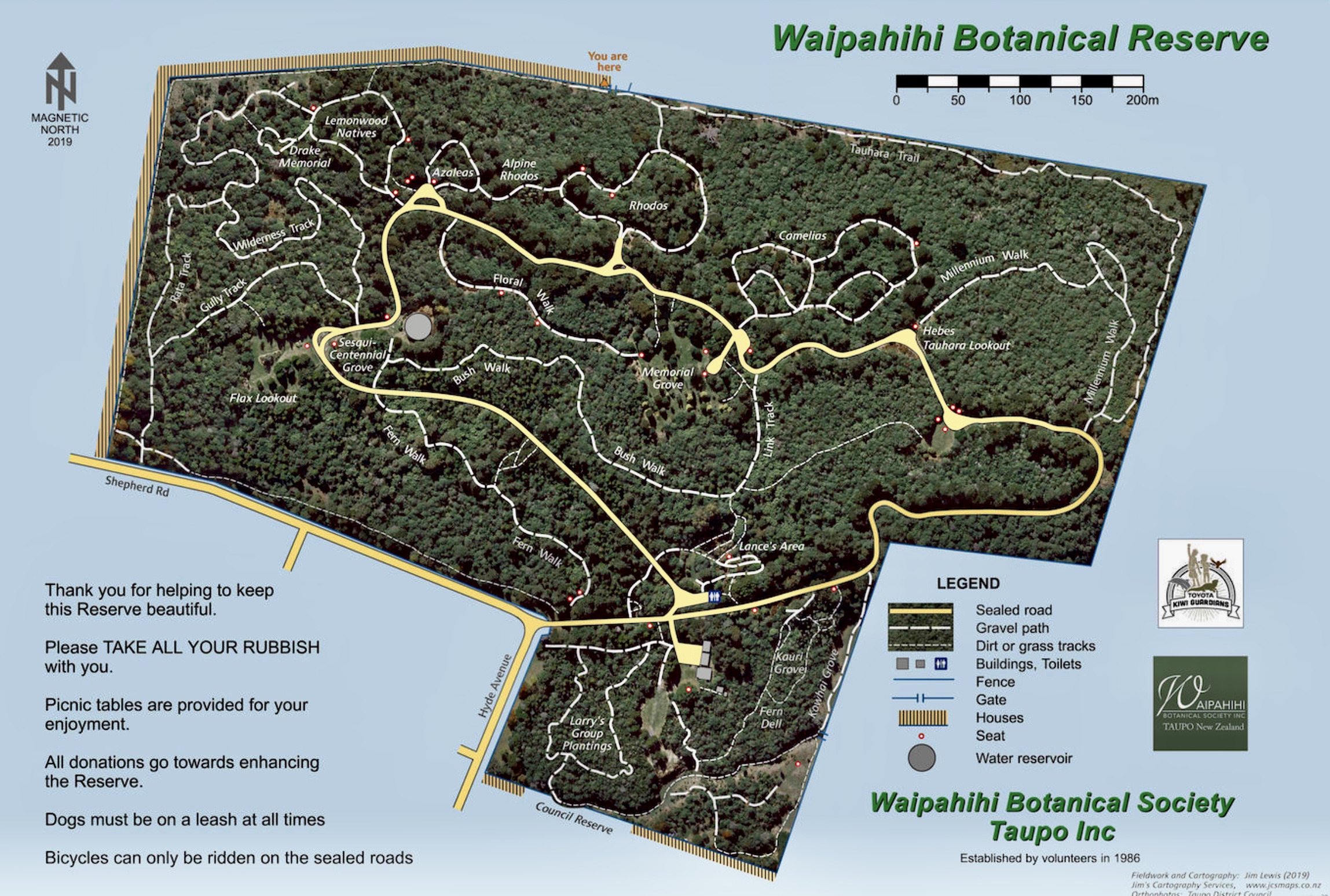
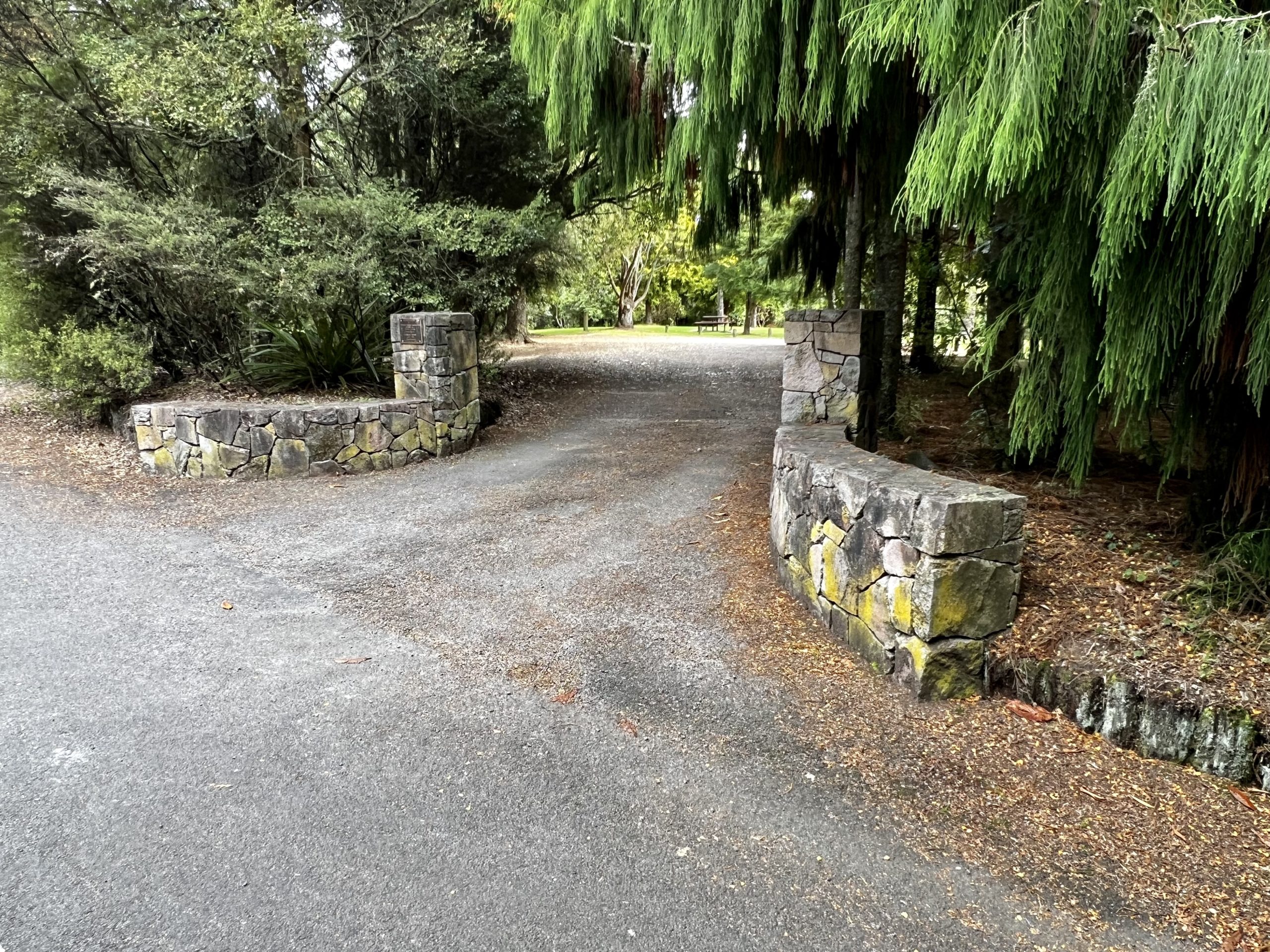
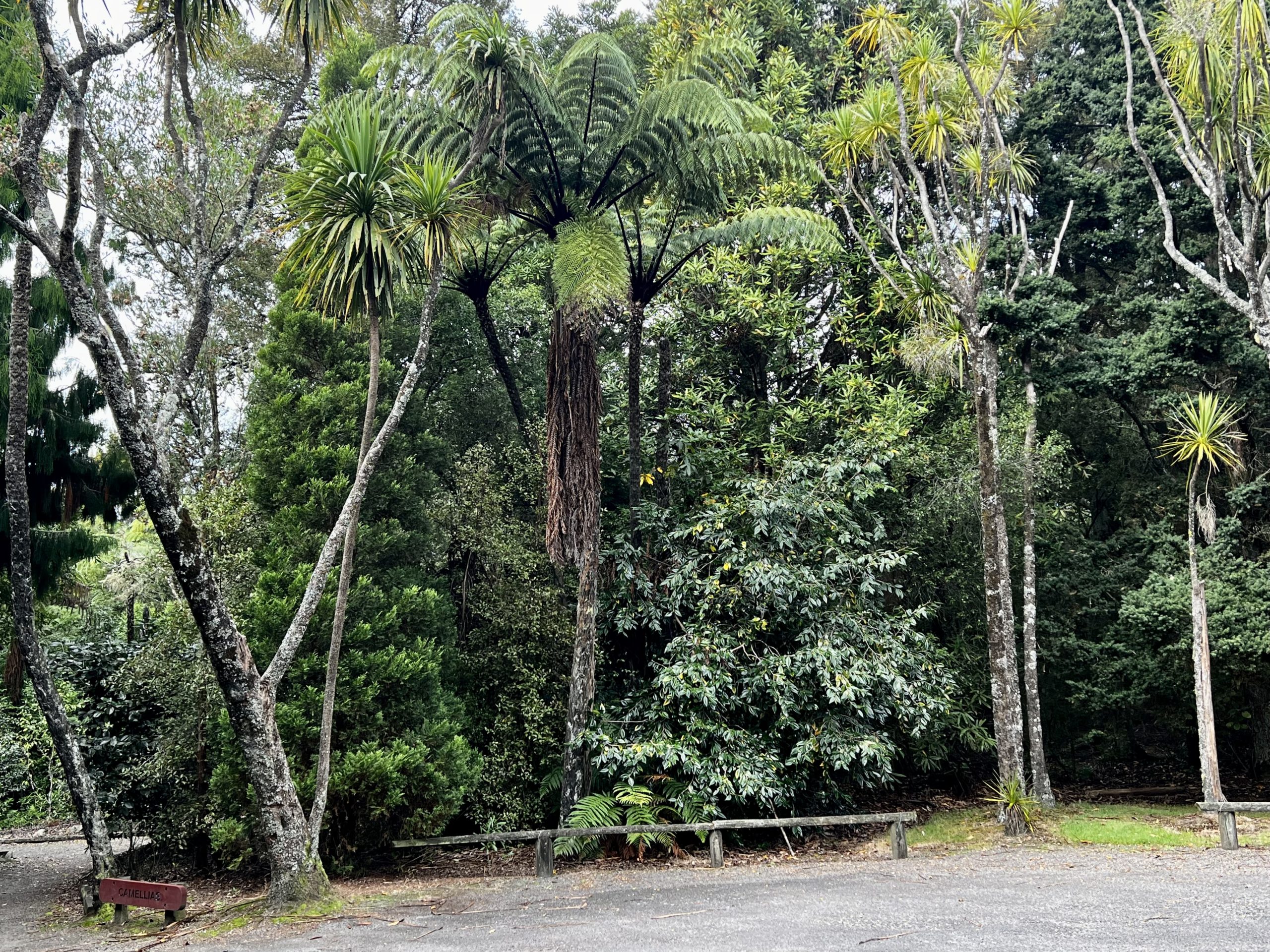
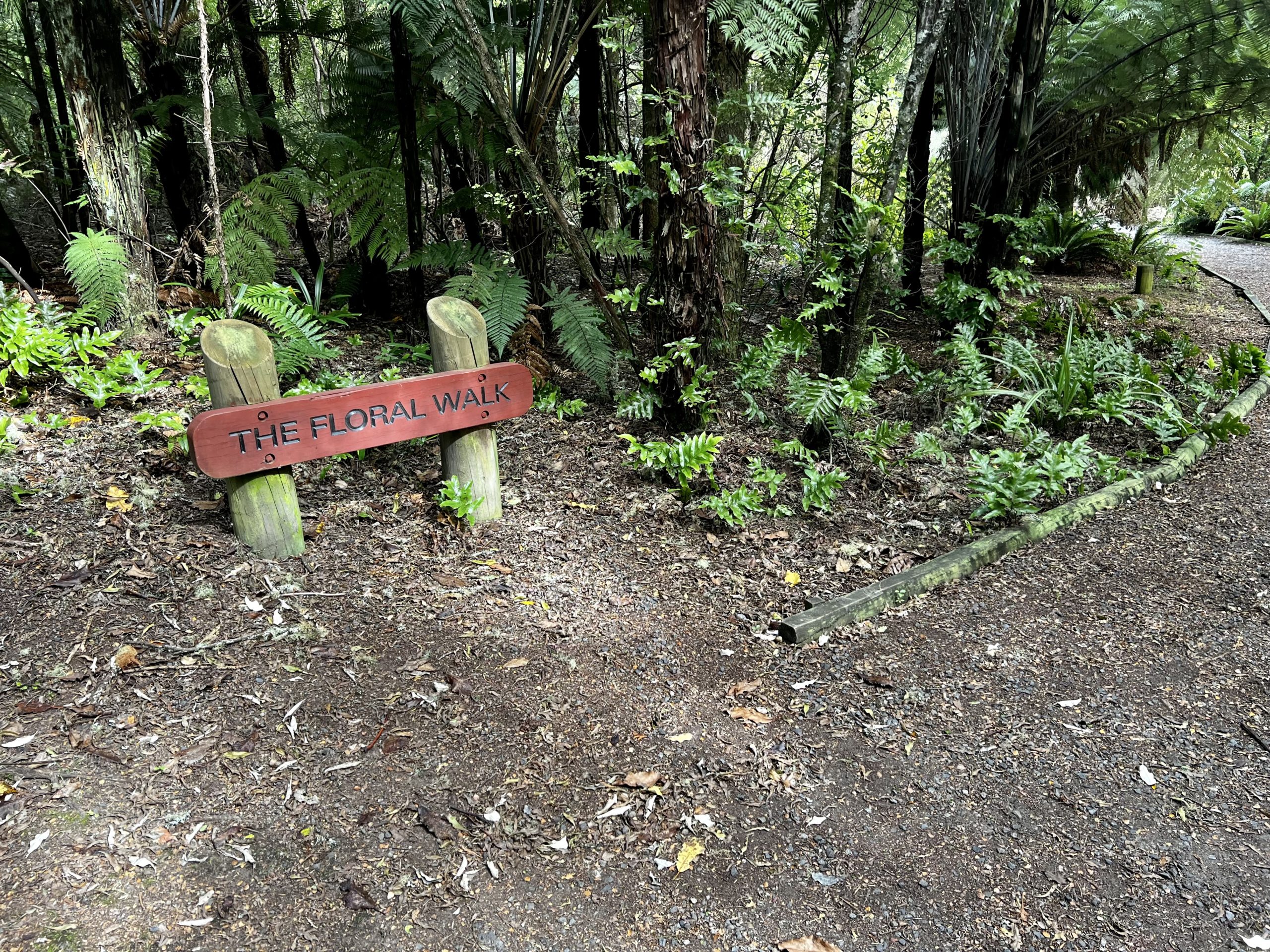
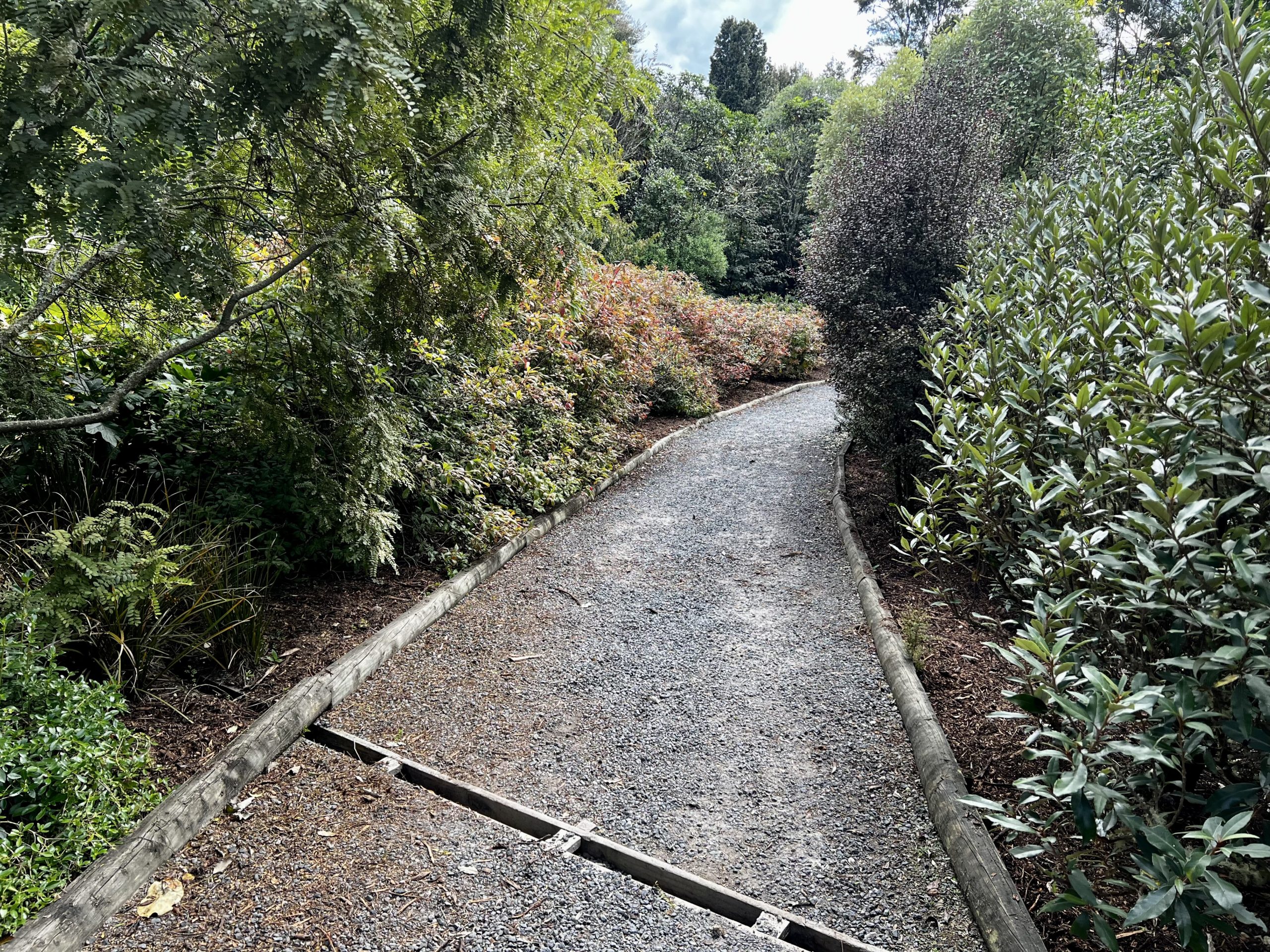
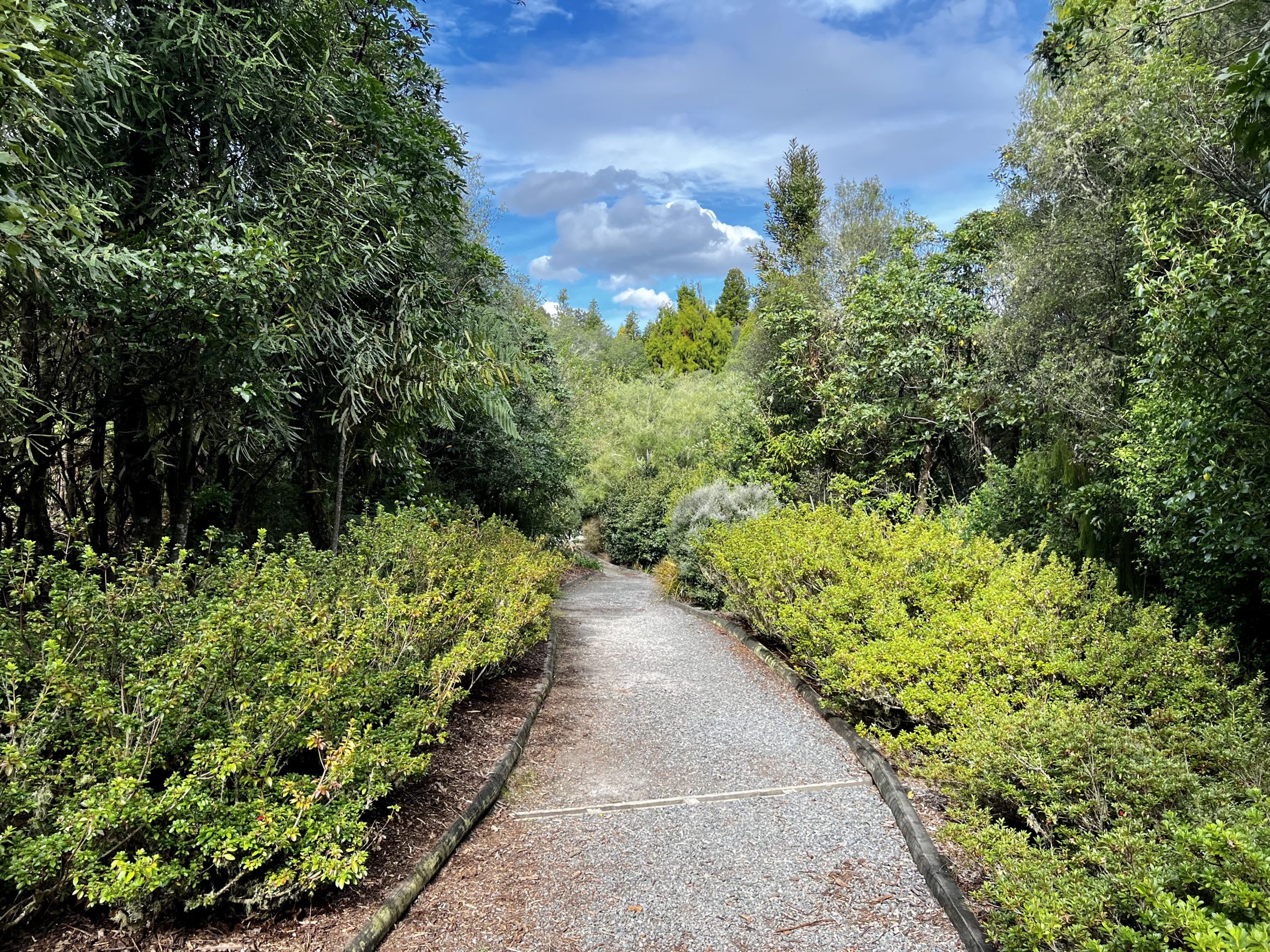
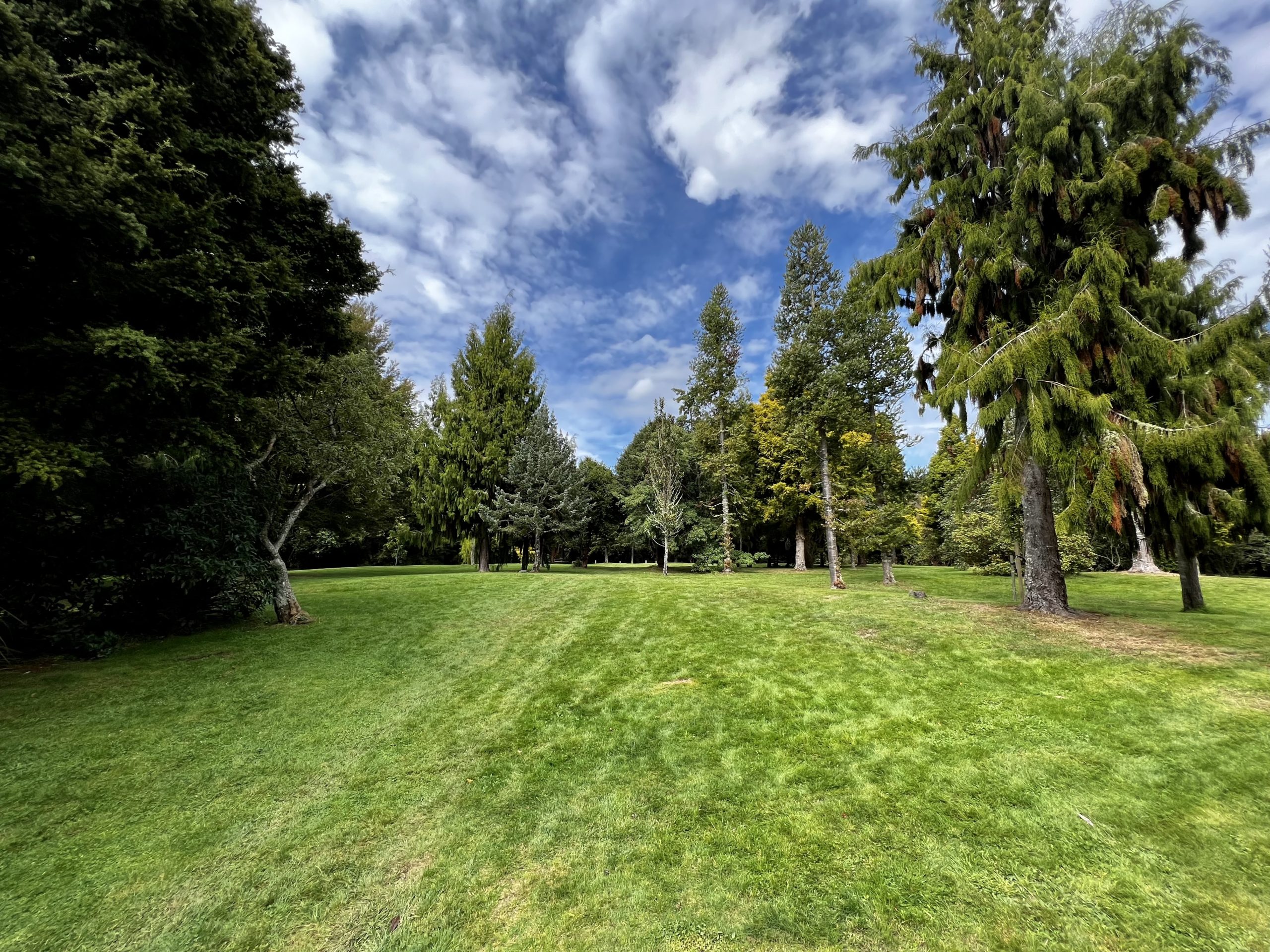
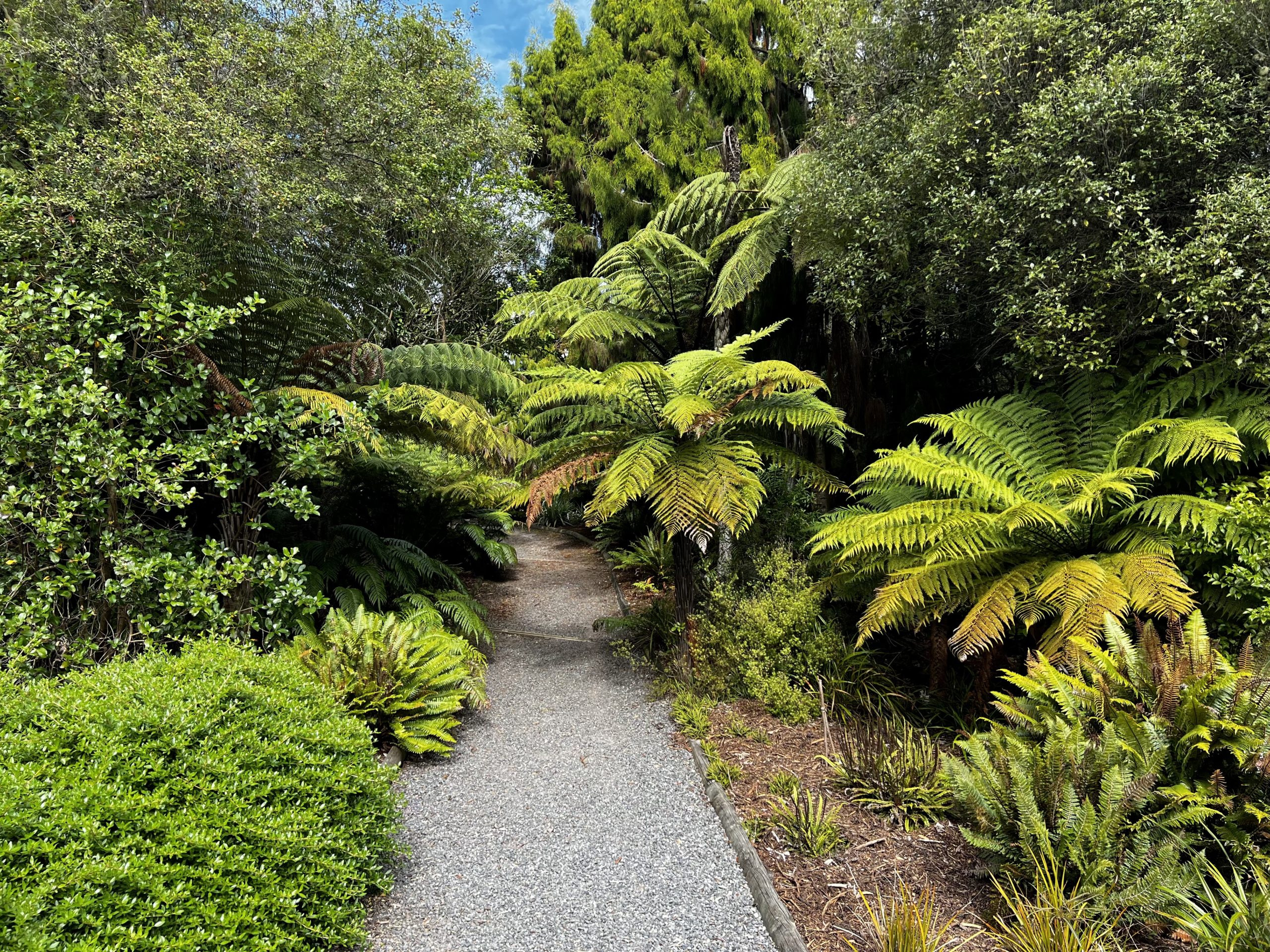
10 April 2023
Simon, Amy, Henry, and Nina and a Redwood Forest!
We made a one-hour drive north to Rotorua to see Simon, Amy, and their two children Henry (three years) and Nina (one and a half years). Simon is the son of David and Di Banks. (KITTY: You remember them for our prior posts.) Amy and Simon are both planners so we all have lots to talk about. Amy works for the local government and Simon recently went back to the private sector to work with an international design firm. Much to Bonnie’s delight, Simon refers to Bonnie as his aunt.
We had a great time with the family and took a quick tour of Rotorua’s town centre and then went for a walk in the fifteen-acre forest of California Coastal Redwoods.
Simon and Amy let us know the next day that Henry told them he liked the visitors (us)!
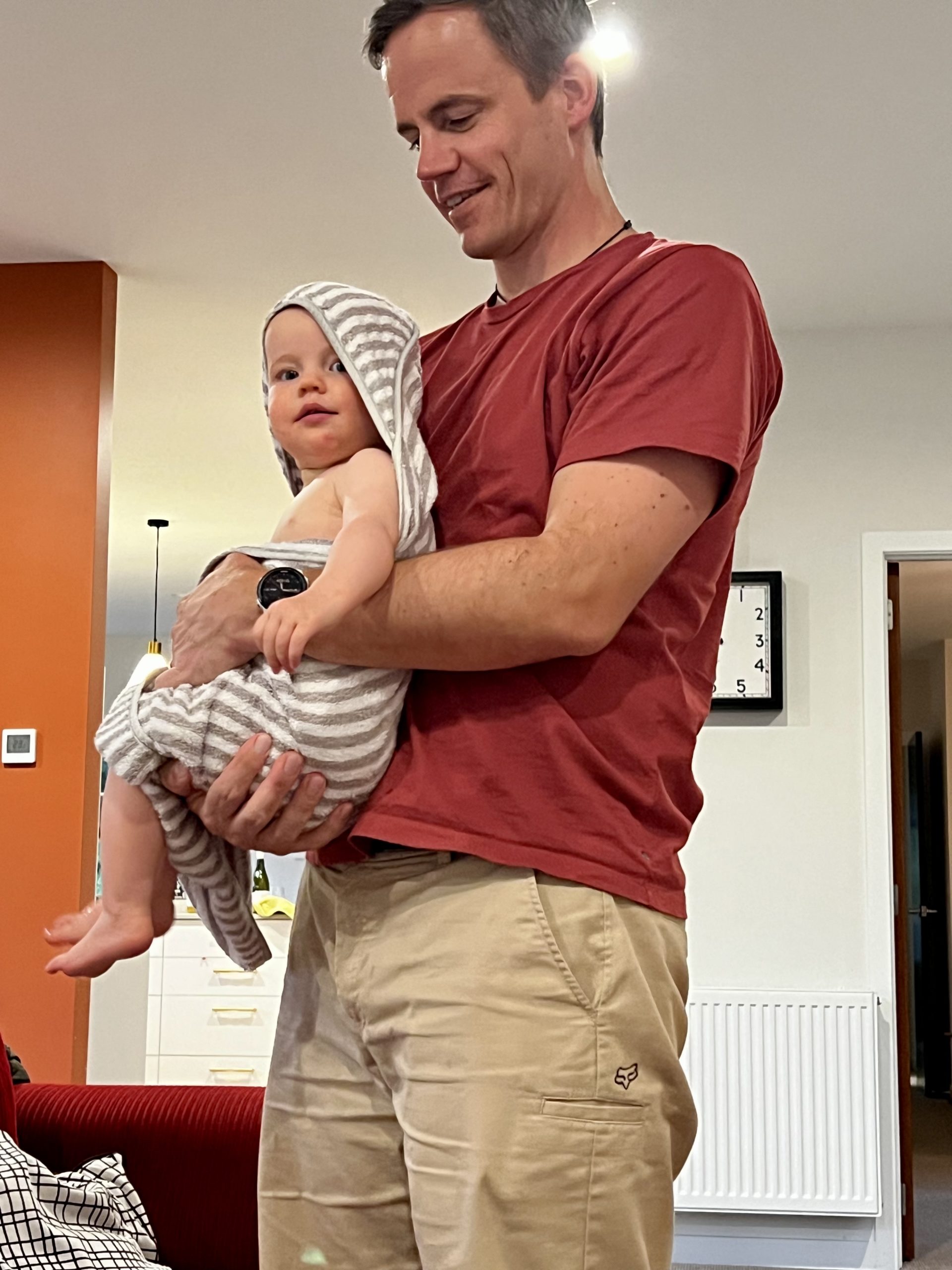
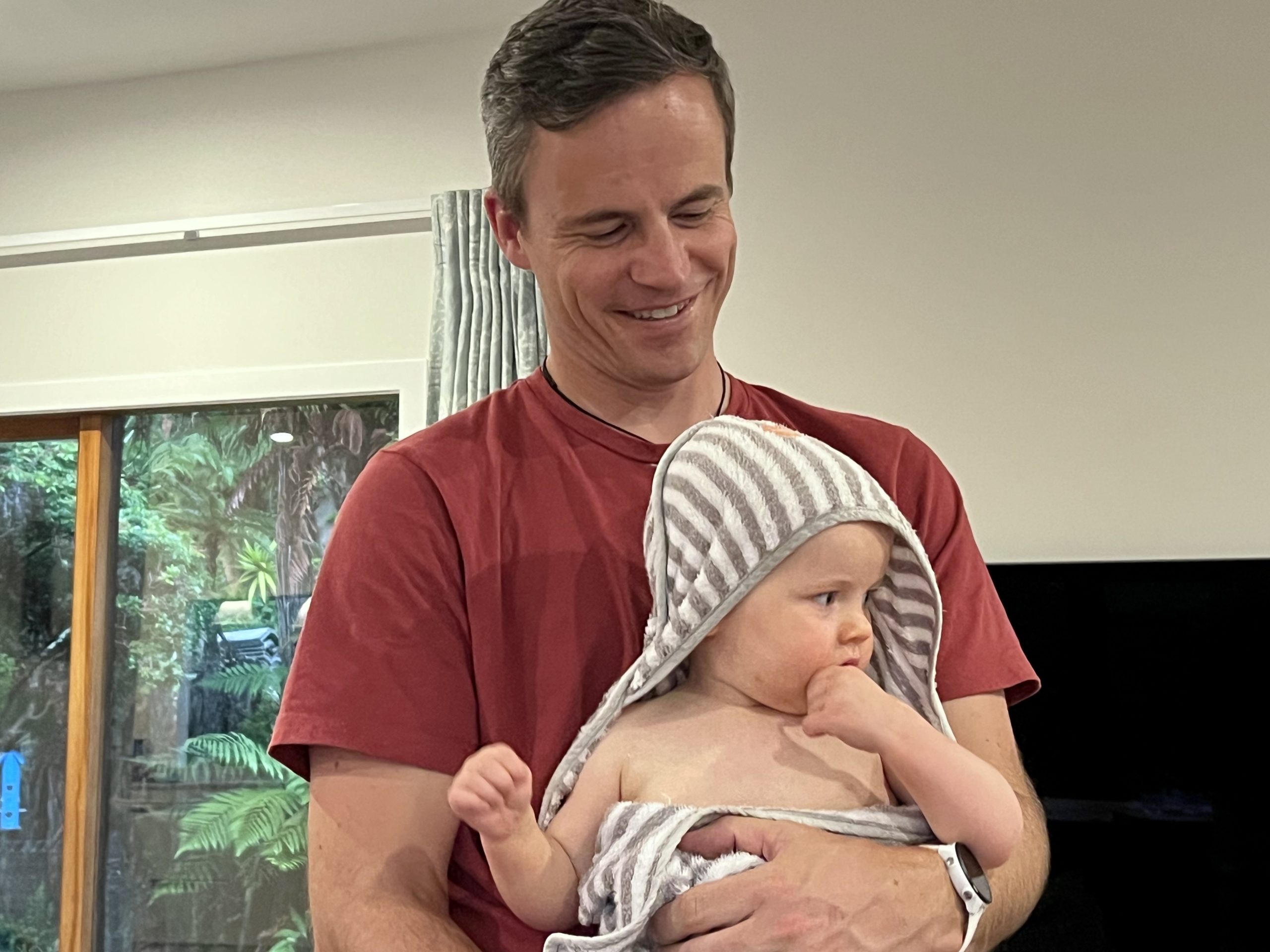
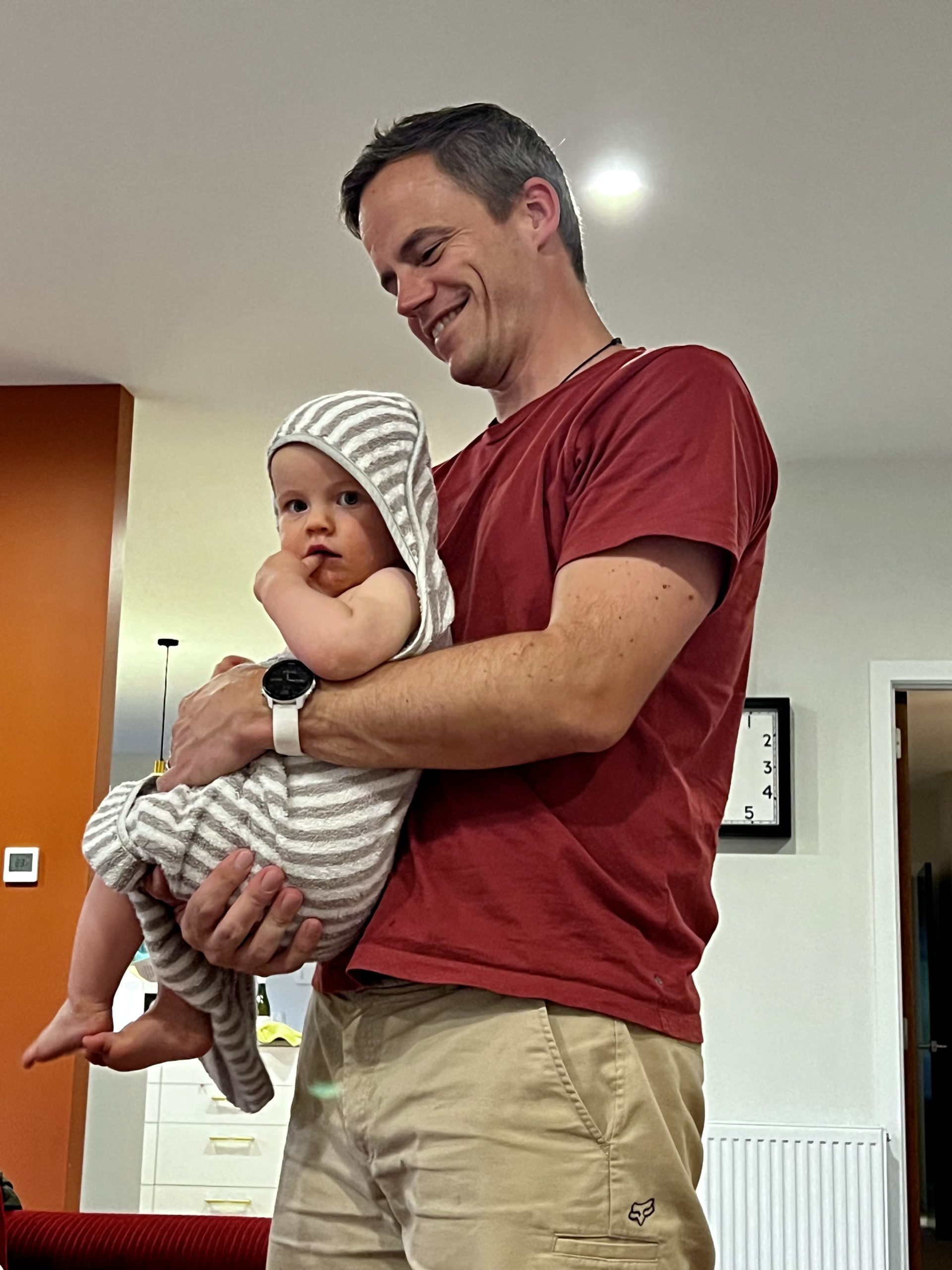
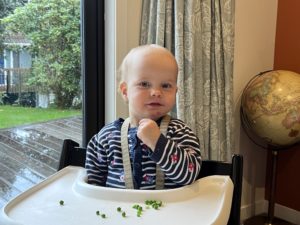
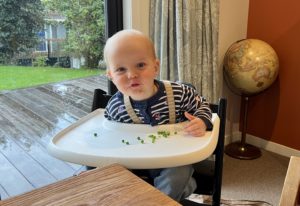
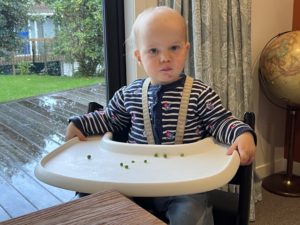
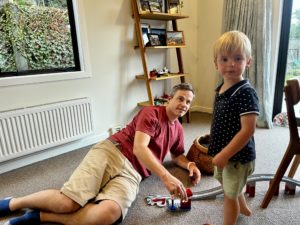
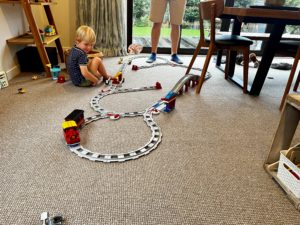
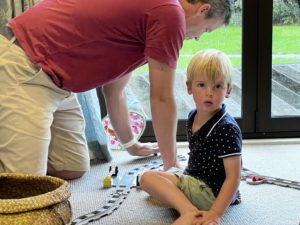
Brief Tour of Rotarua
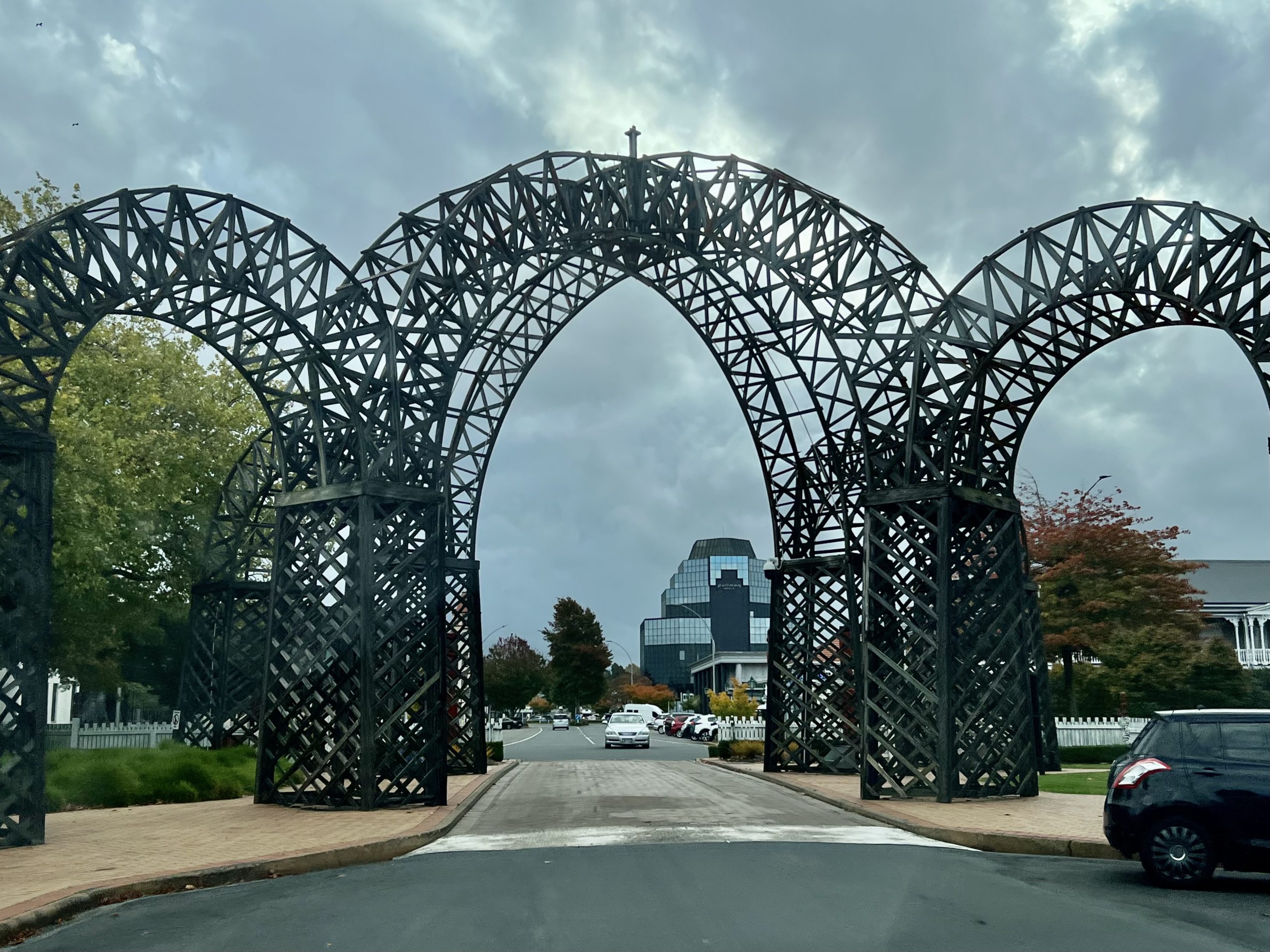
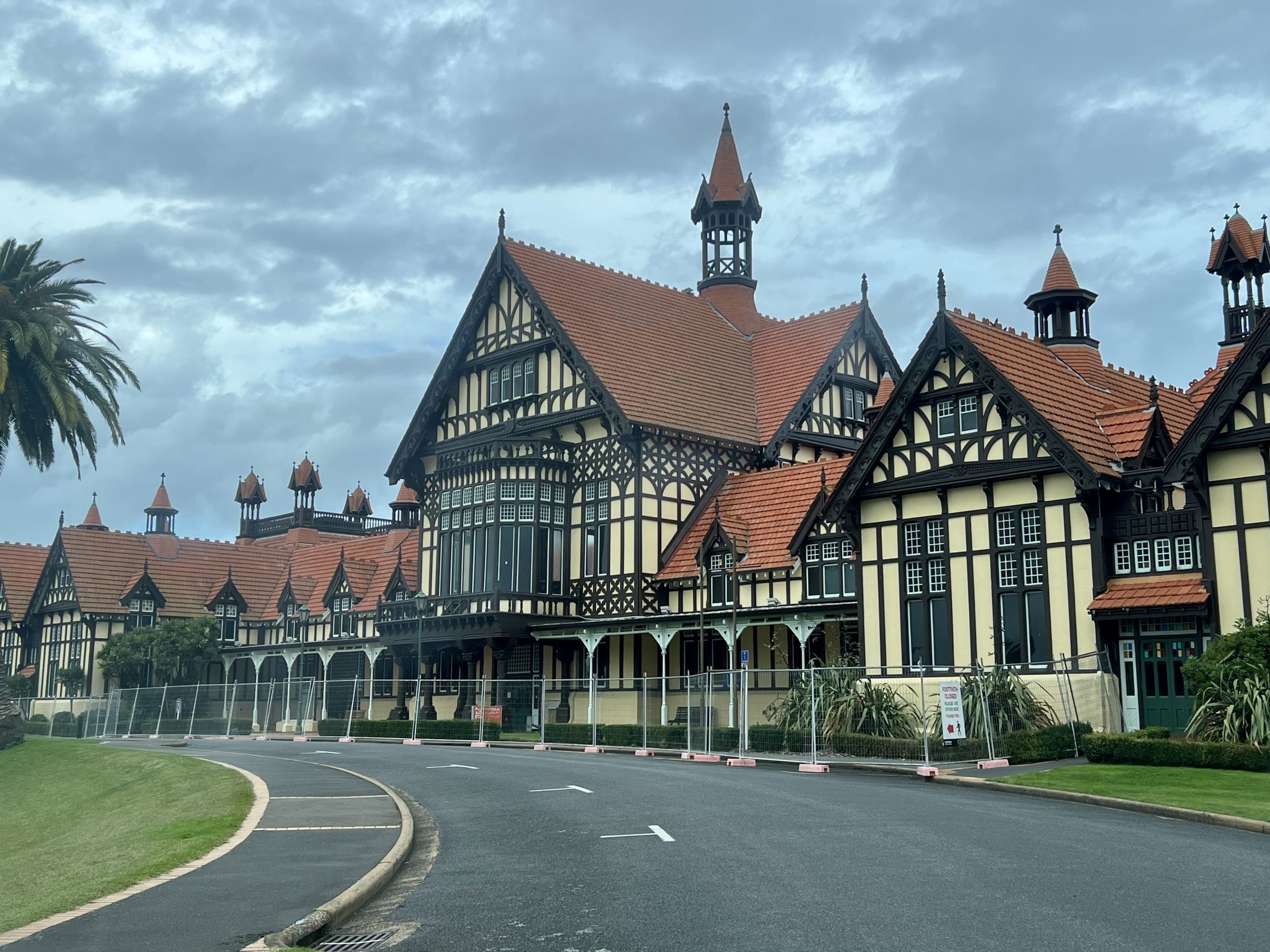
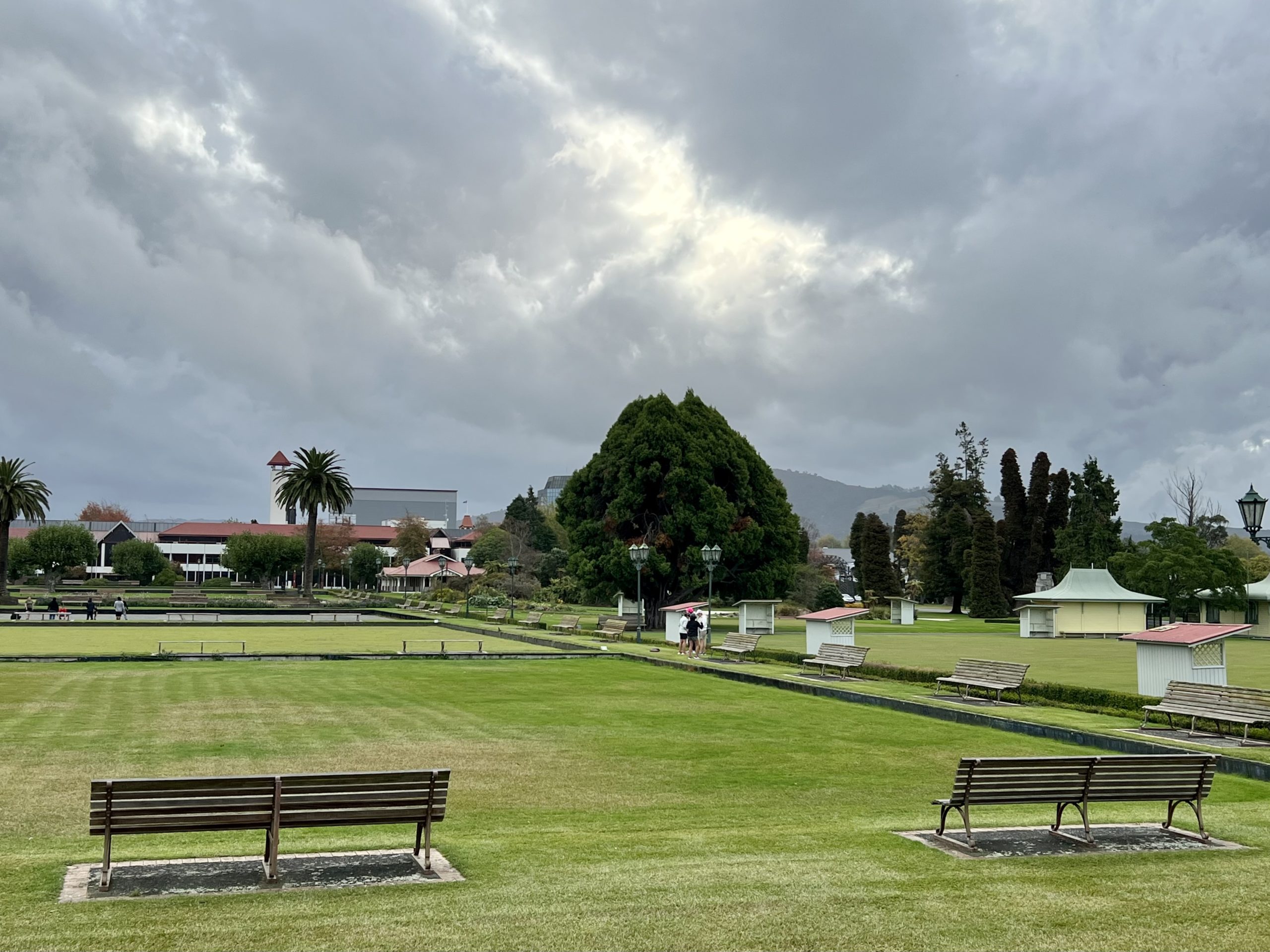
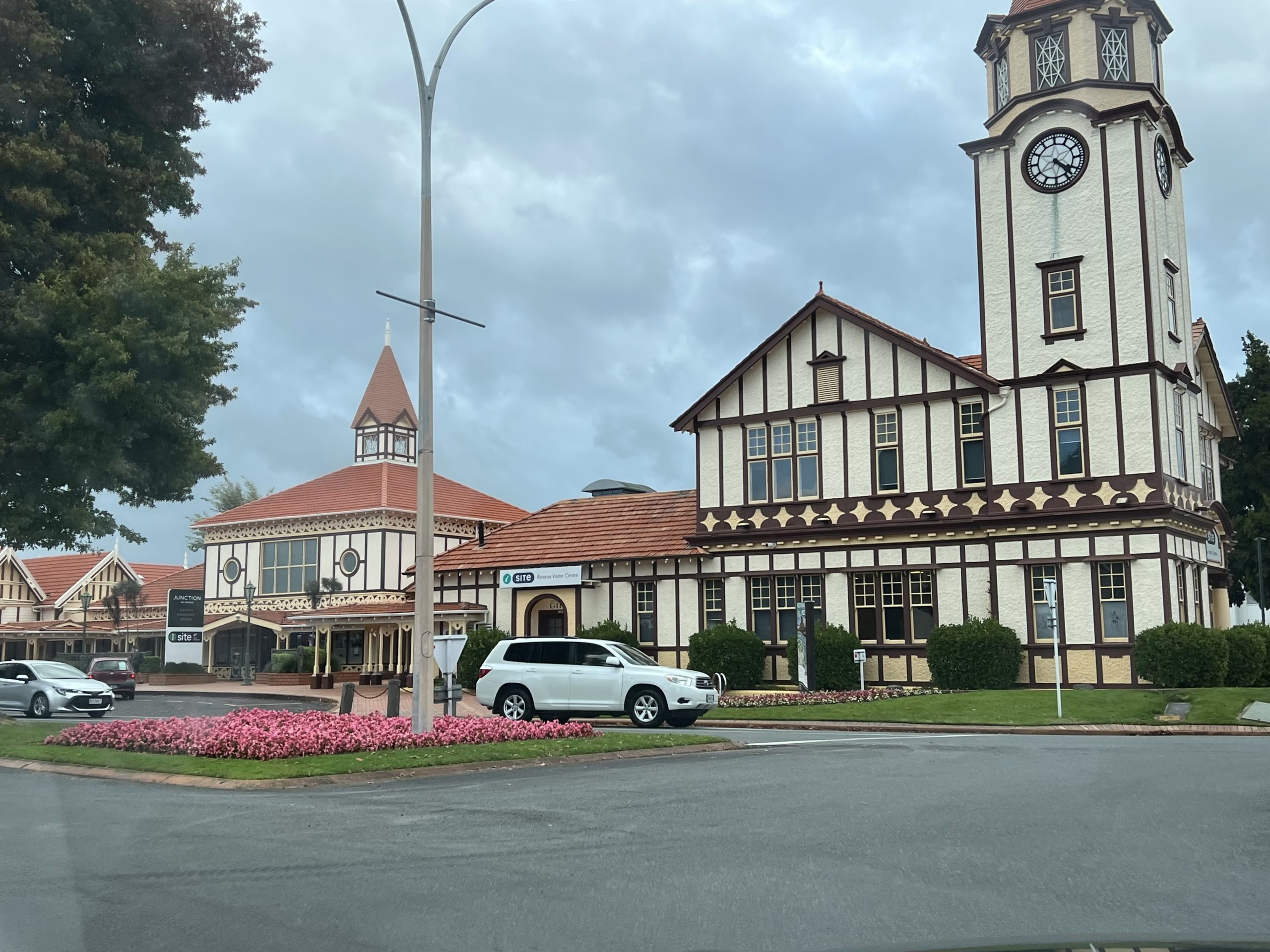
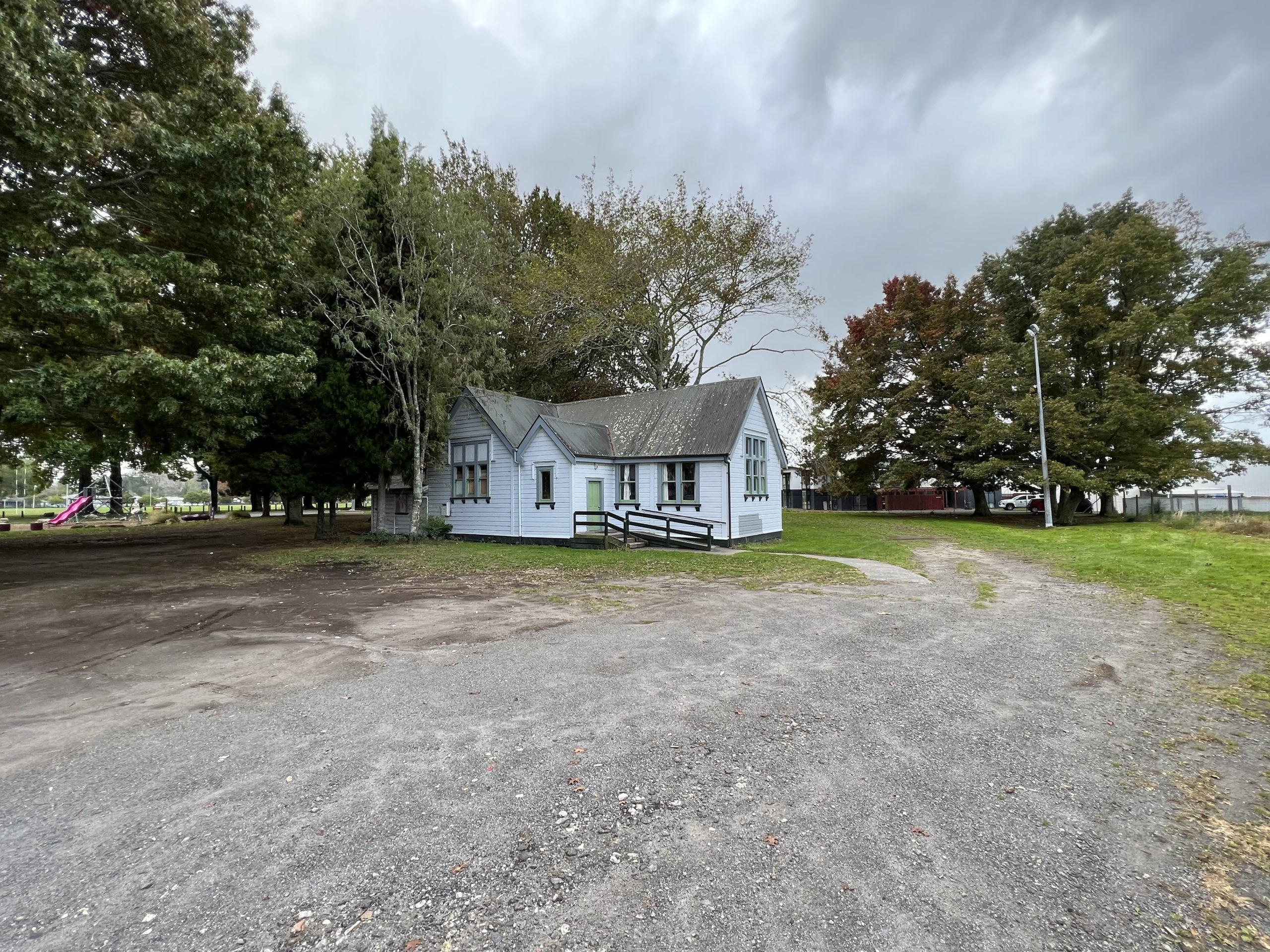
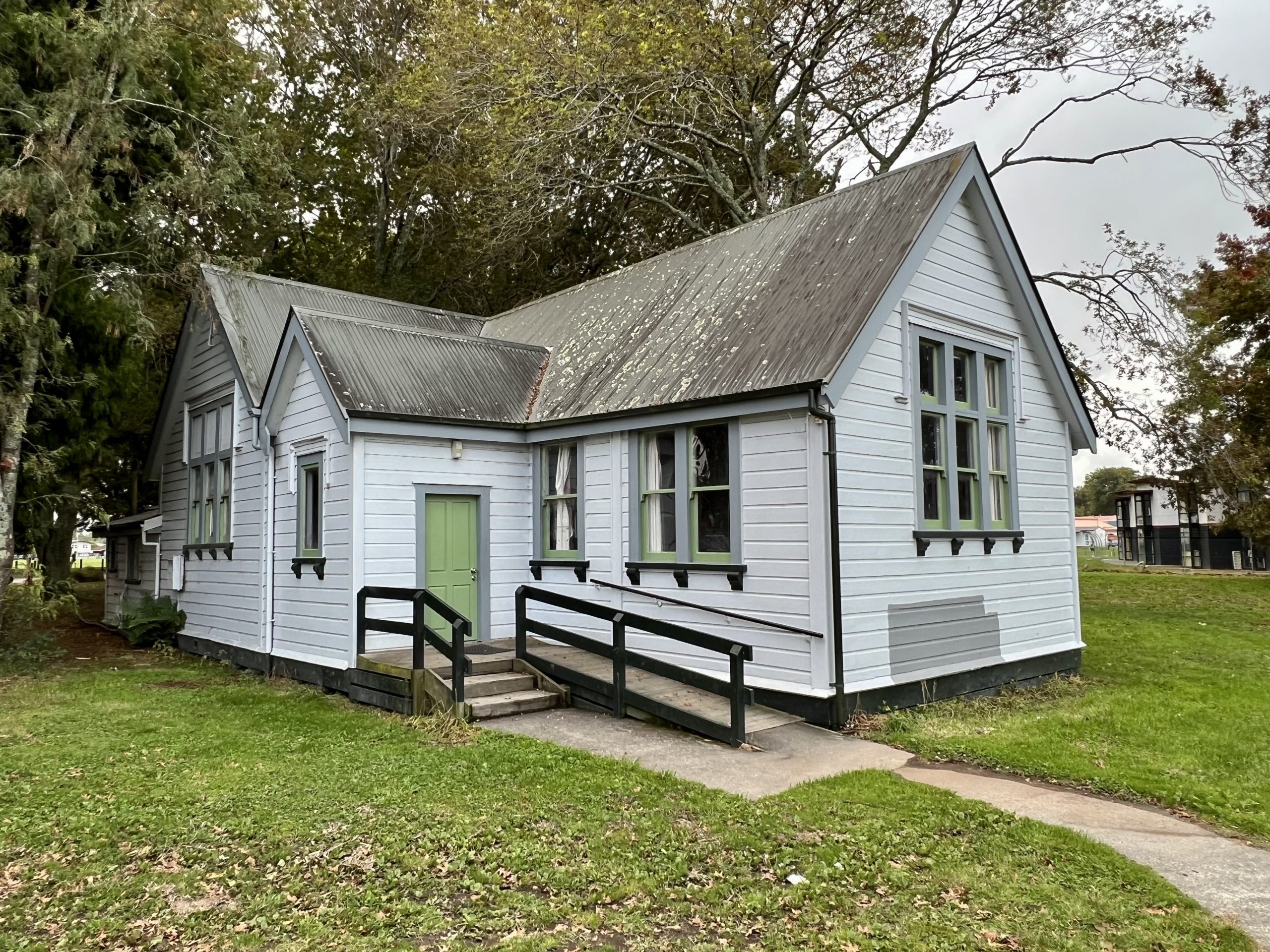
Redwood Forest
The plantings are part of a larger effort by the New Zealand government in the beginning of the 20th century to identify a viable tree species to replace the native trees that were clear cut for lumber. Prison labor planted this swatch in 1901. The lumber proved too soft for the desired time frame, resulting in the eventual transfer of the property to the local Māori iwi (tribe). With the rich well-drained soil and high rainfall, these trees have reached more than 70 meters (230 feet) in height in only 100 years—reaching a harvest potential in a quarter to half the time needed in California. Some still believe that redwoods have a future for lumber in New Zealand if they carefully select the ones with the desired high quality wood properties.
The forest’s introduced understory includes numerous species of ferns, making the composition of redwoods and ferns a delightful and strange composition to the eyes of us Californians. Walking in the park is free and we saw many families taking advantage of this. Amy said that this was a great walk during hot summer days. Within the past ten years, the park has introduced swing bridges and flying foxes (zip lines).
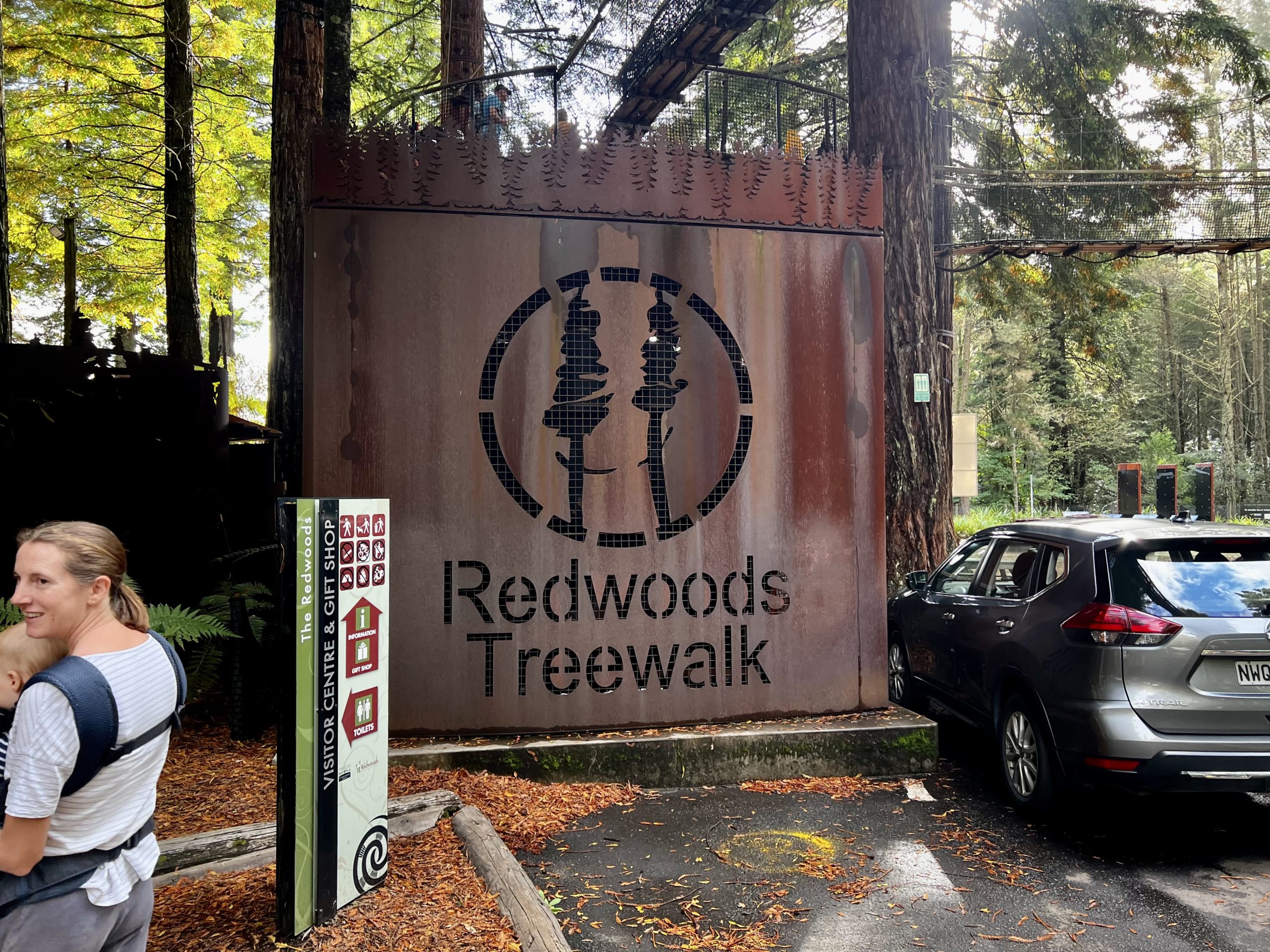
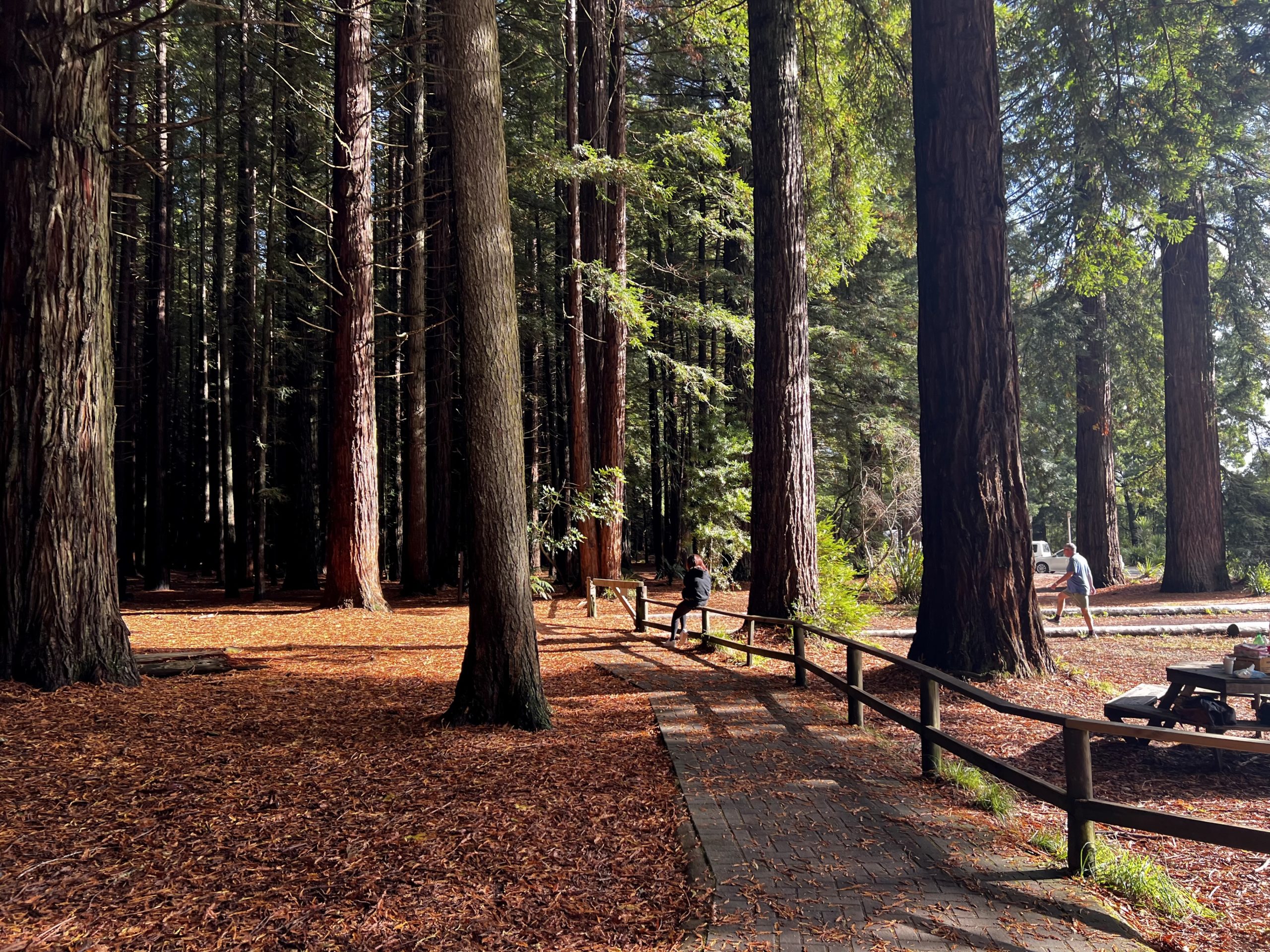
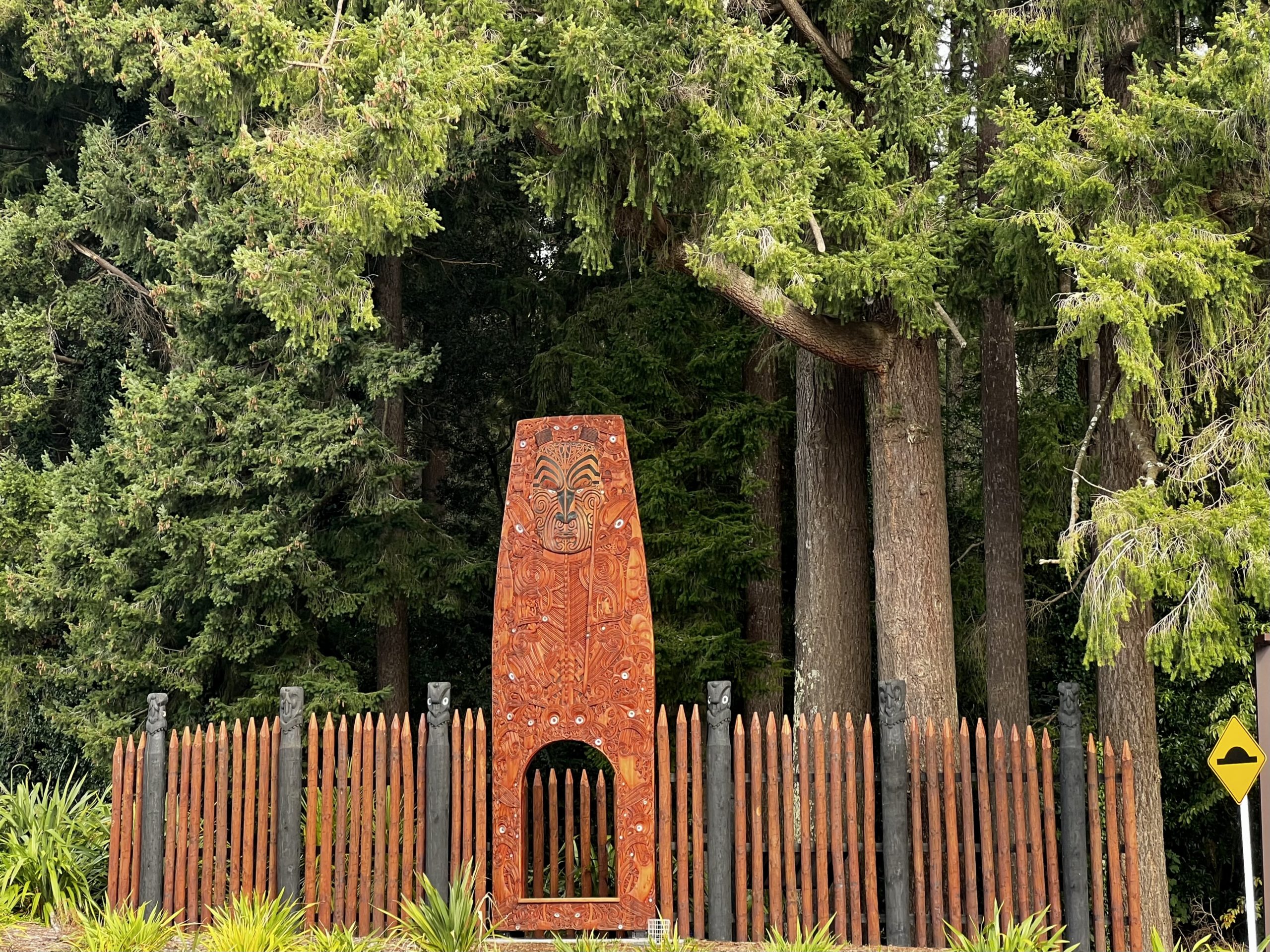
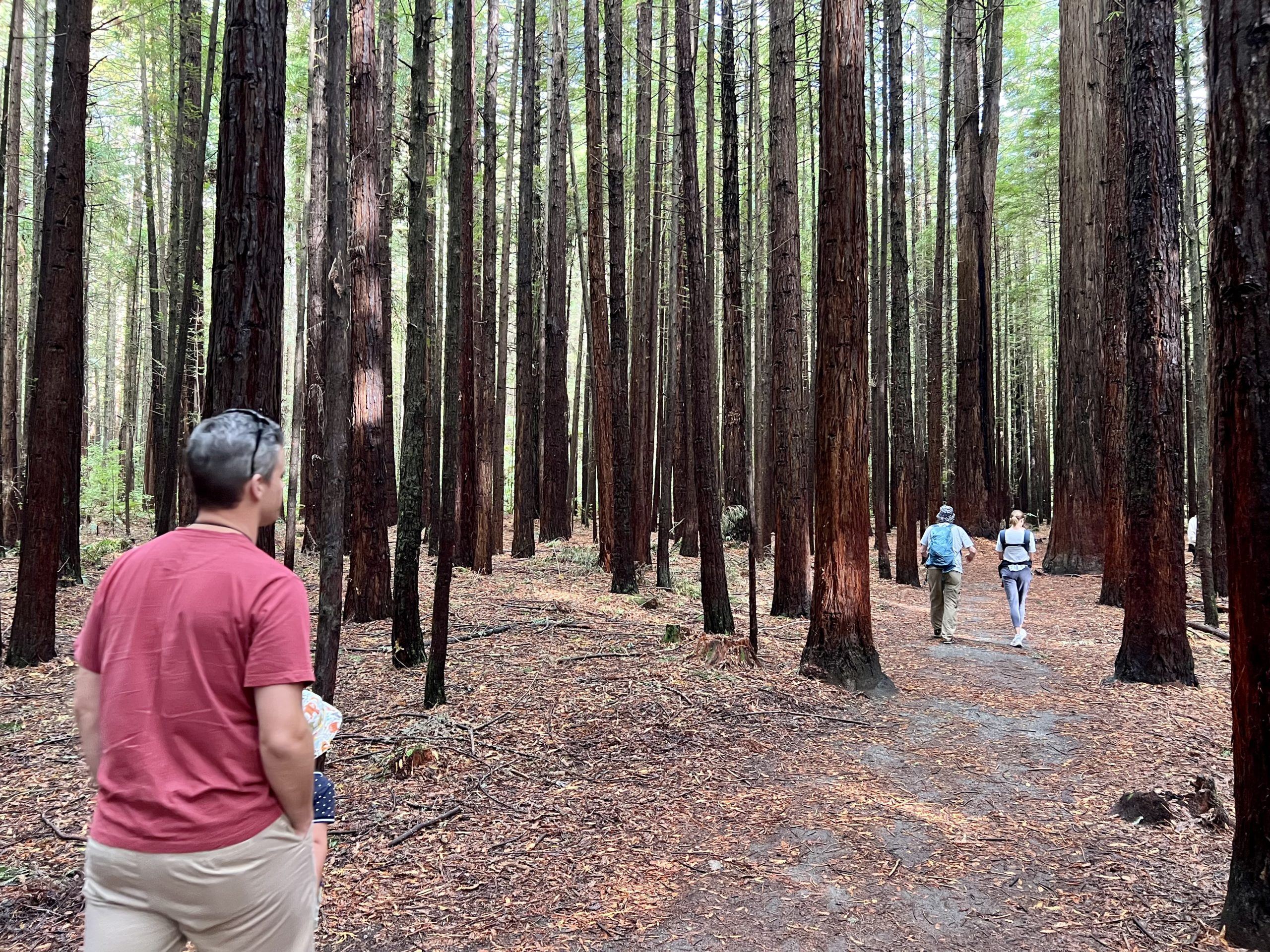
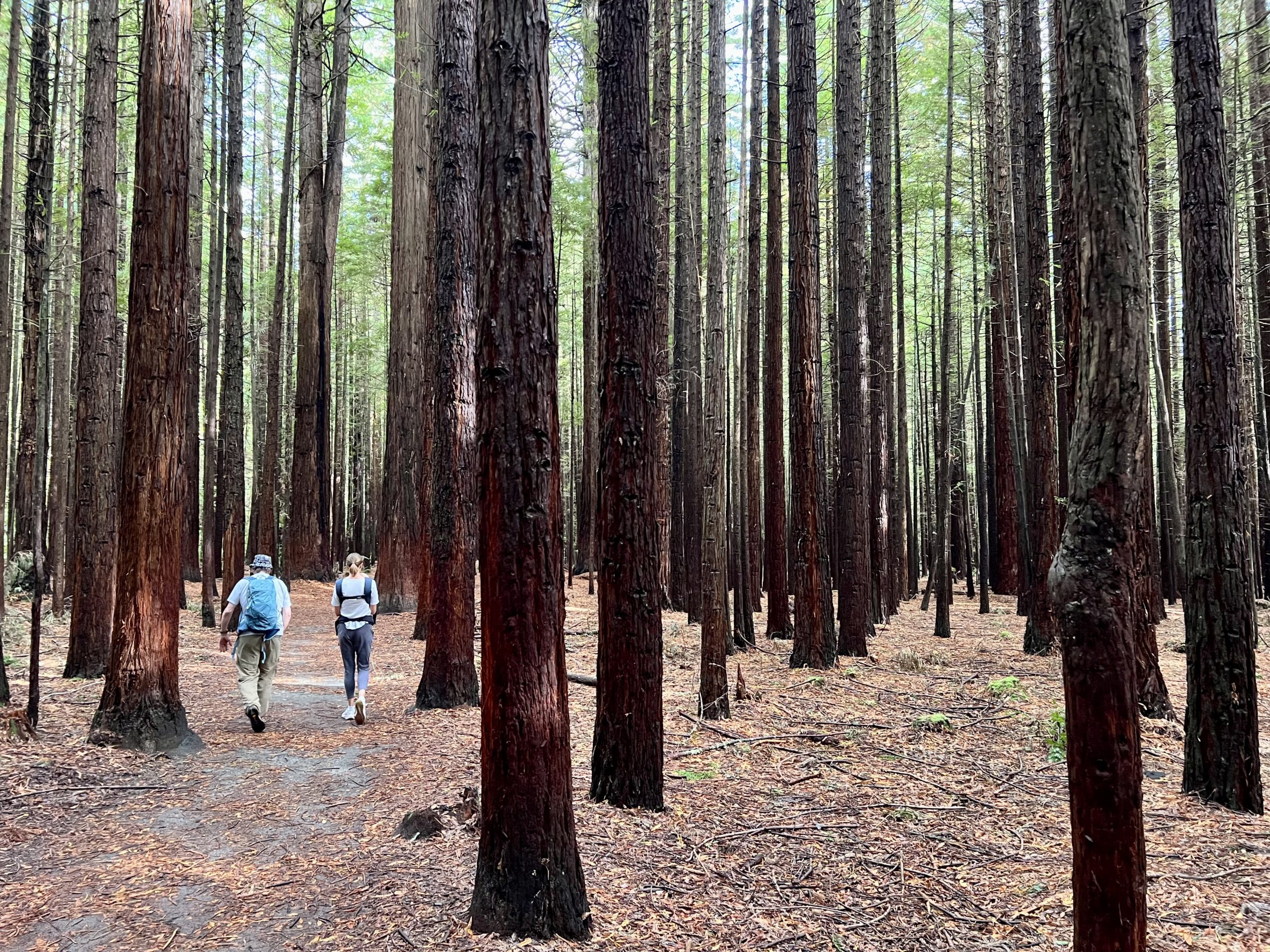
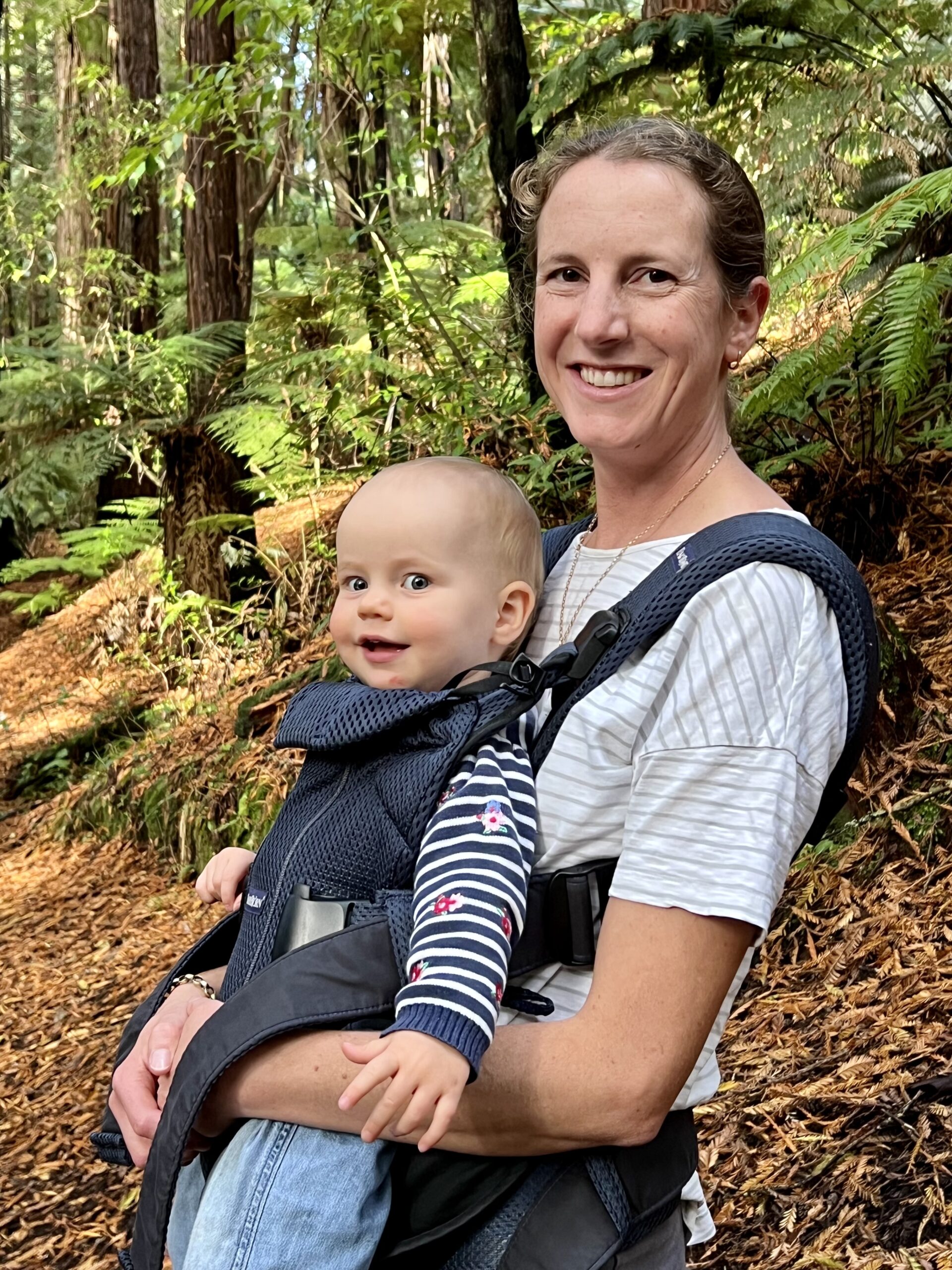
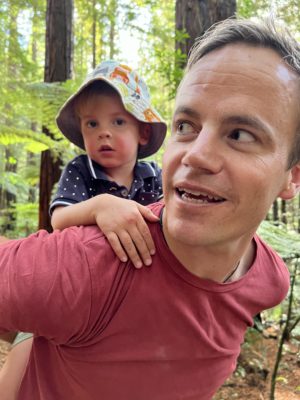
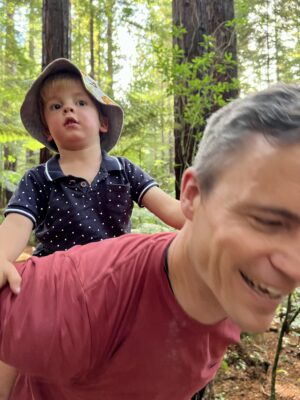
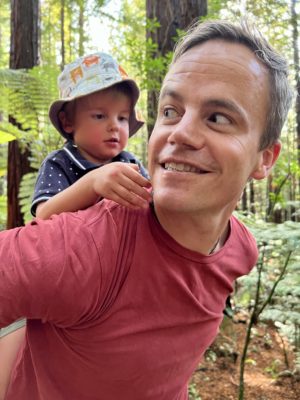
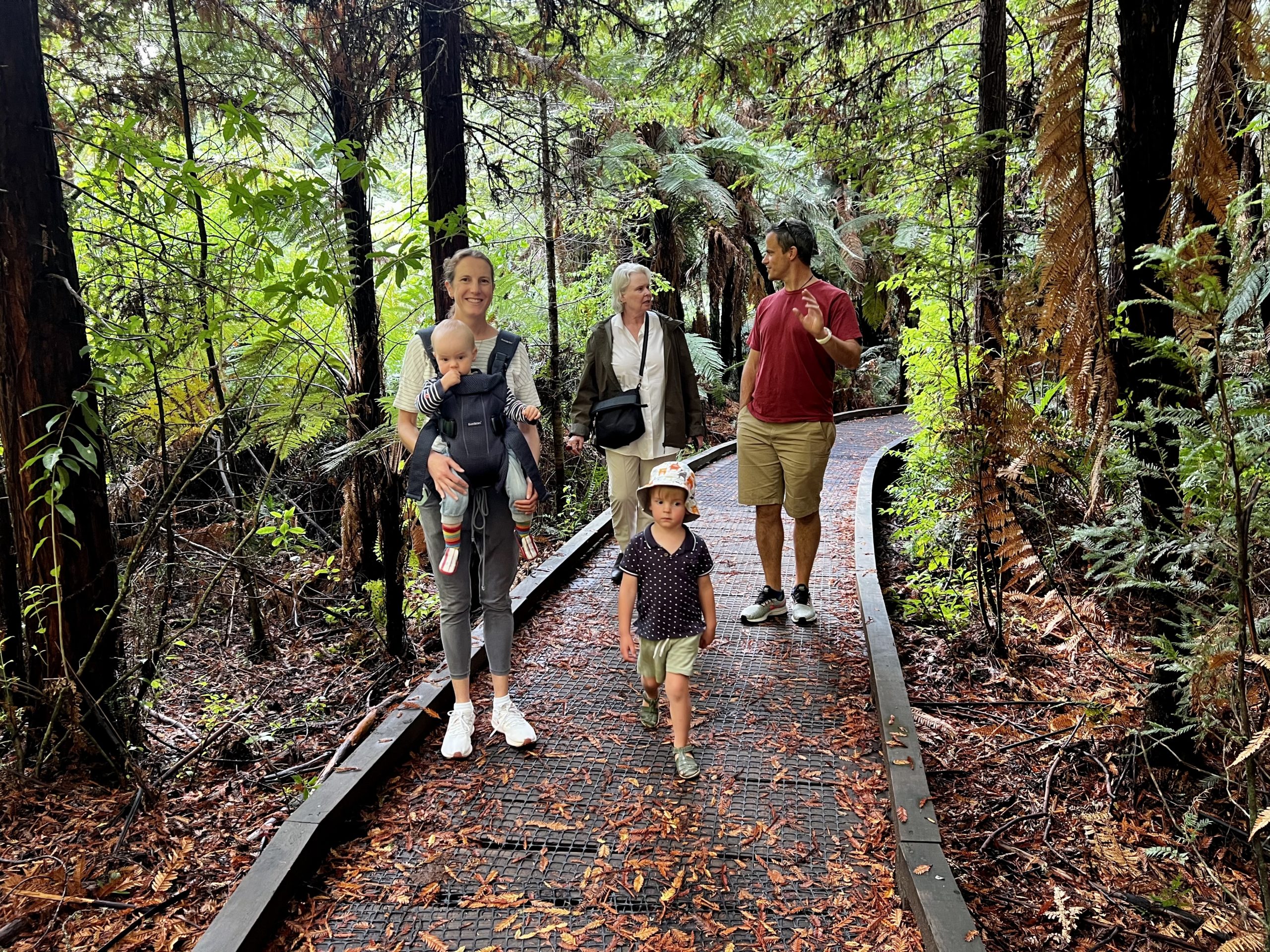
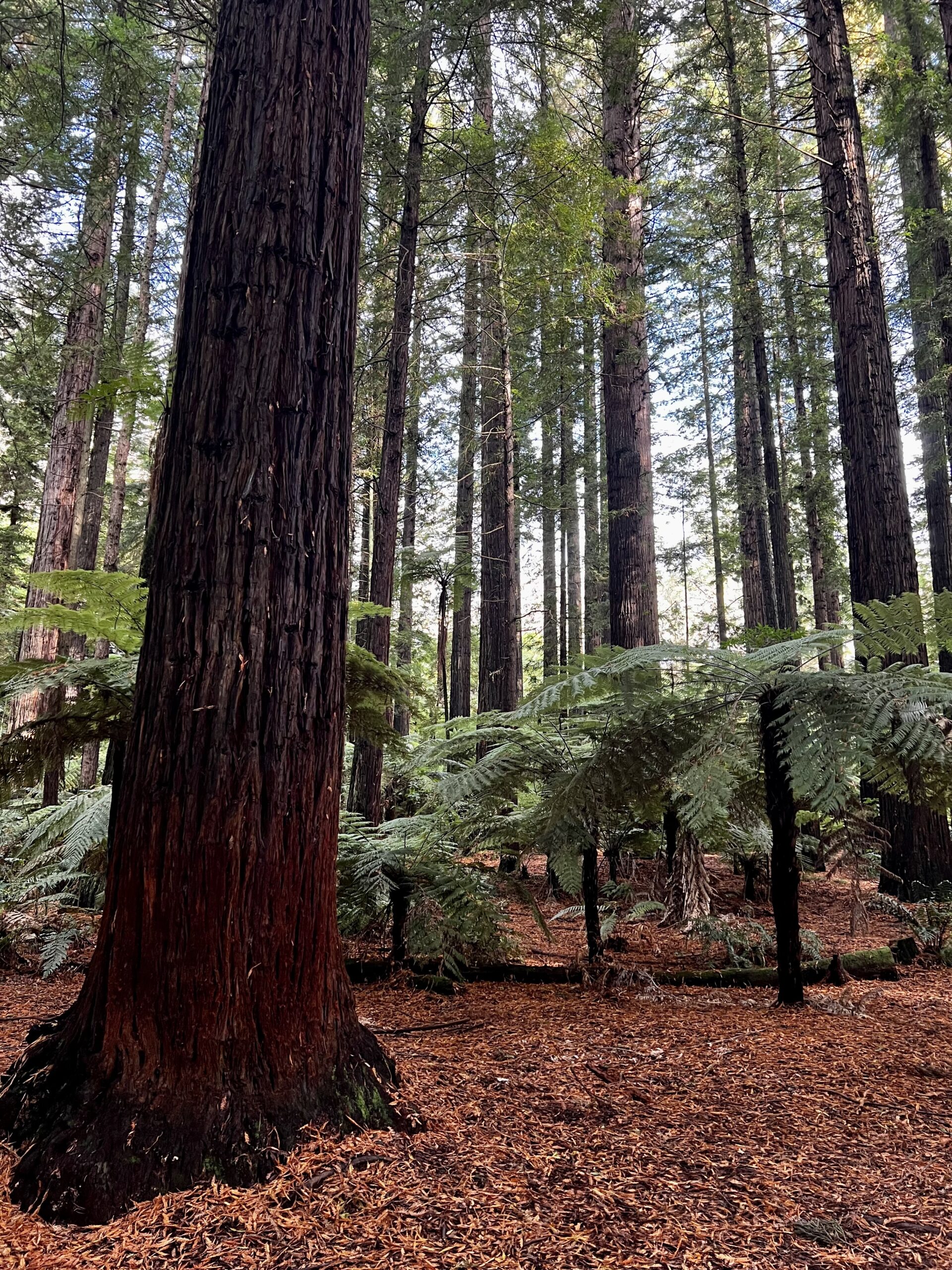
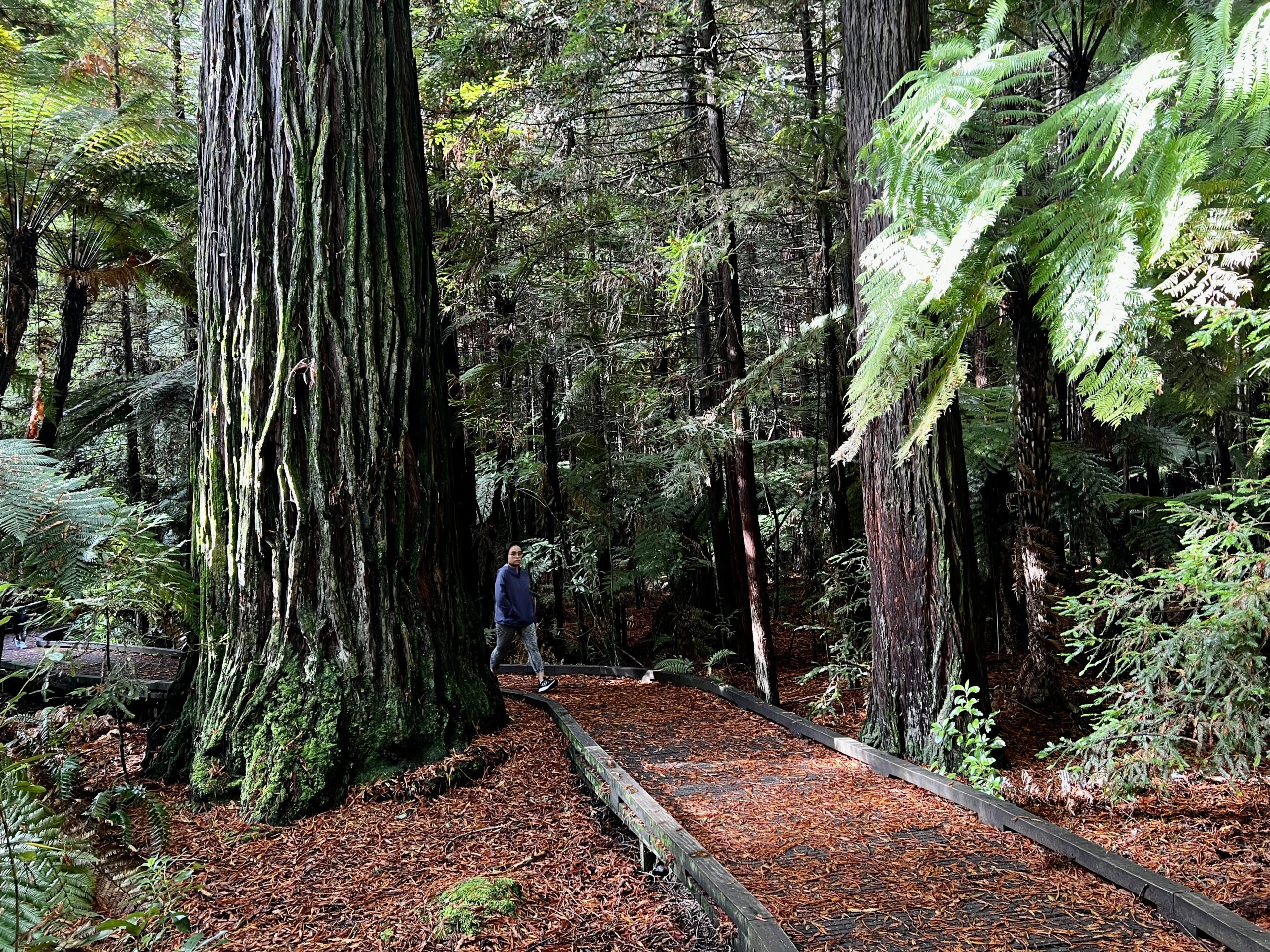
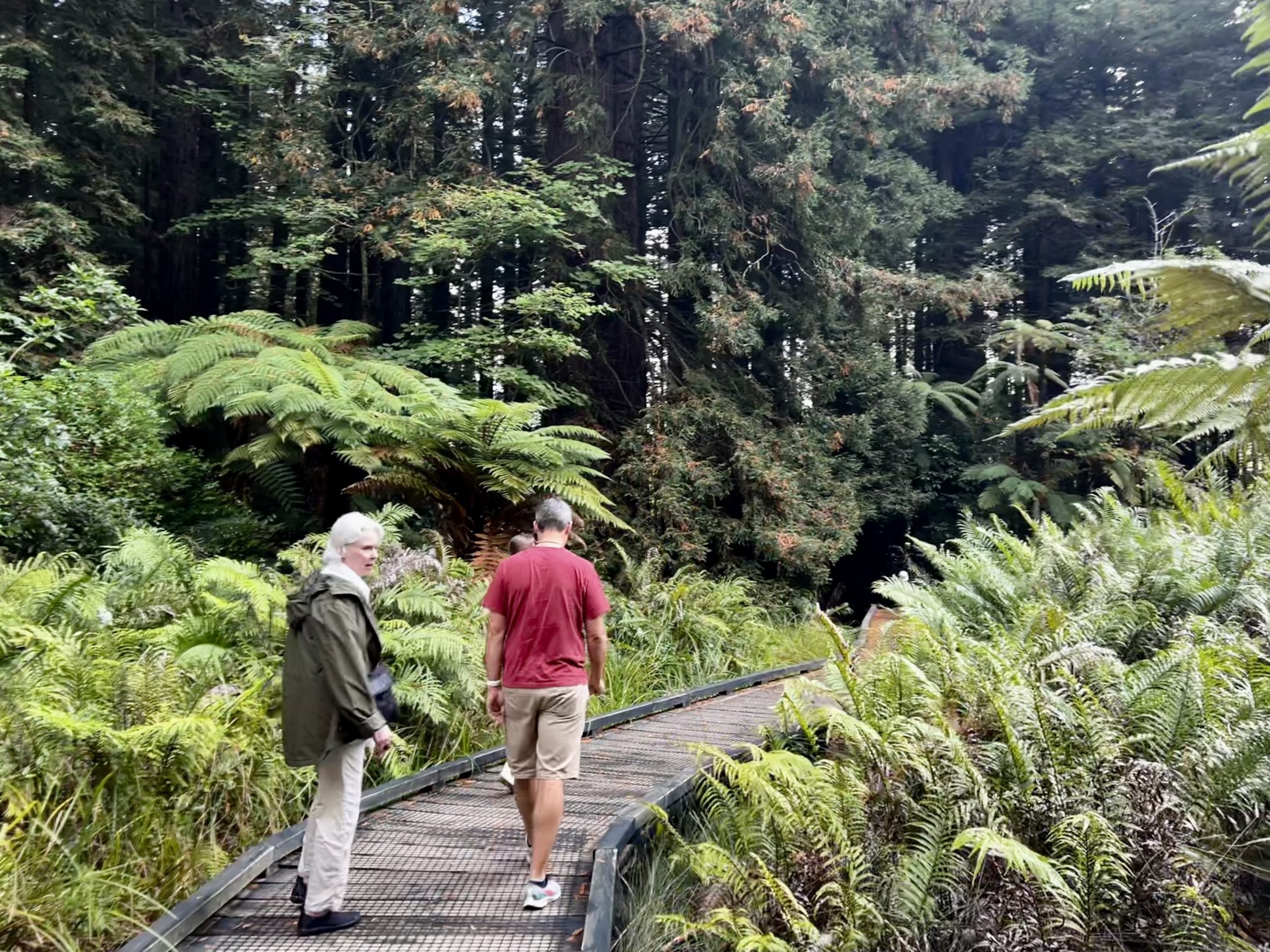
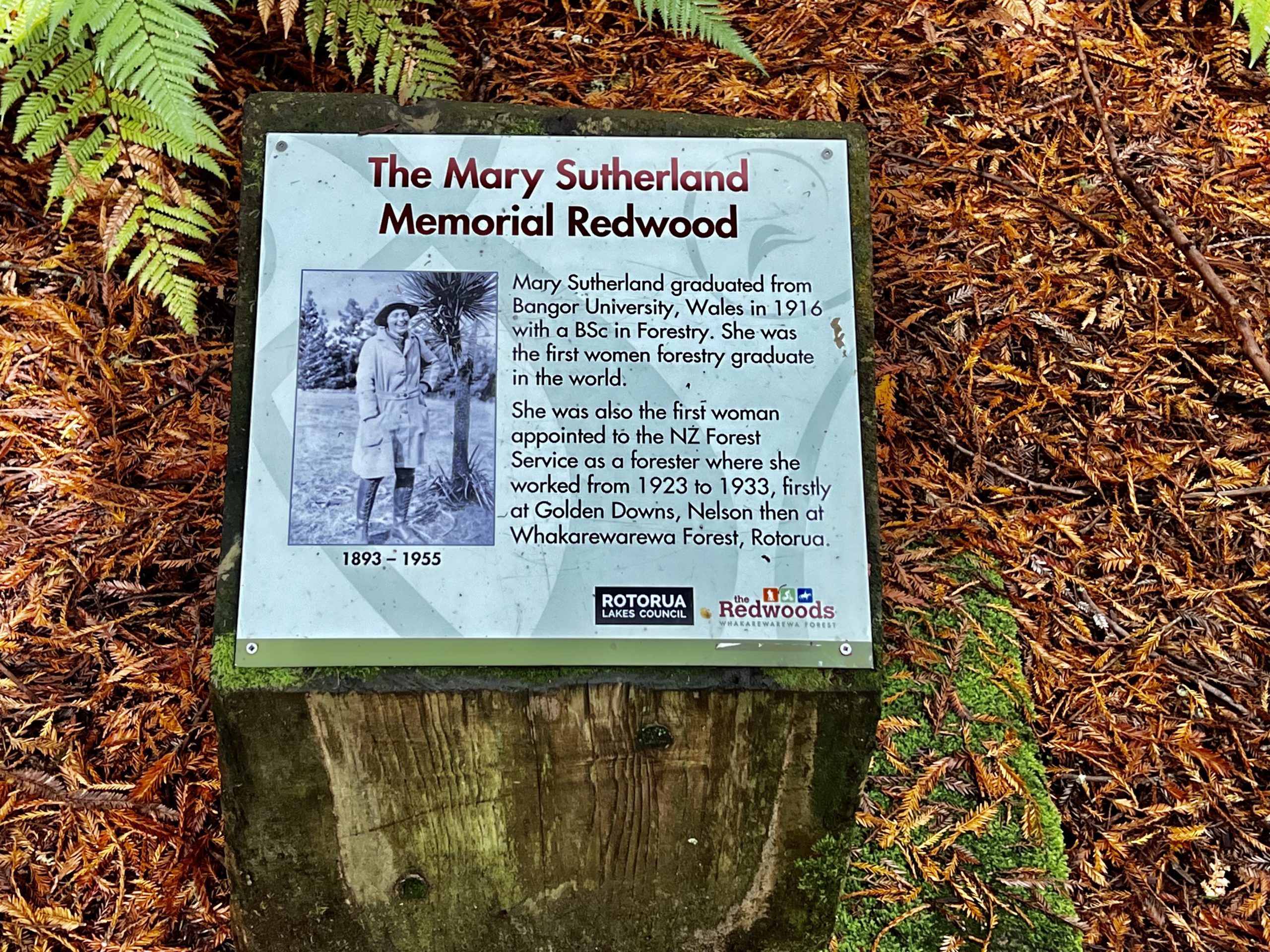
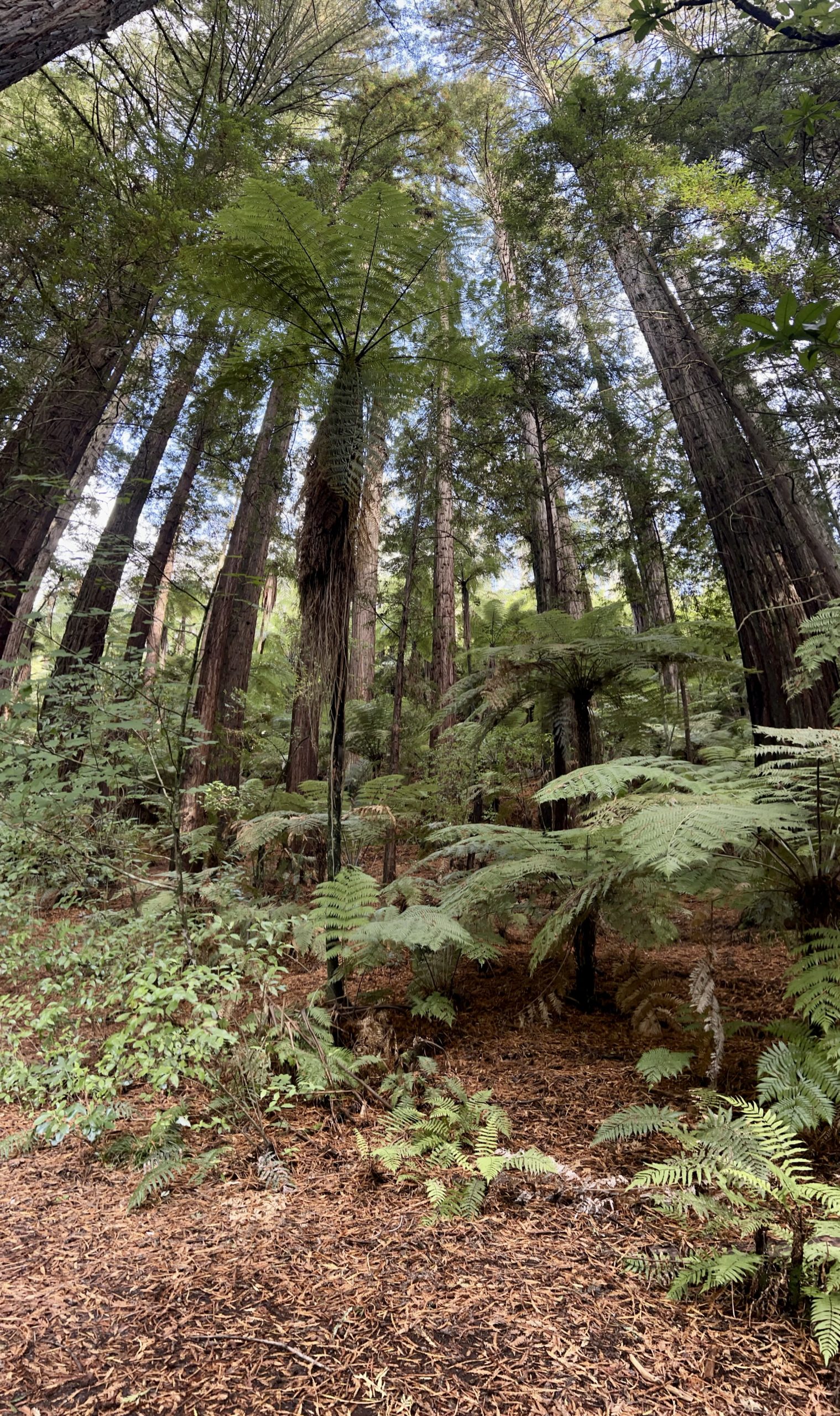
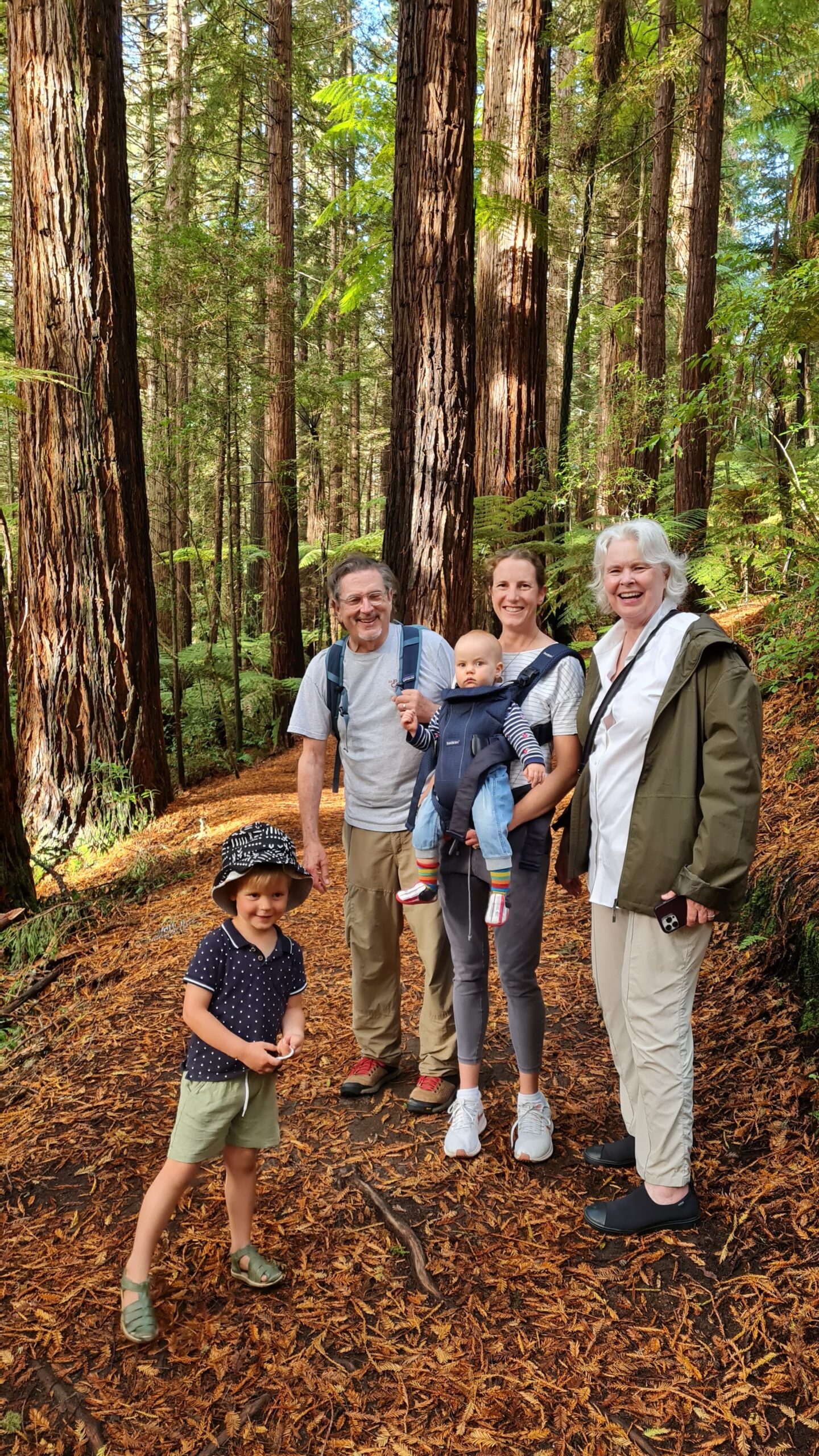
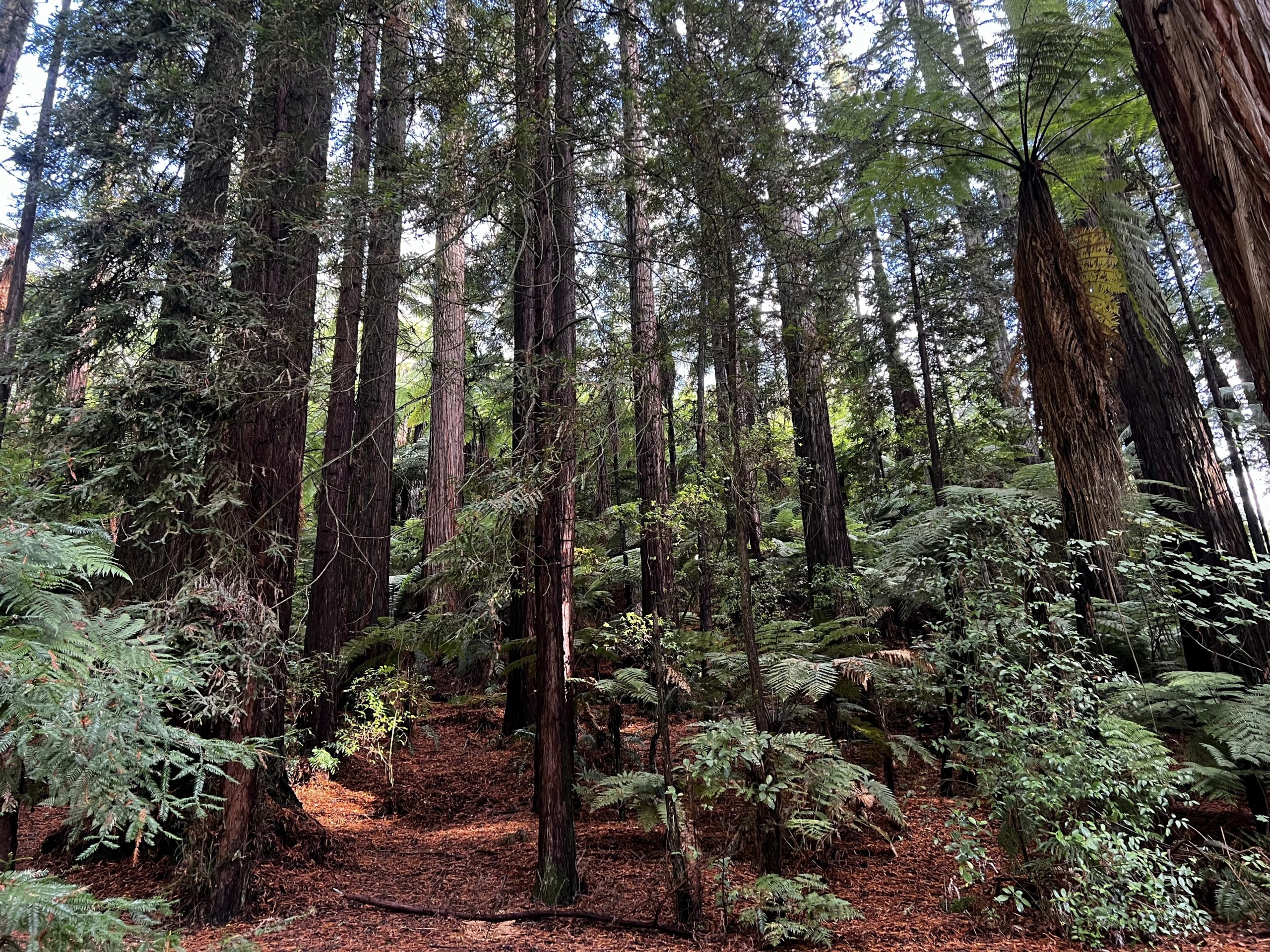
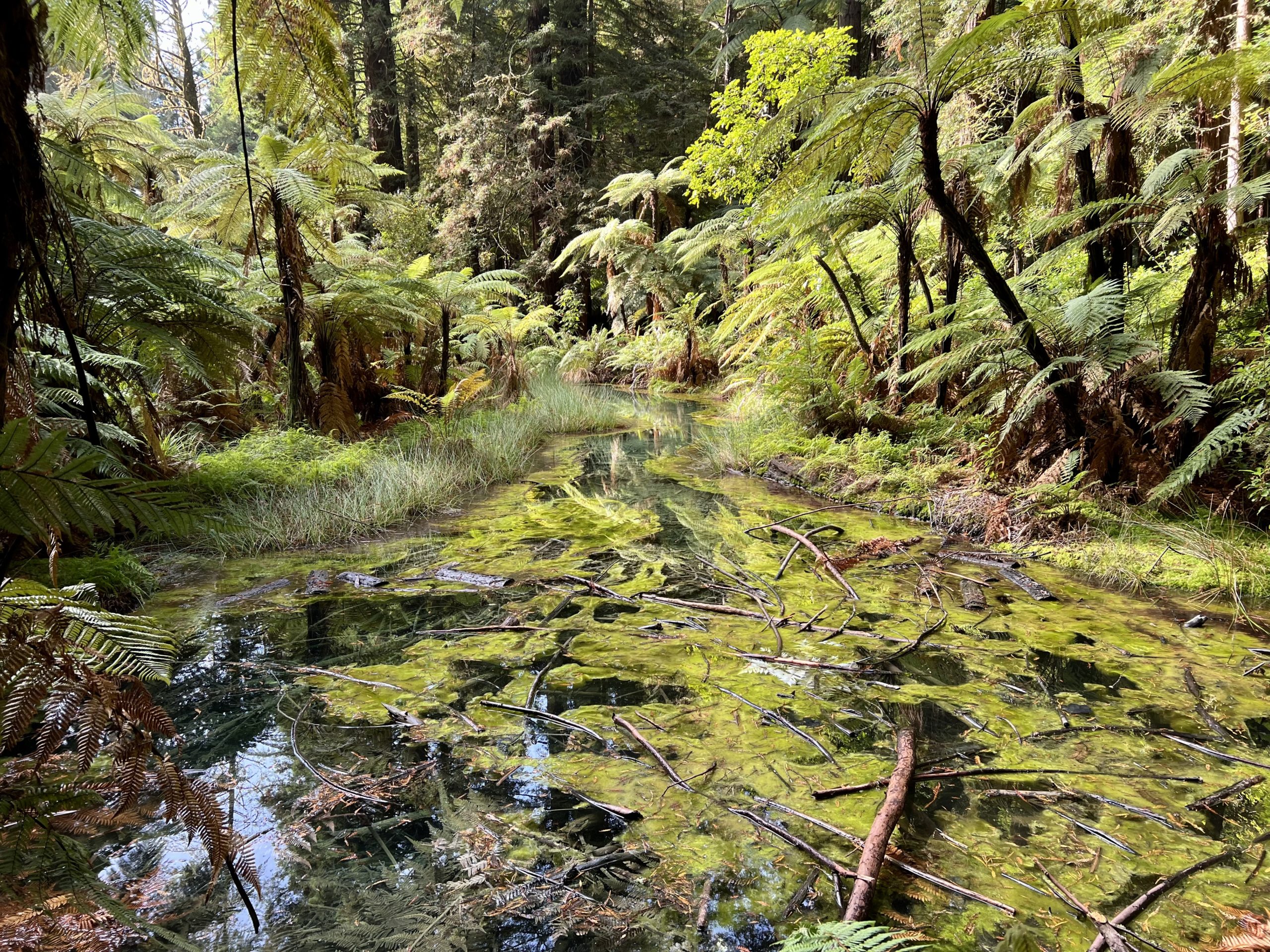
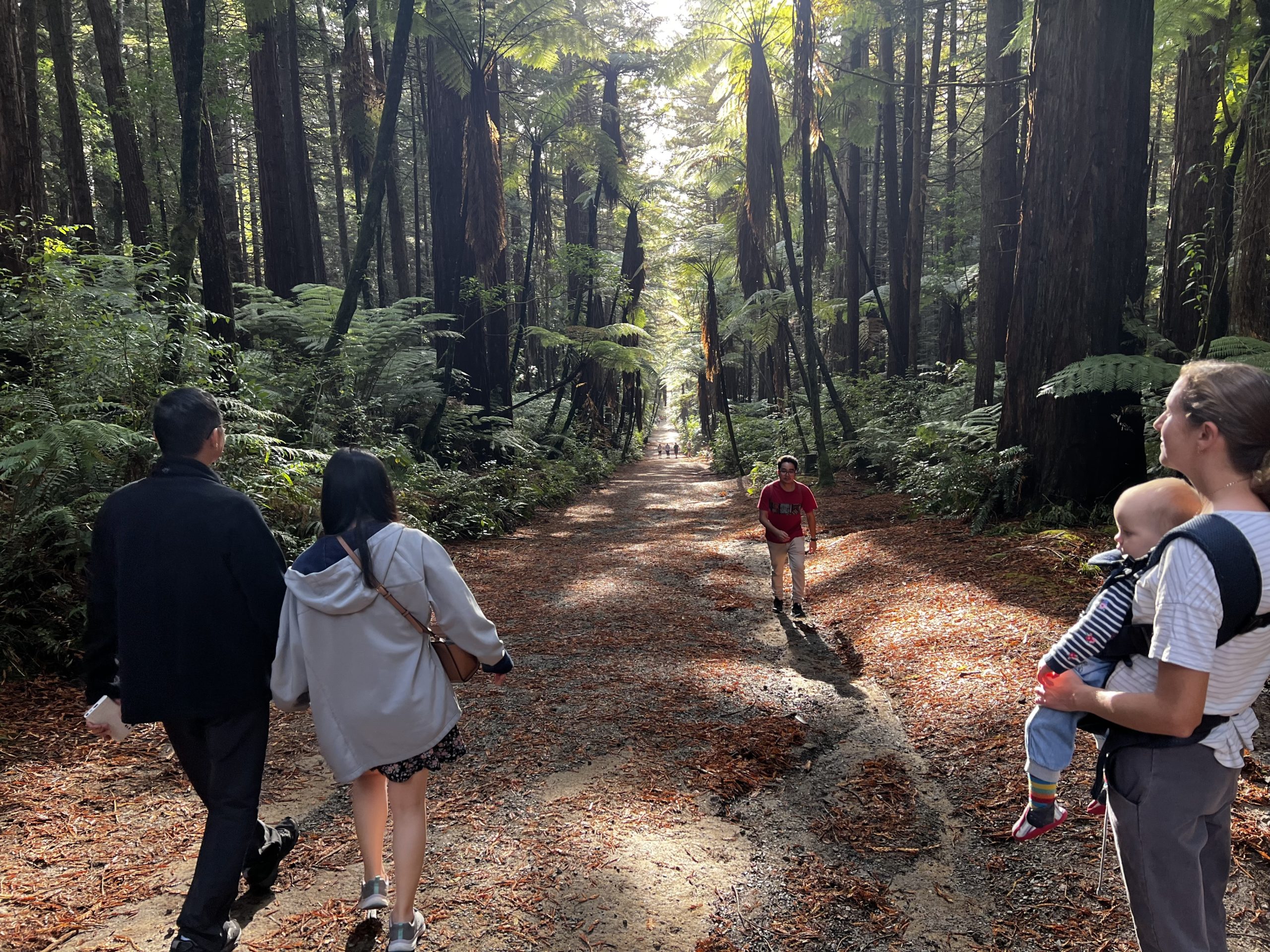
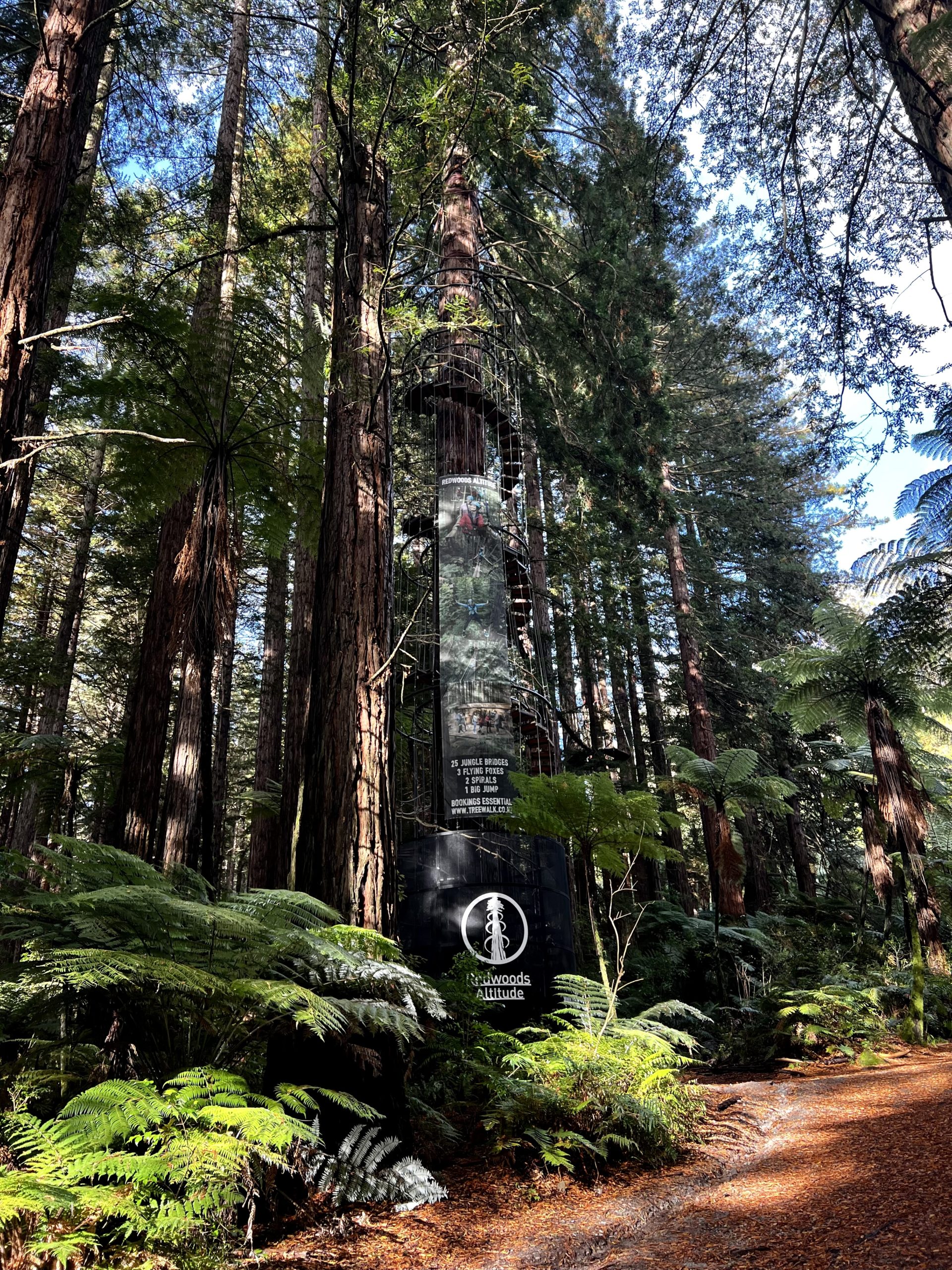
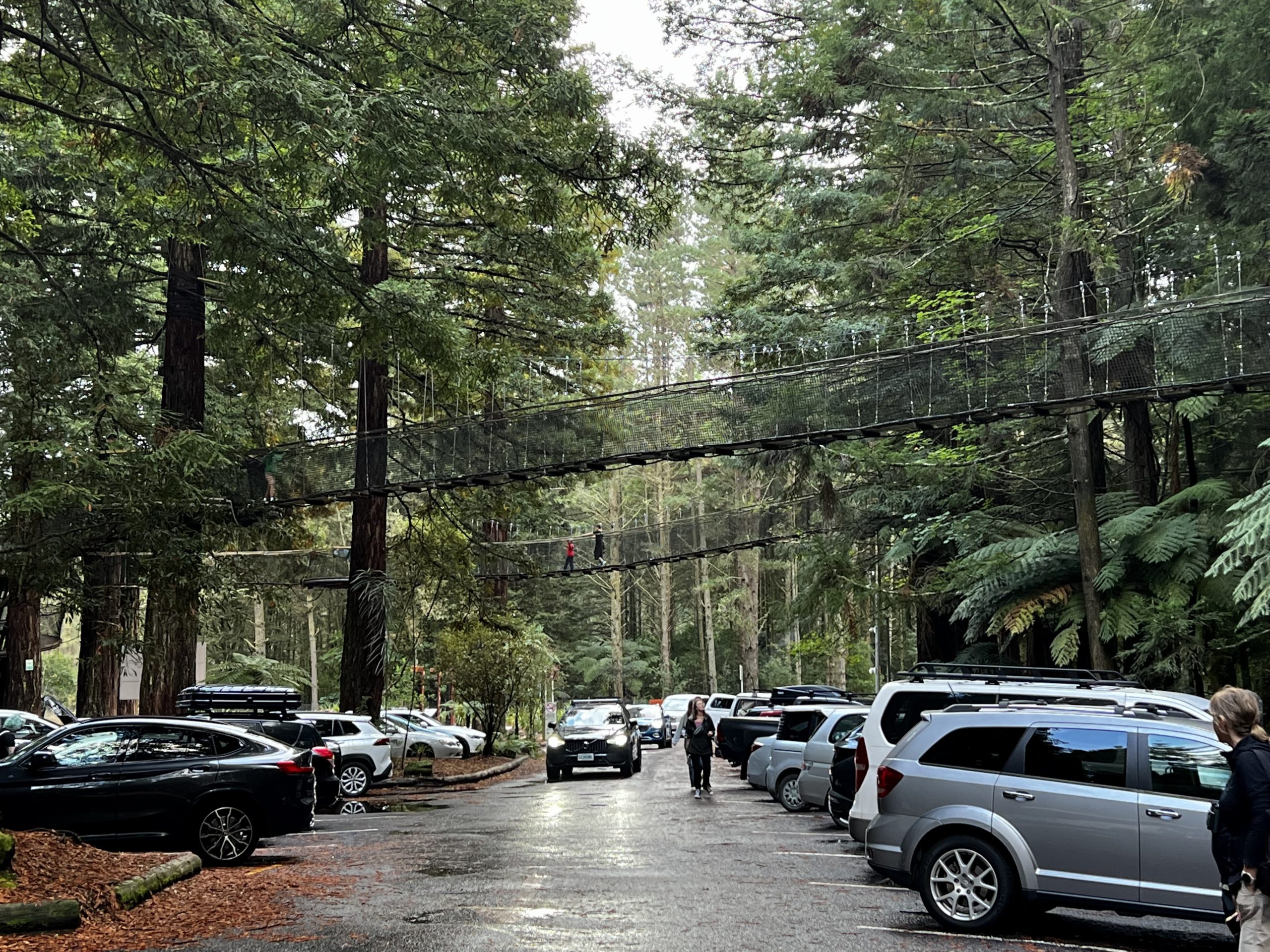
Food, Beer, Wine, and Maybe a Cocktail
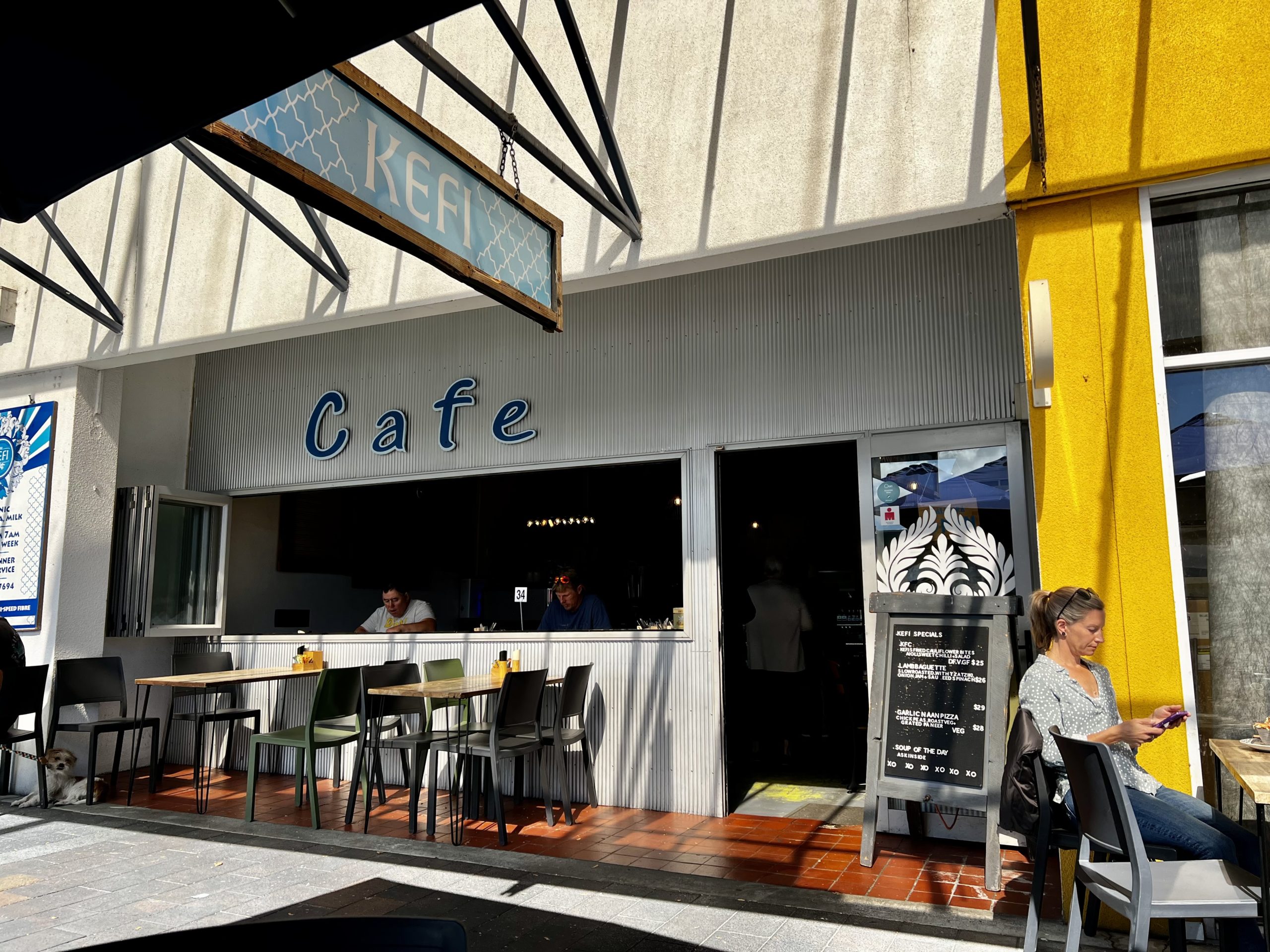
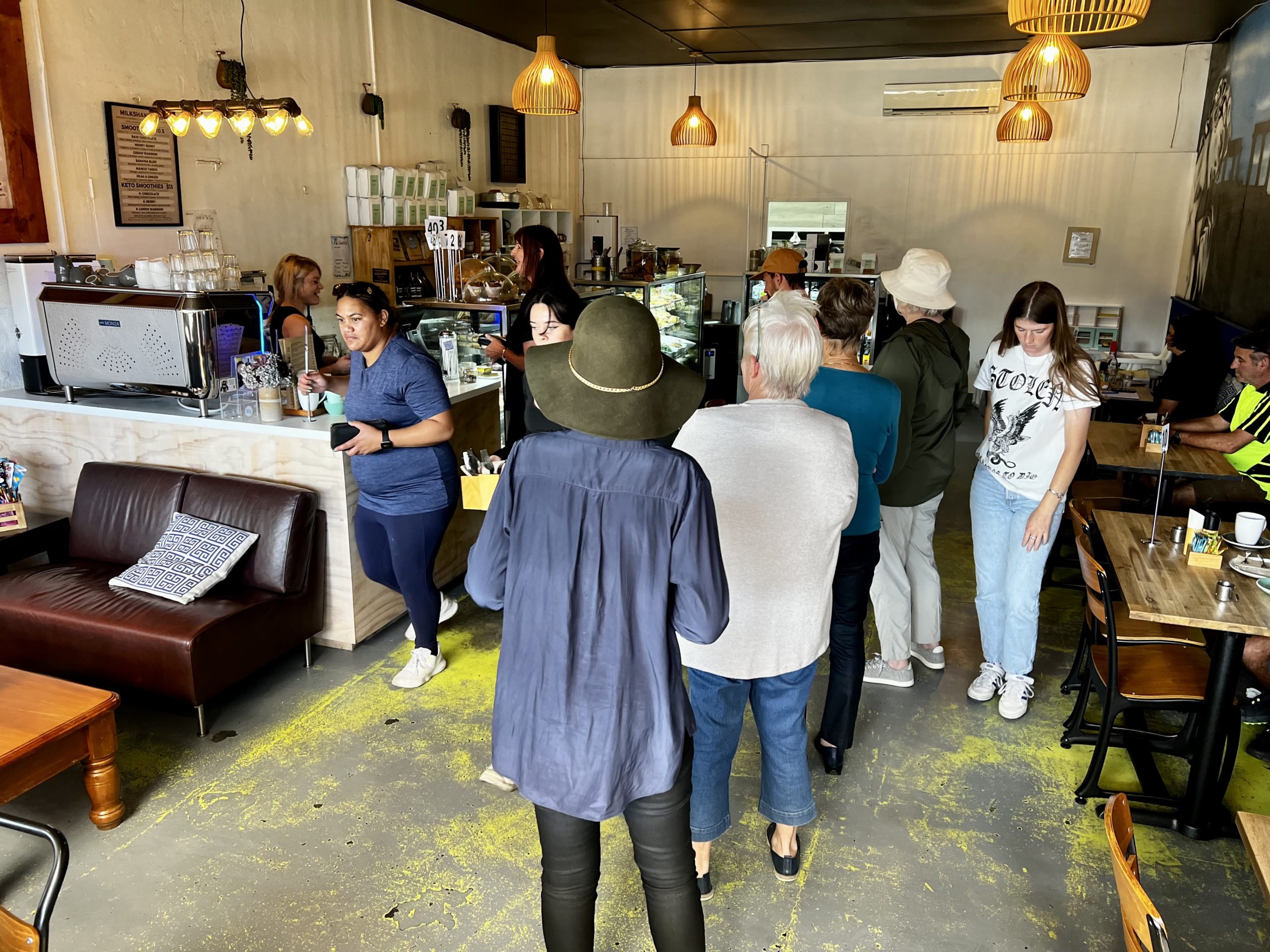
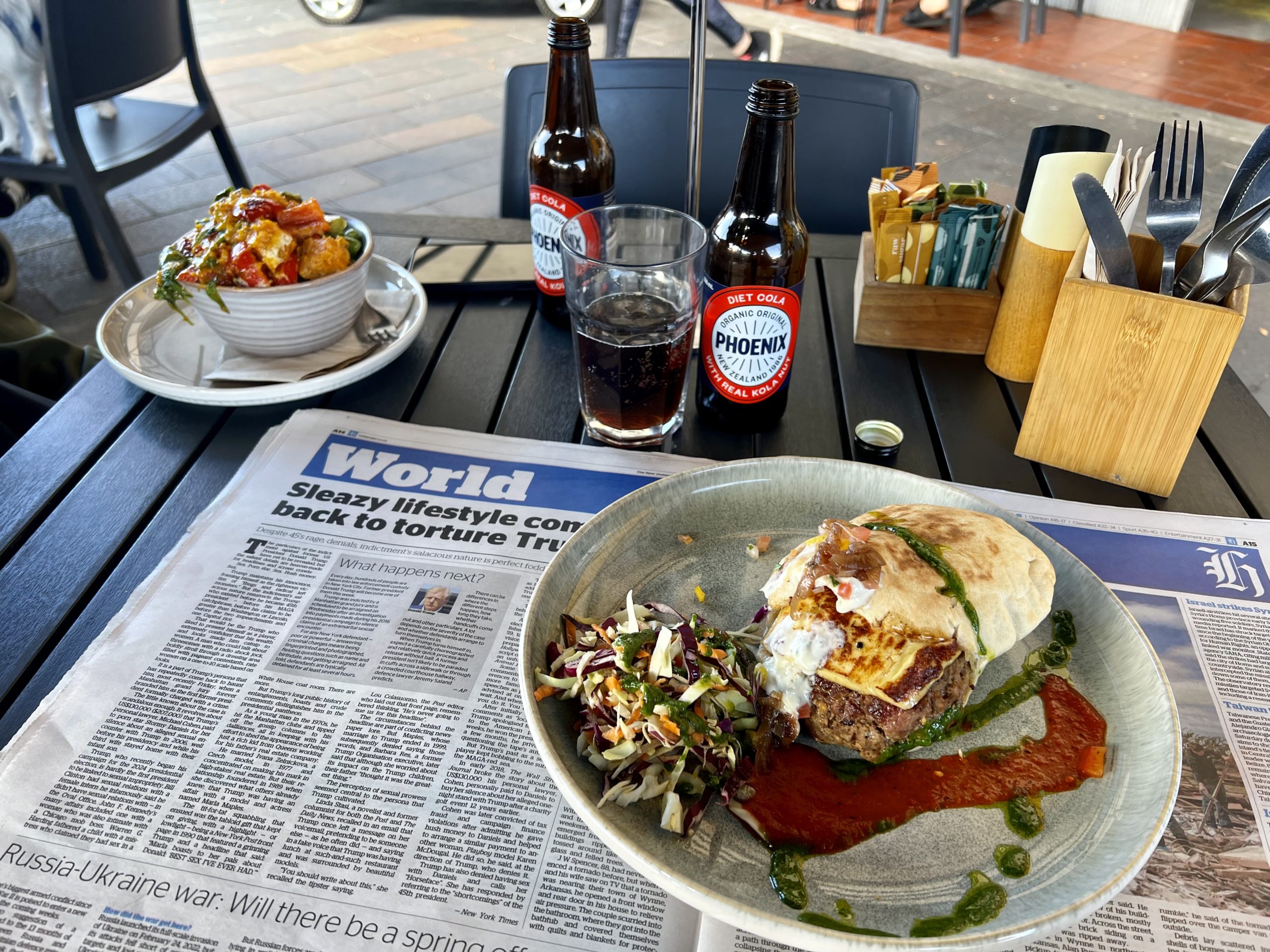
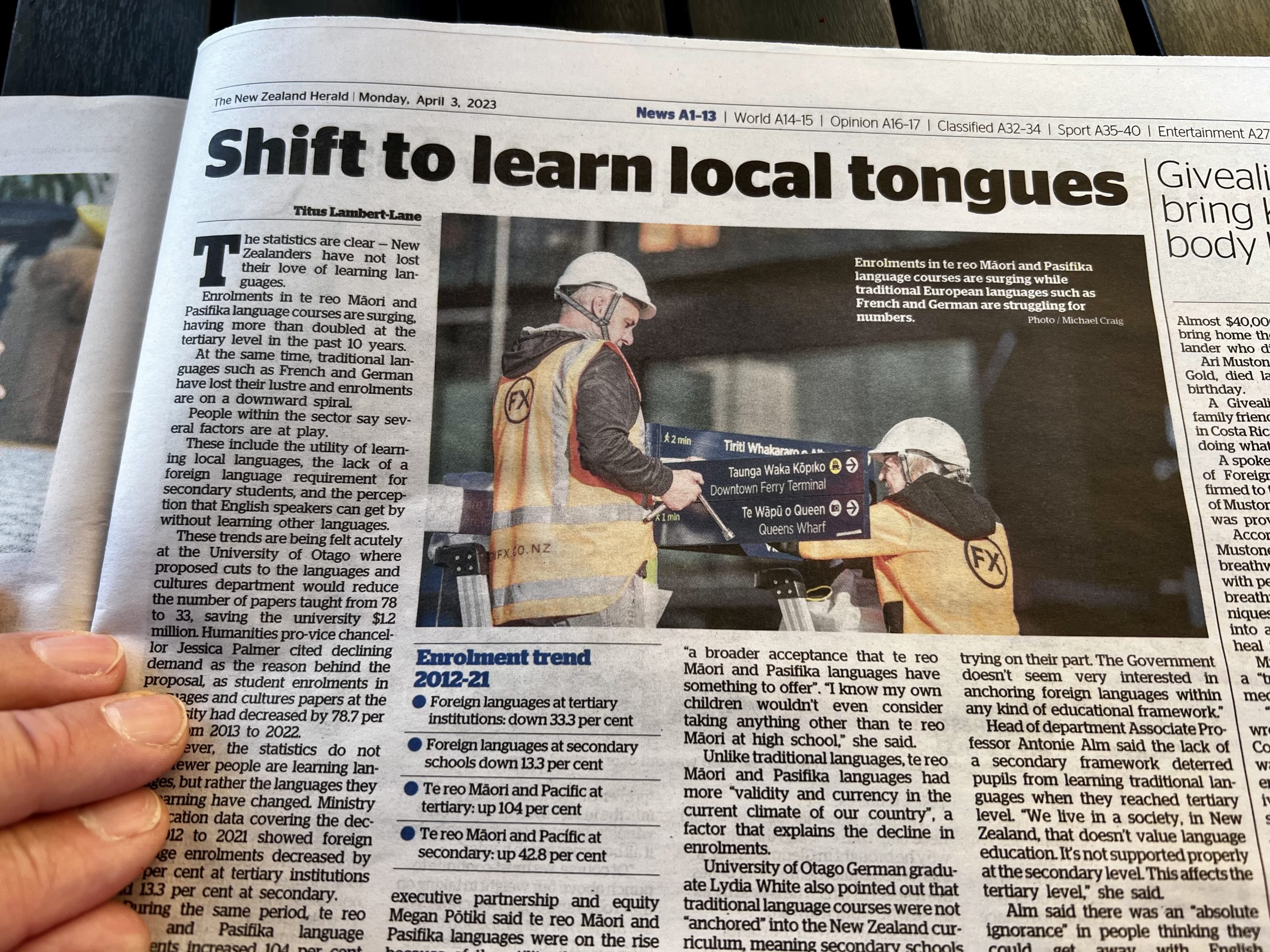

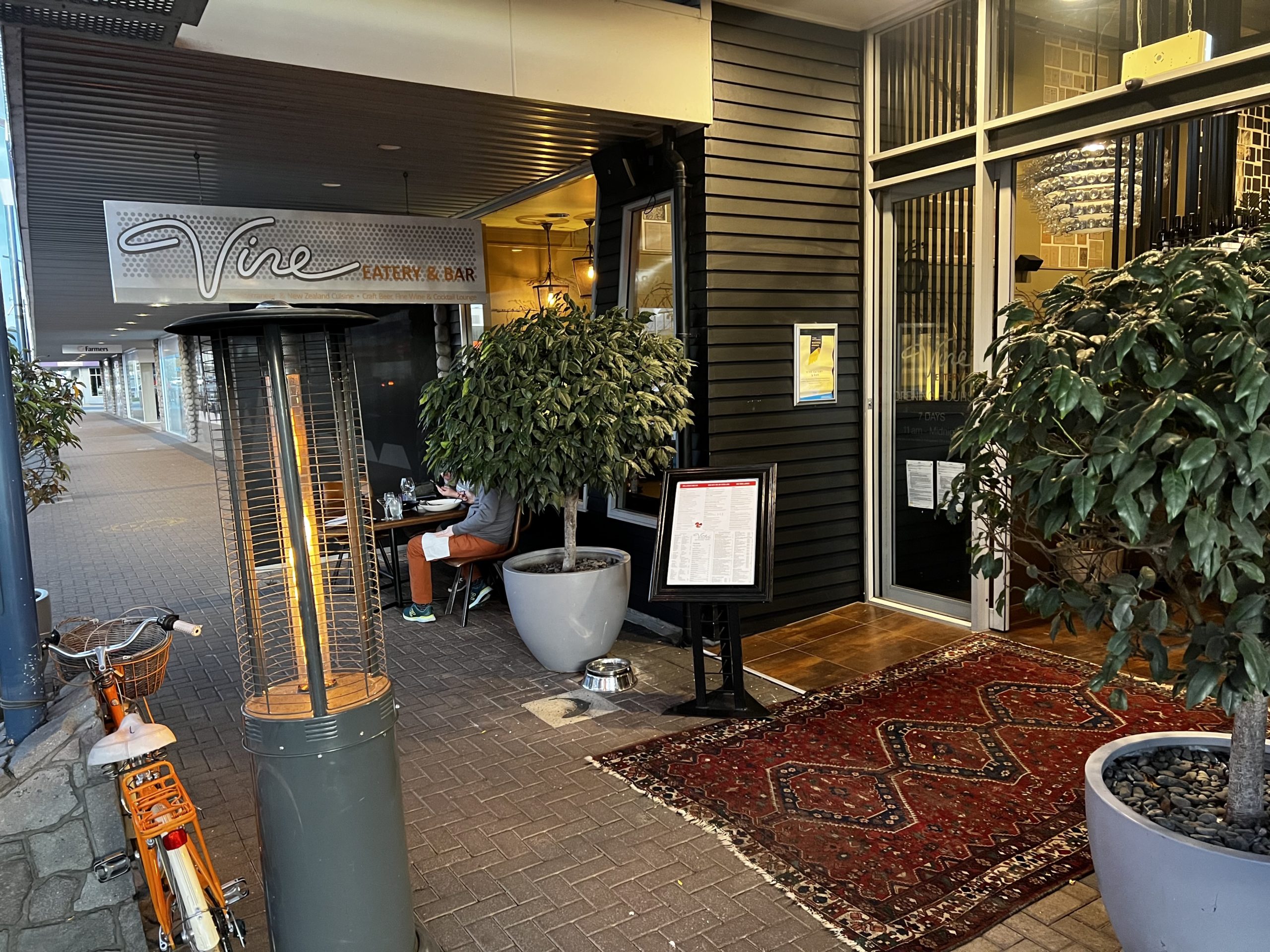
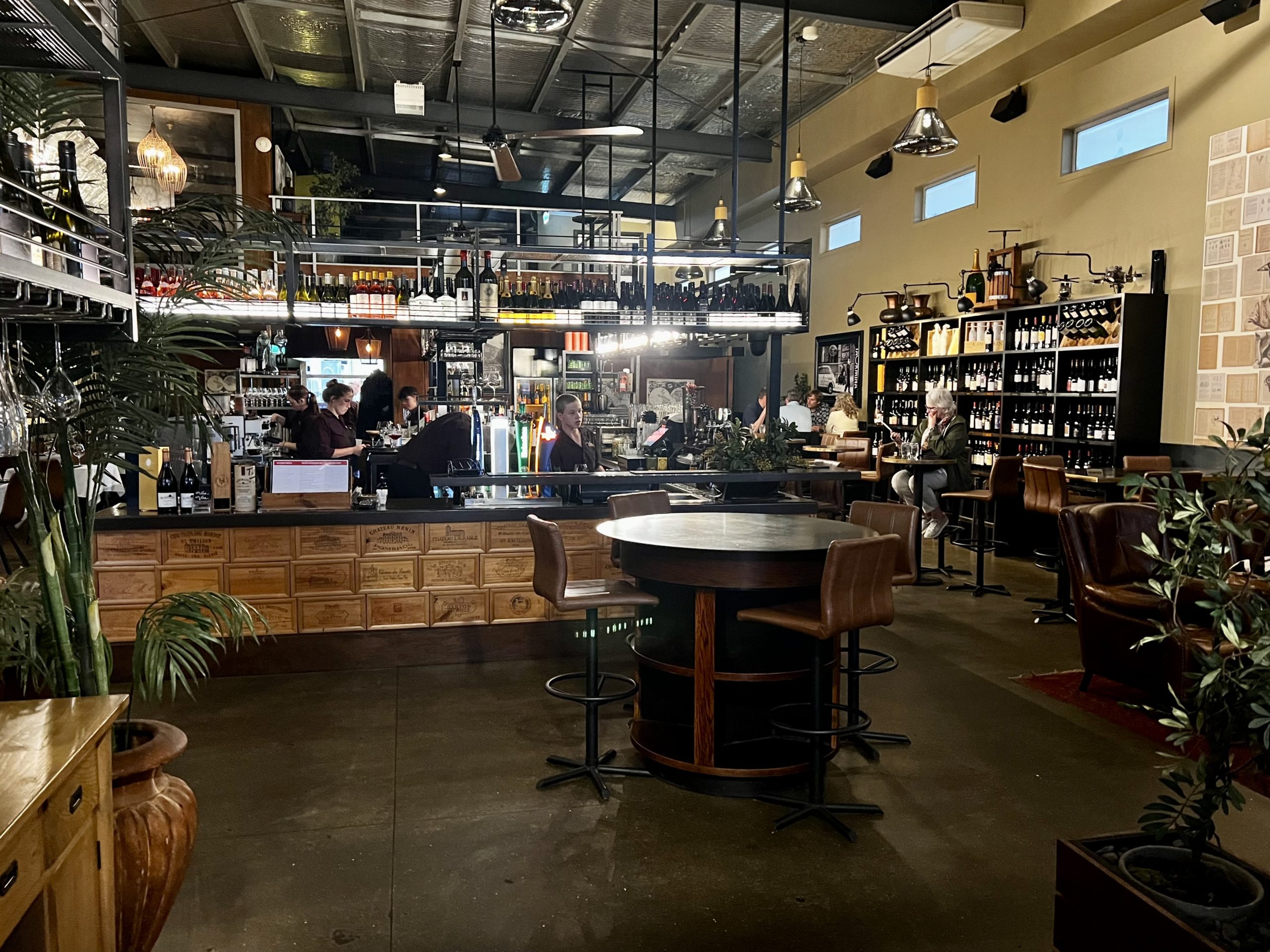
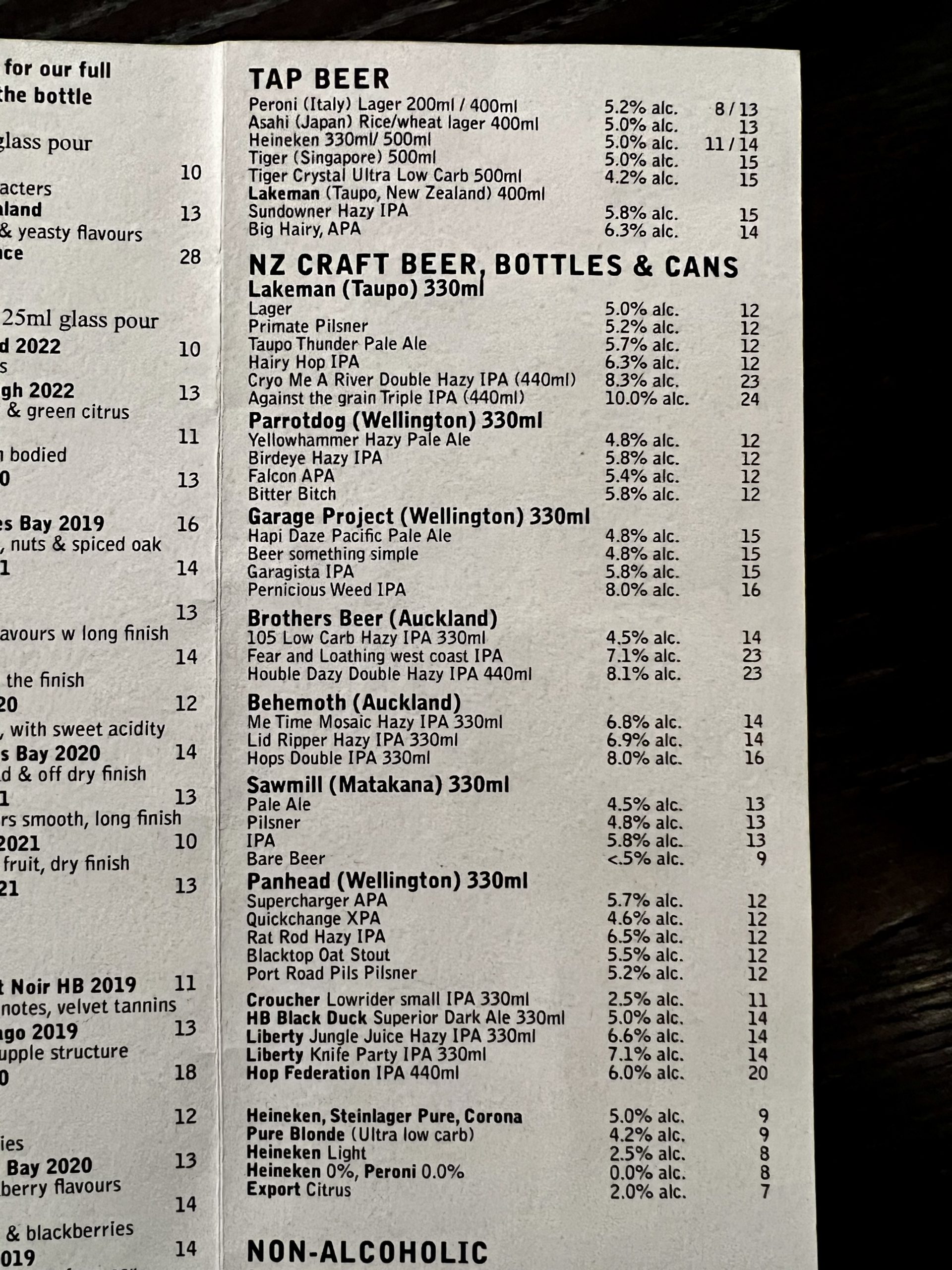
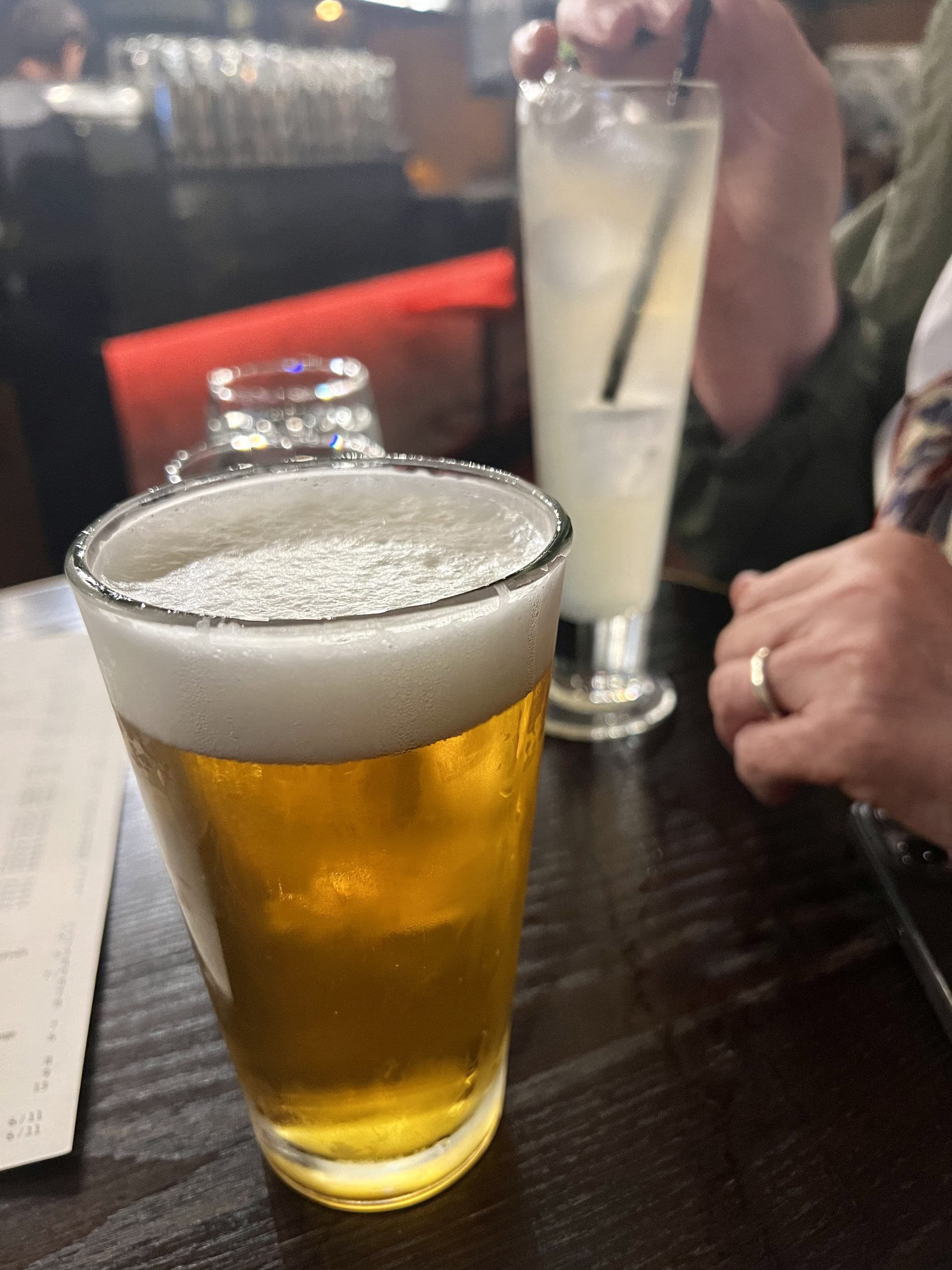
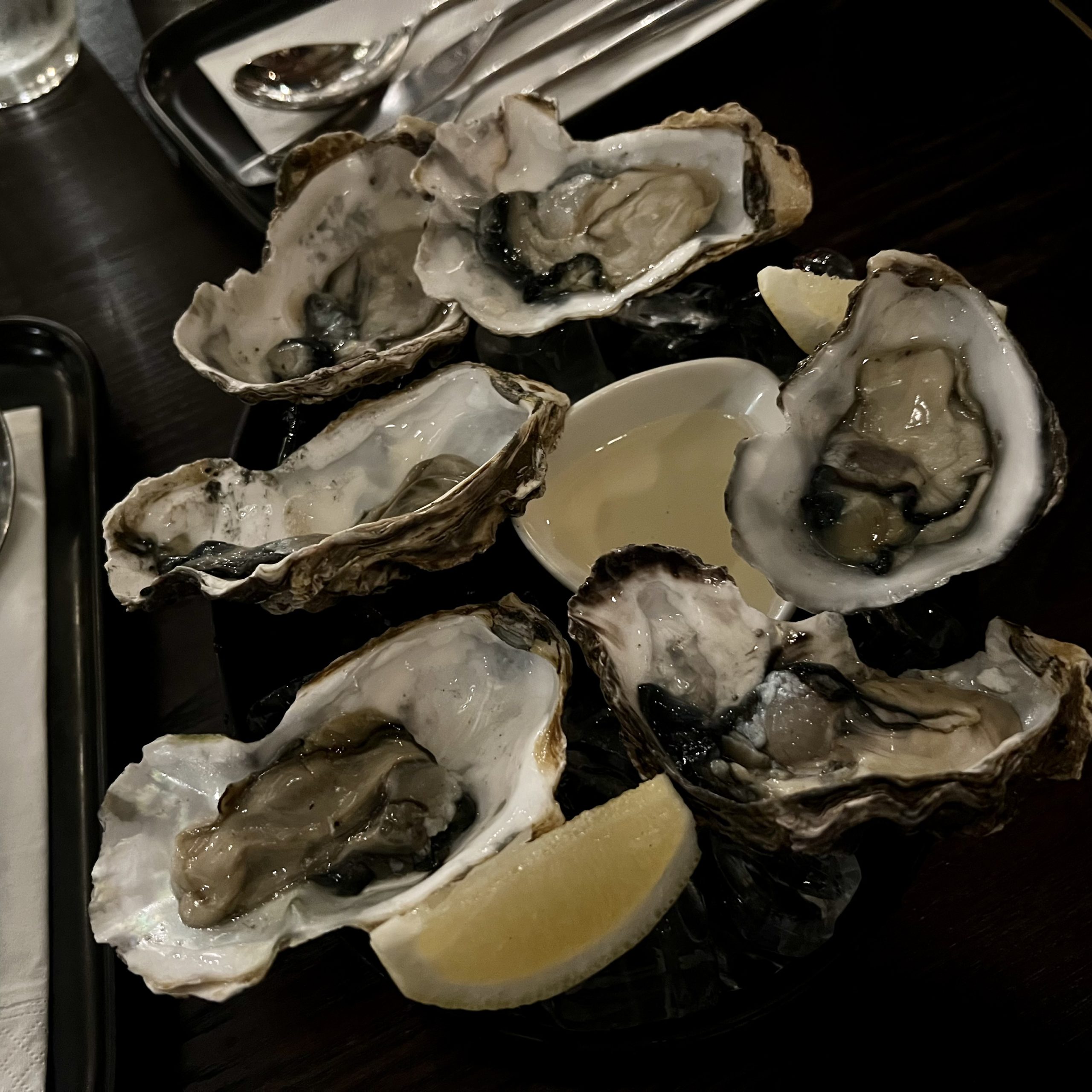
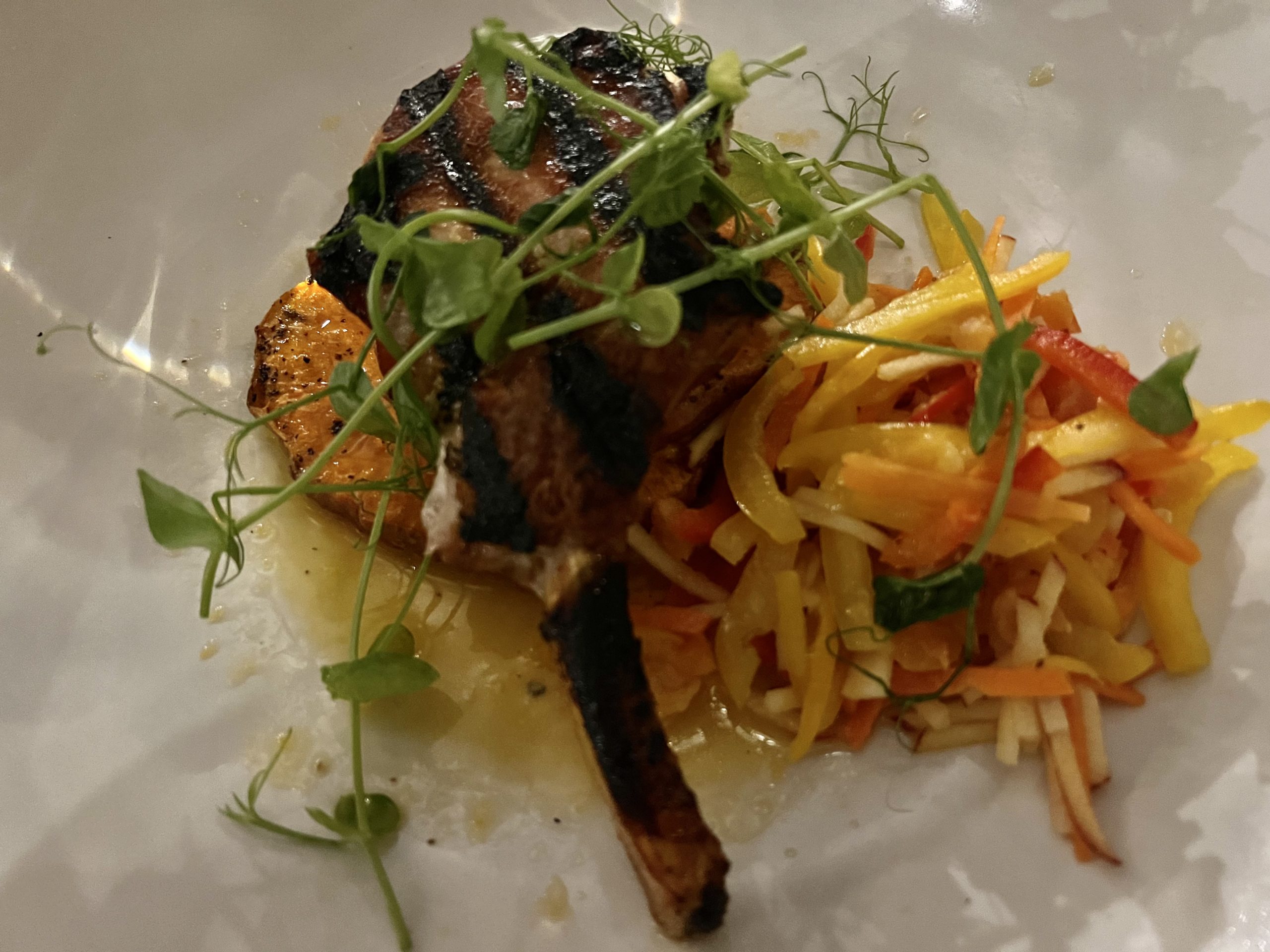
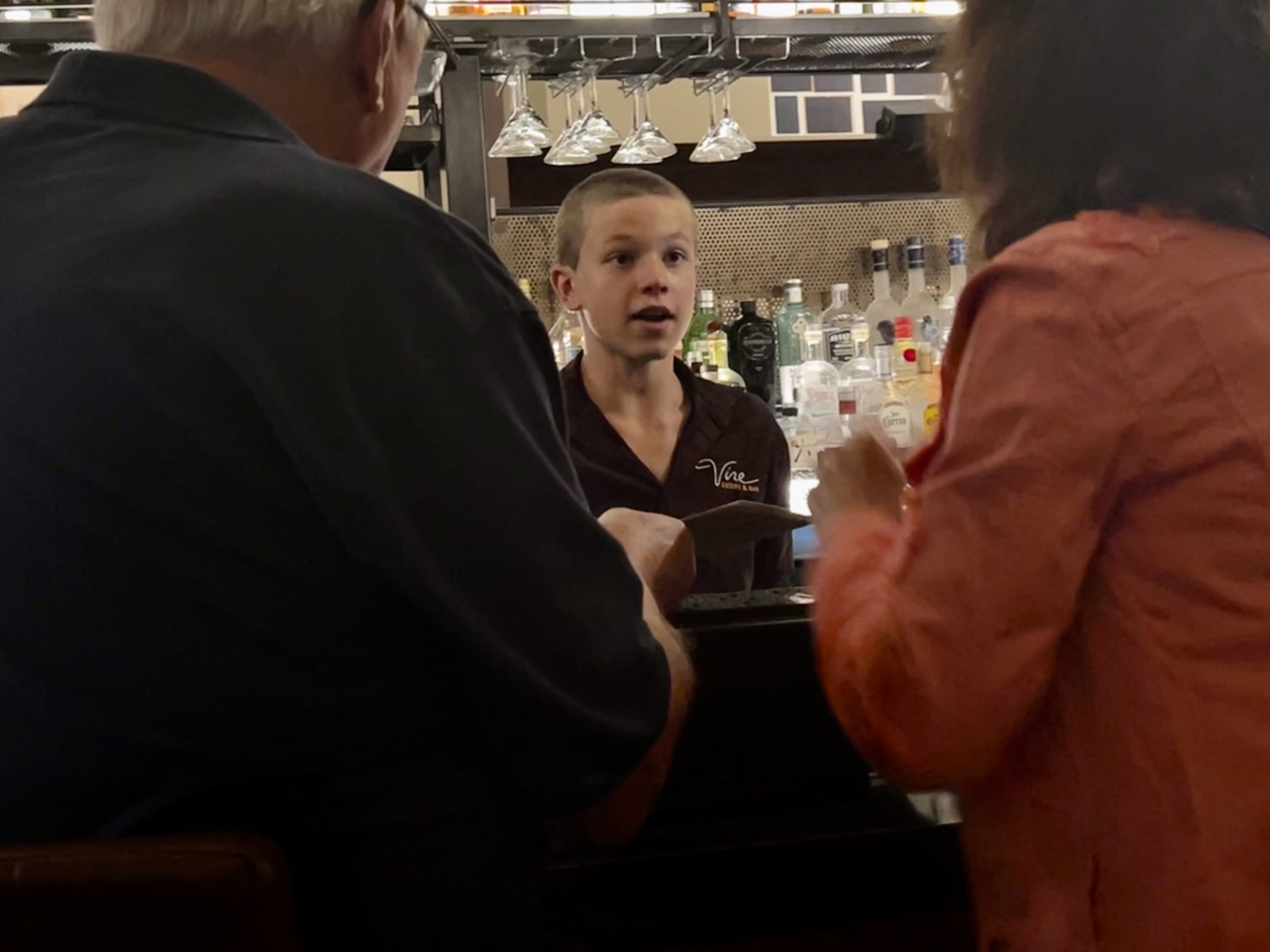
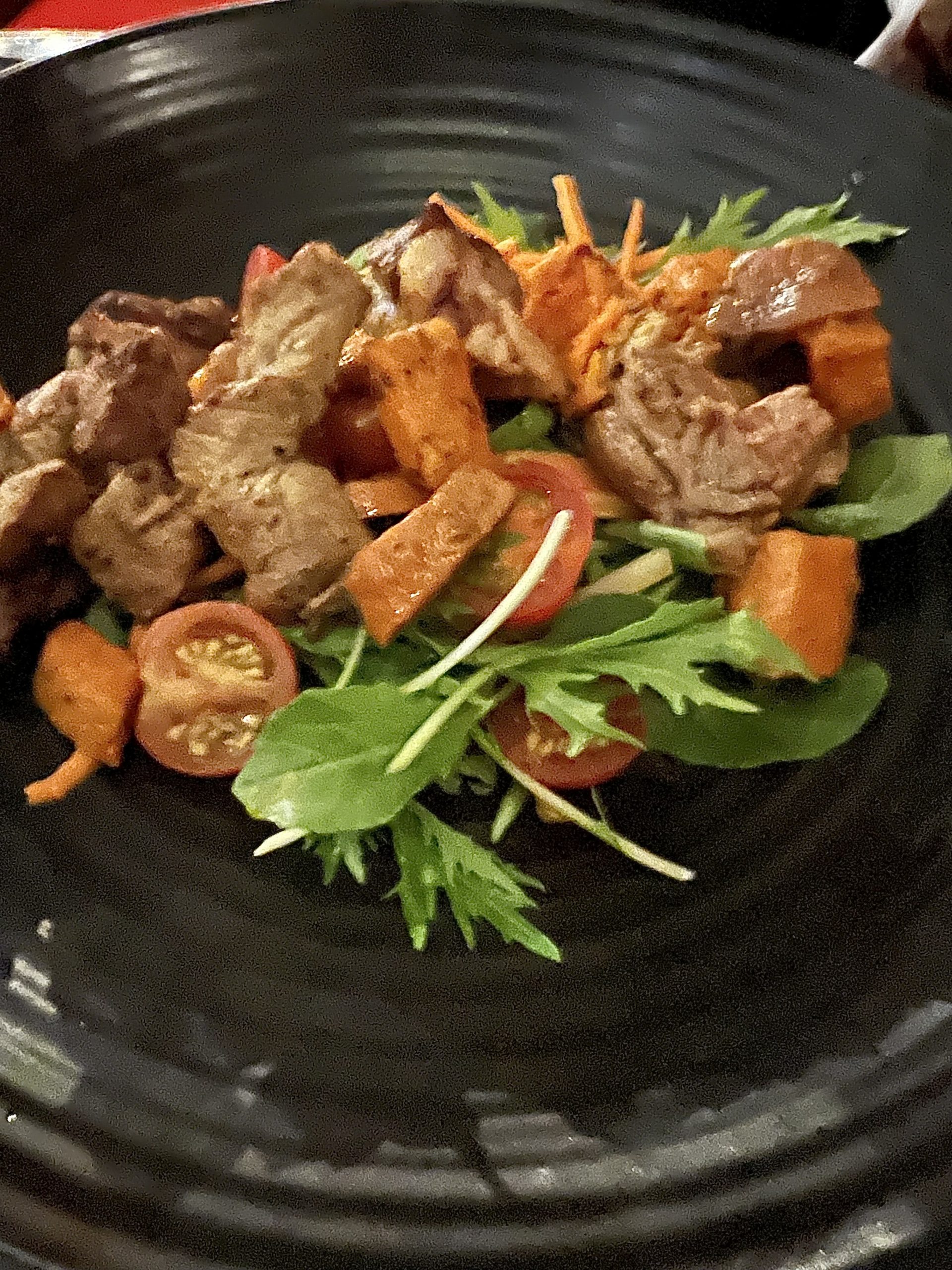
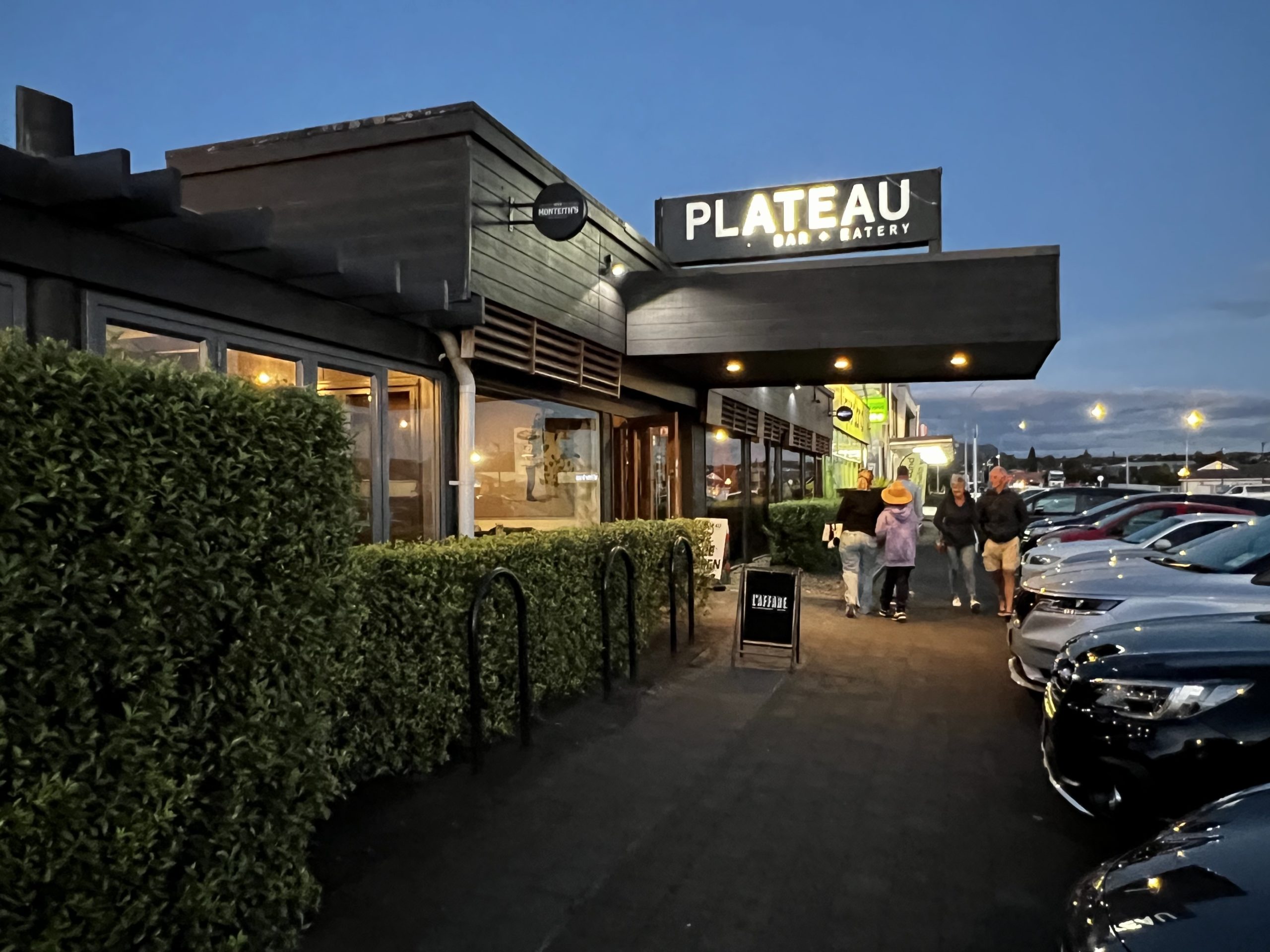
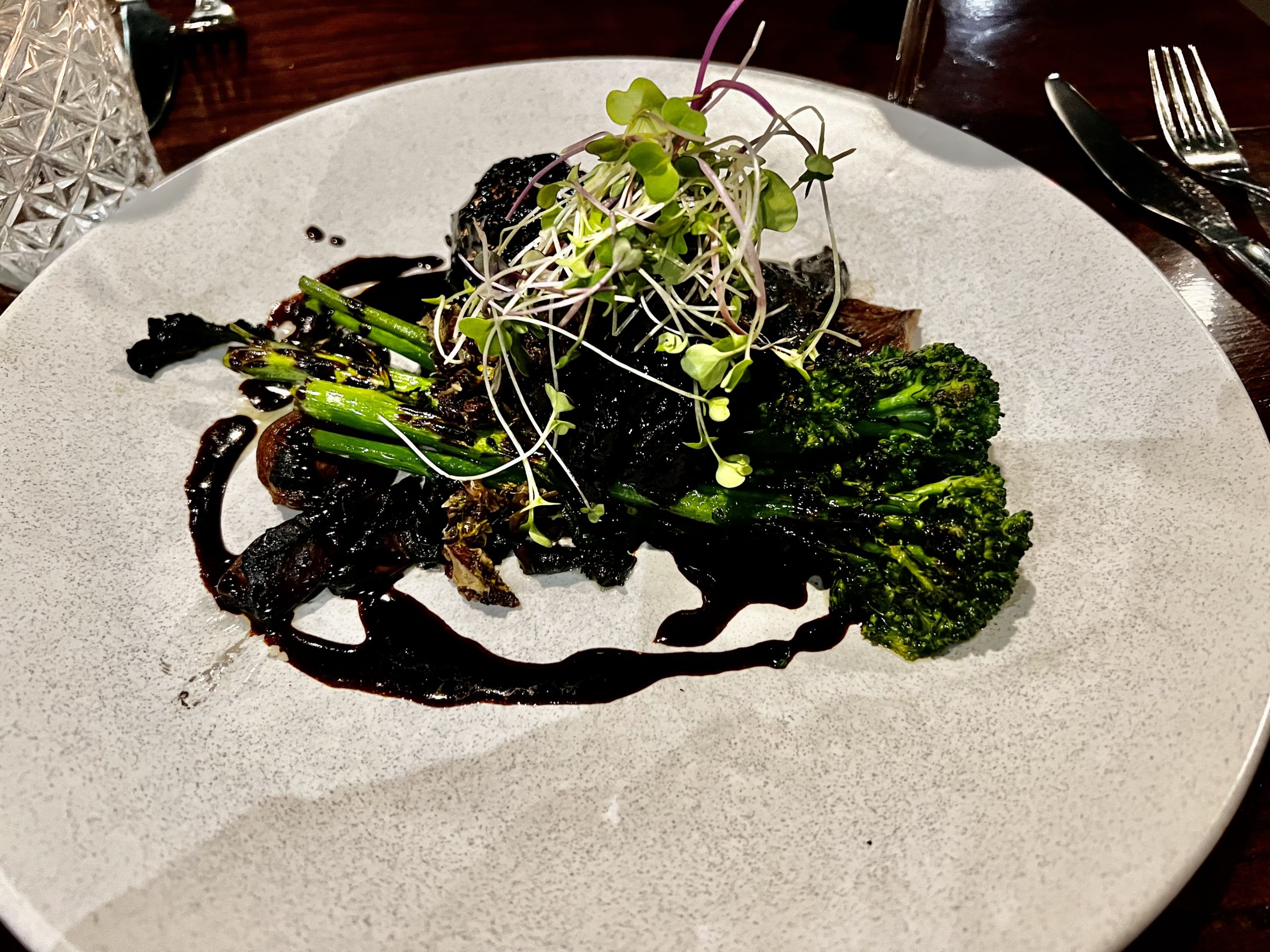
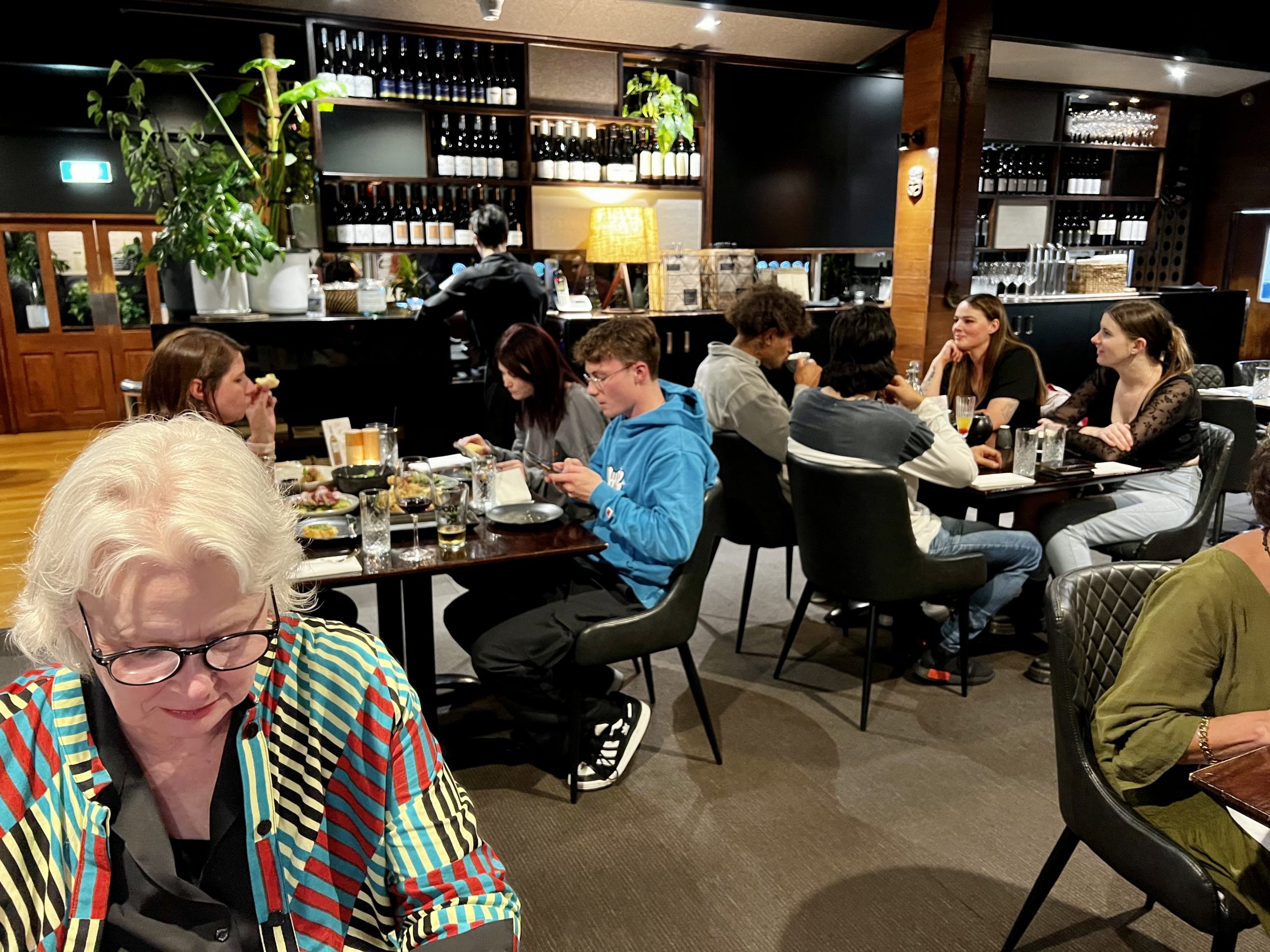
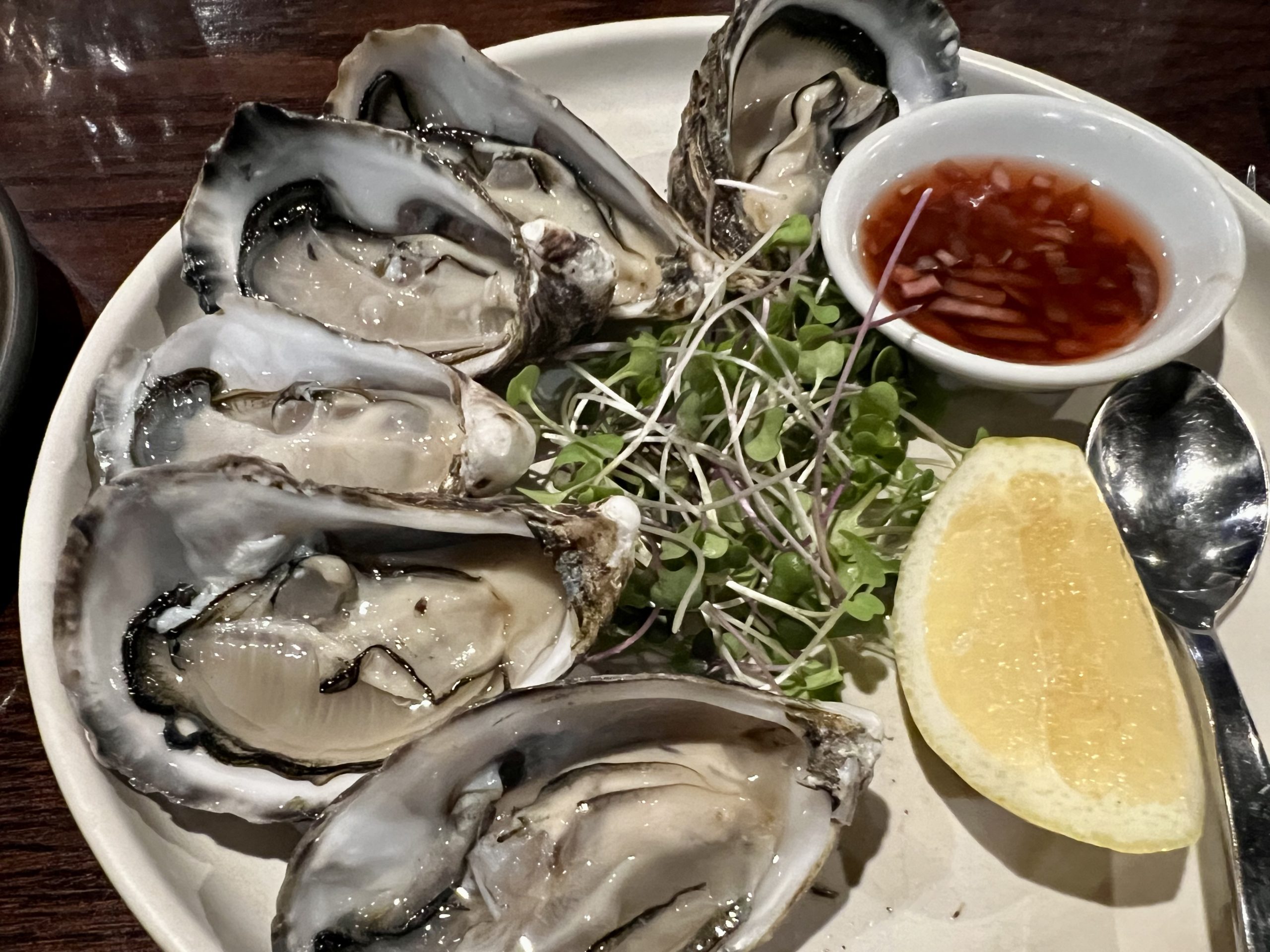
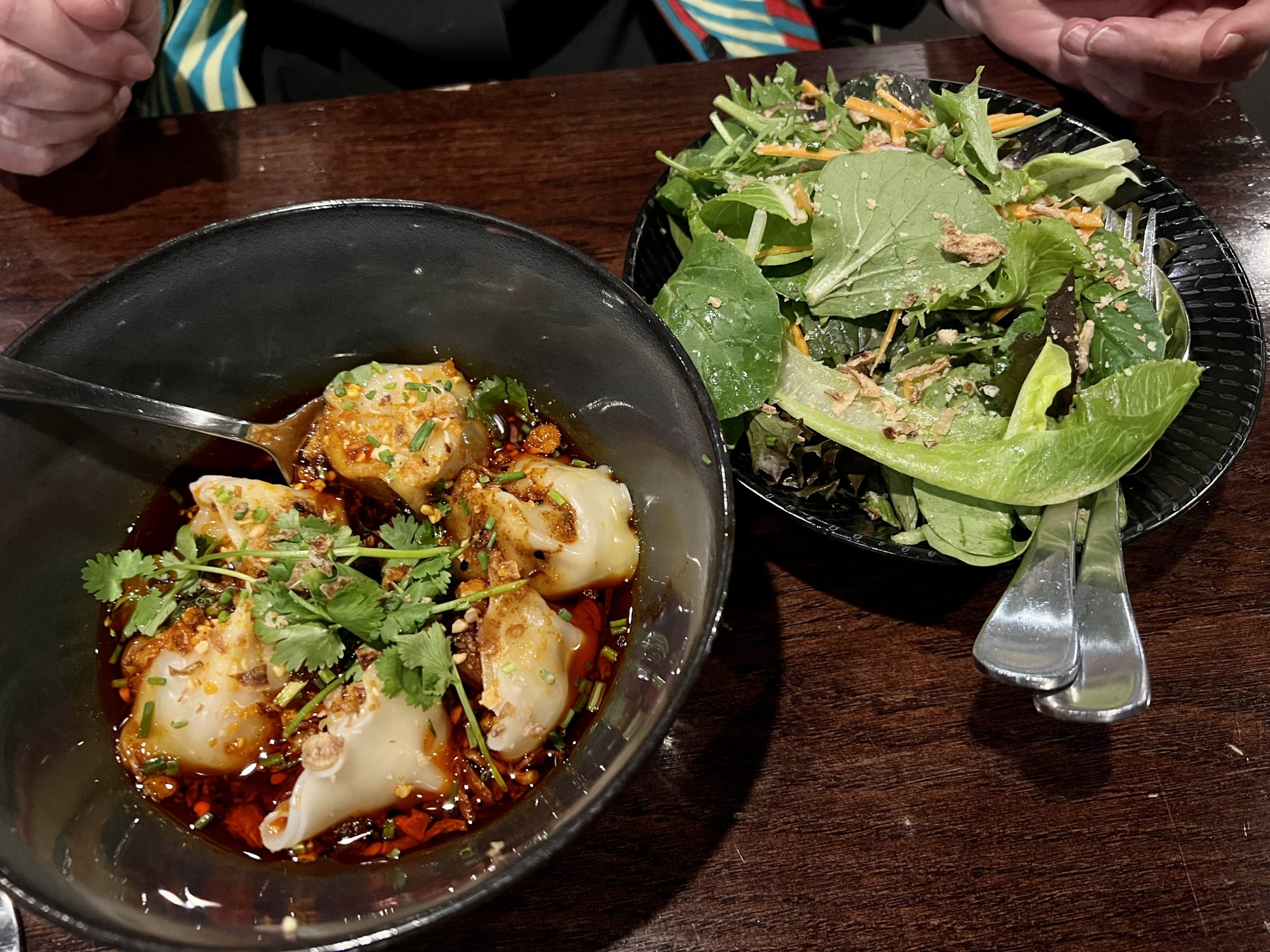
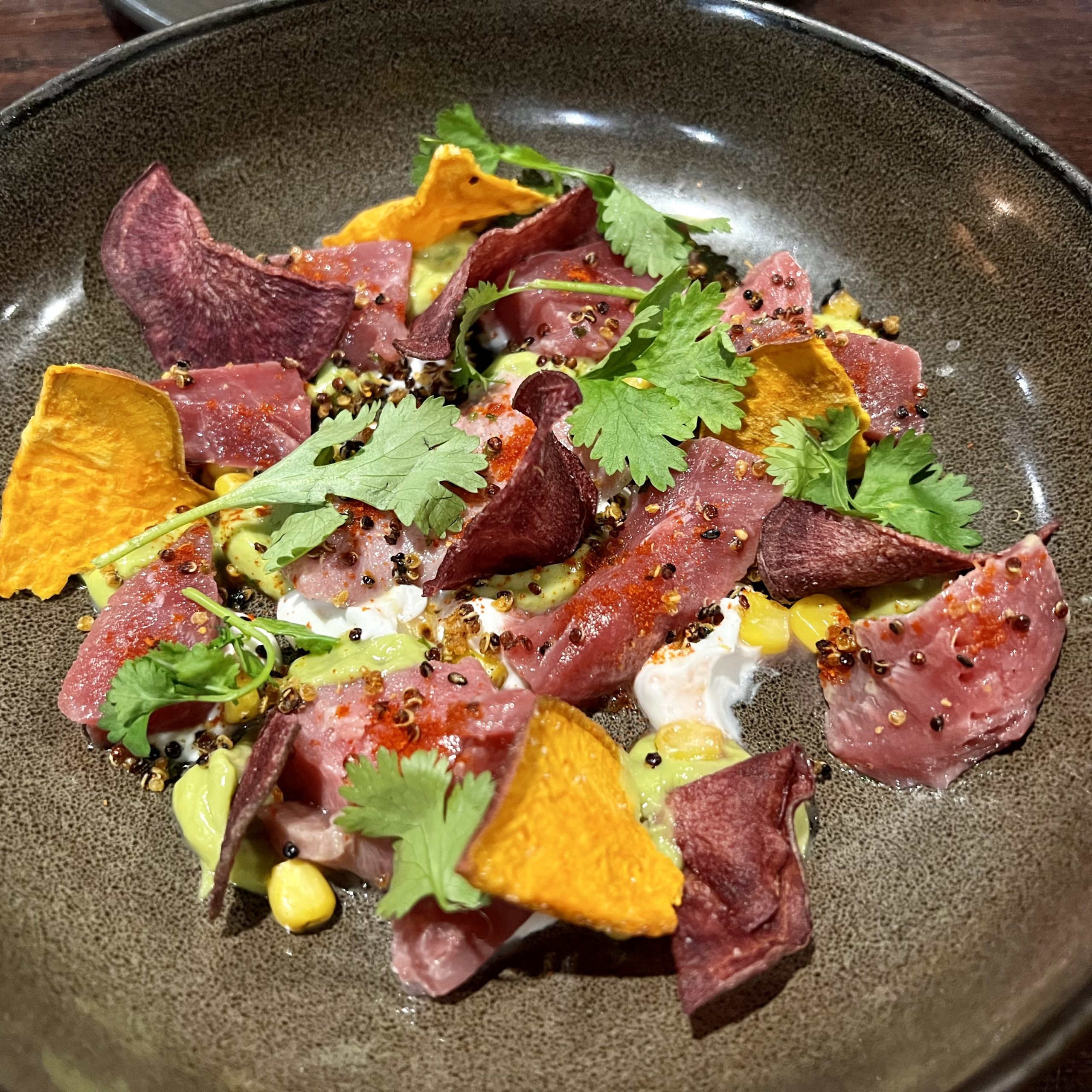
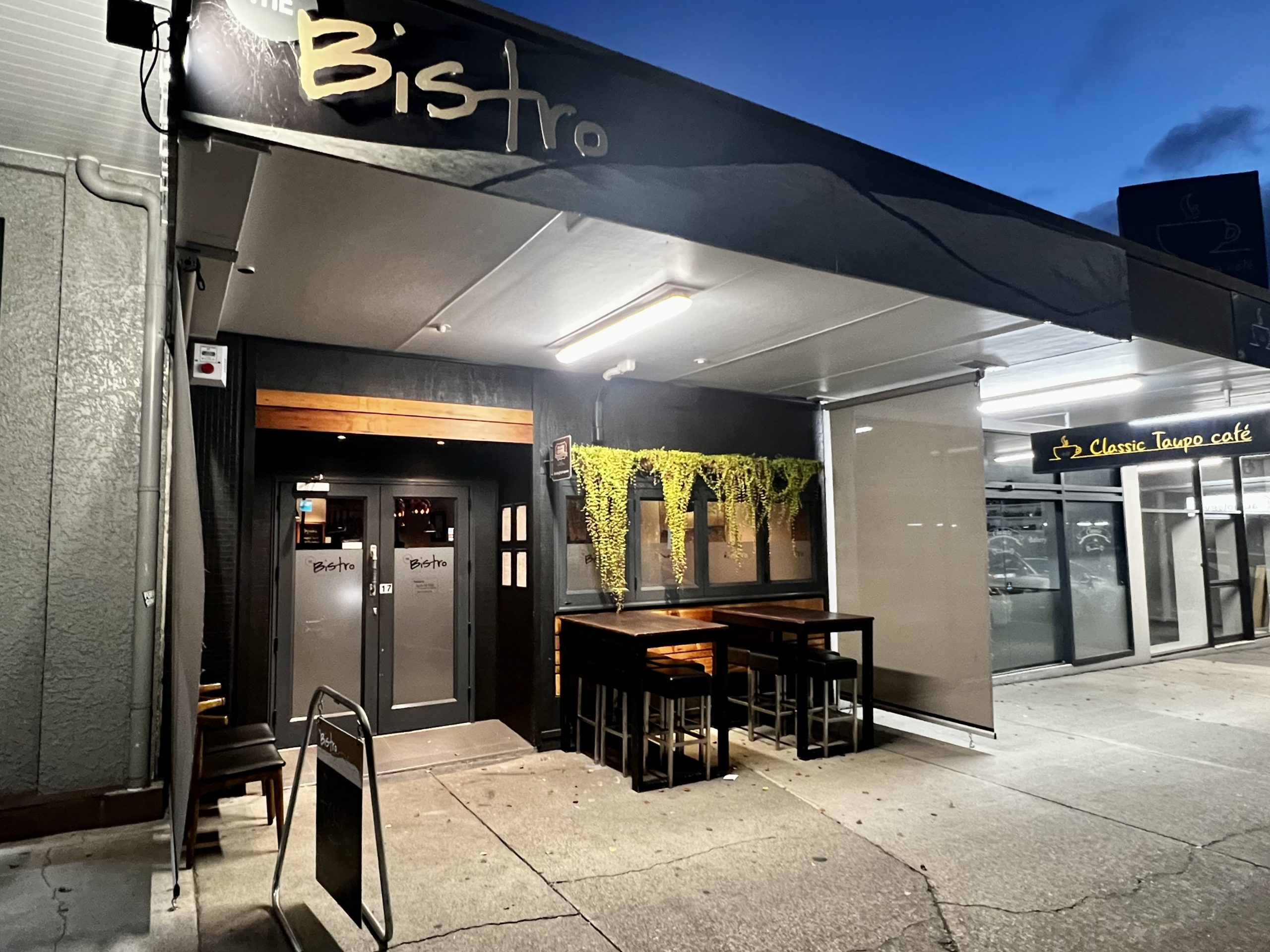
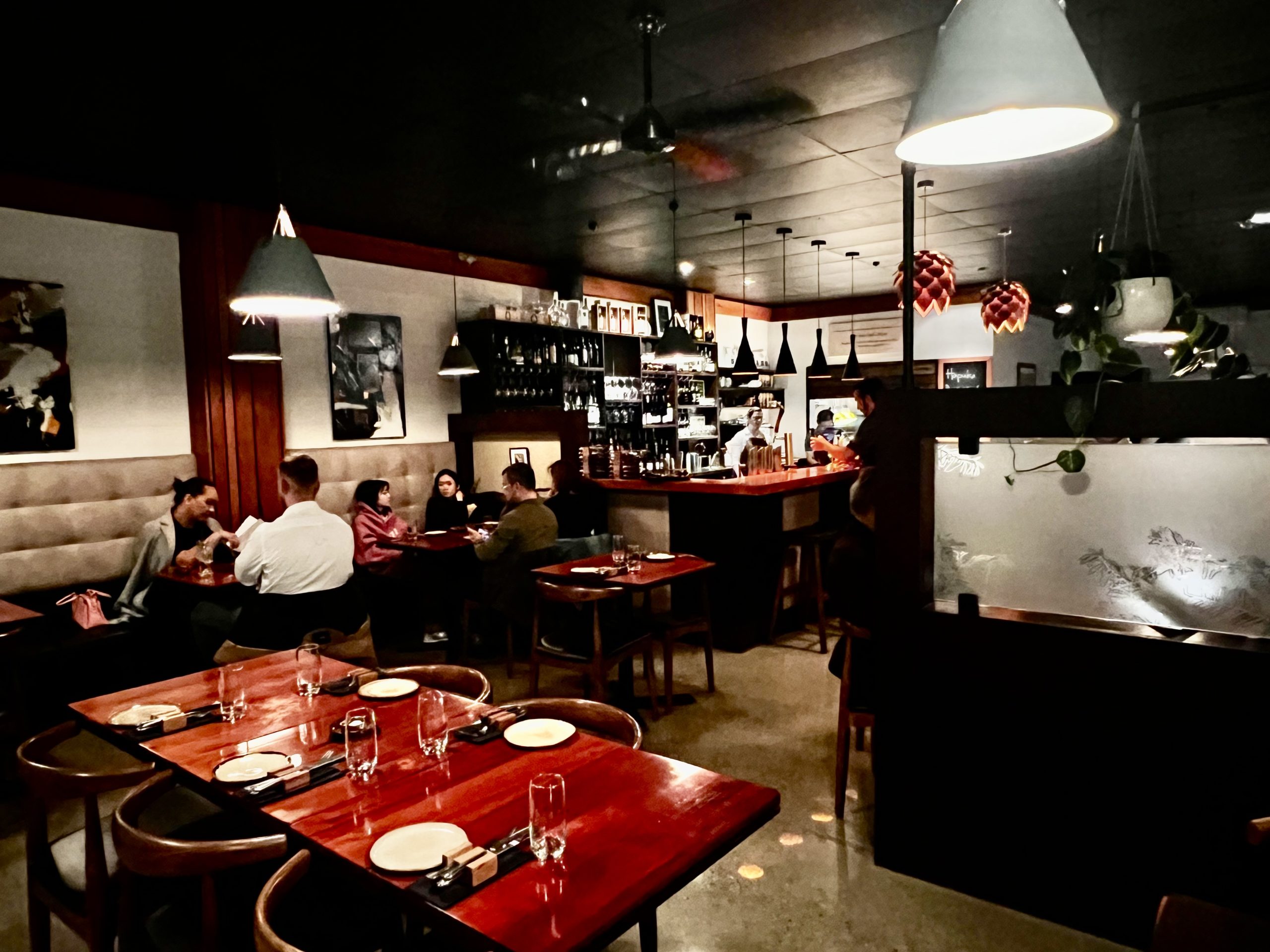
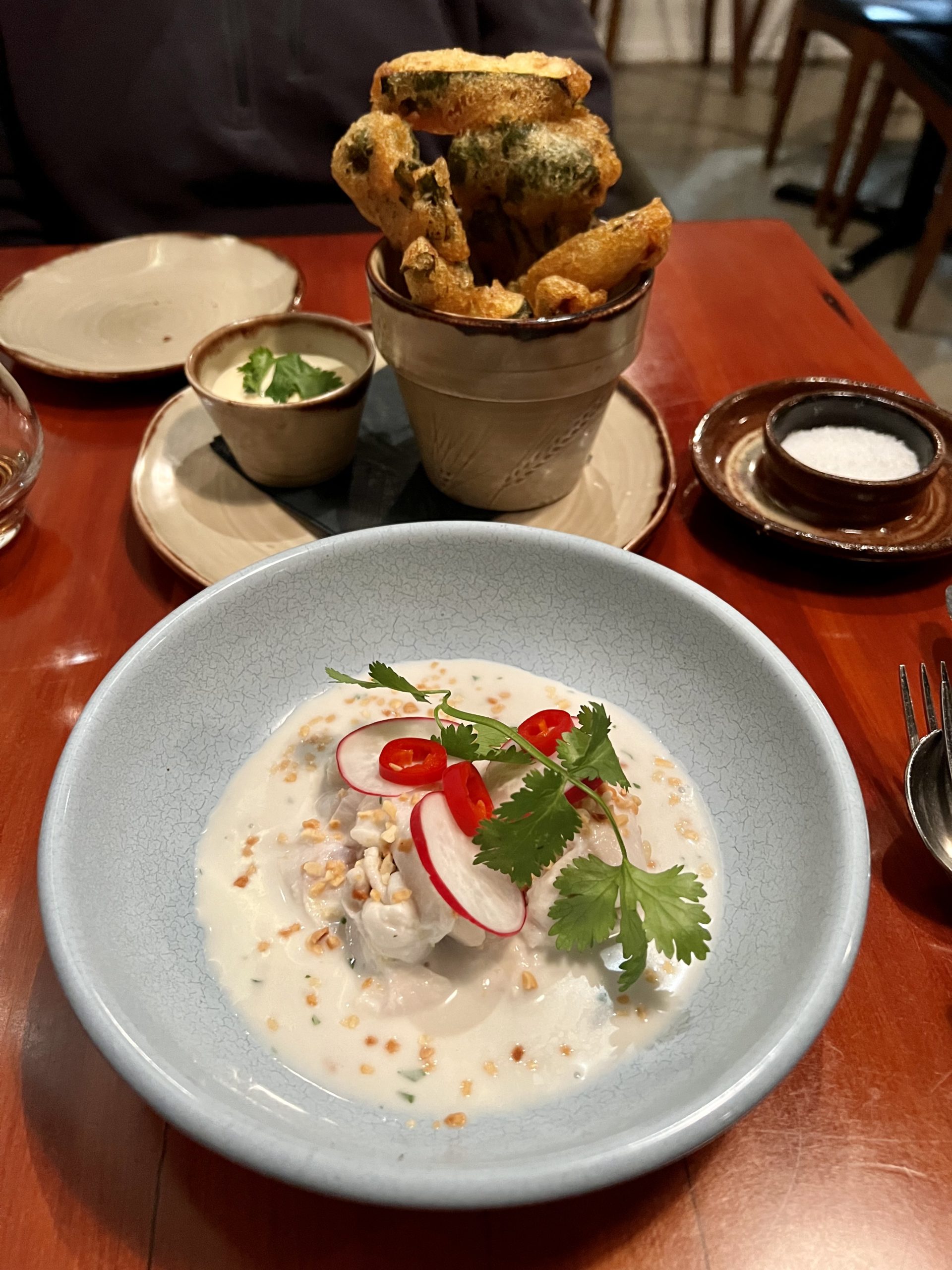
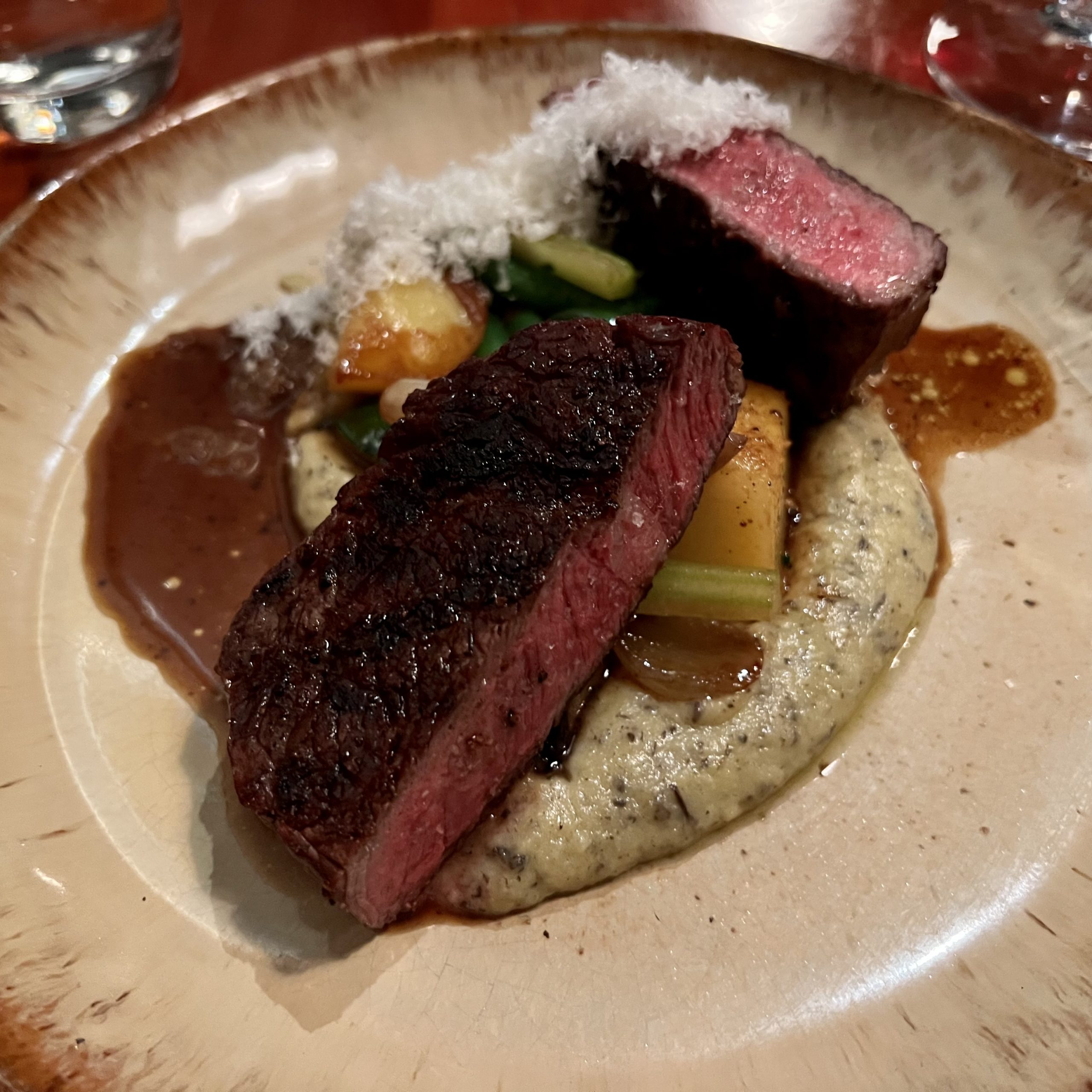
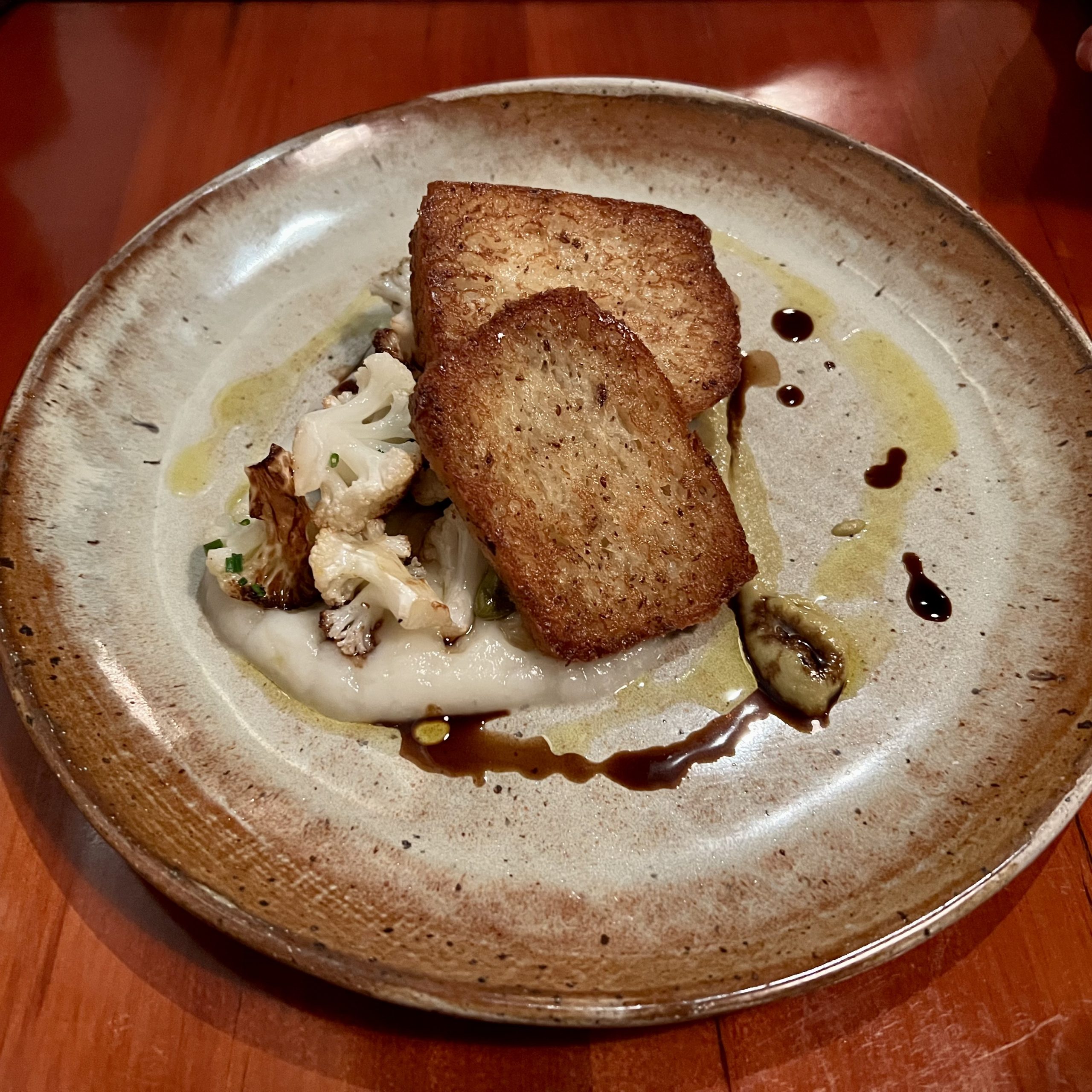
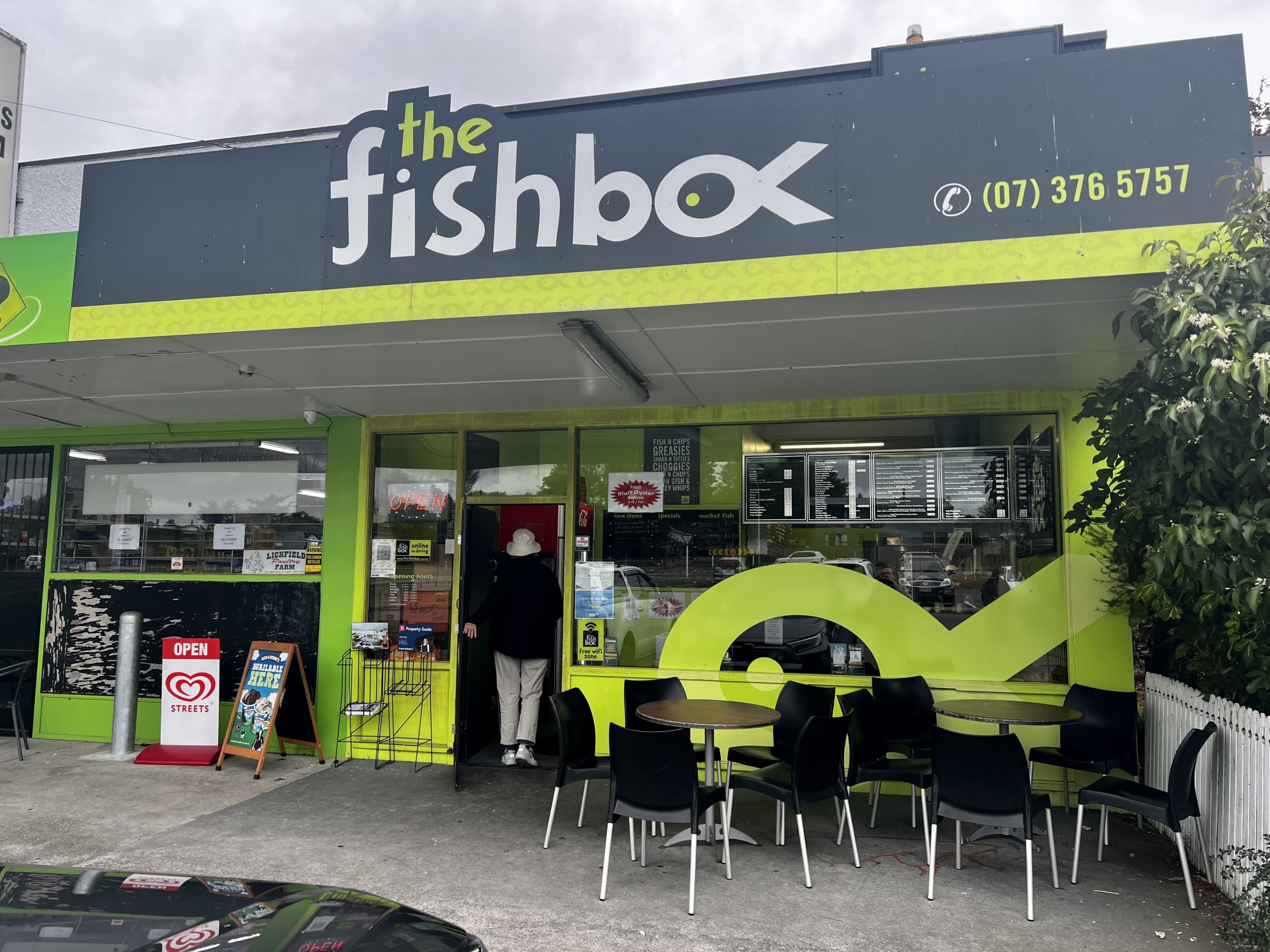
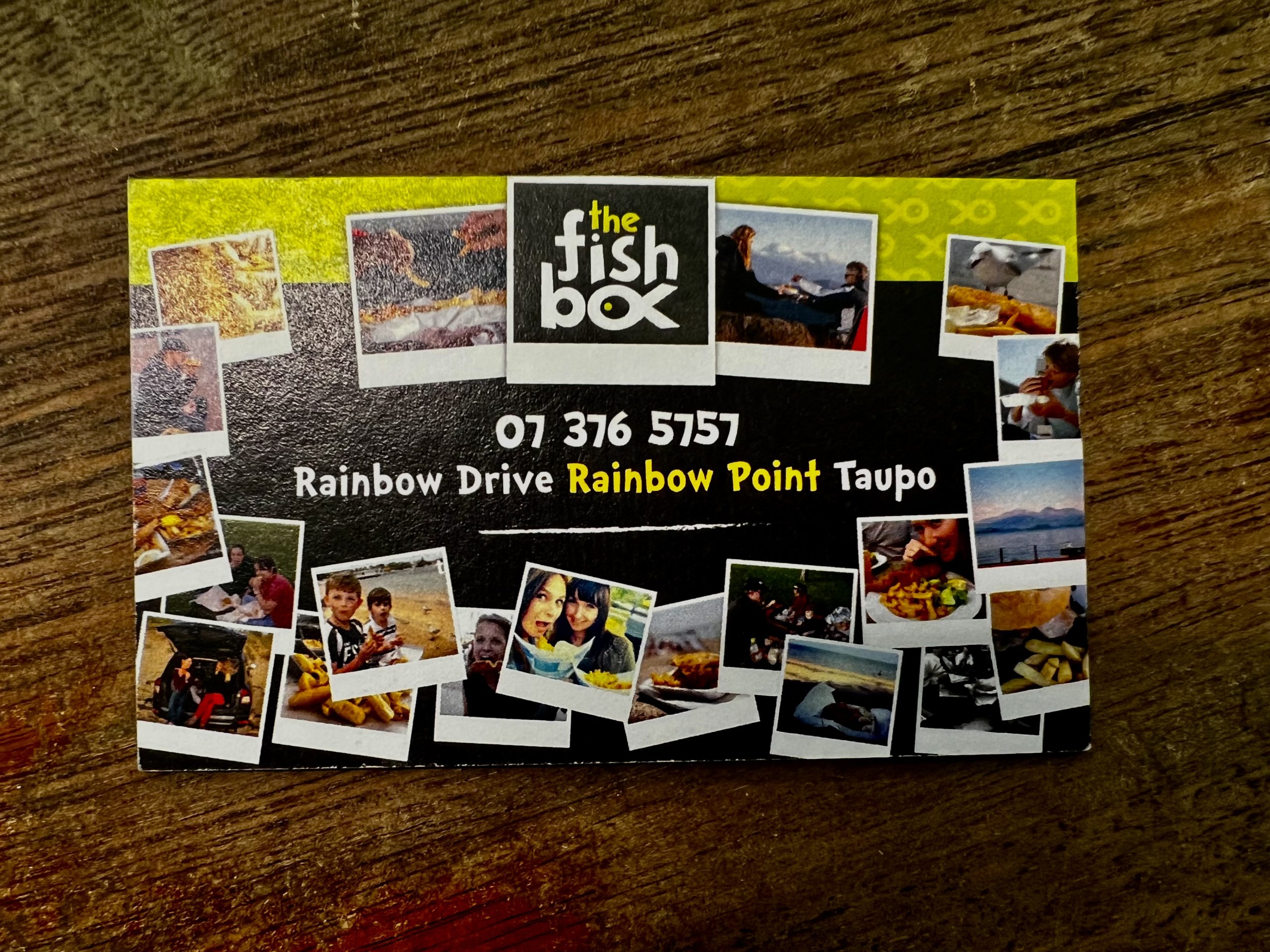
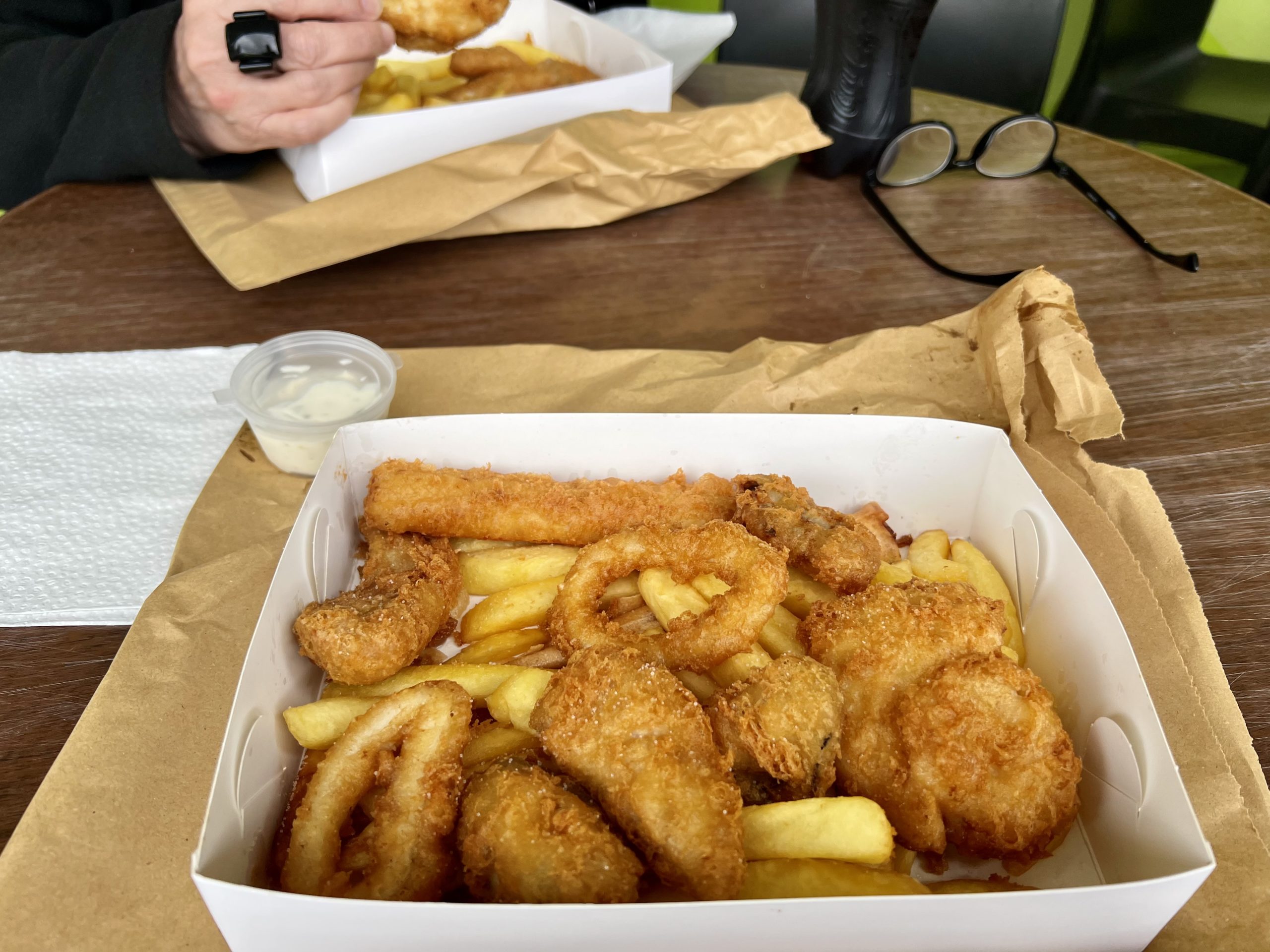
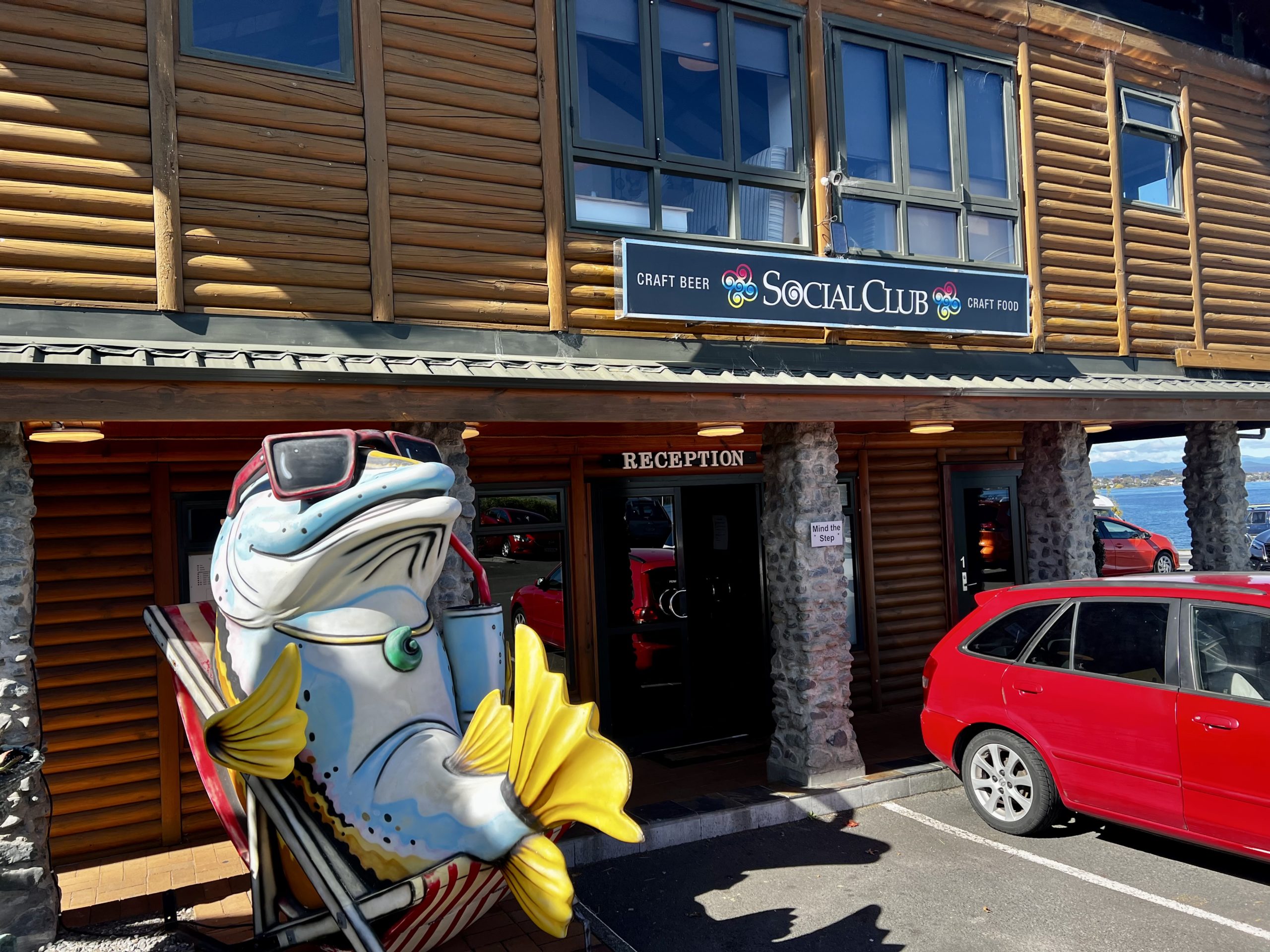
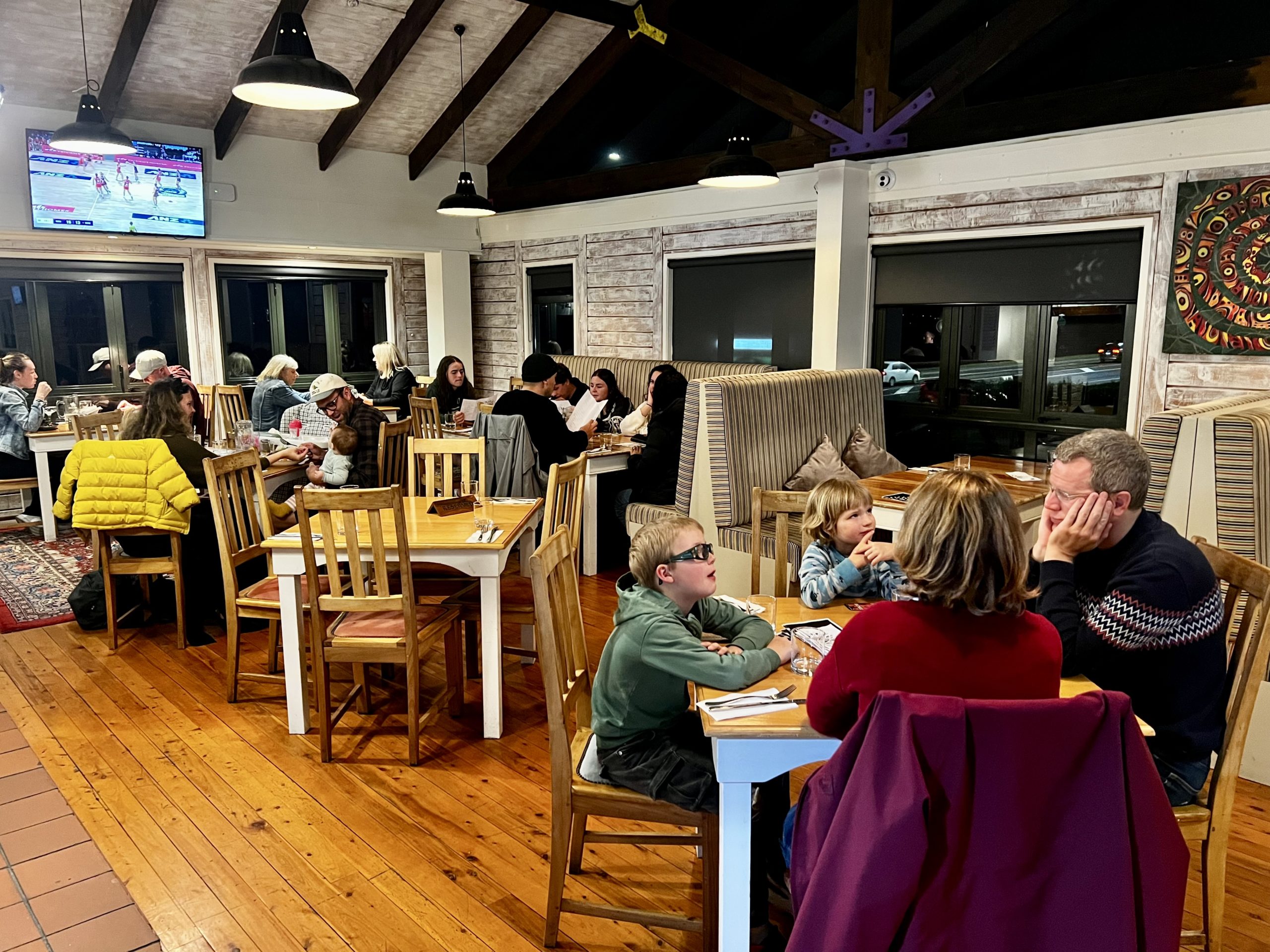
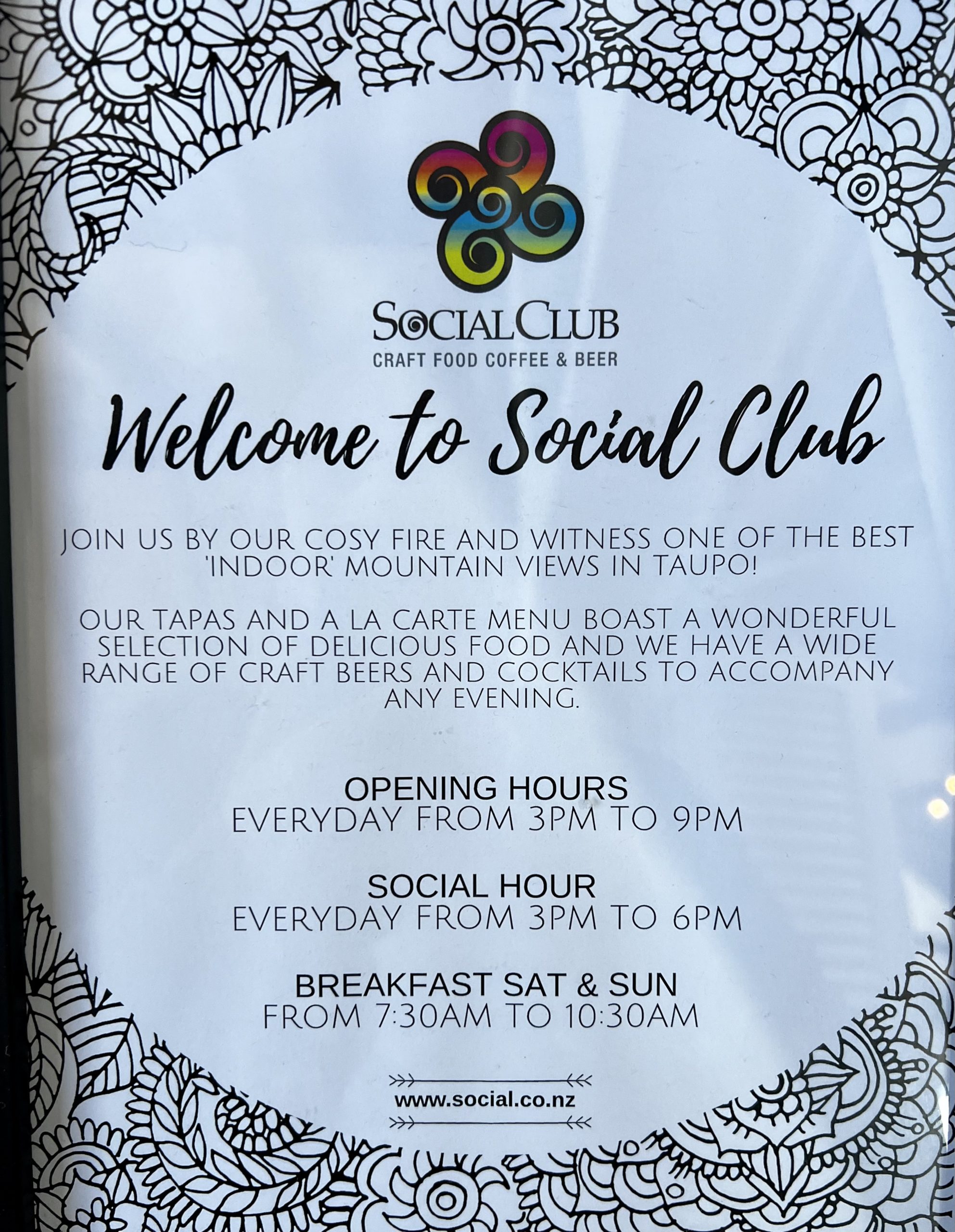
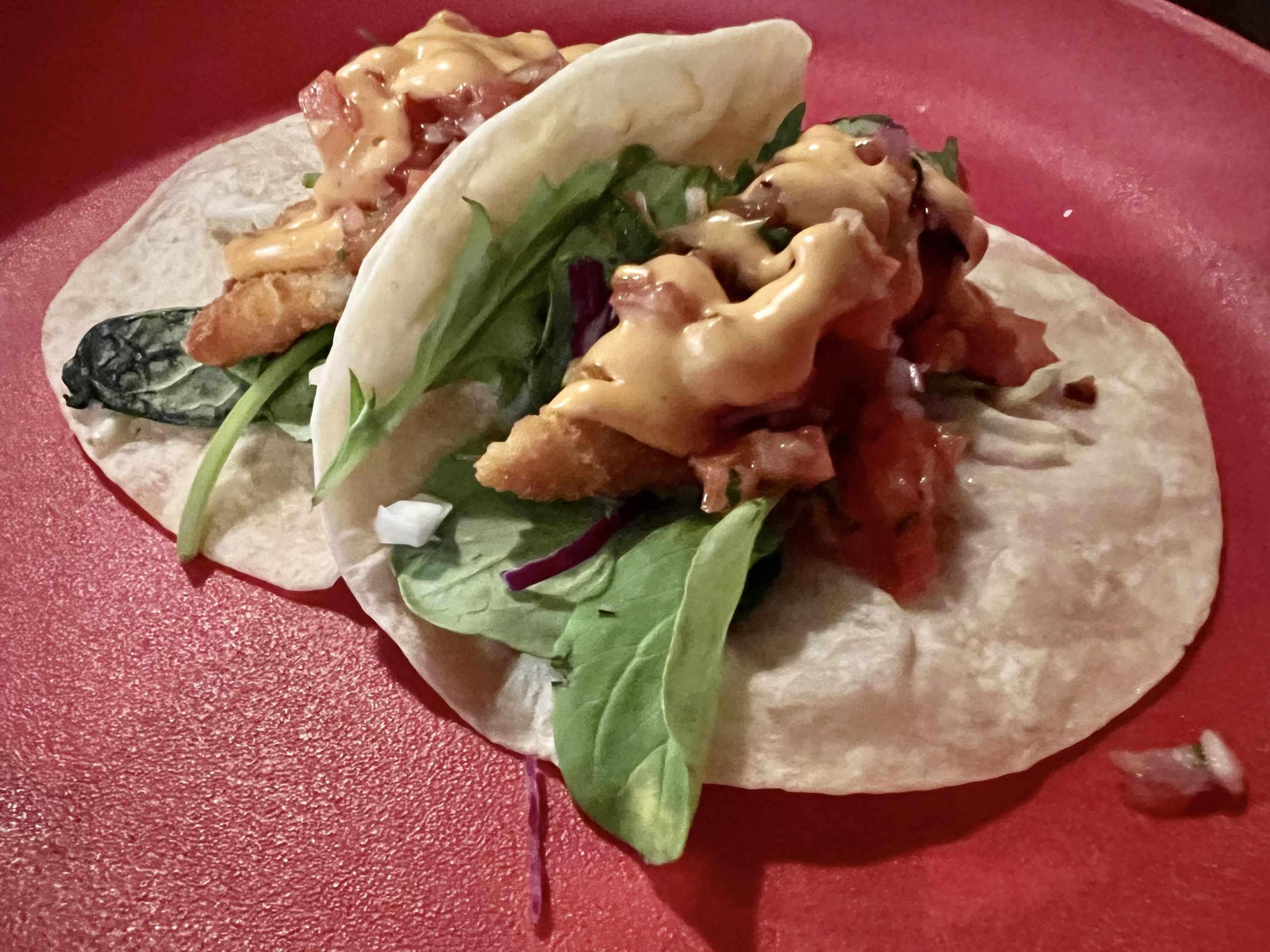
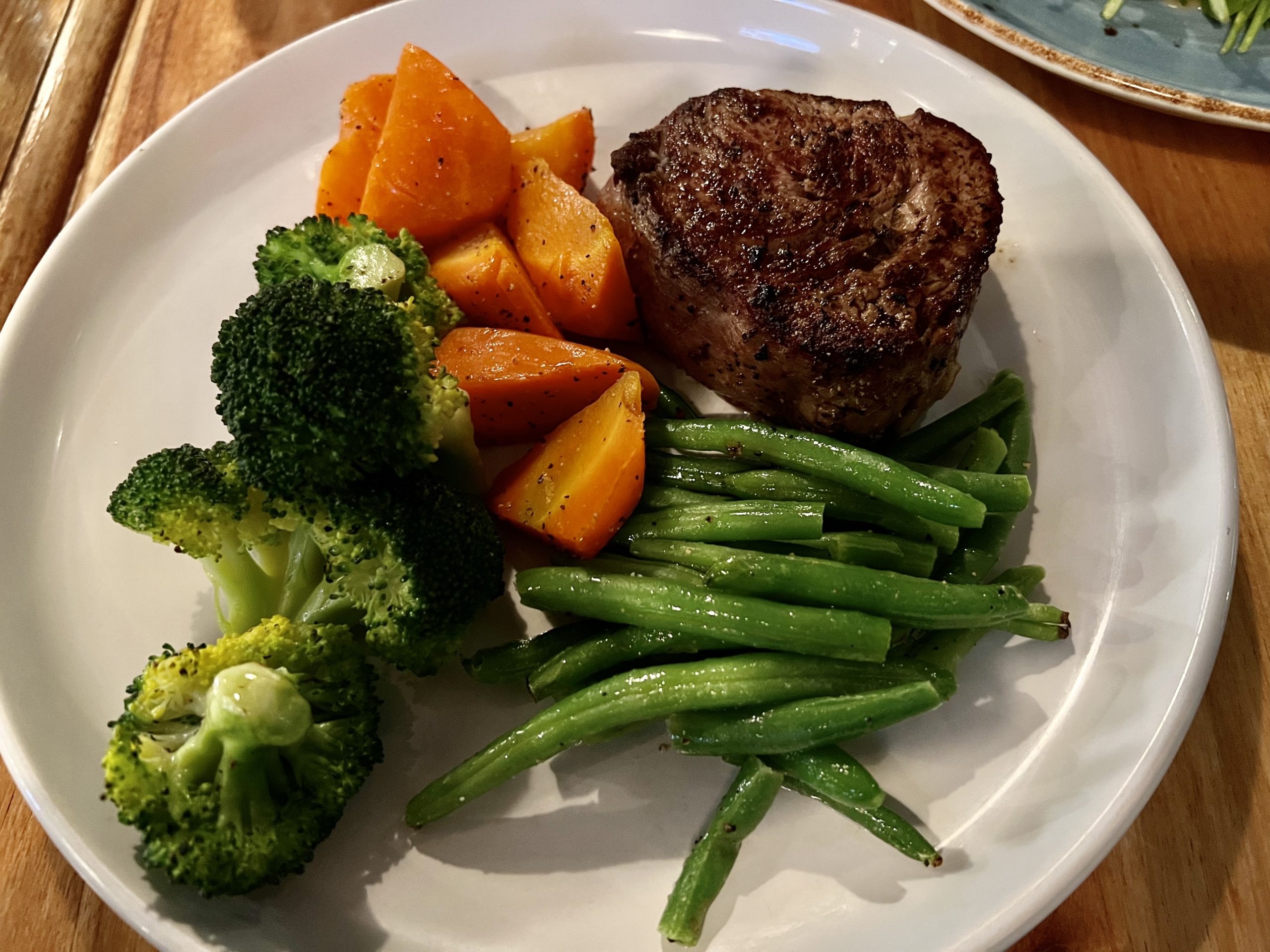
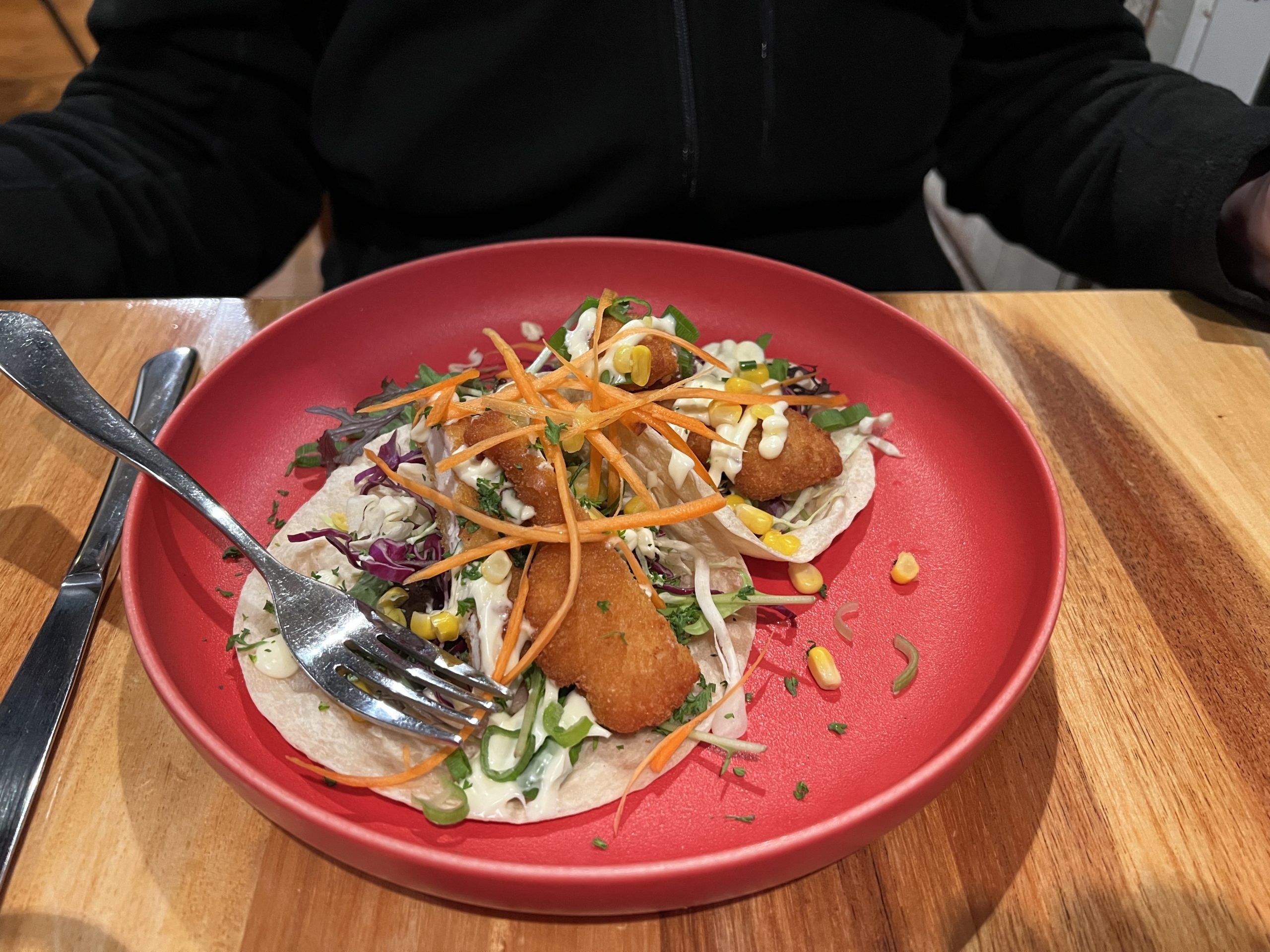

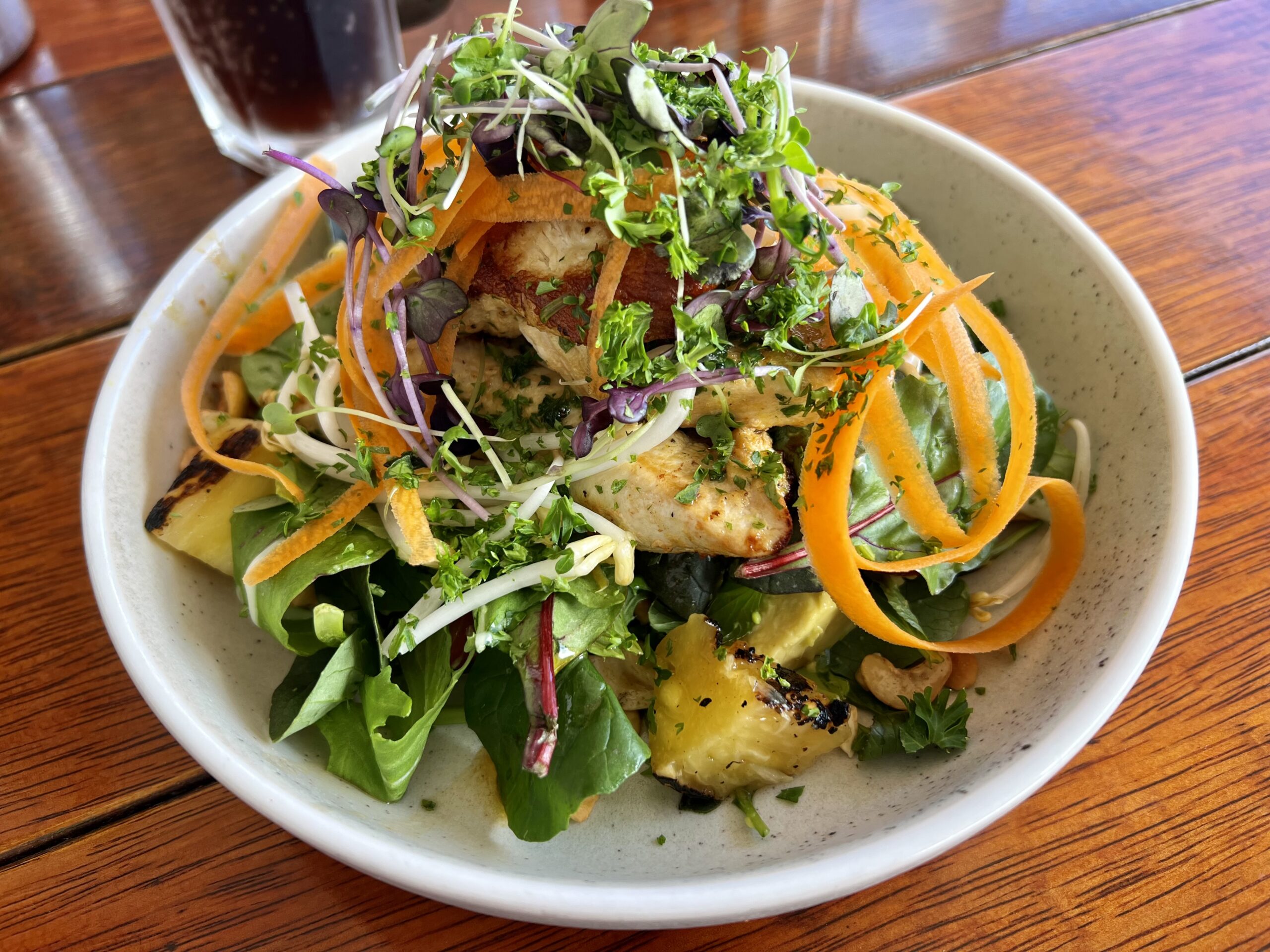
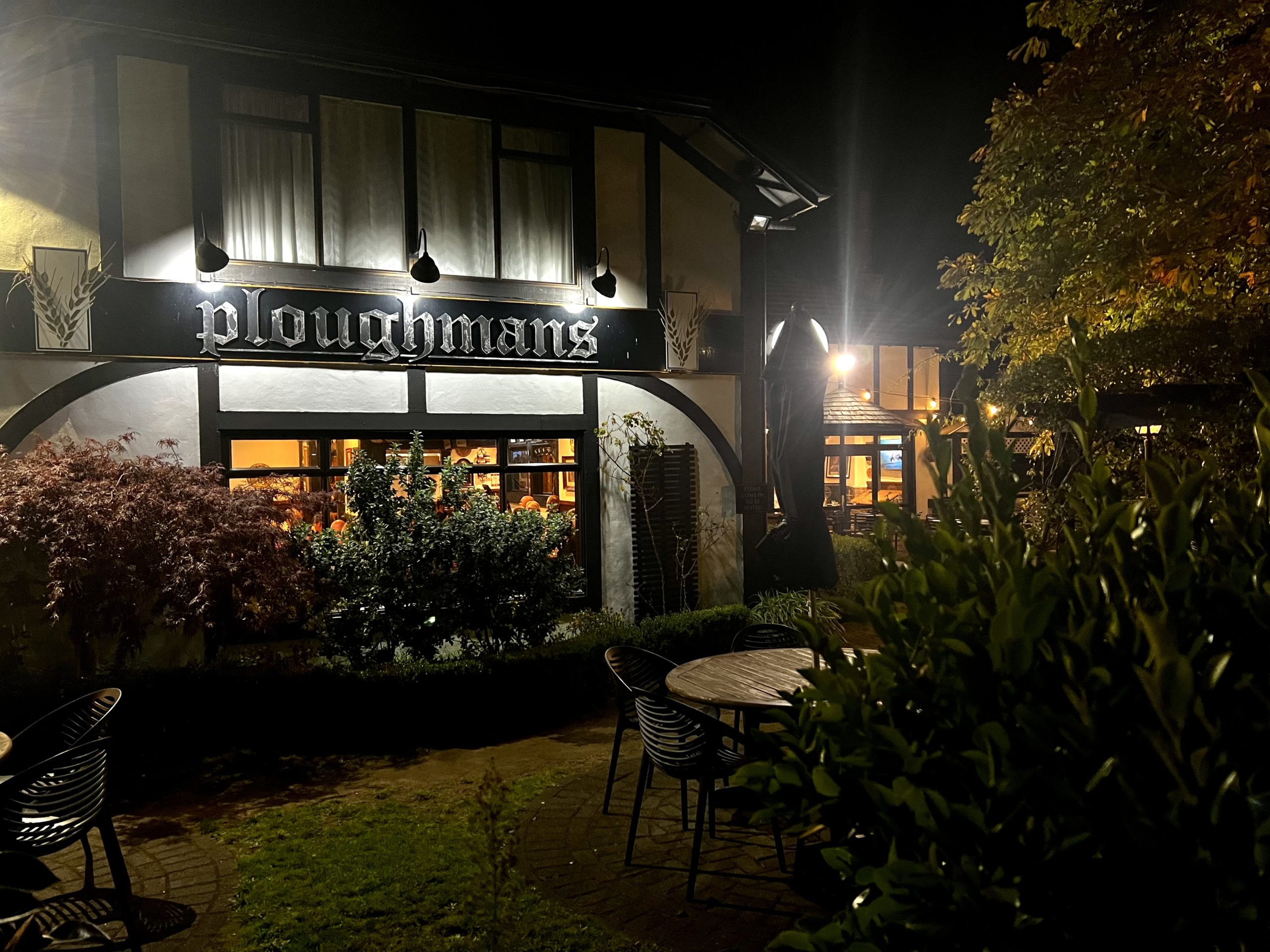
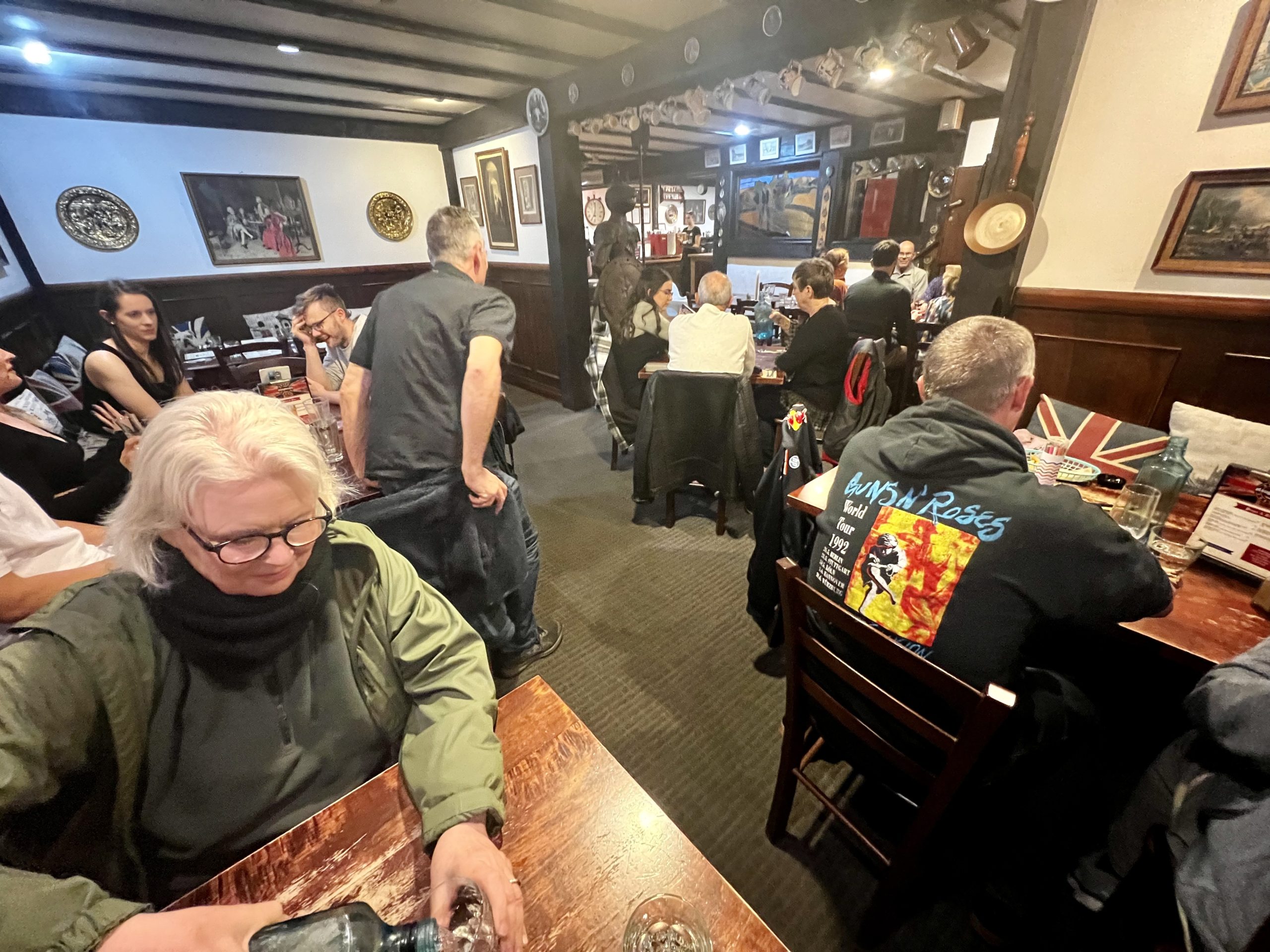
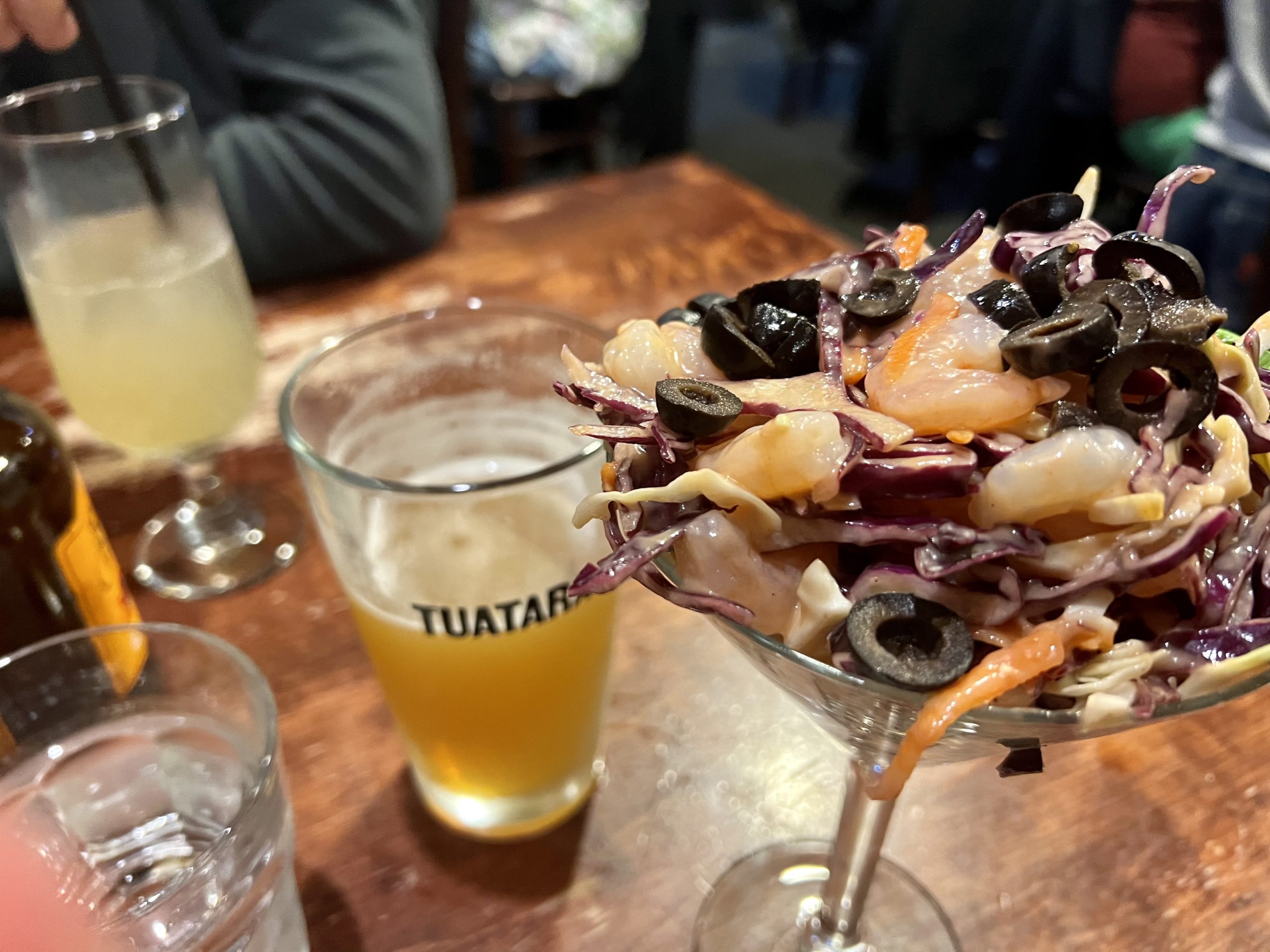
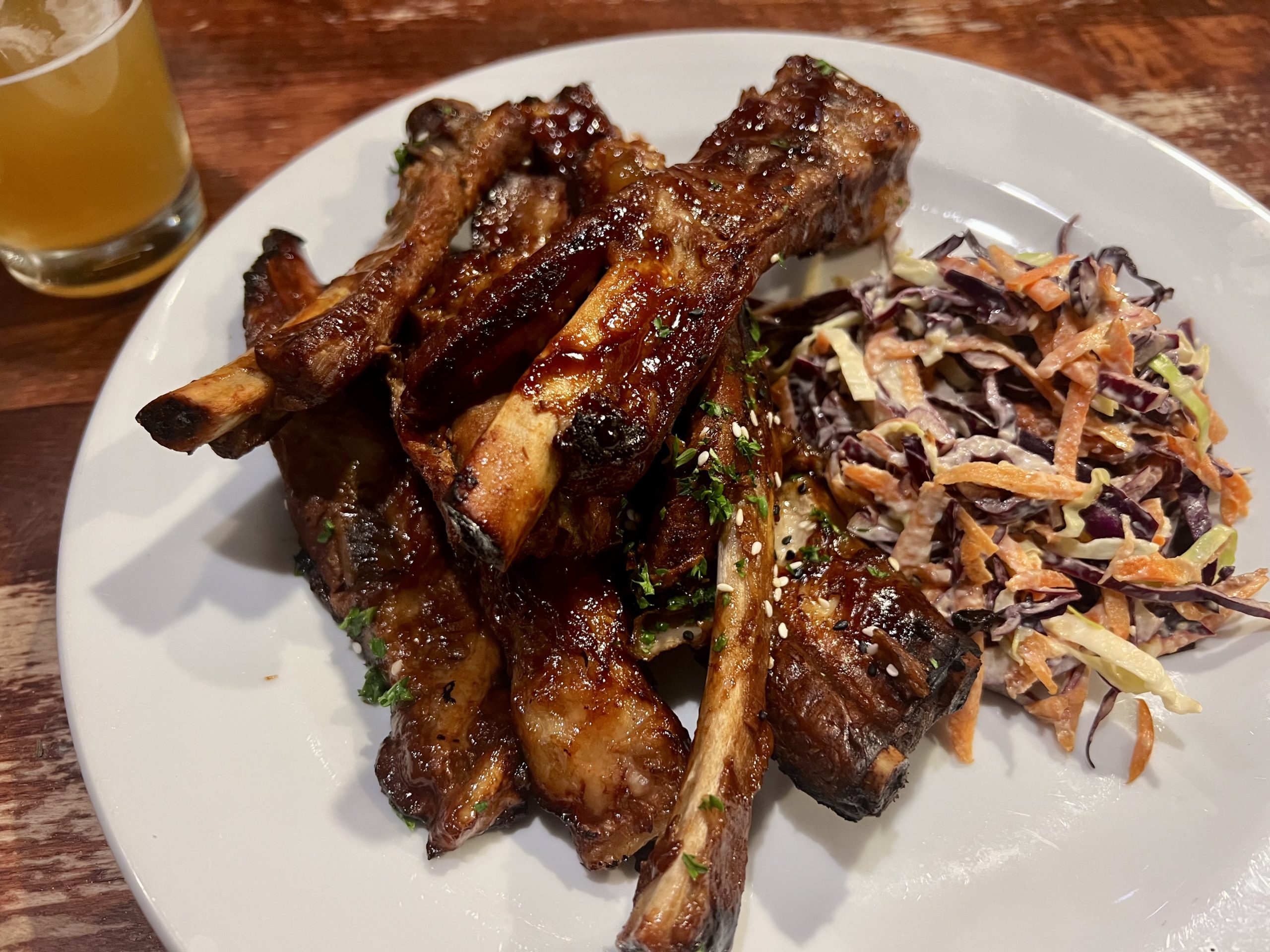
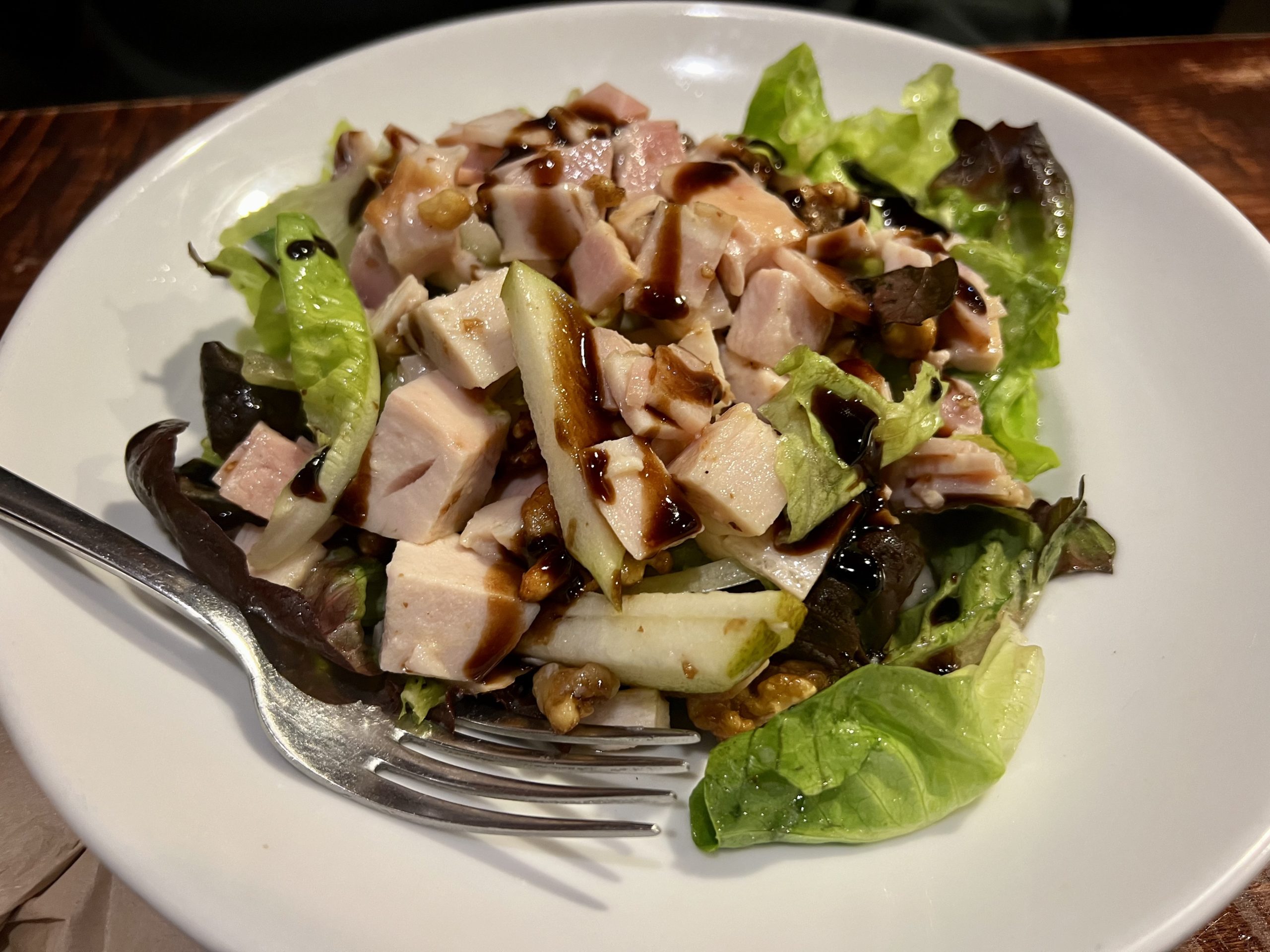
Next Stop—Tauranga!

There is no shortage of good food and picture-perfect vistas on your trip. You both make travel look easy.
Is there a difference in the taste of Northern Trout vs. Southern Trout?
We try. There are moments, but not many on this trip. Hope to come back soon before we lose what we learned!
The Kiwis laugh at Robert’s jokes!
Why to think I travel so far?!?